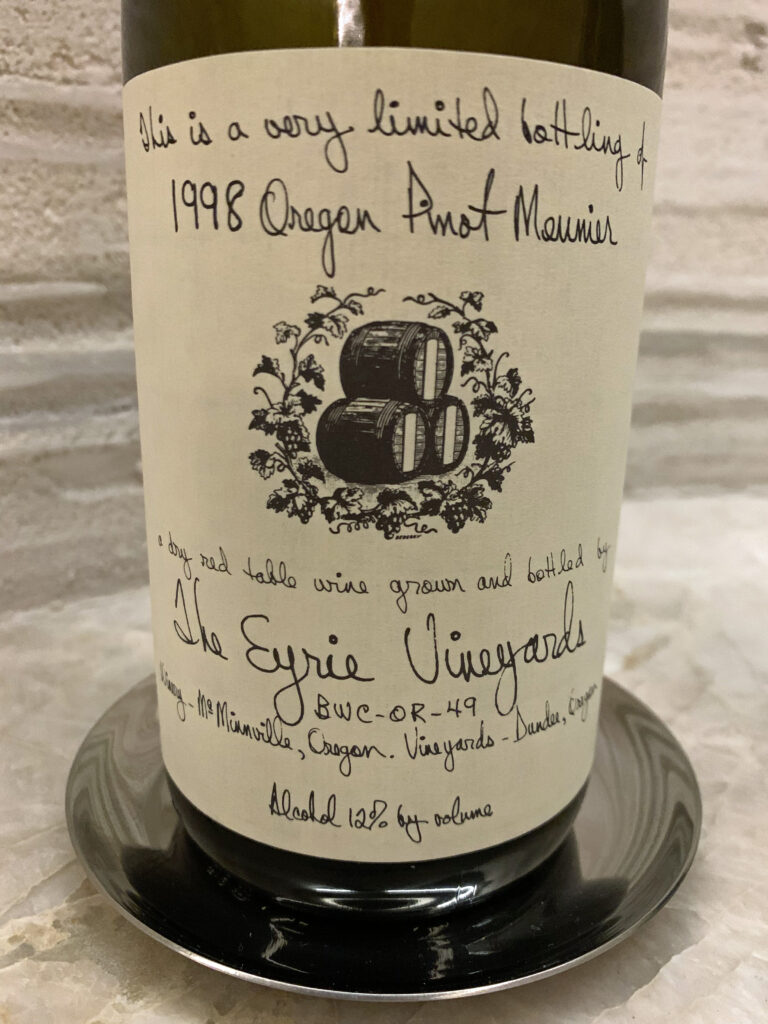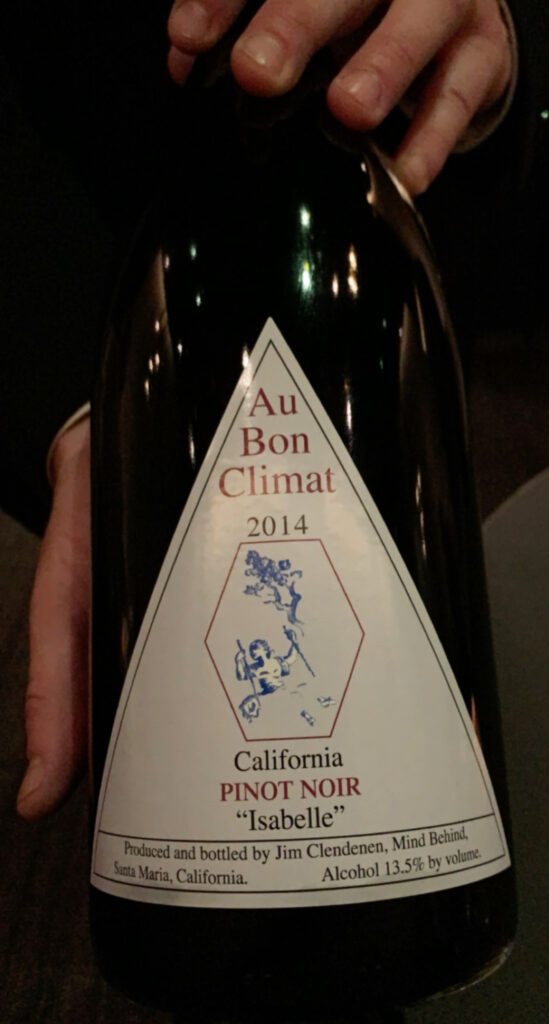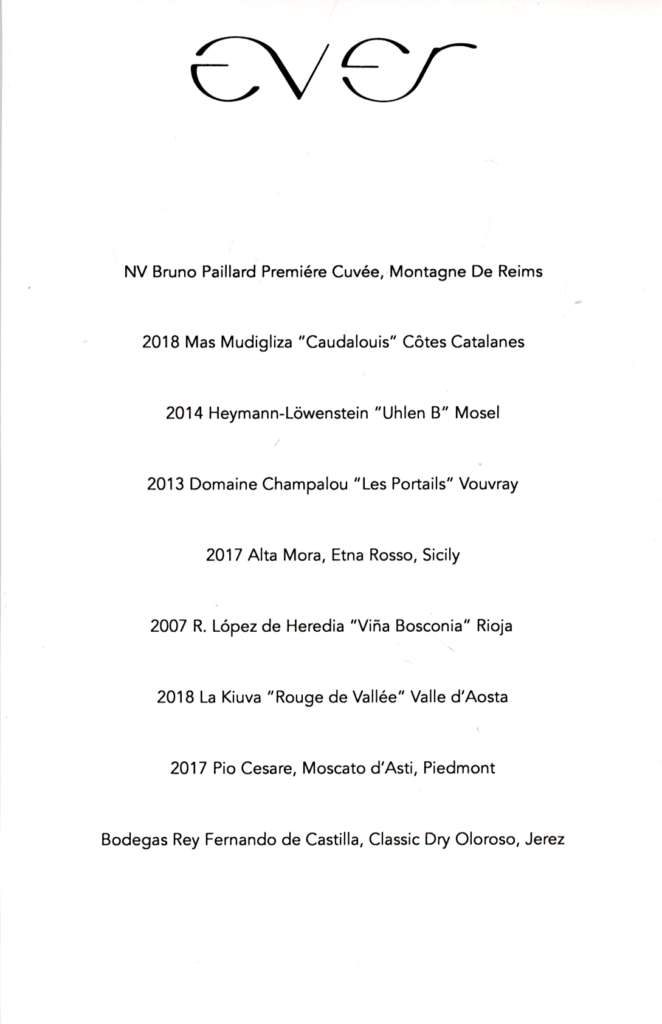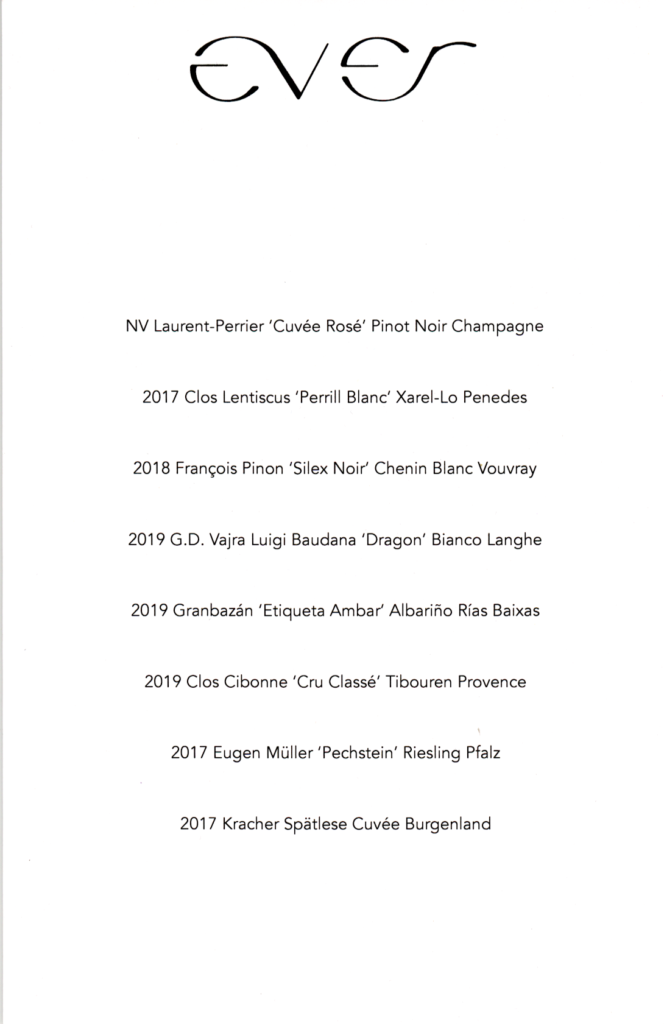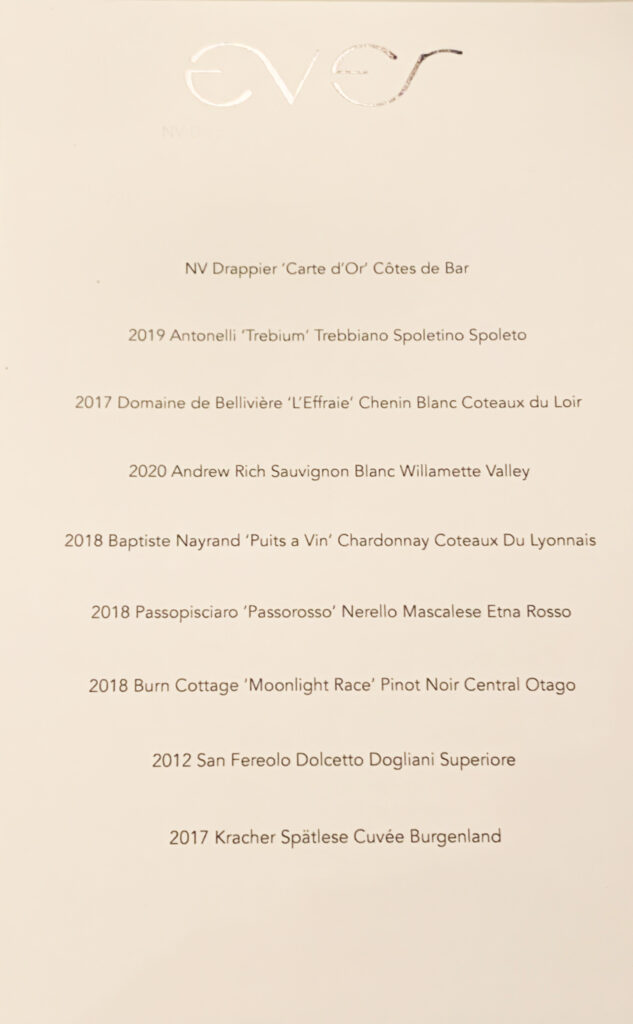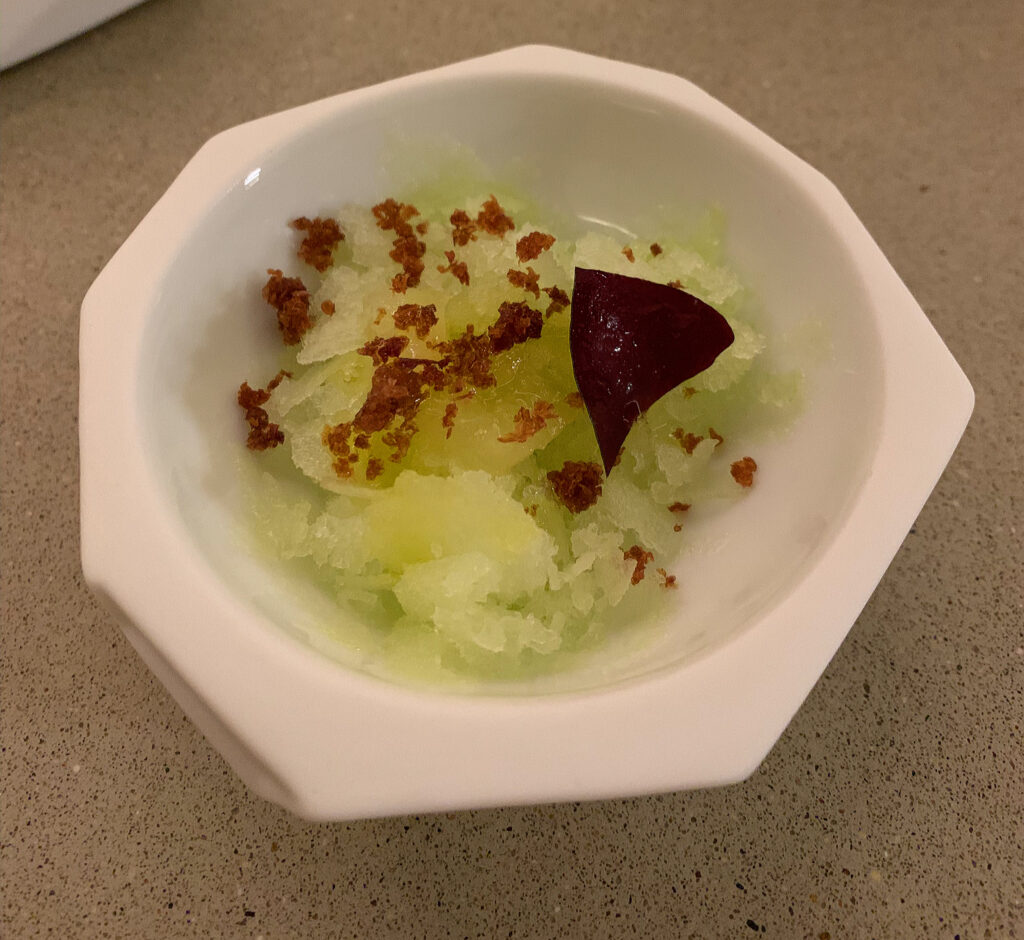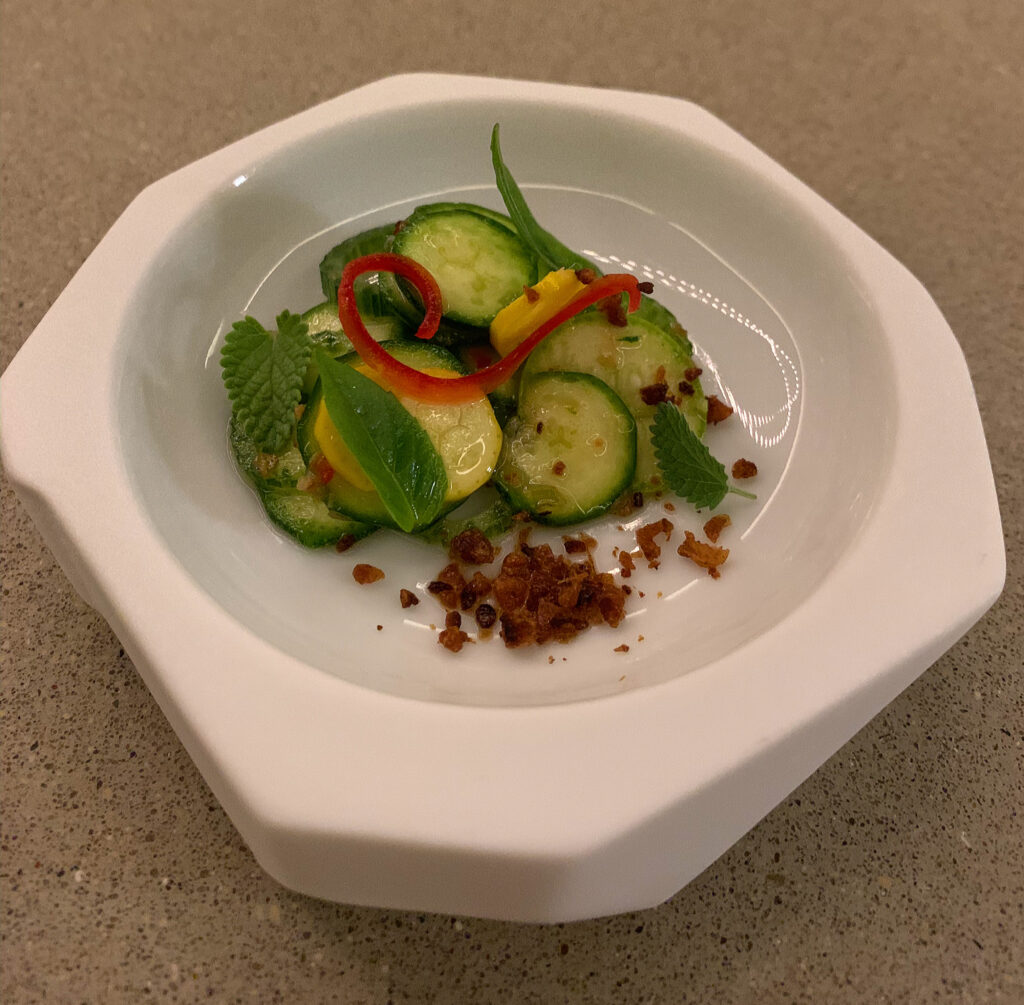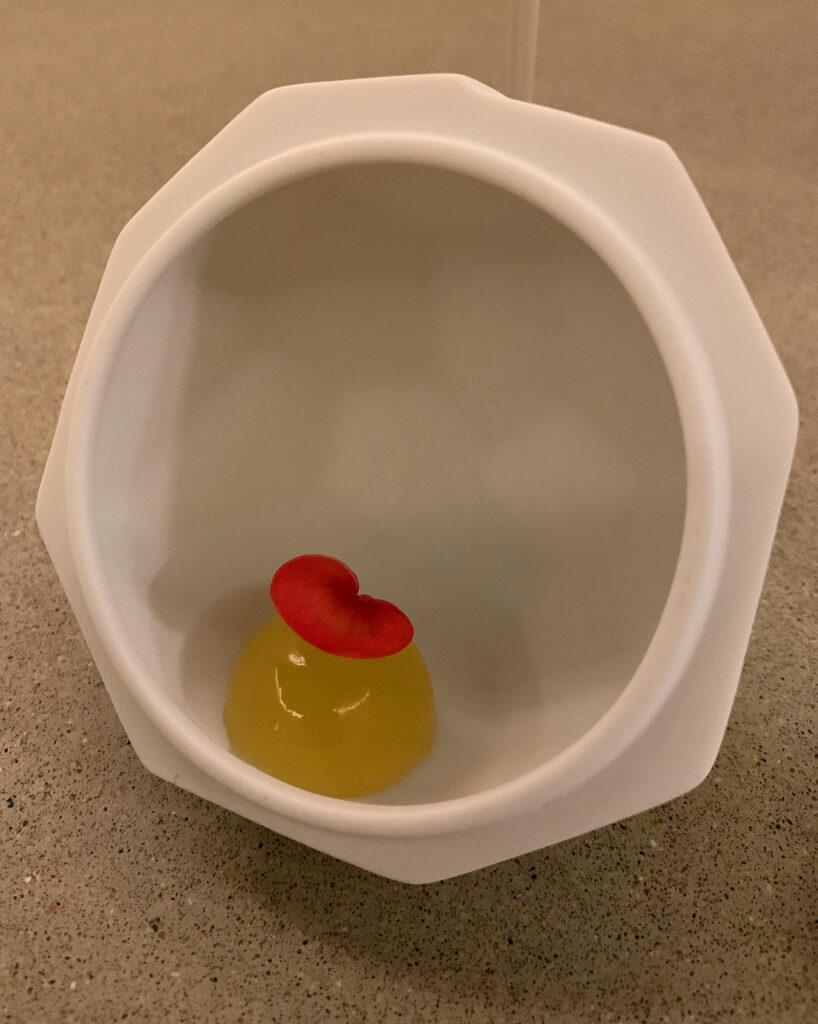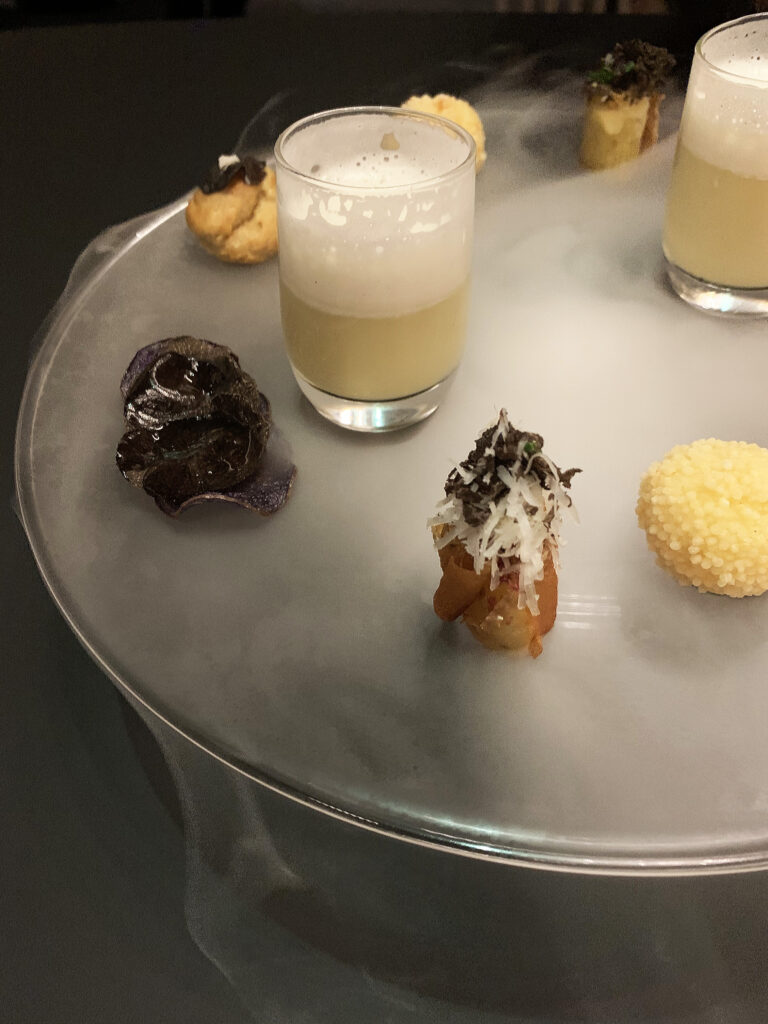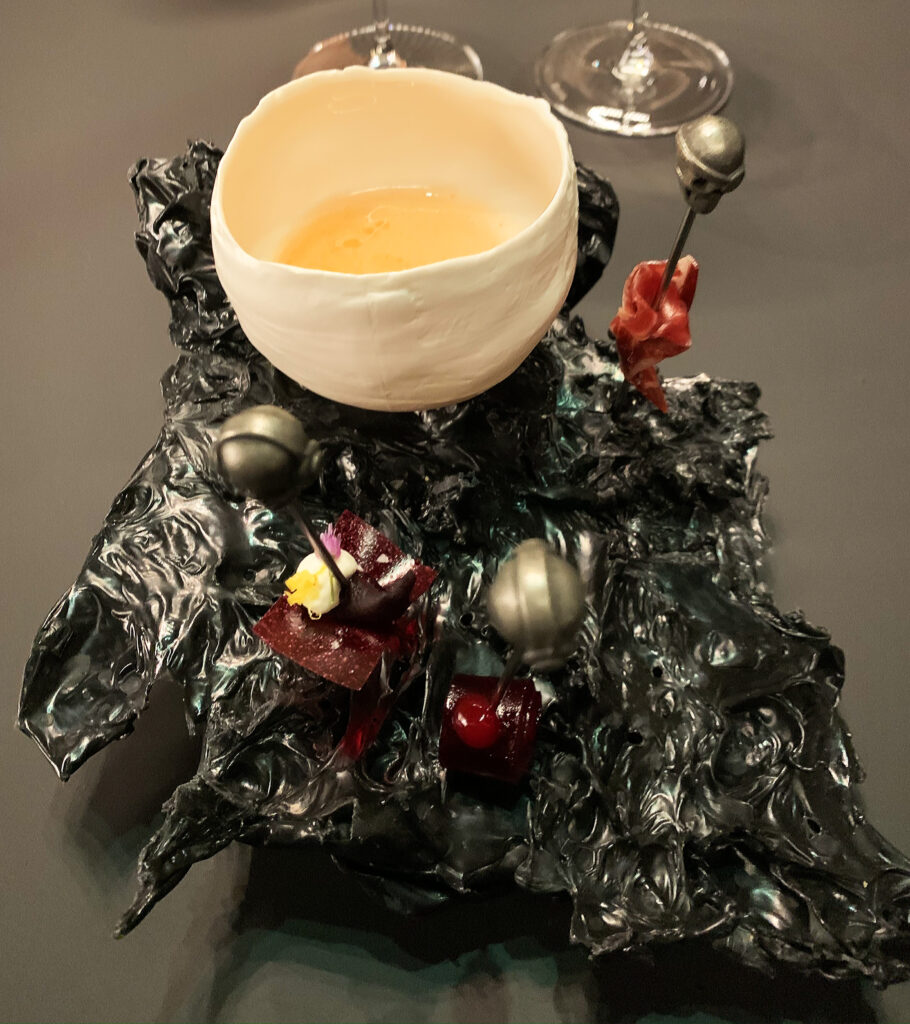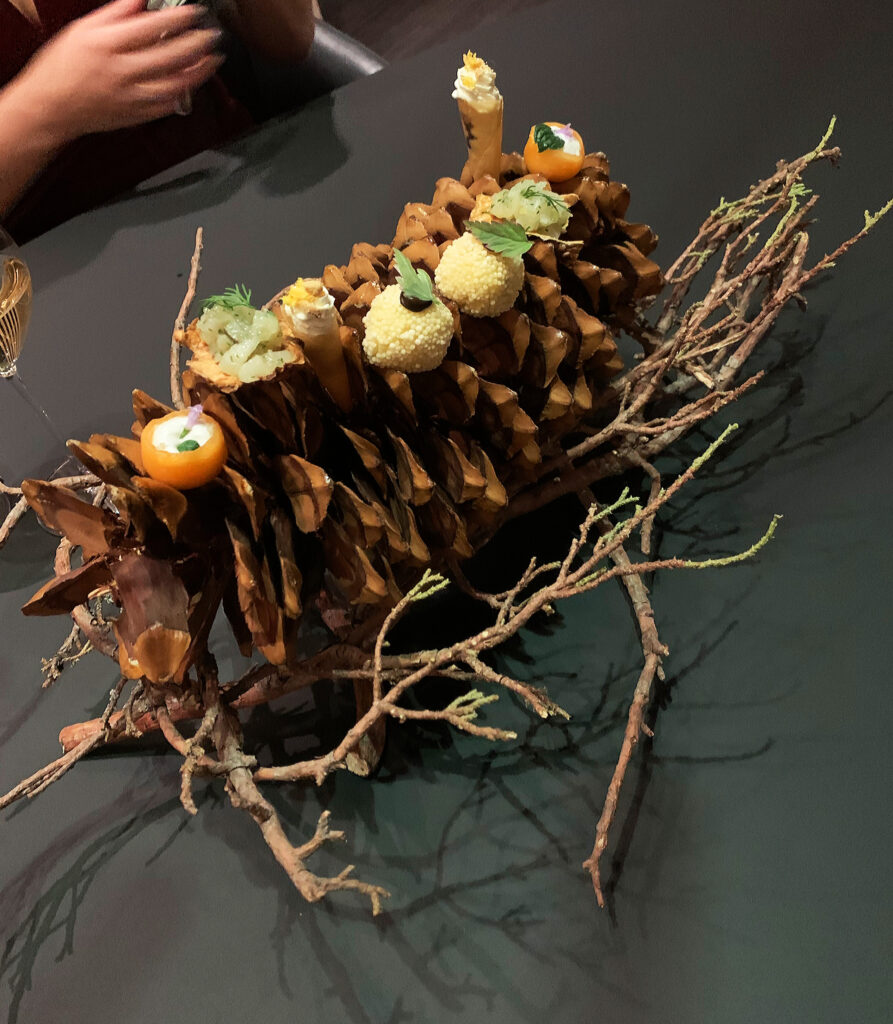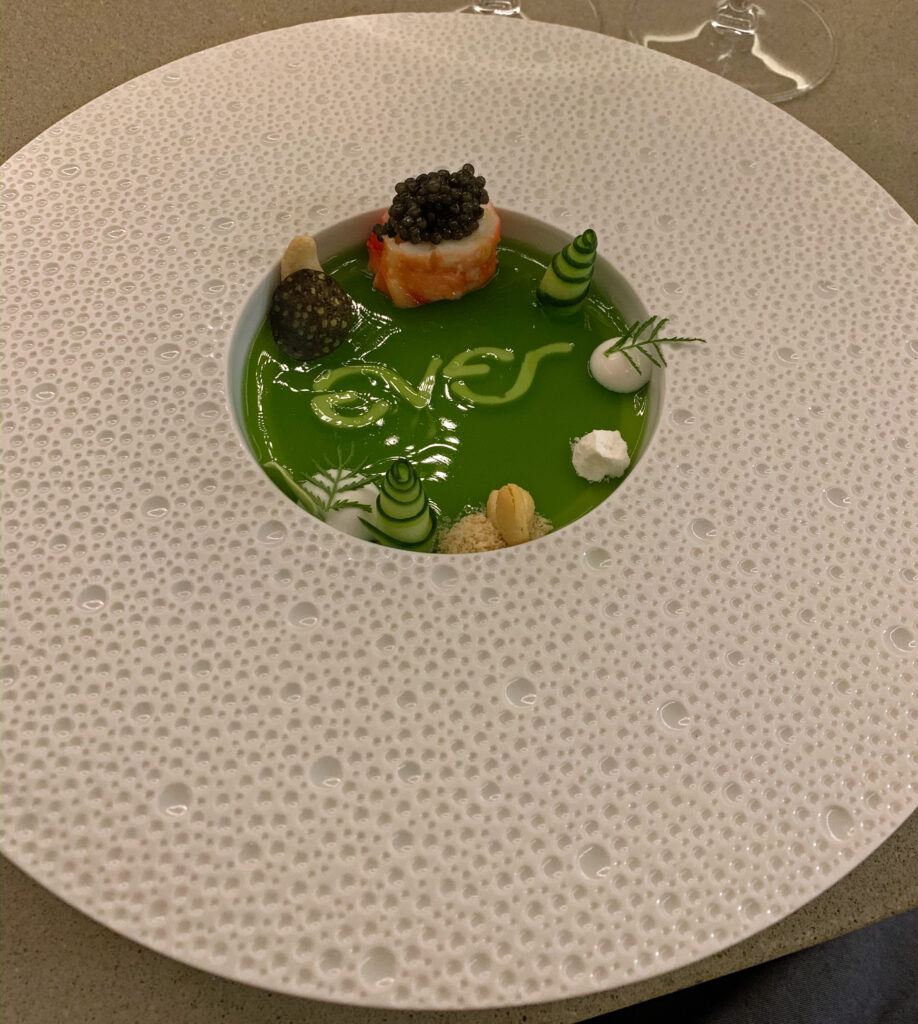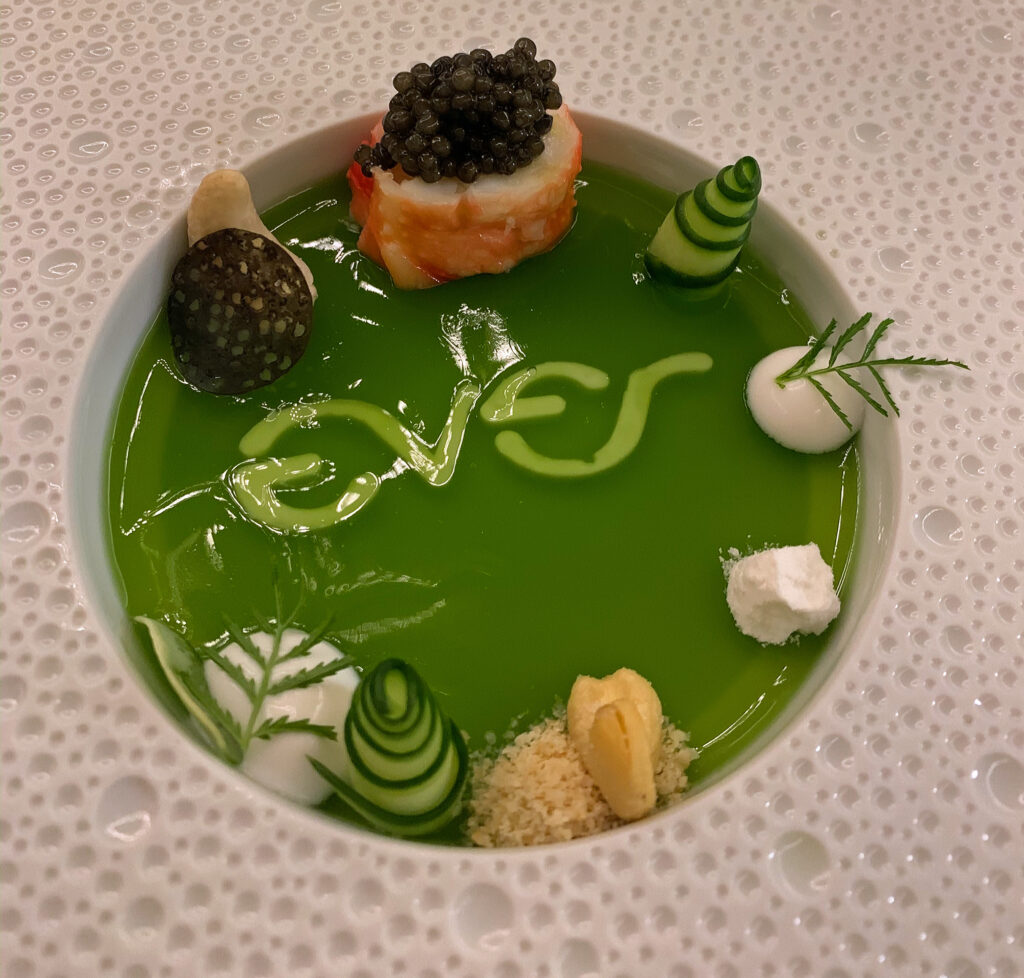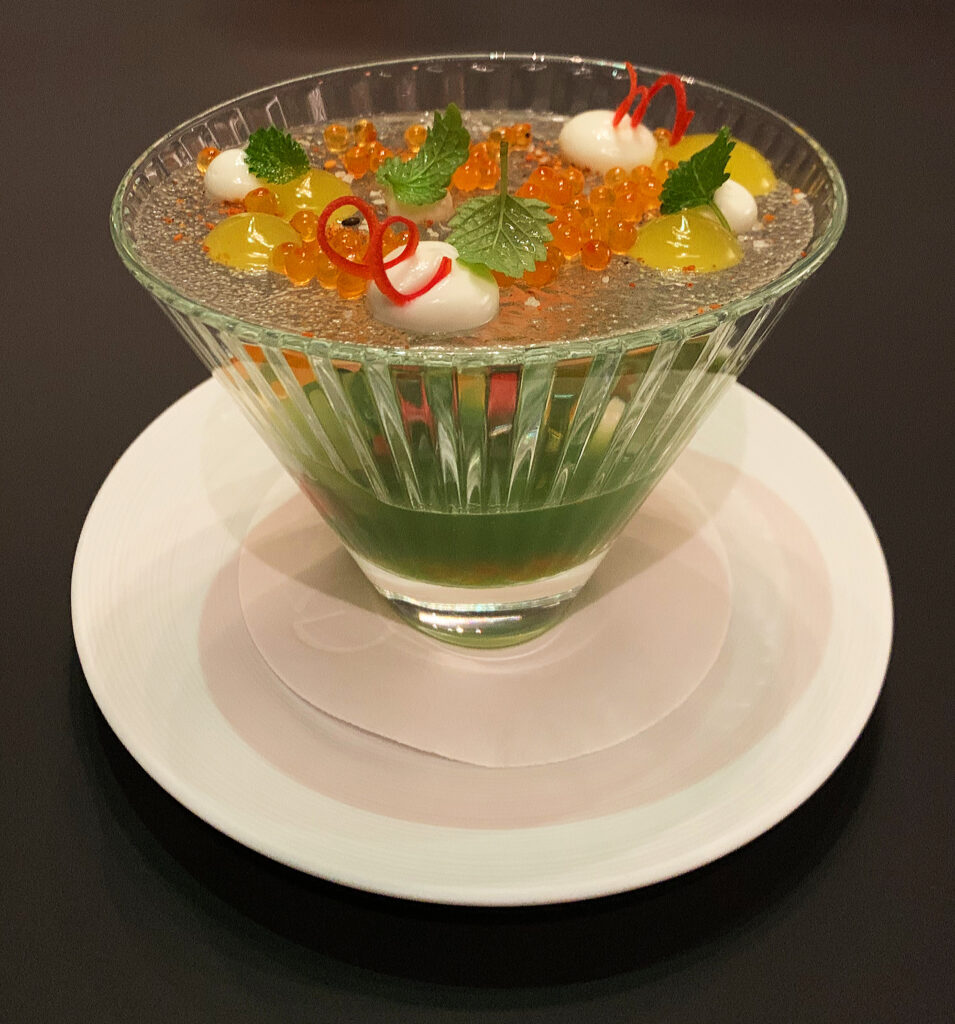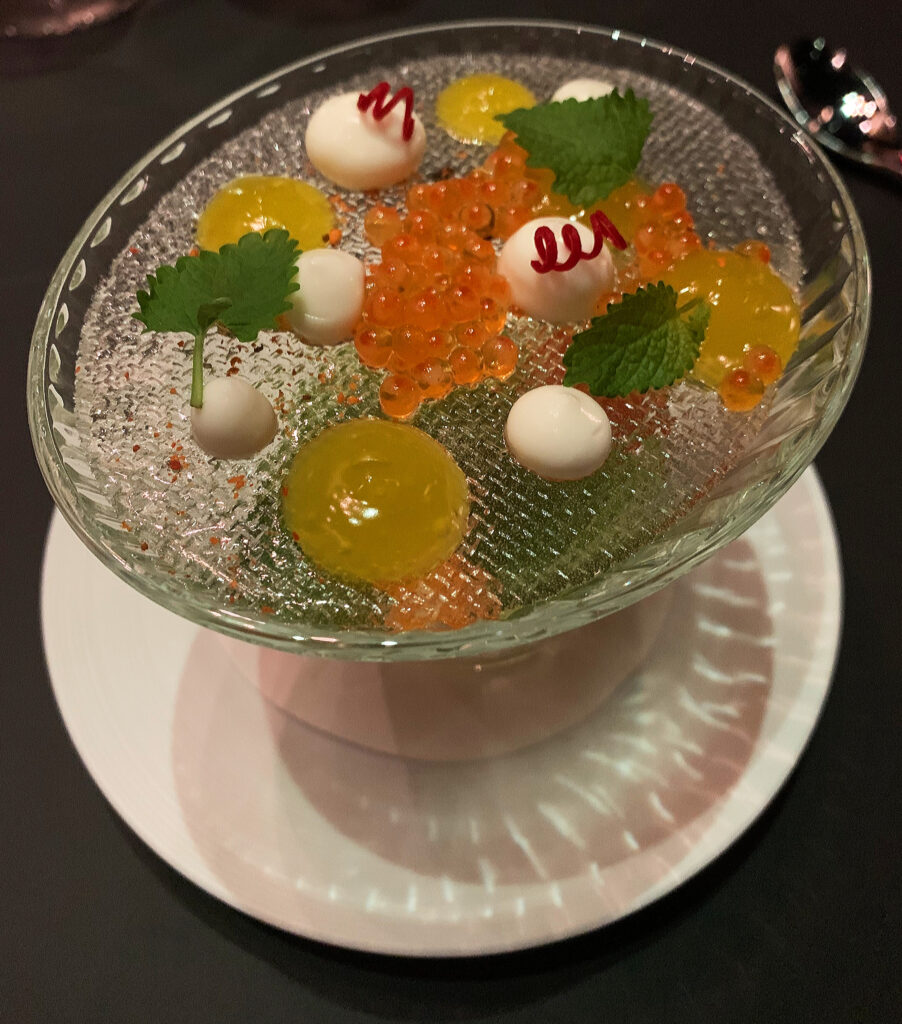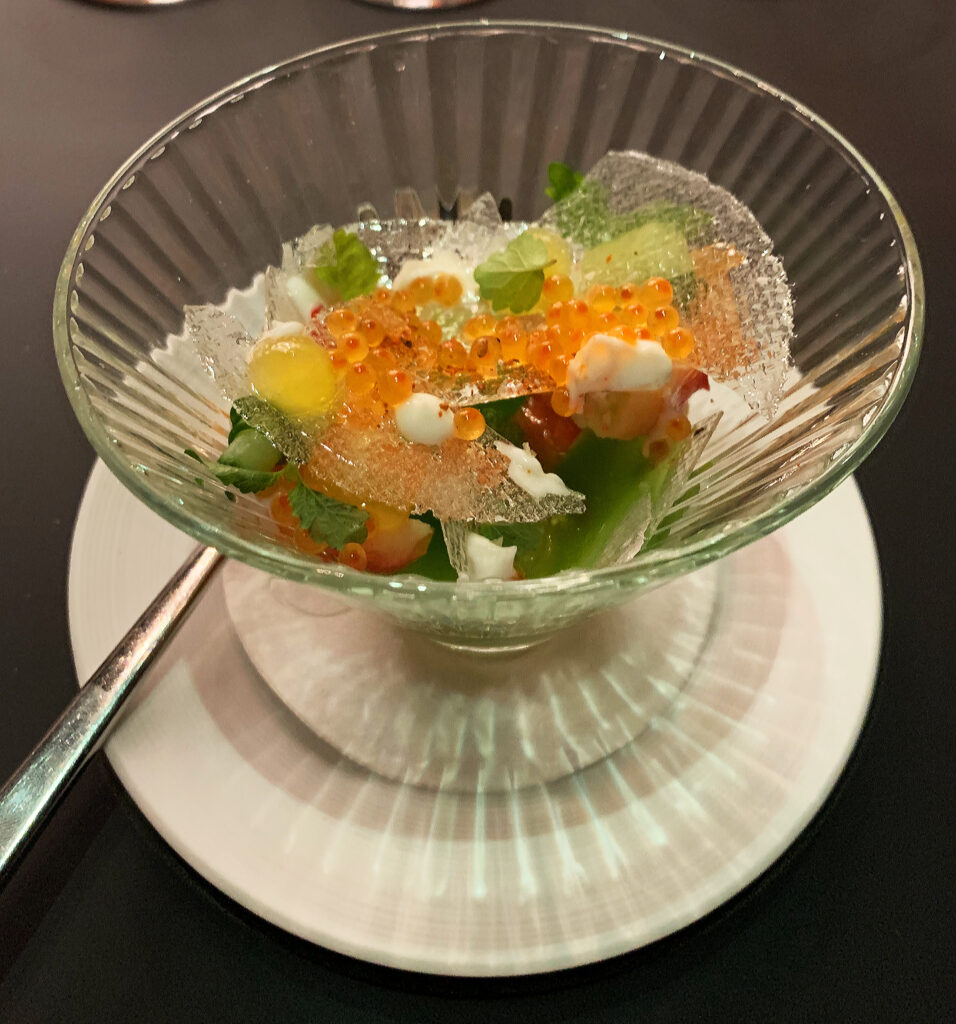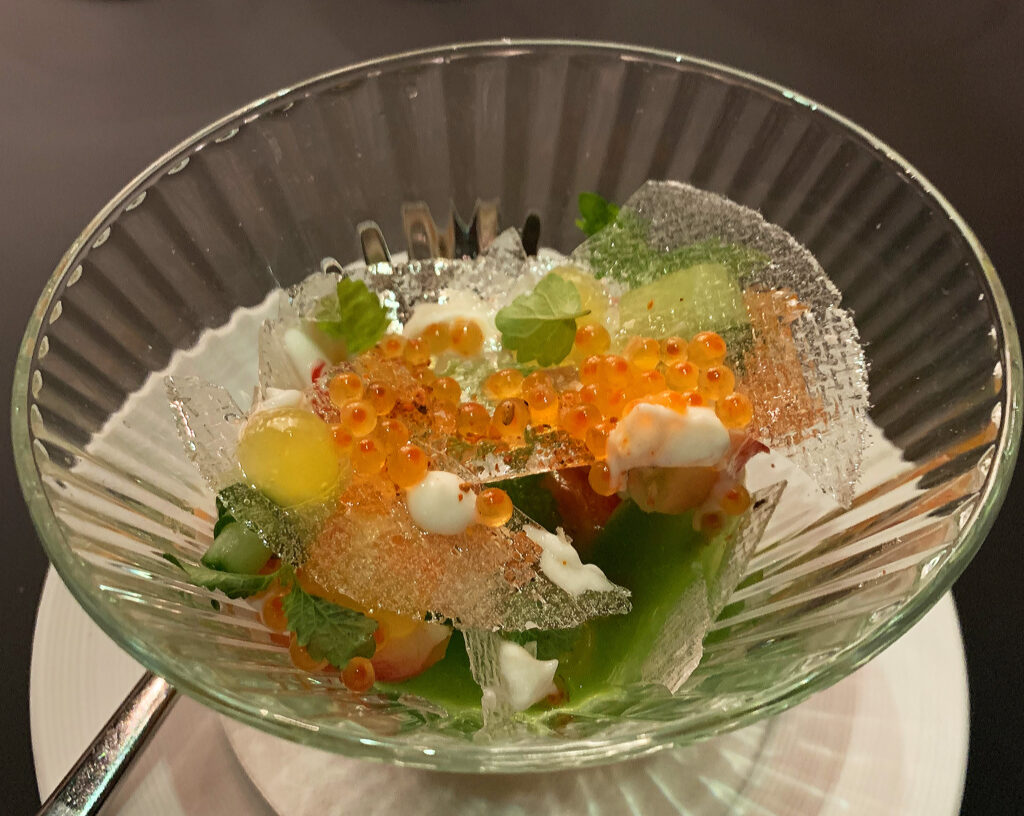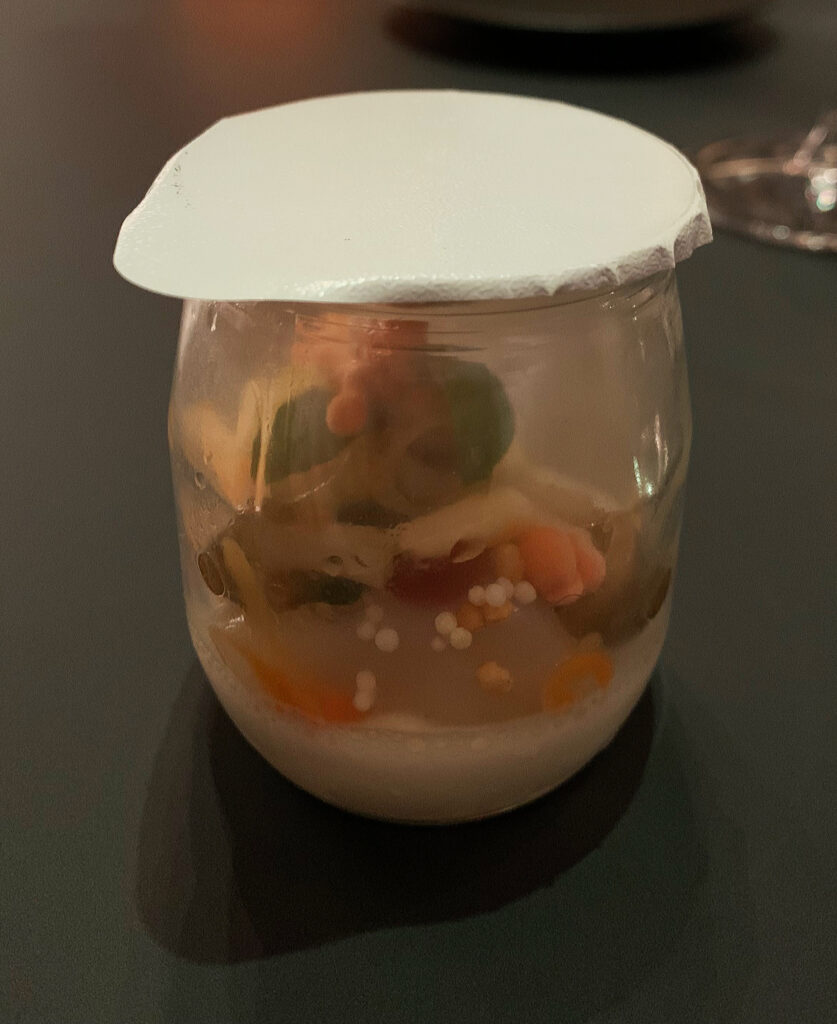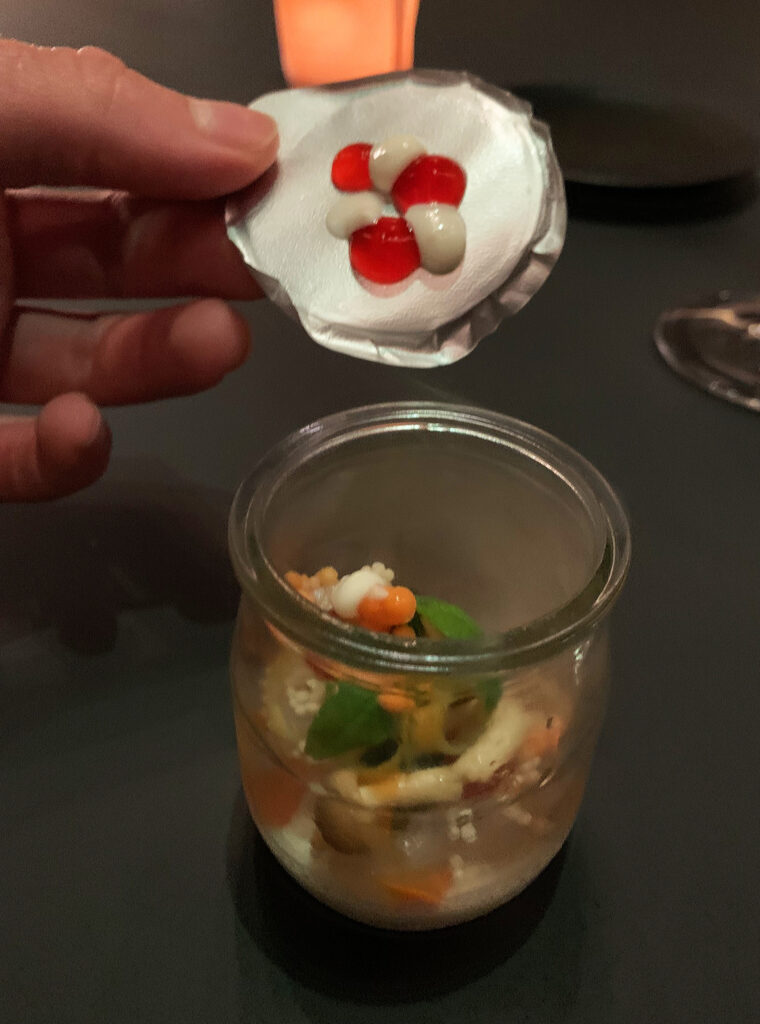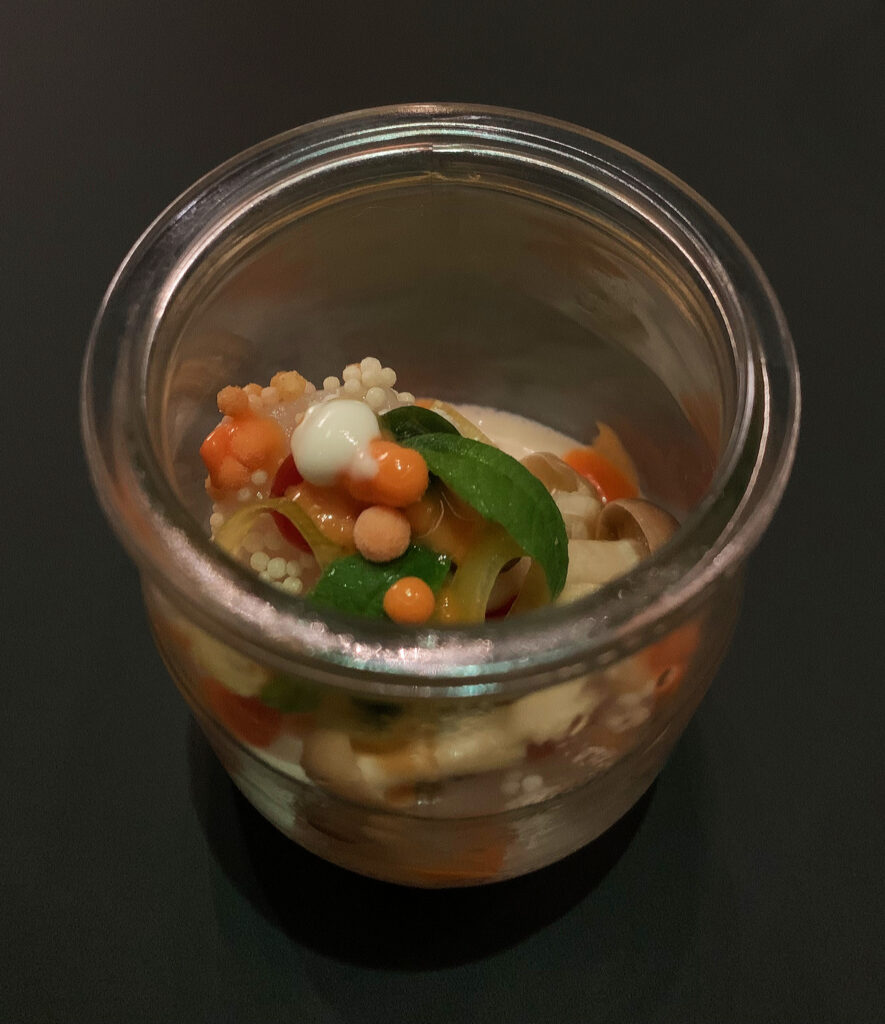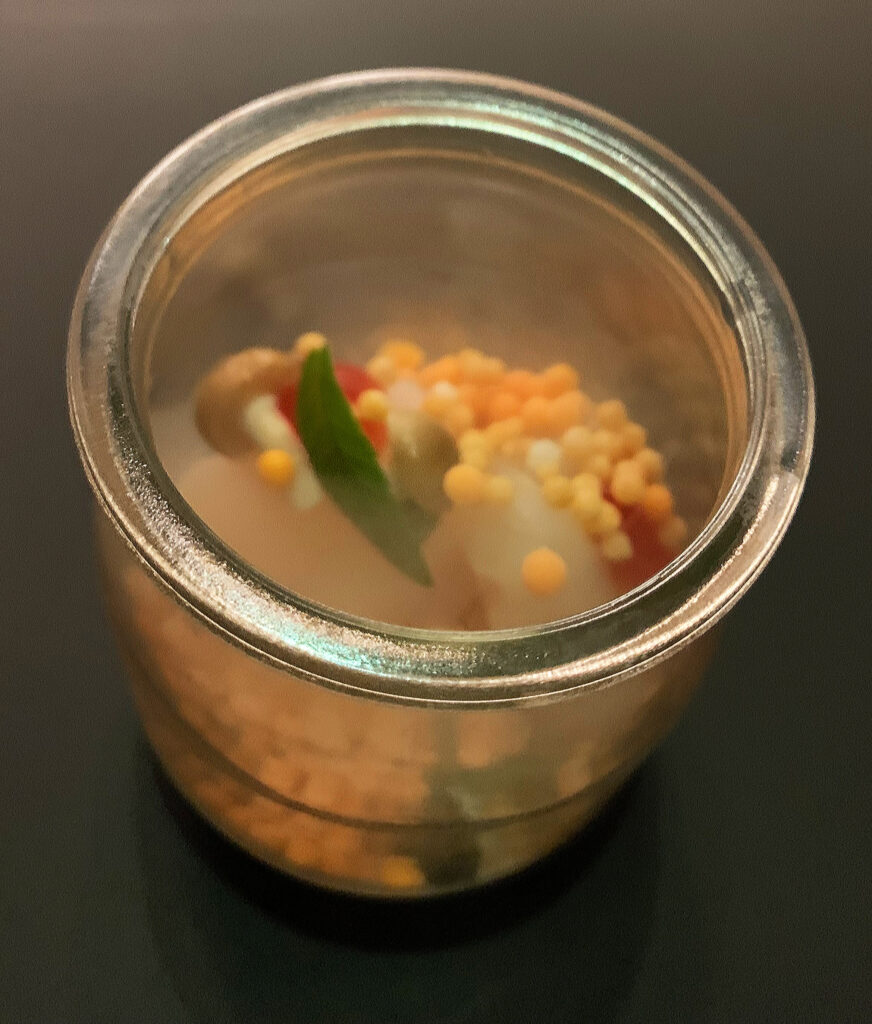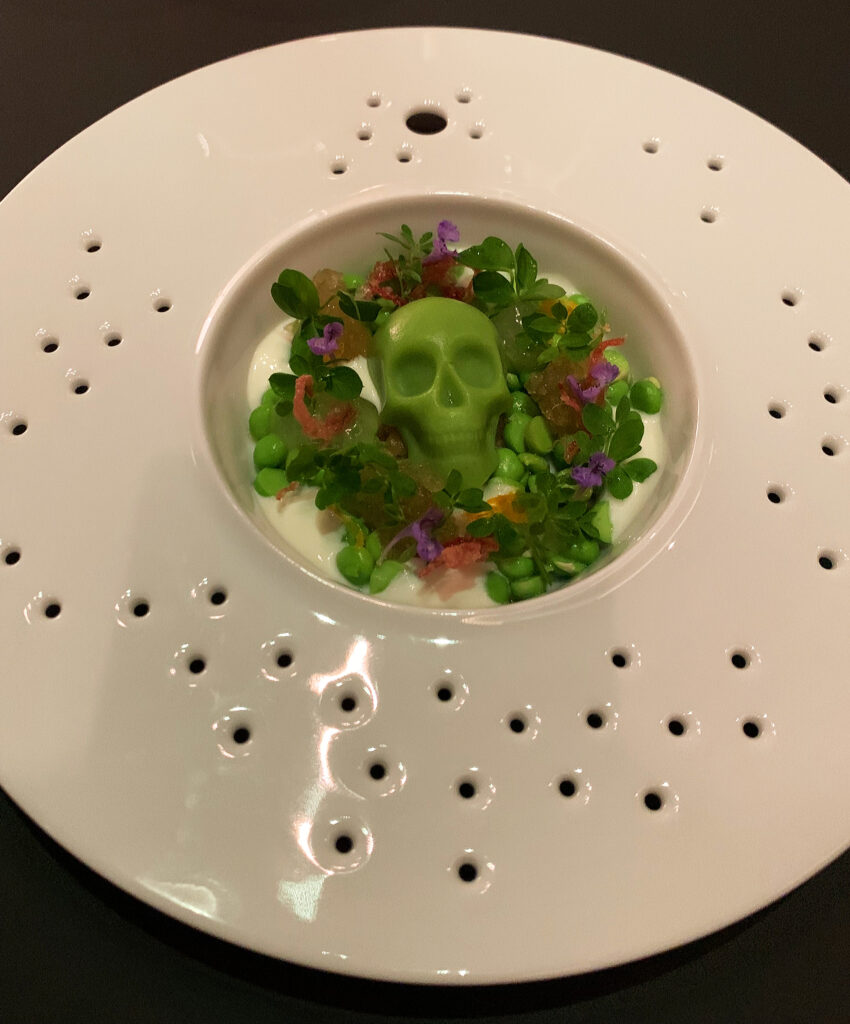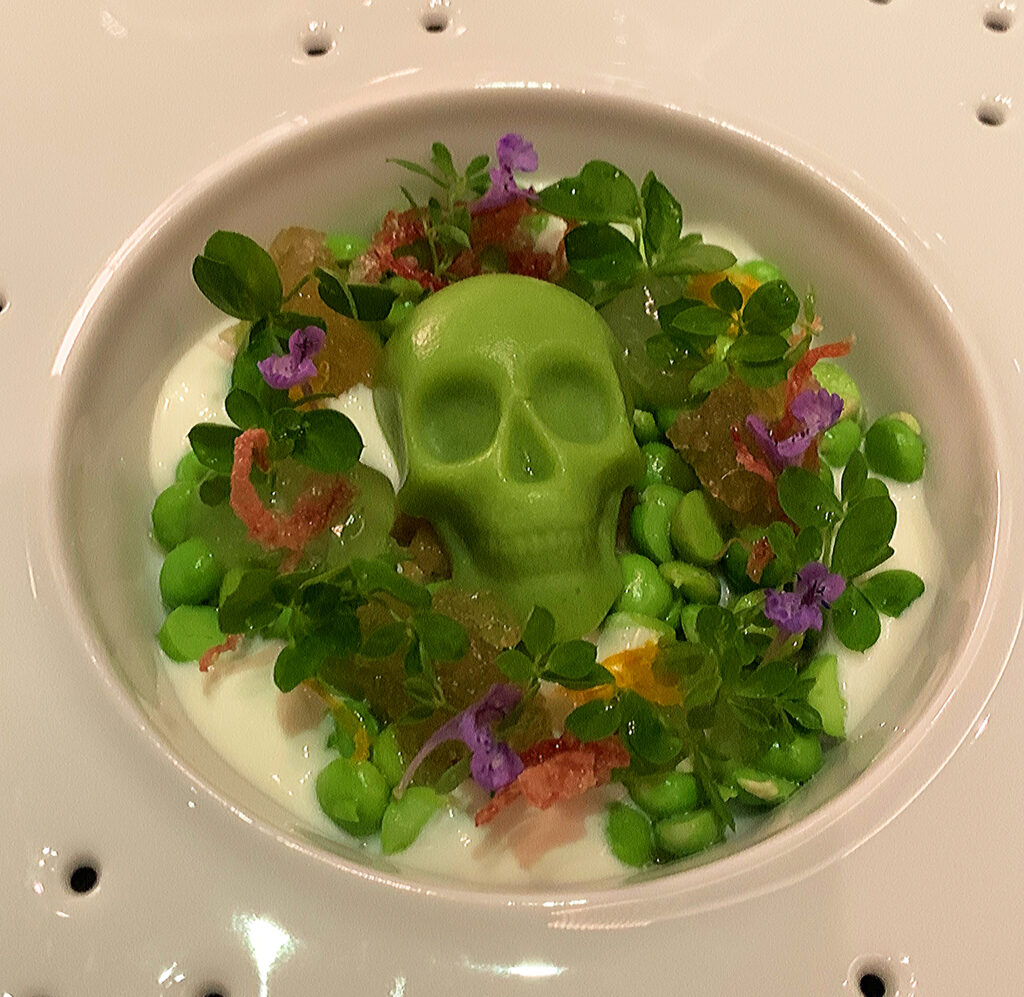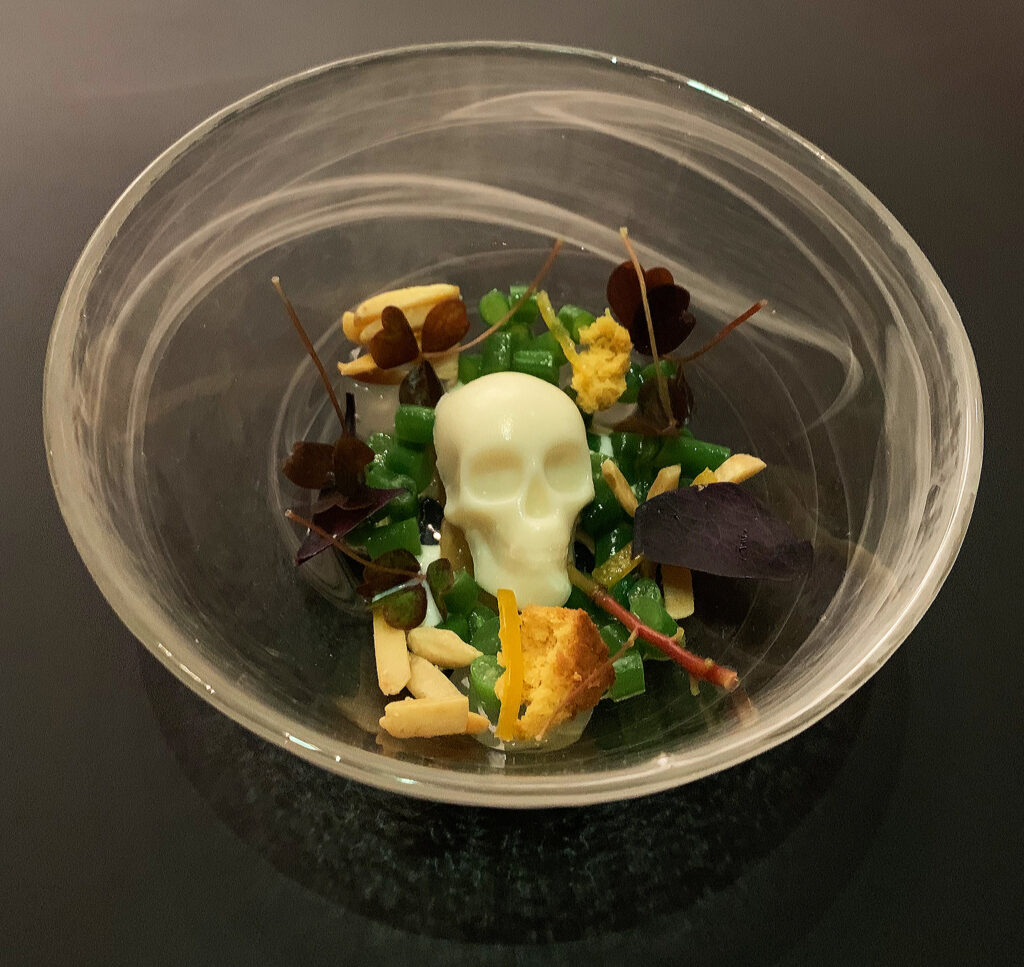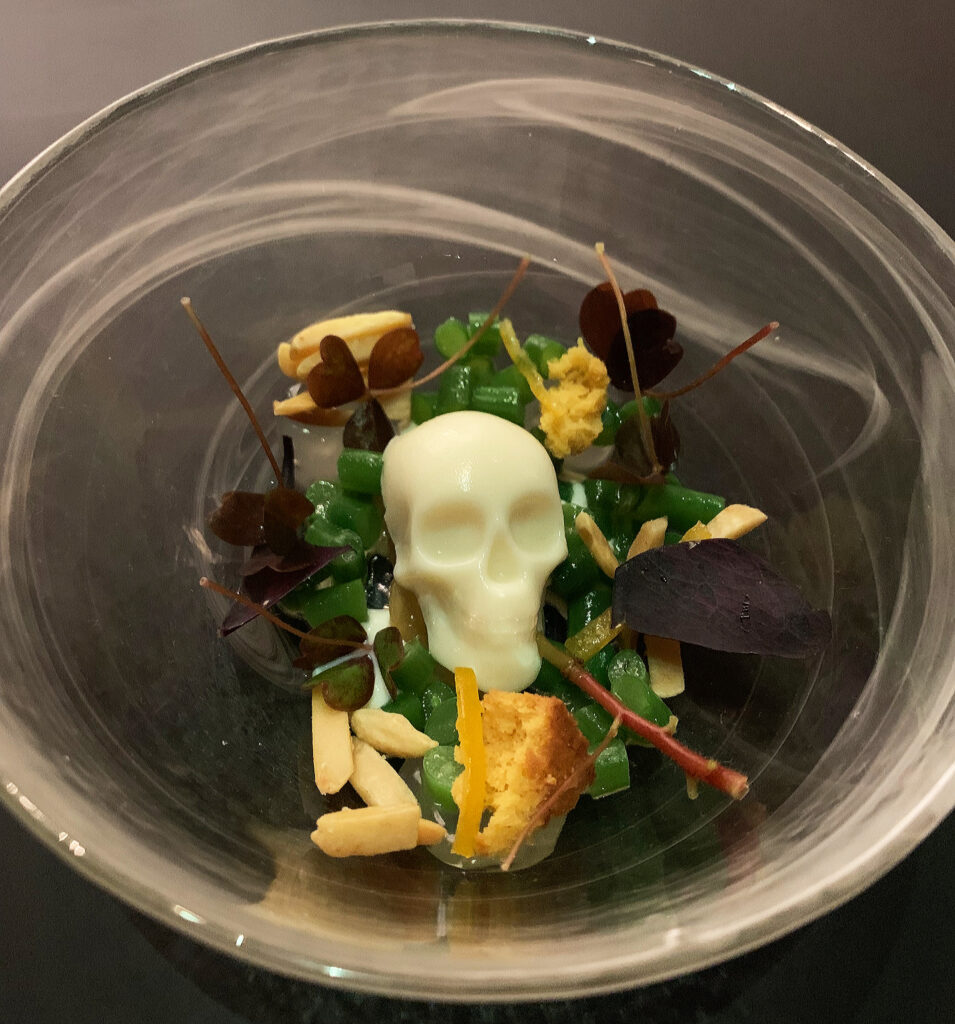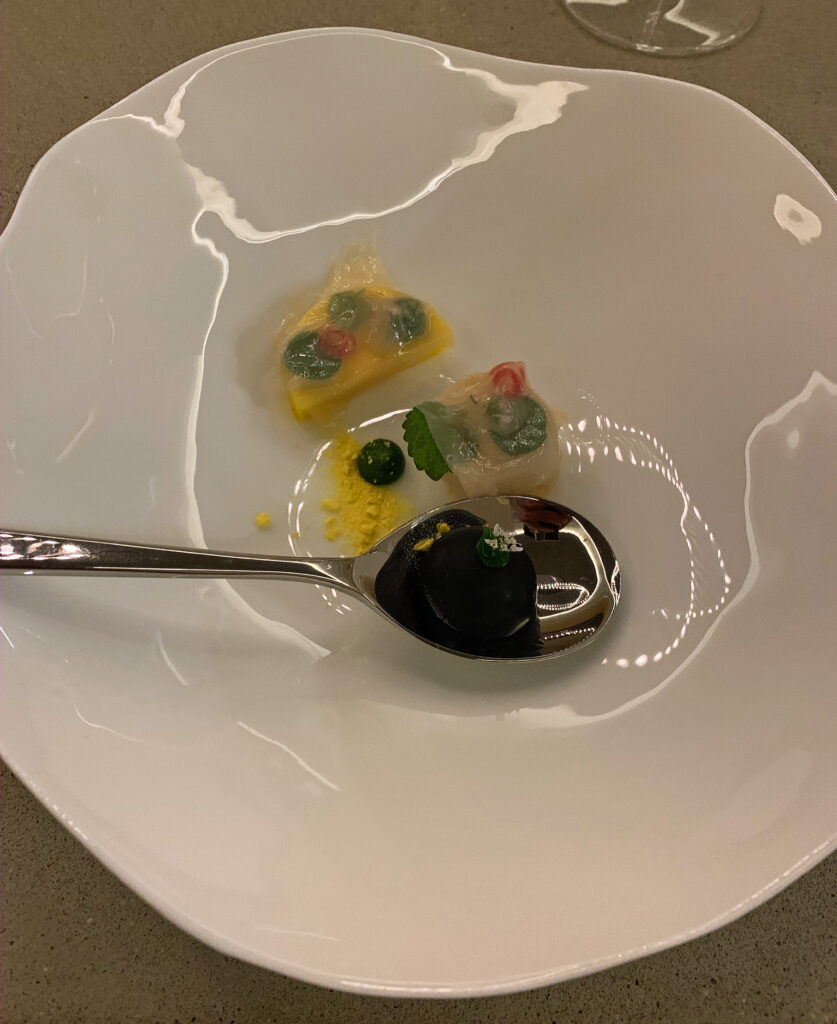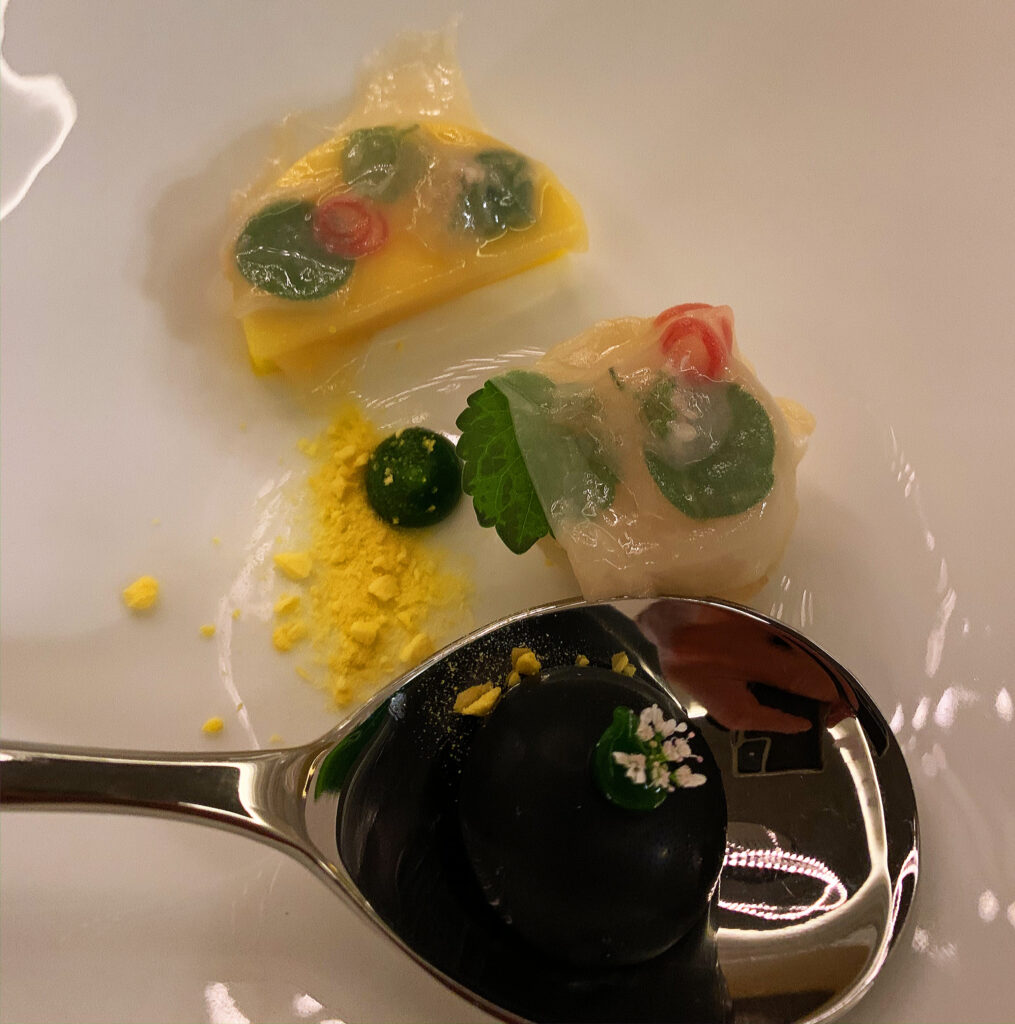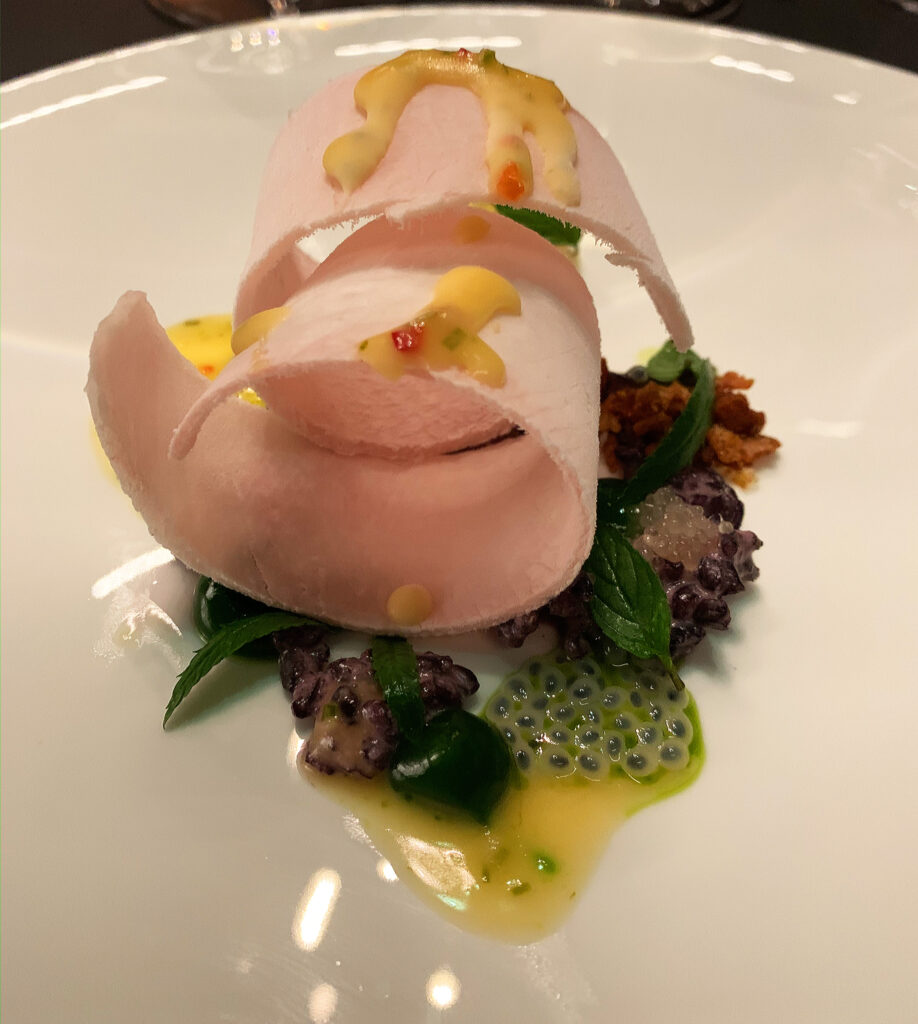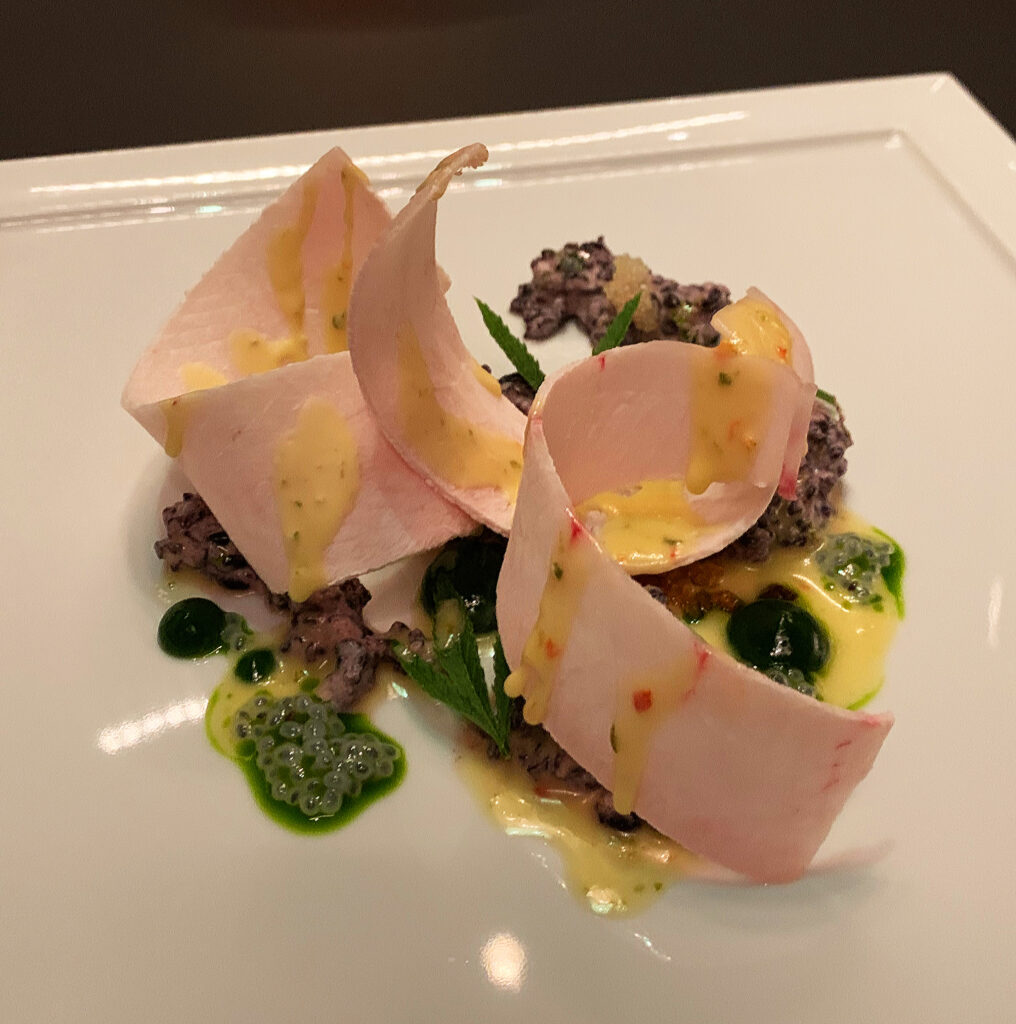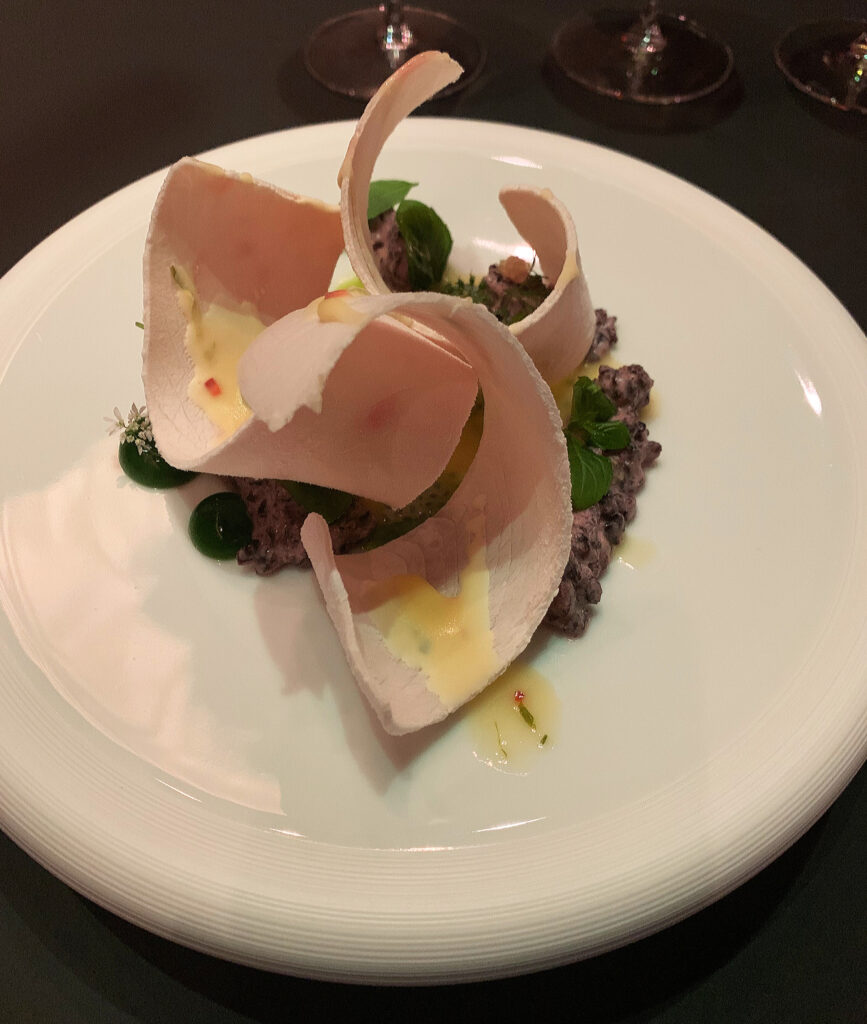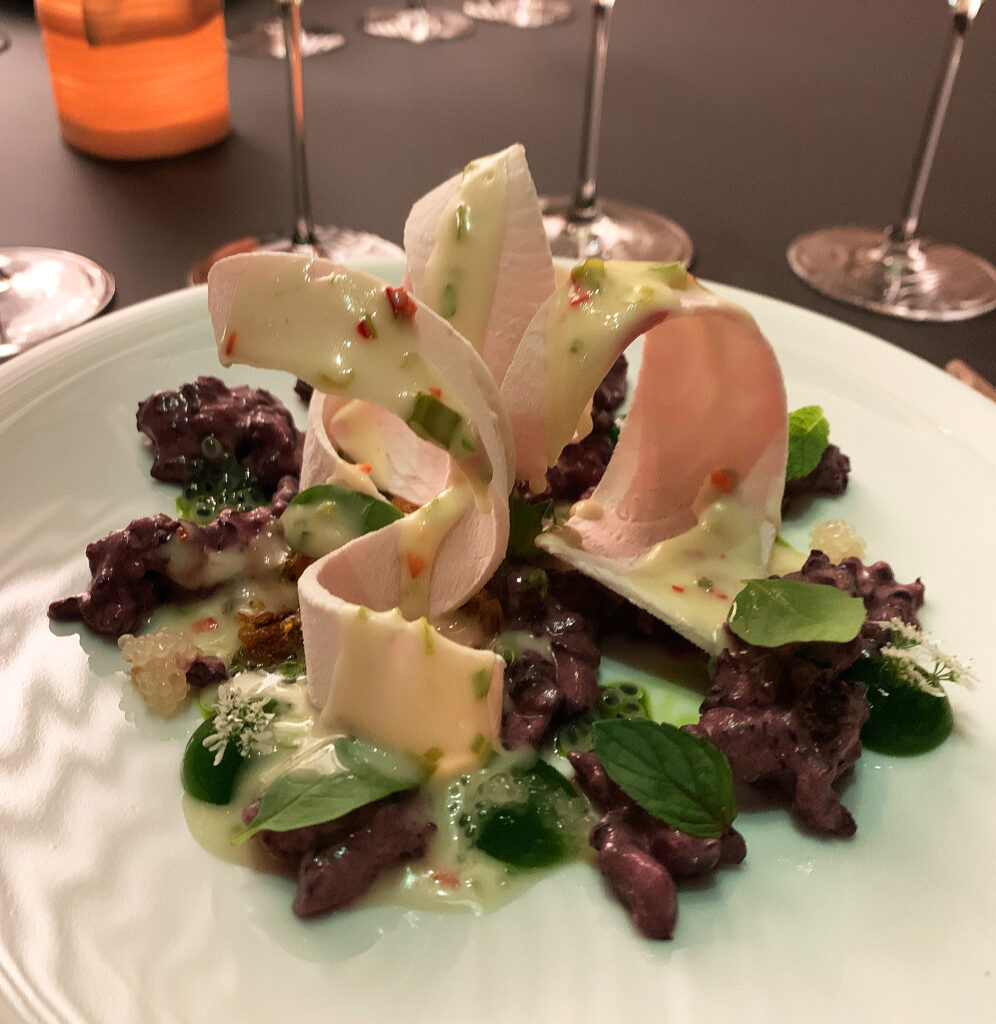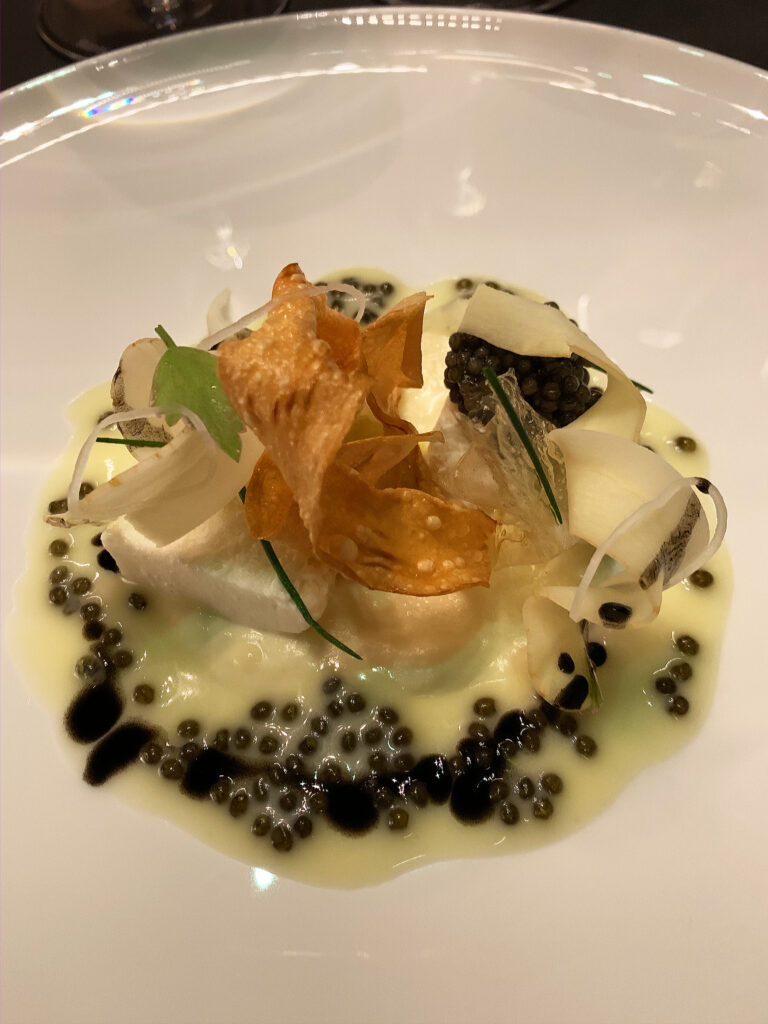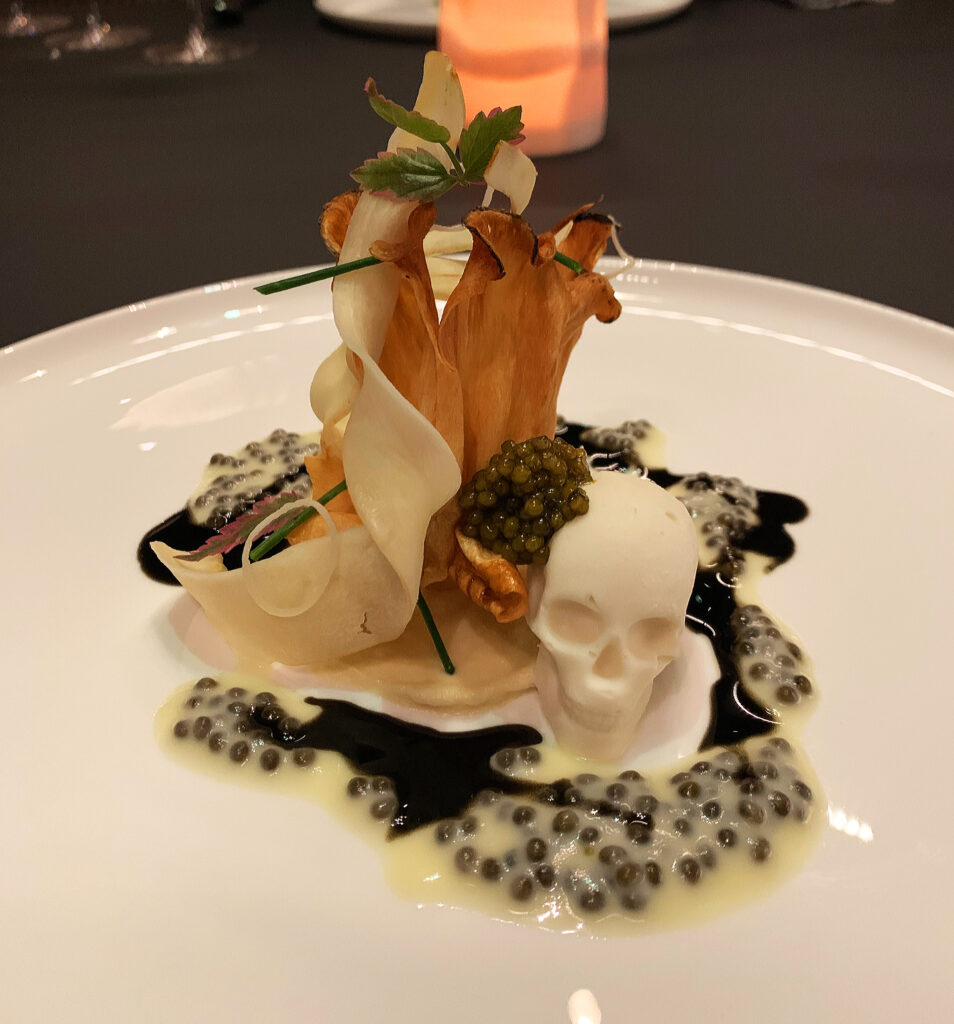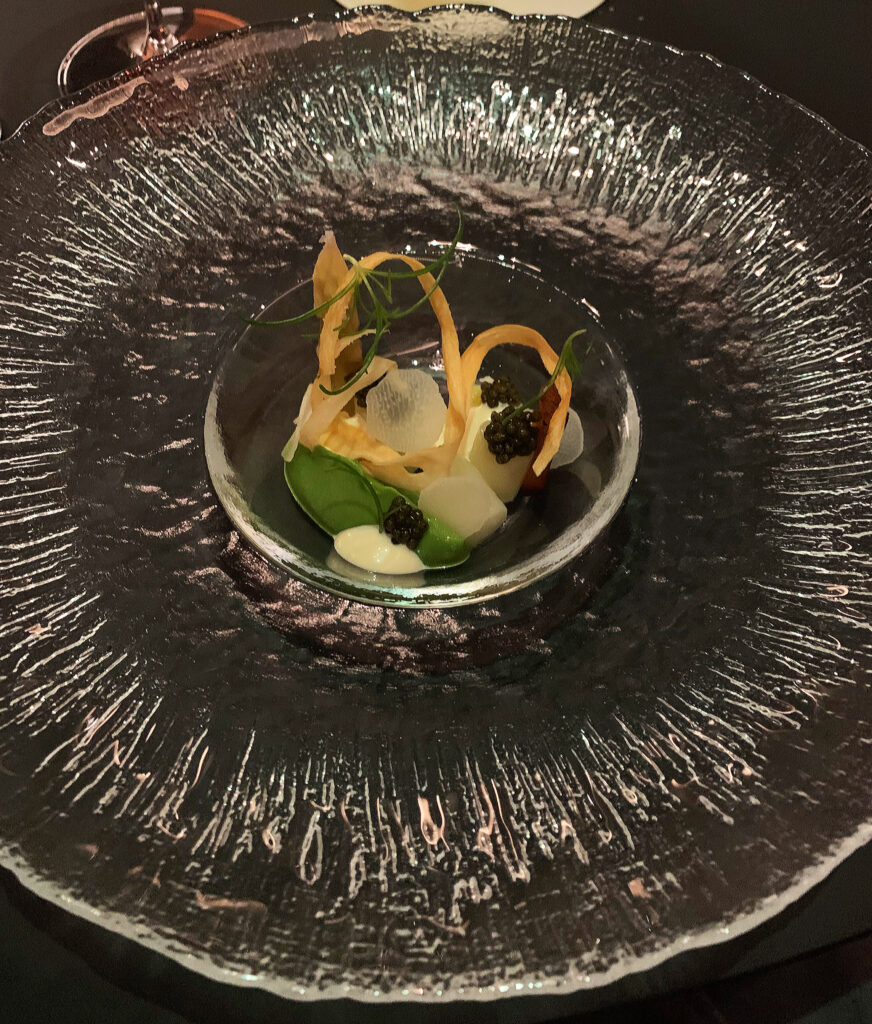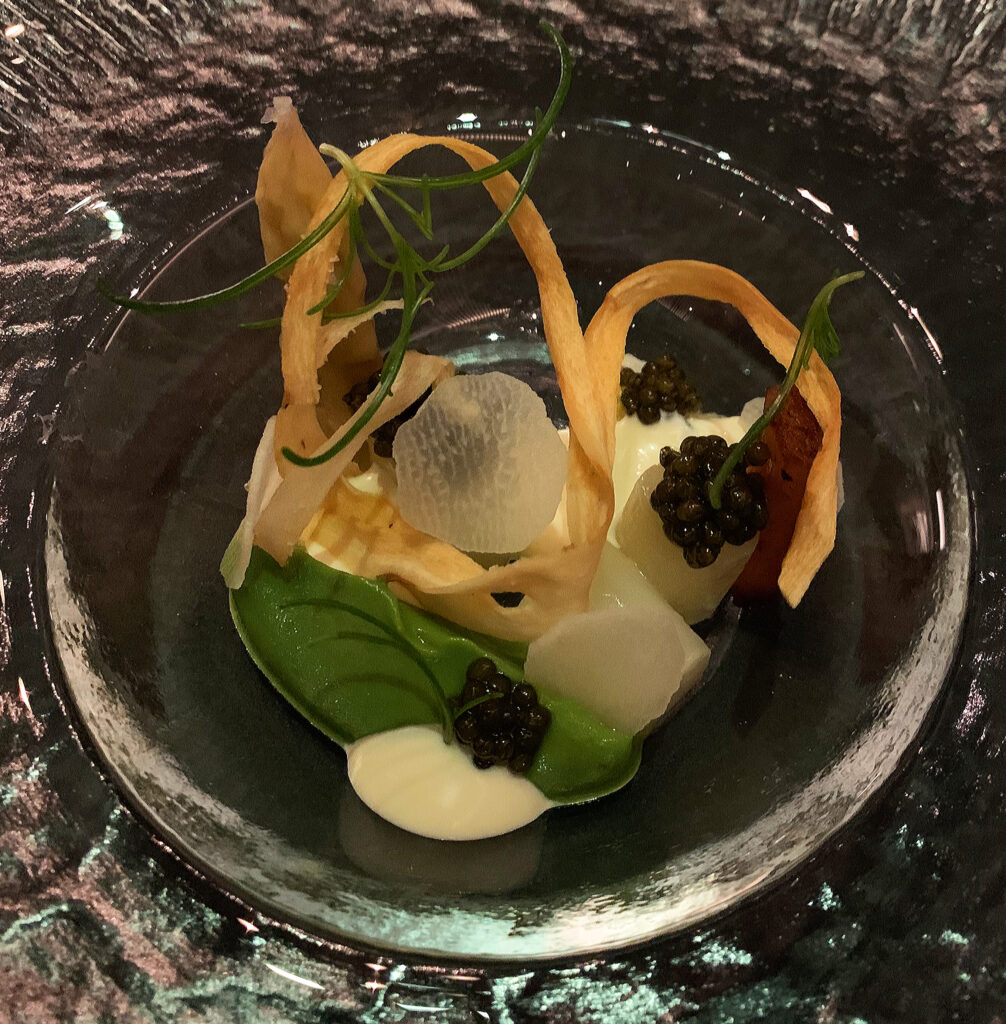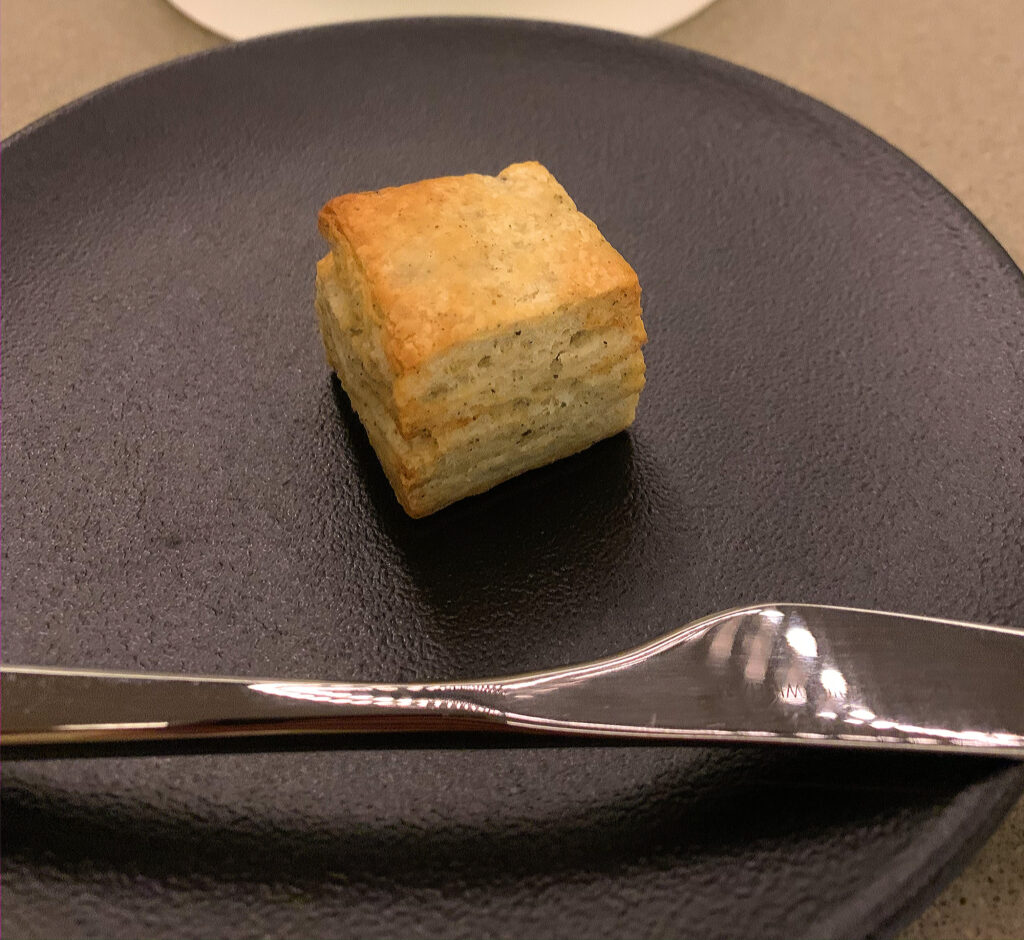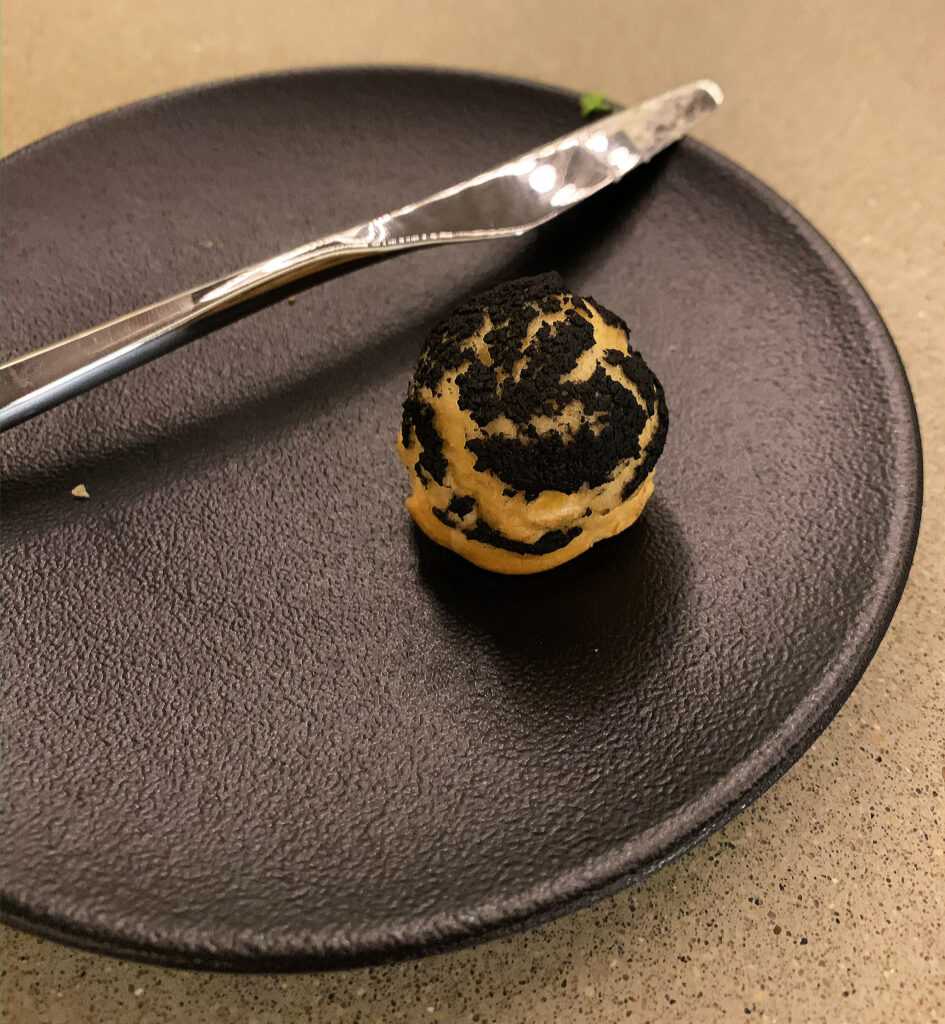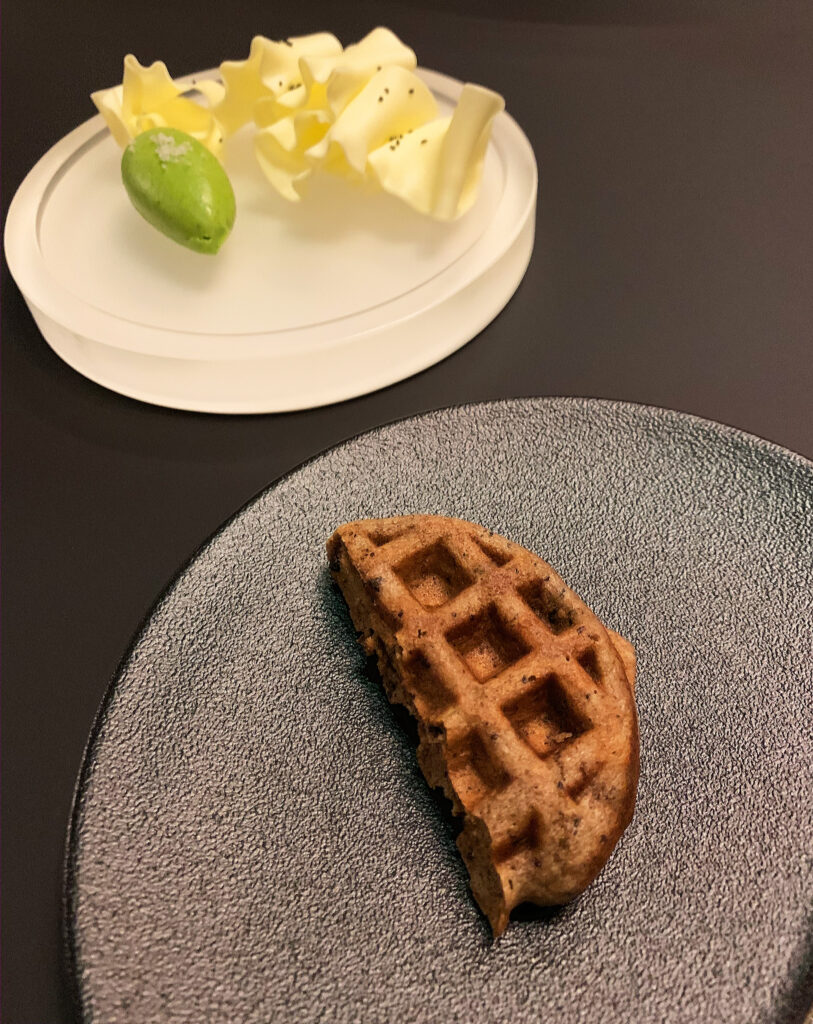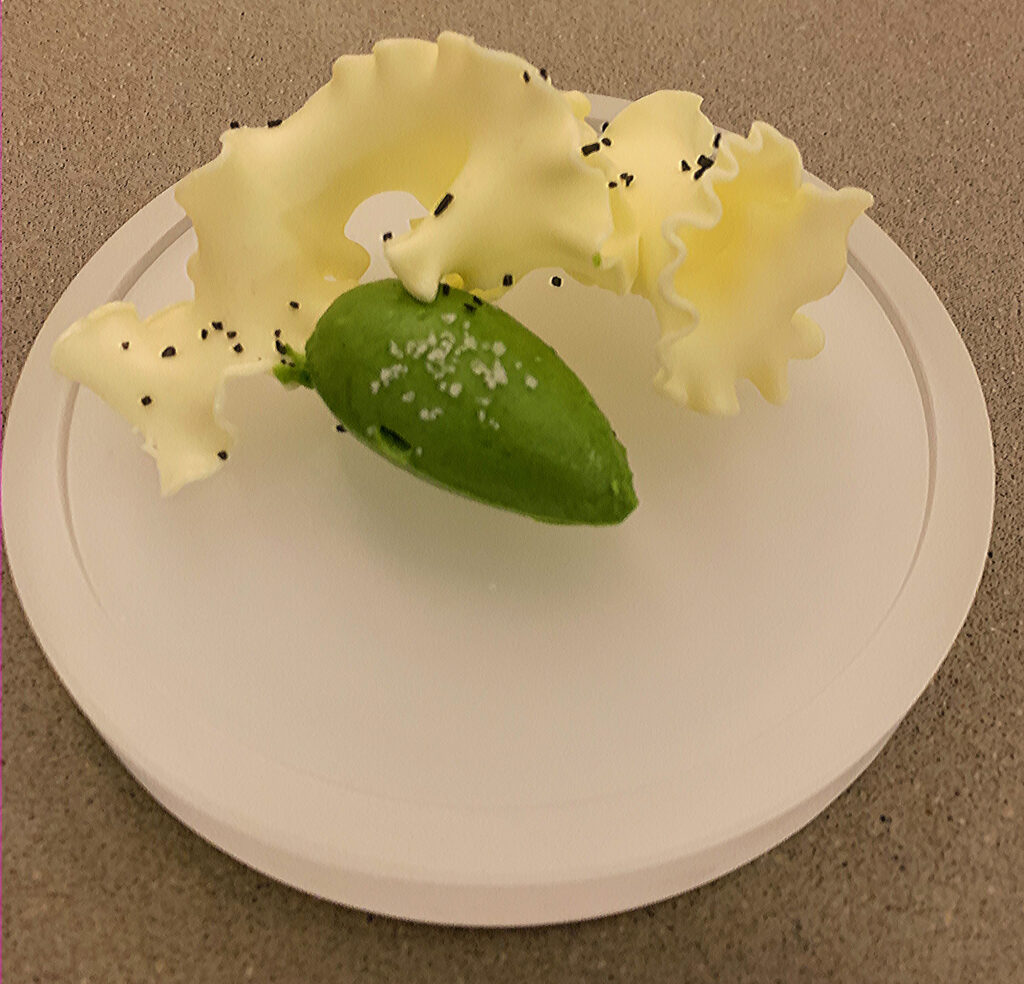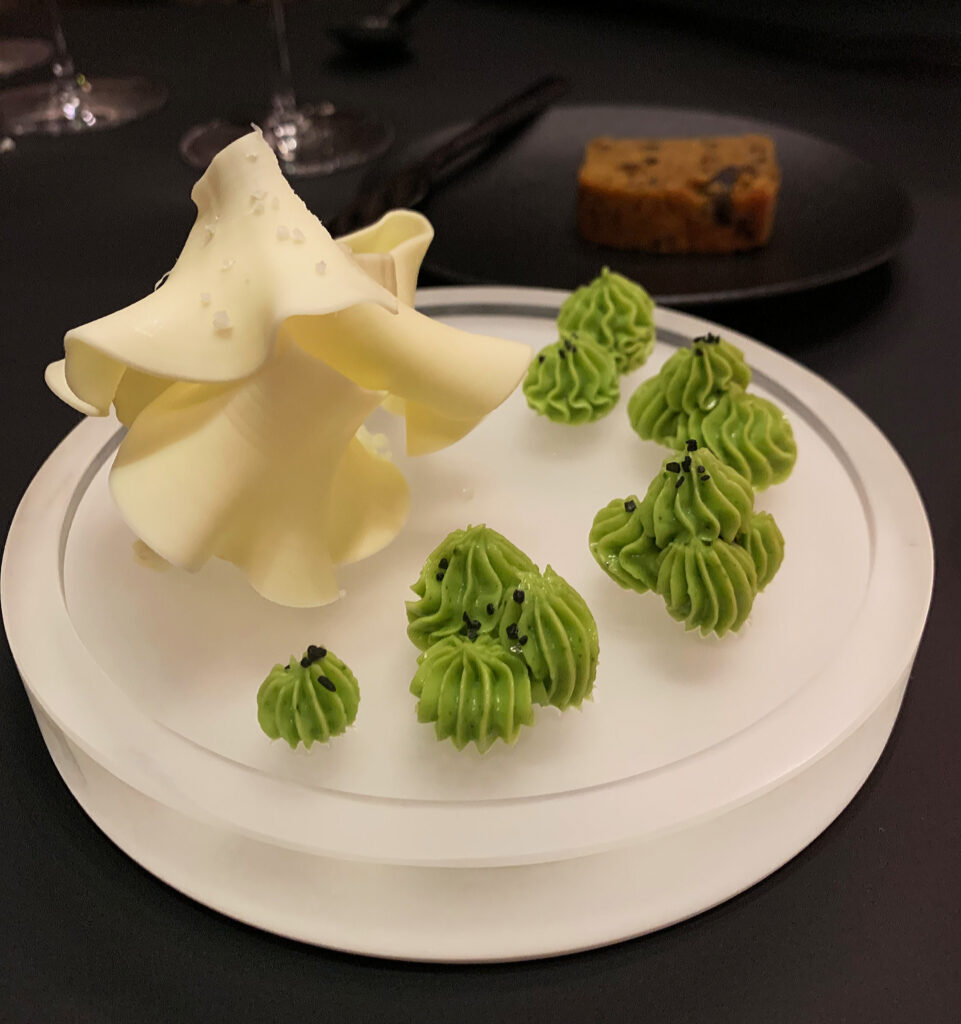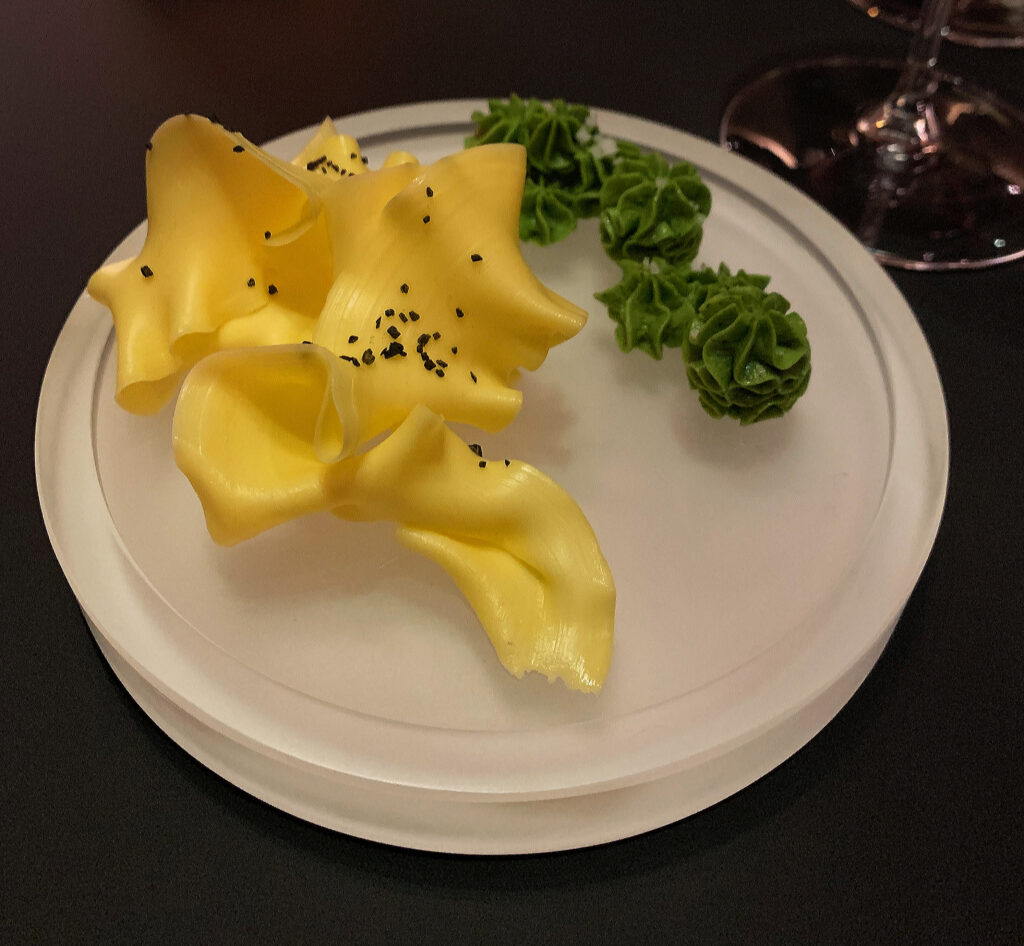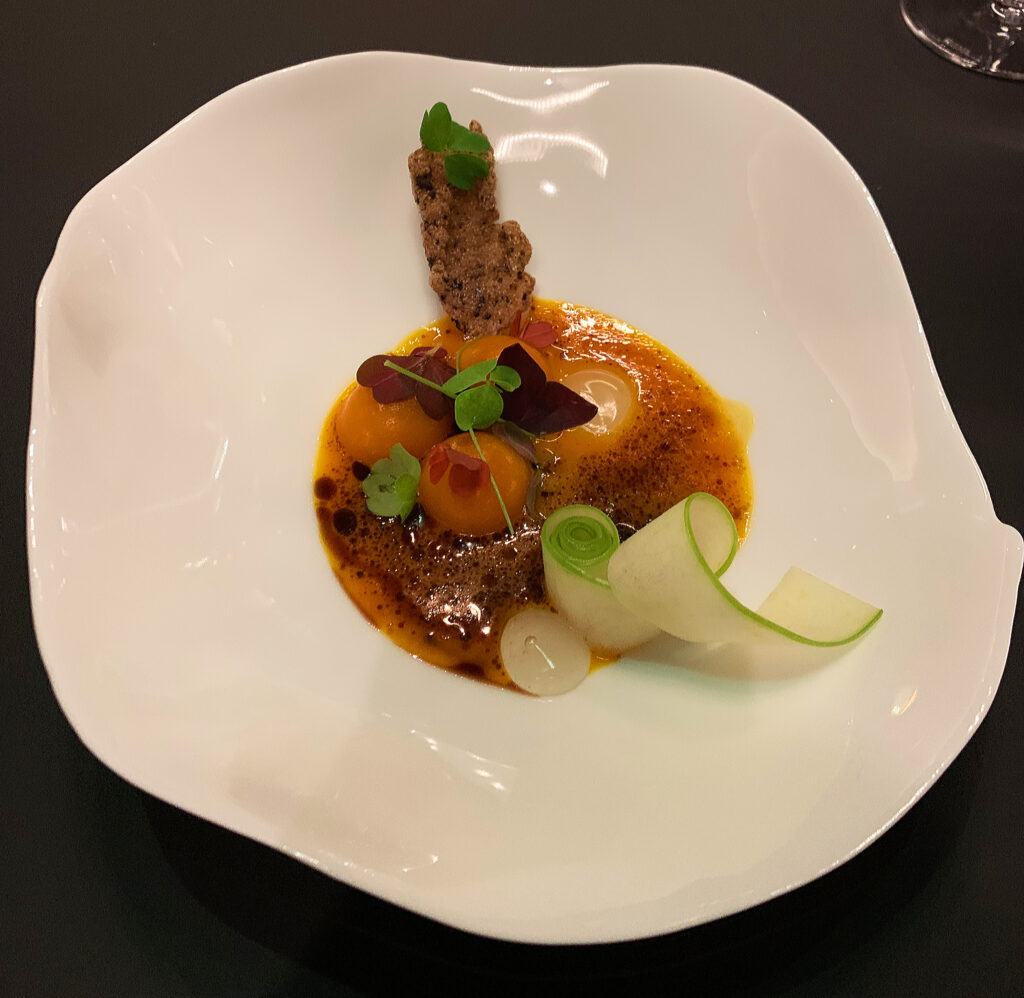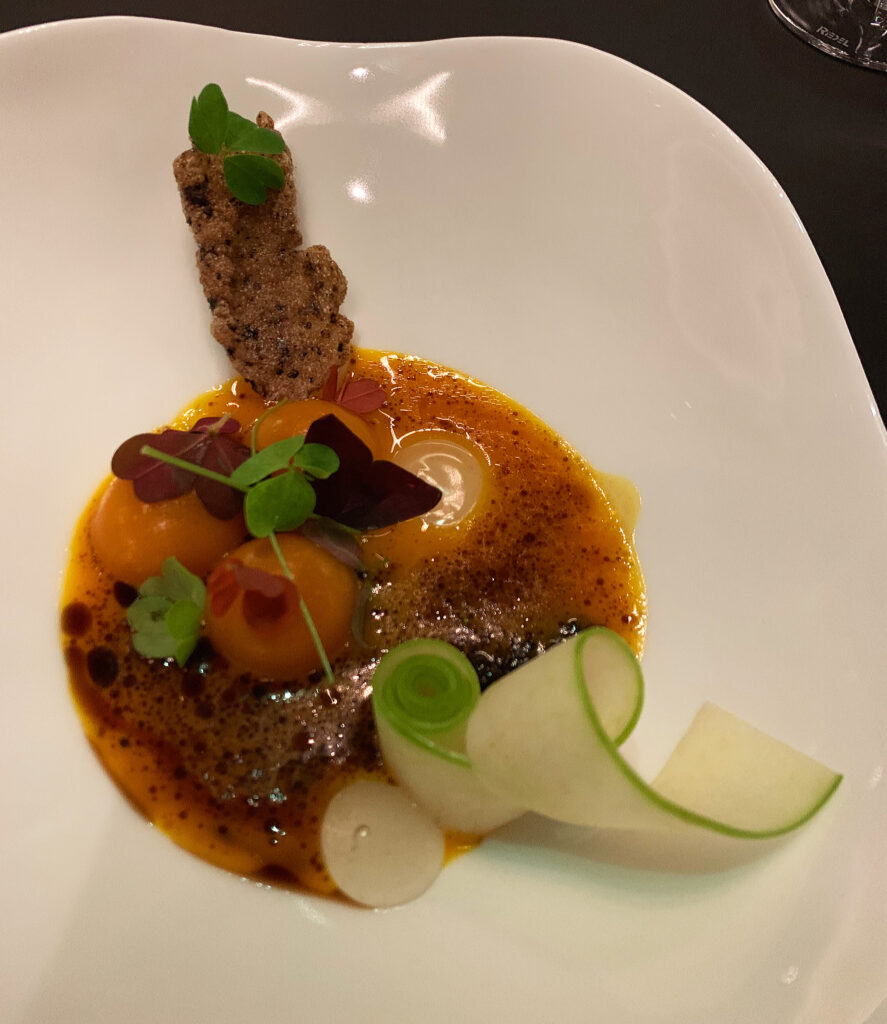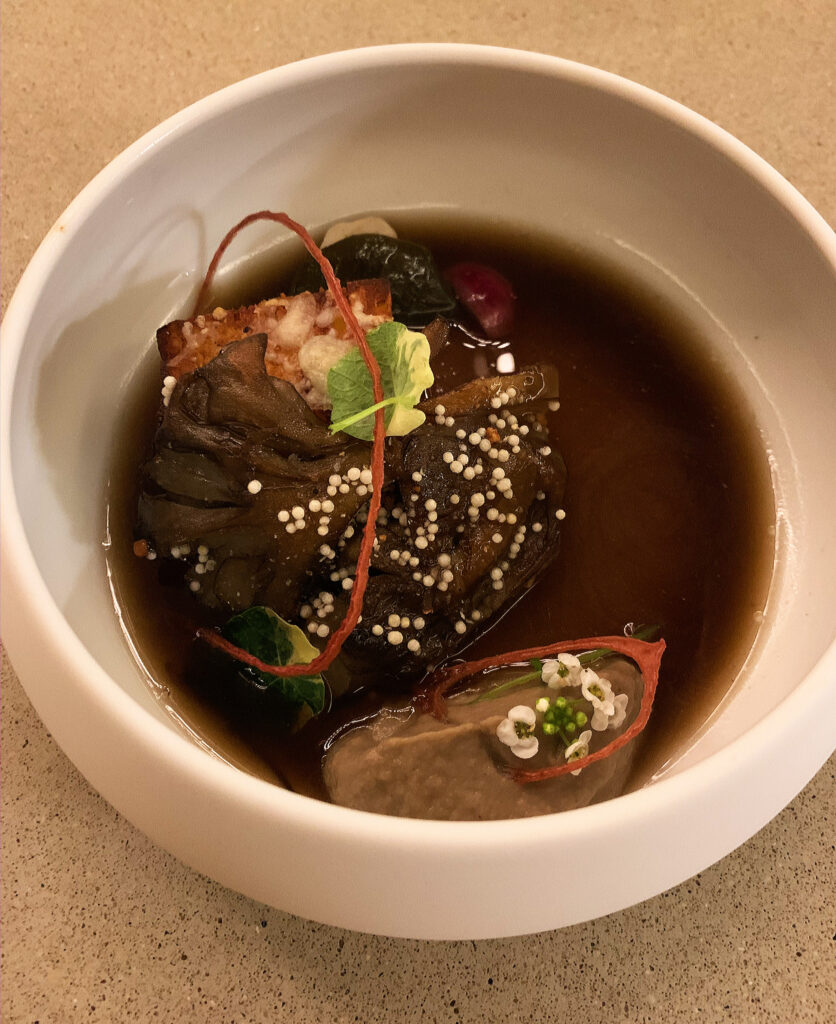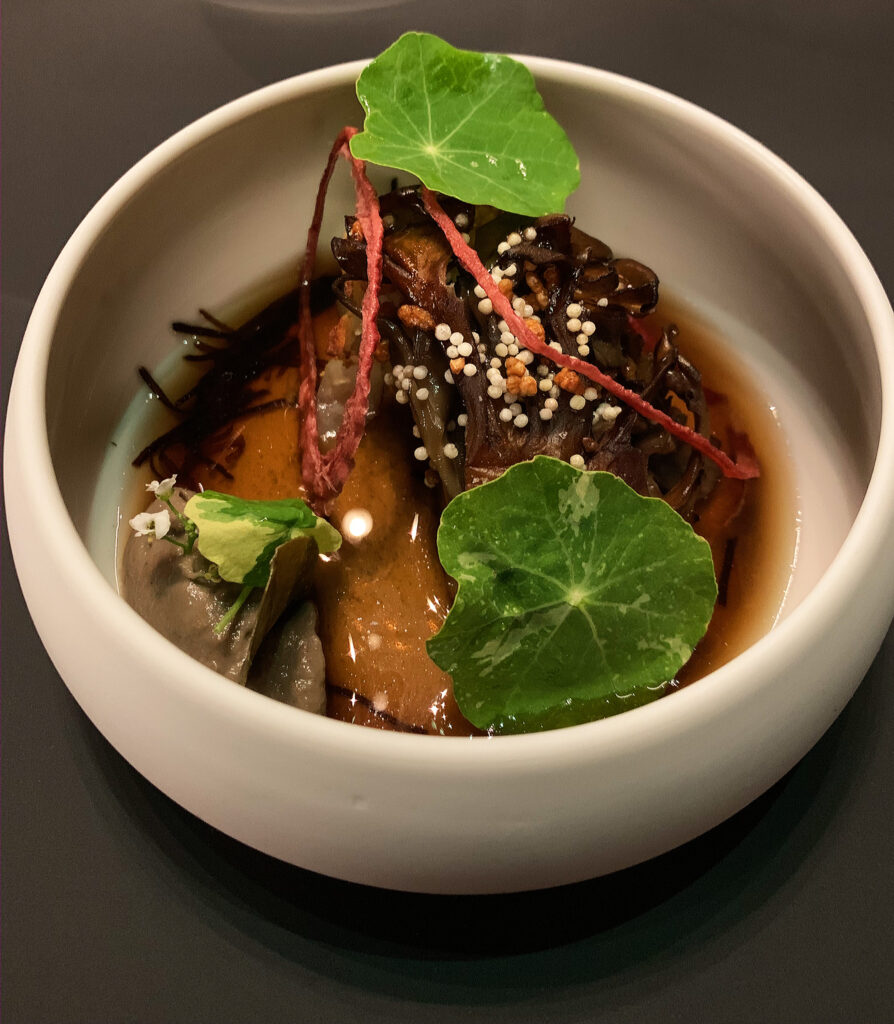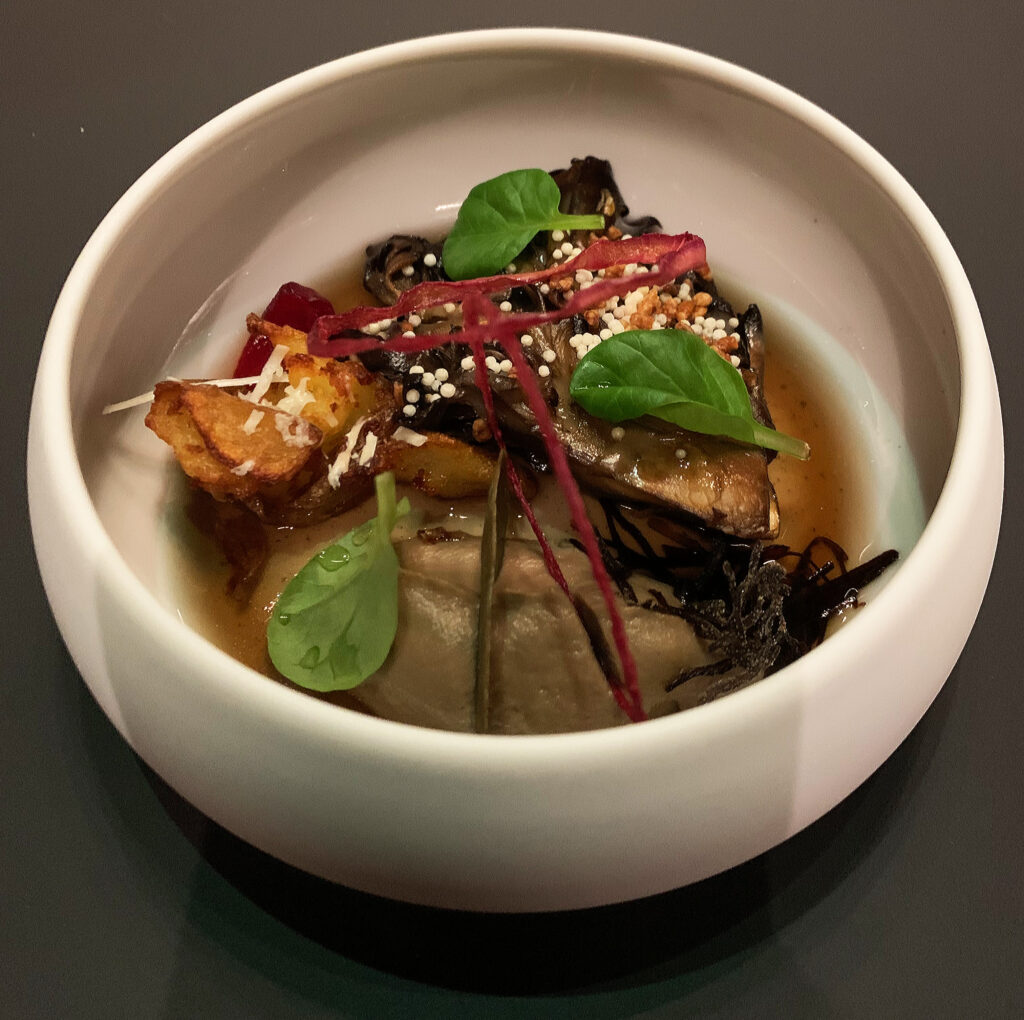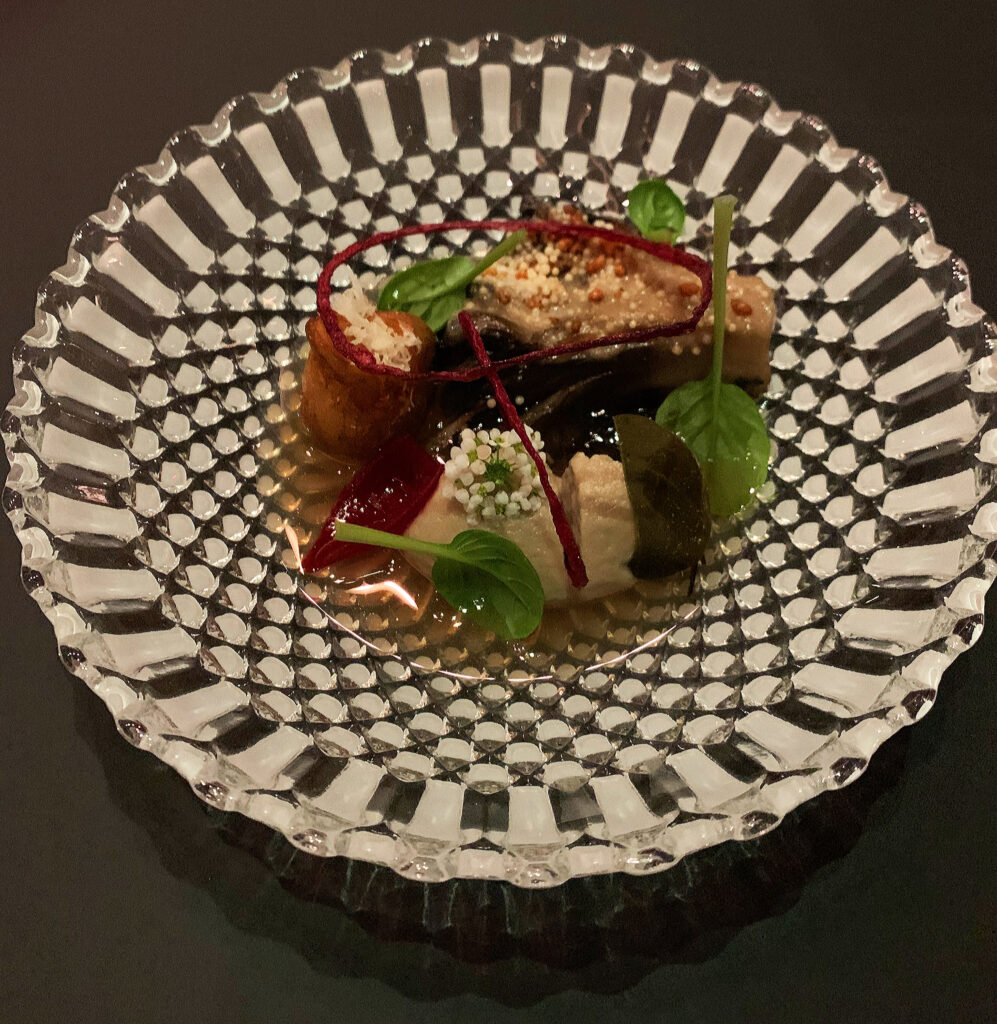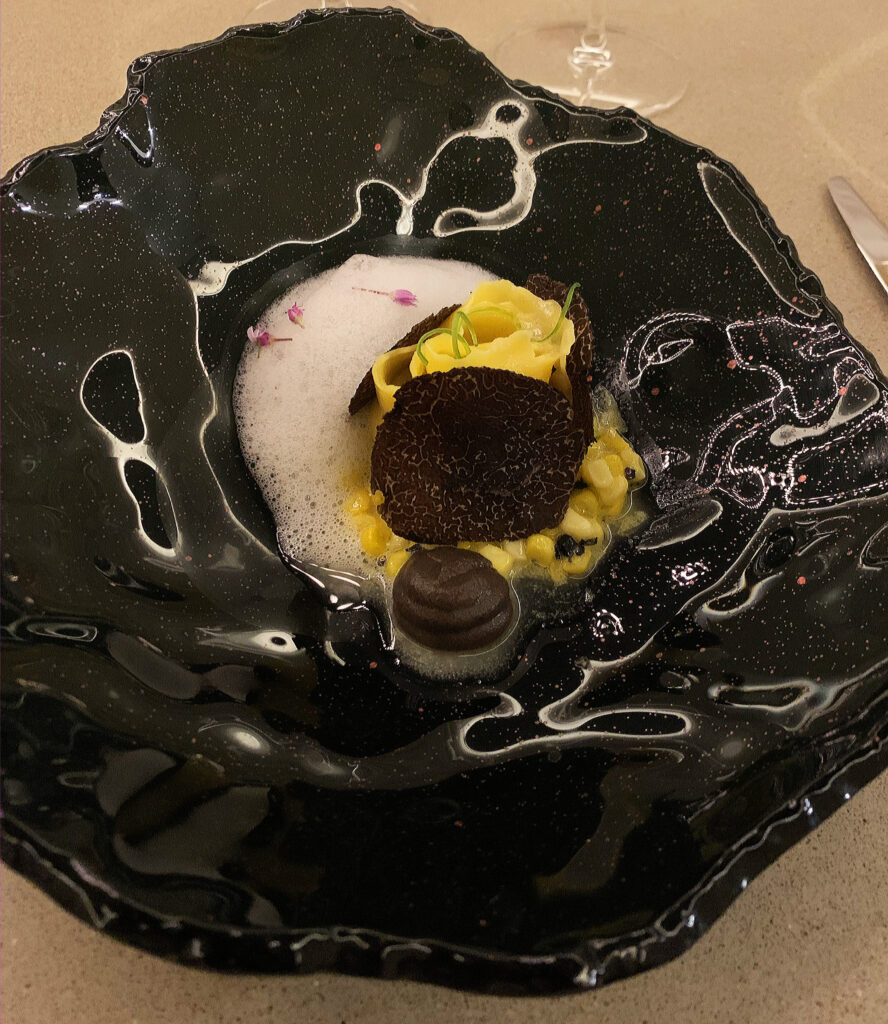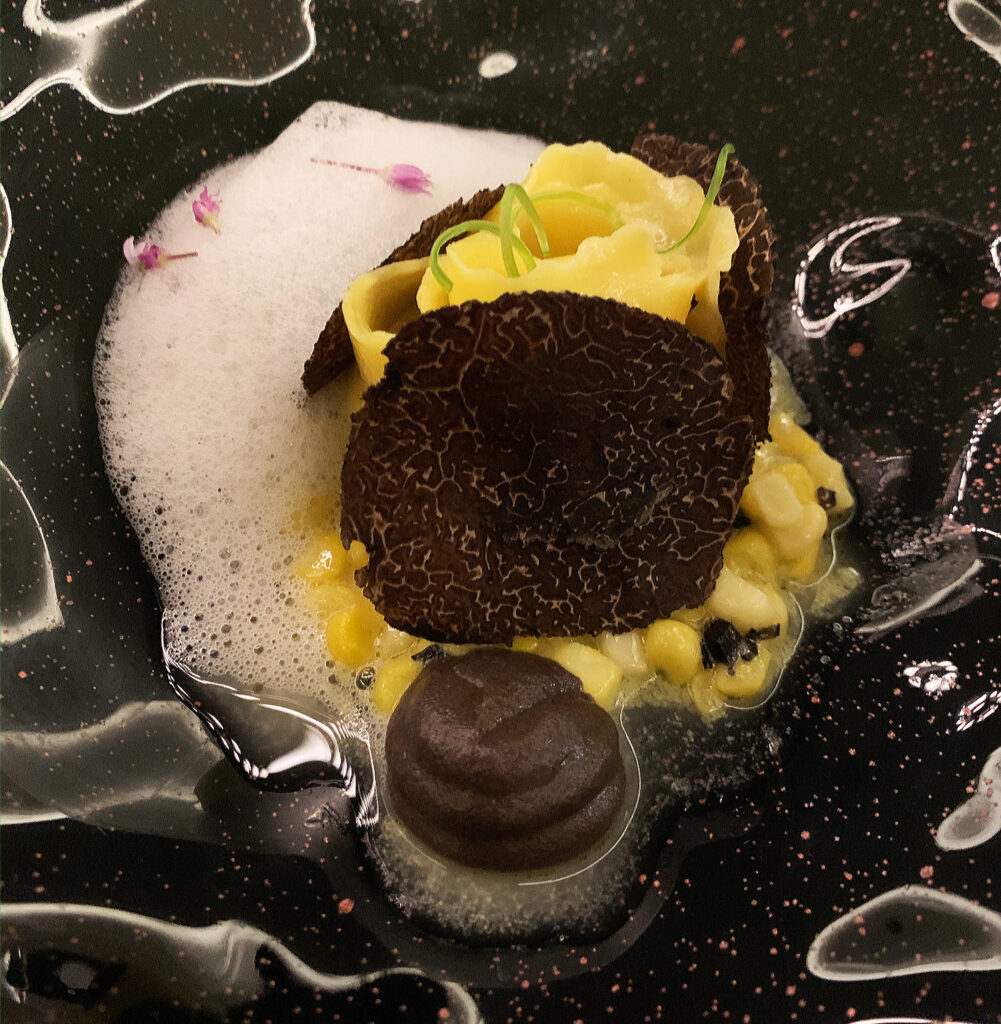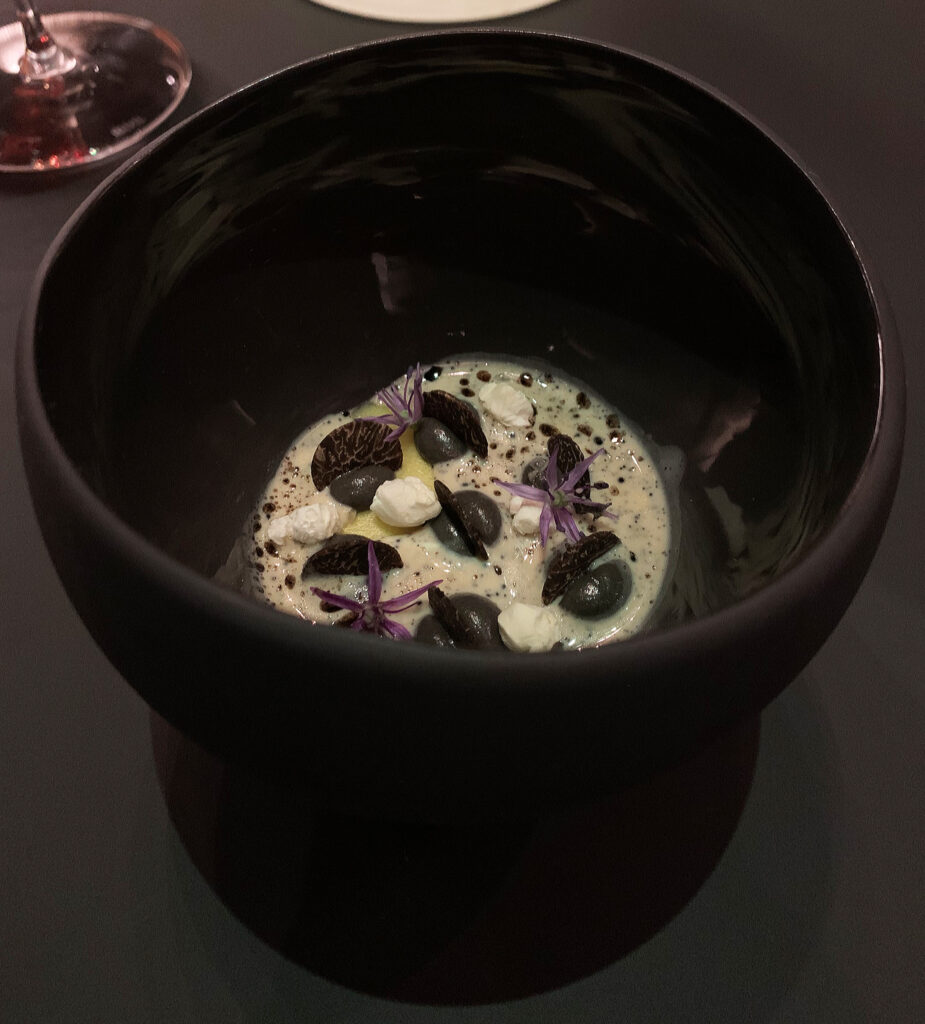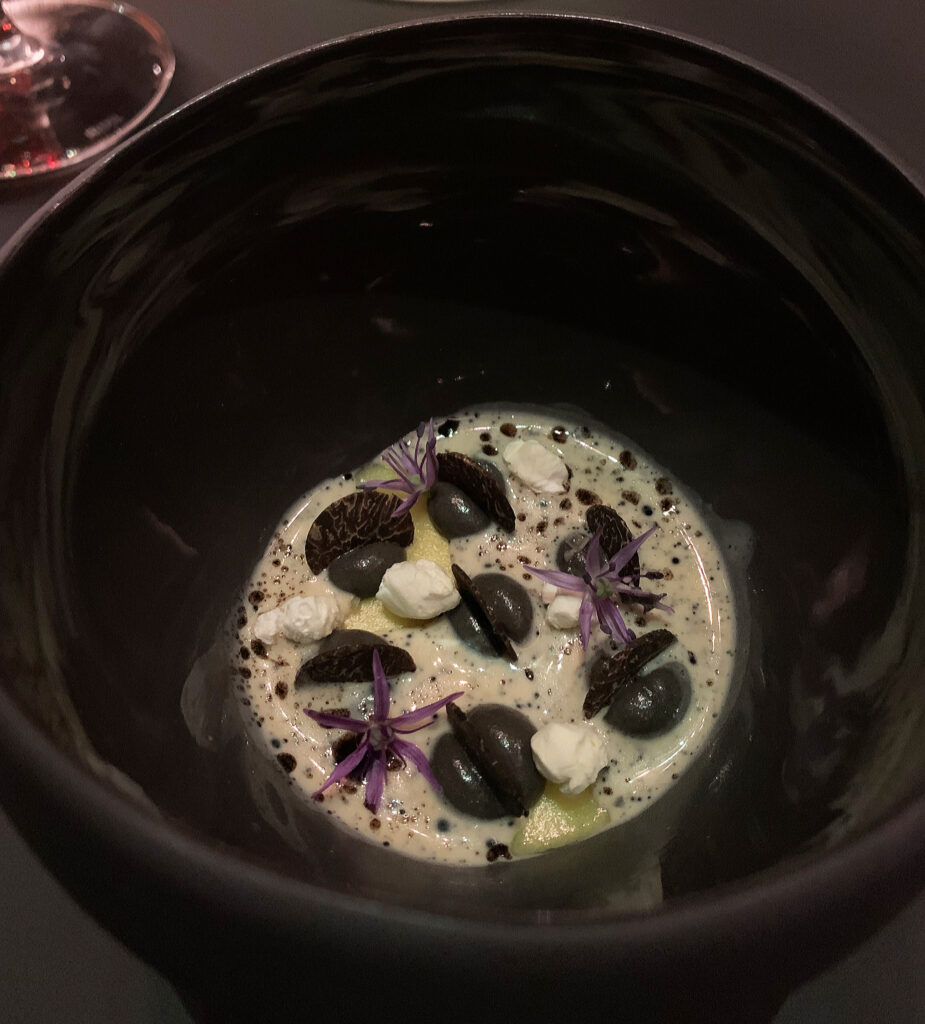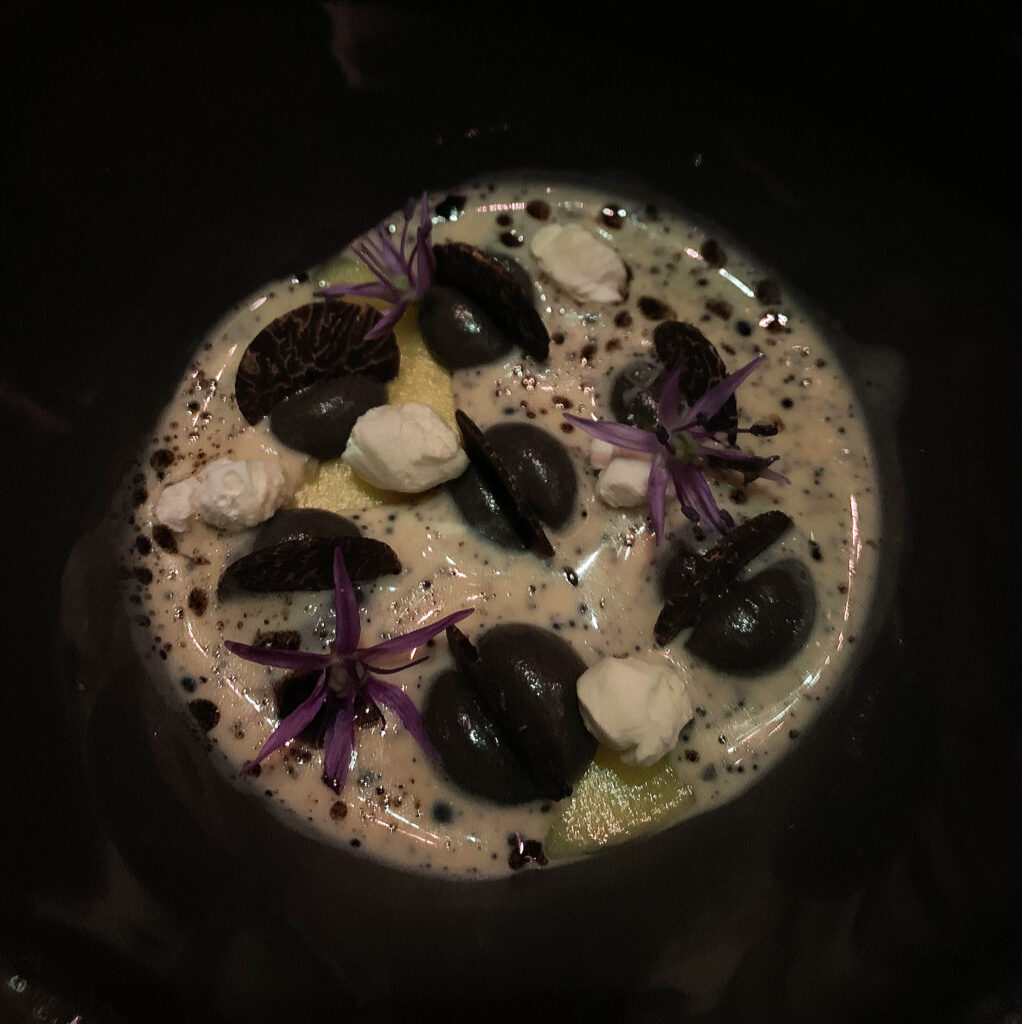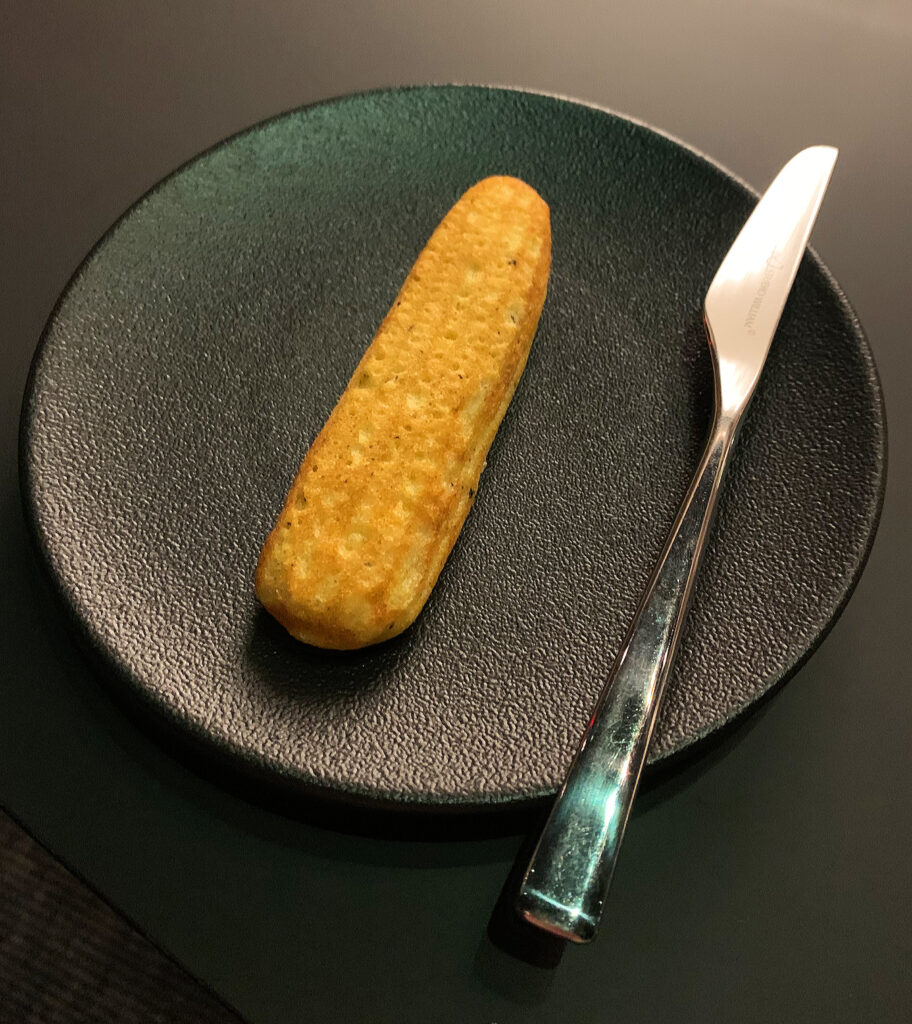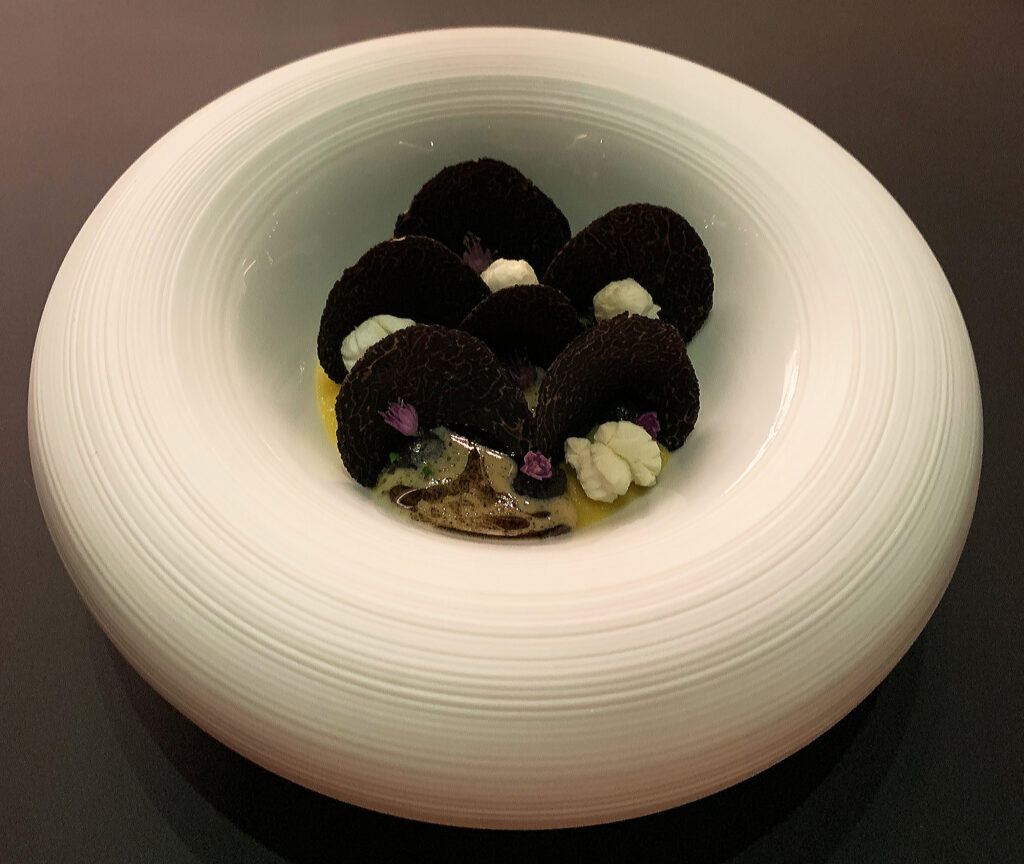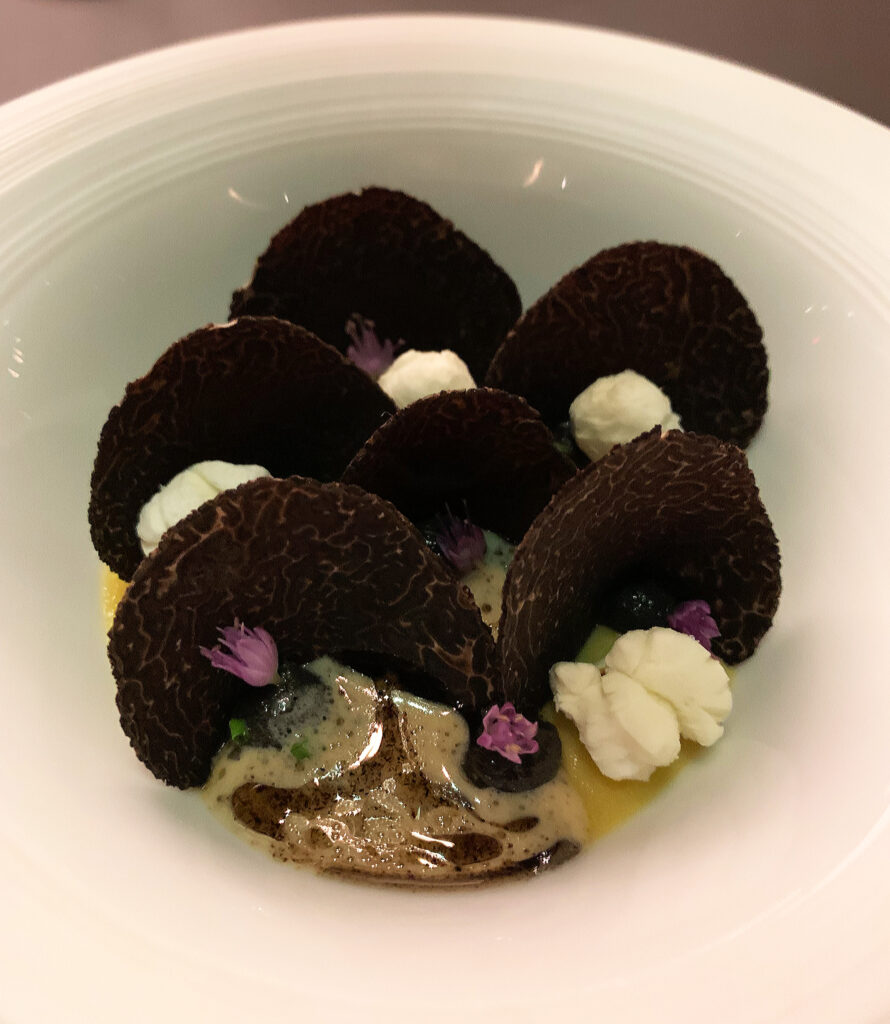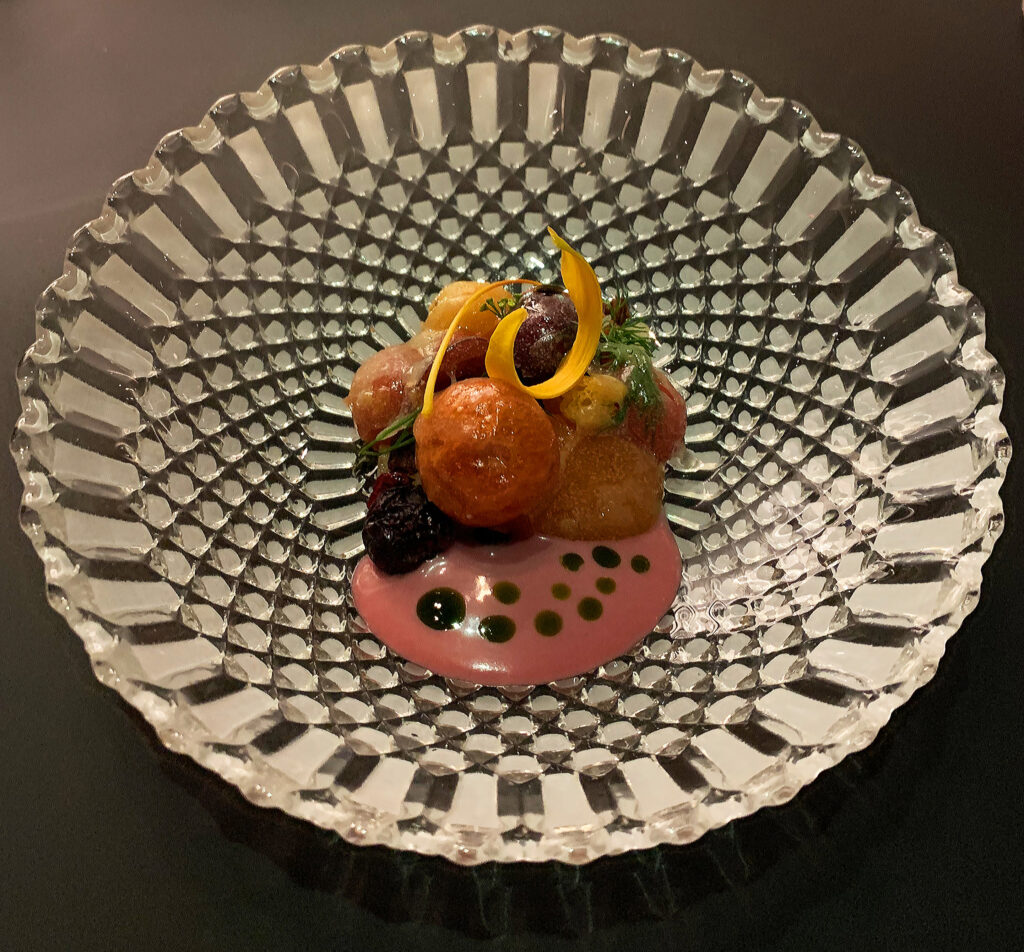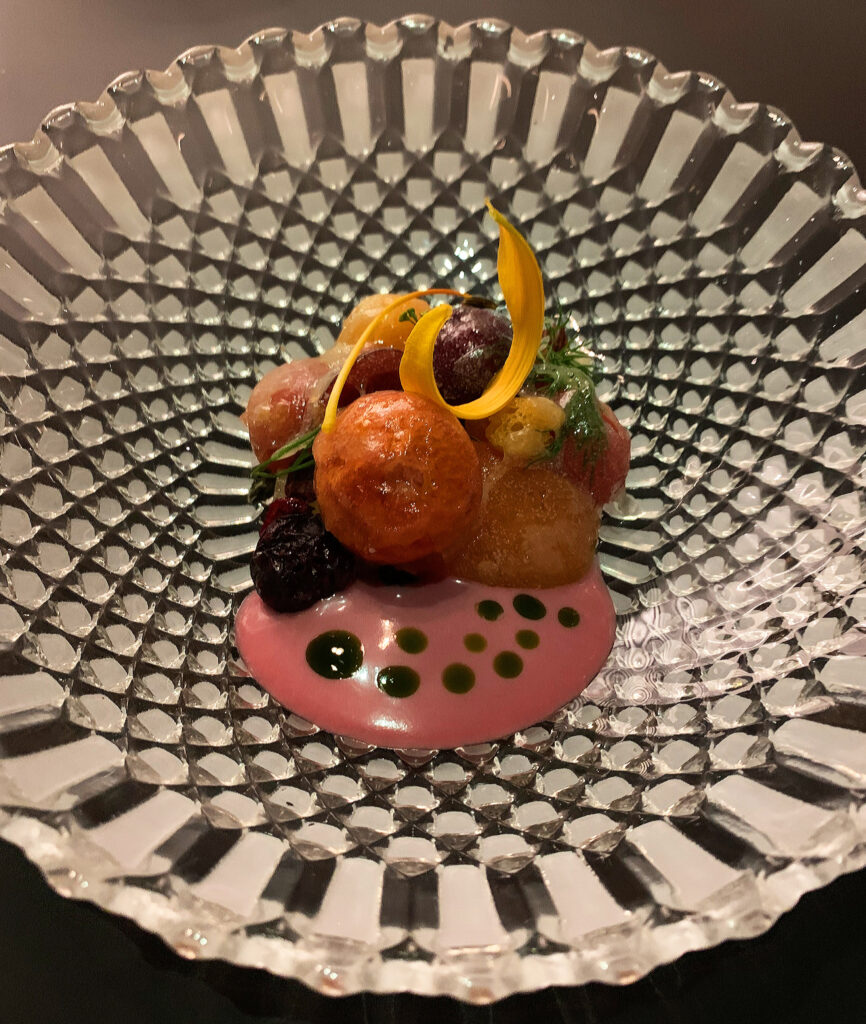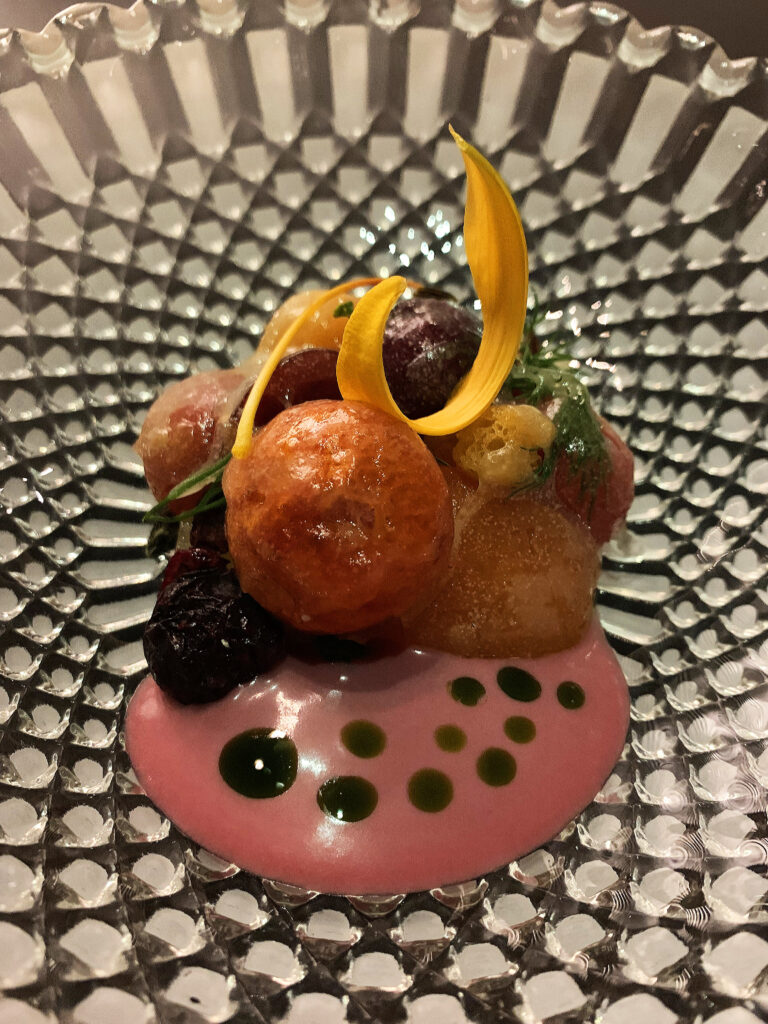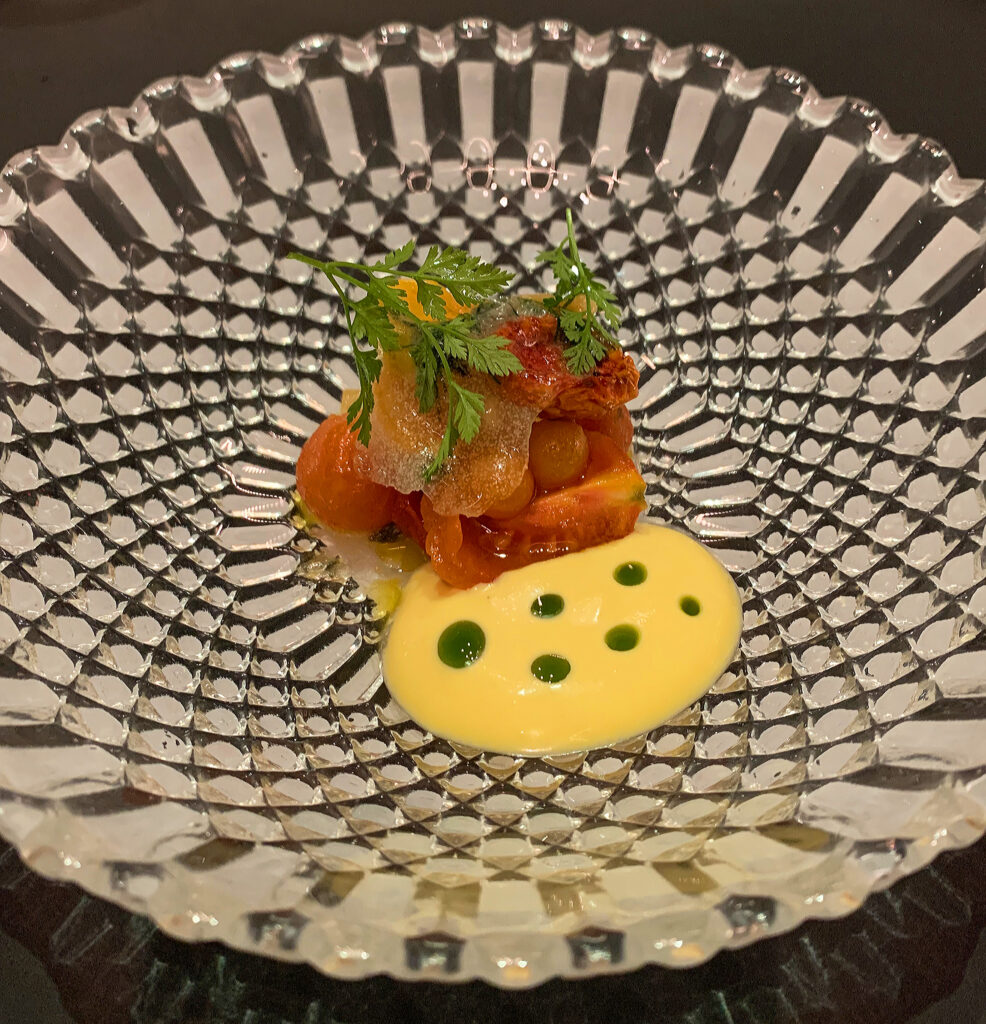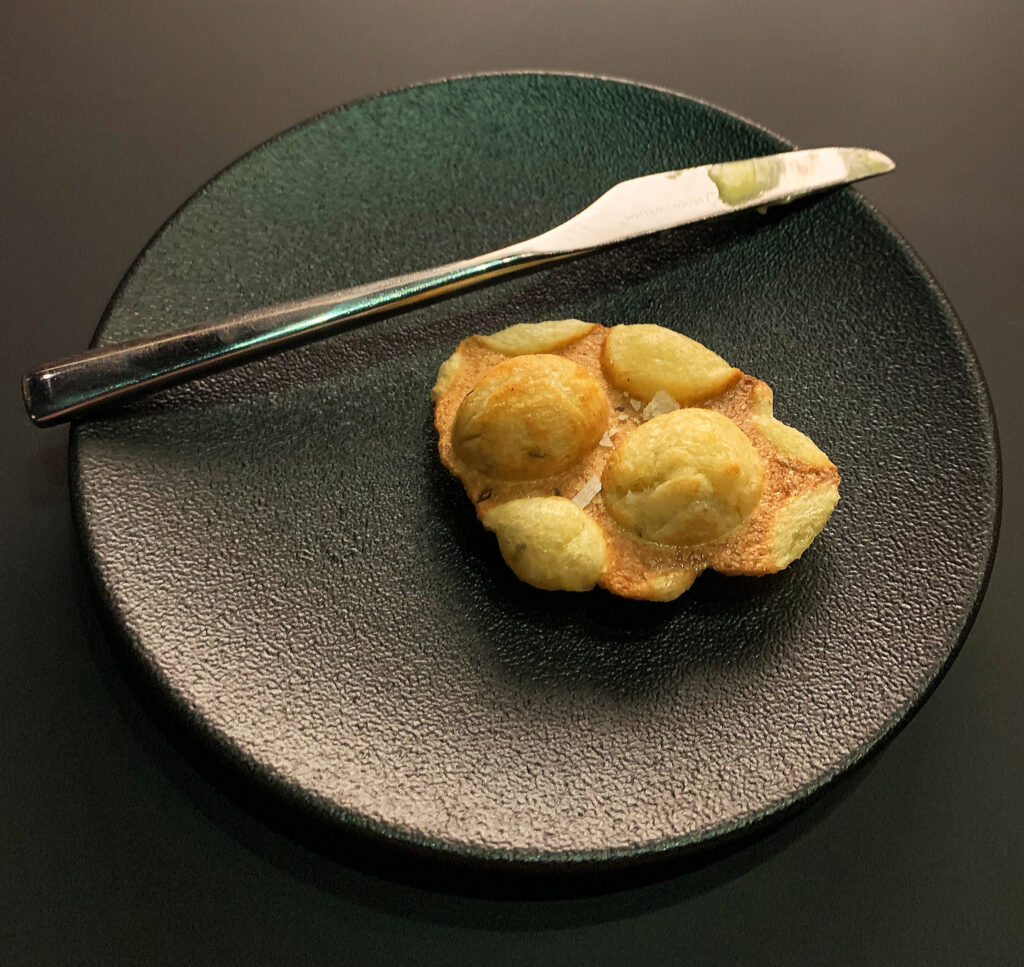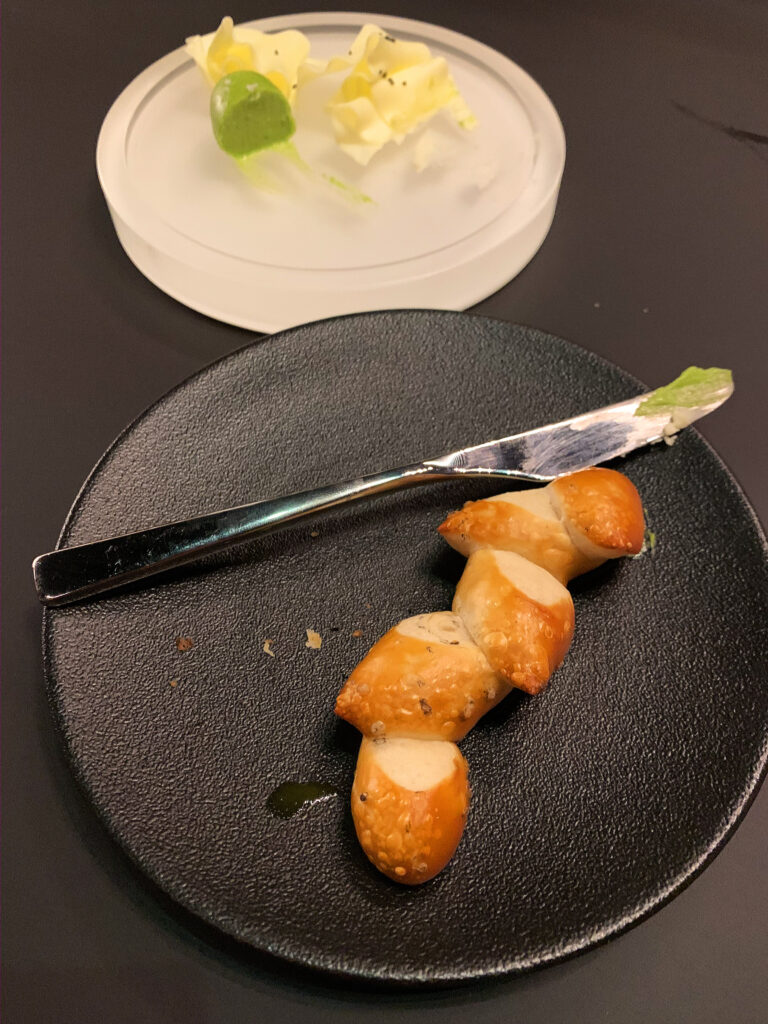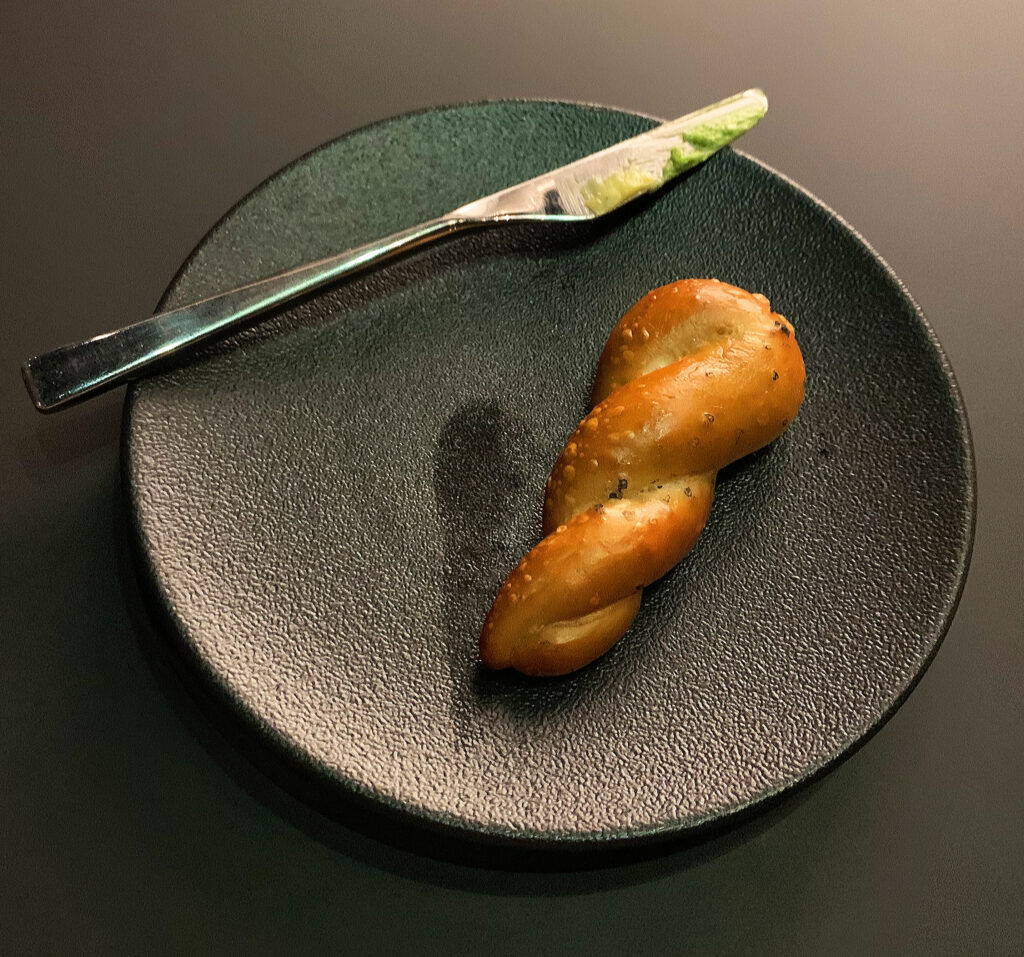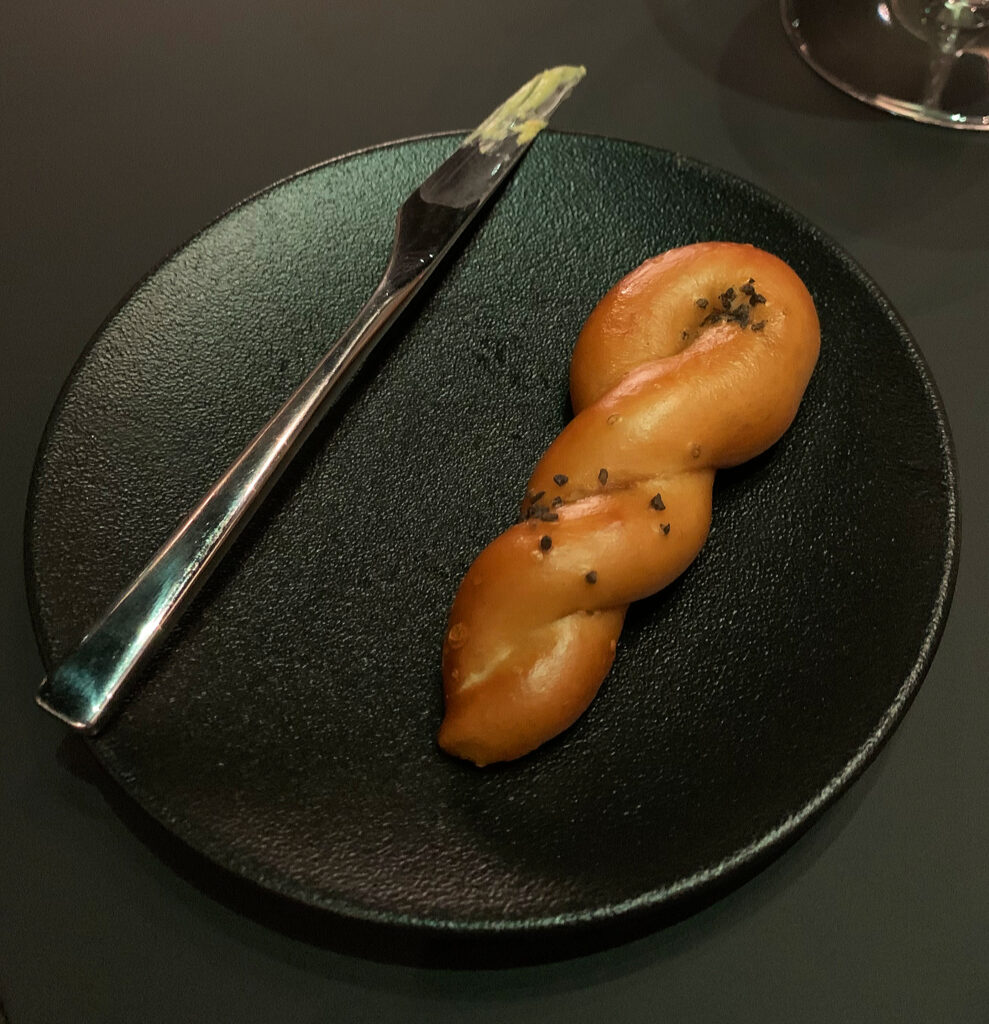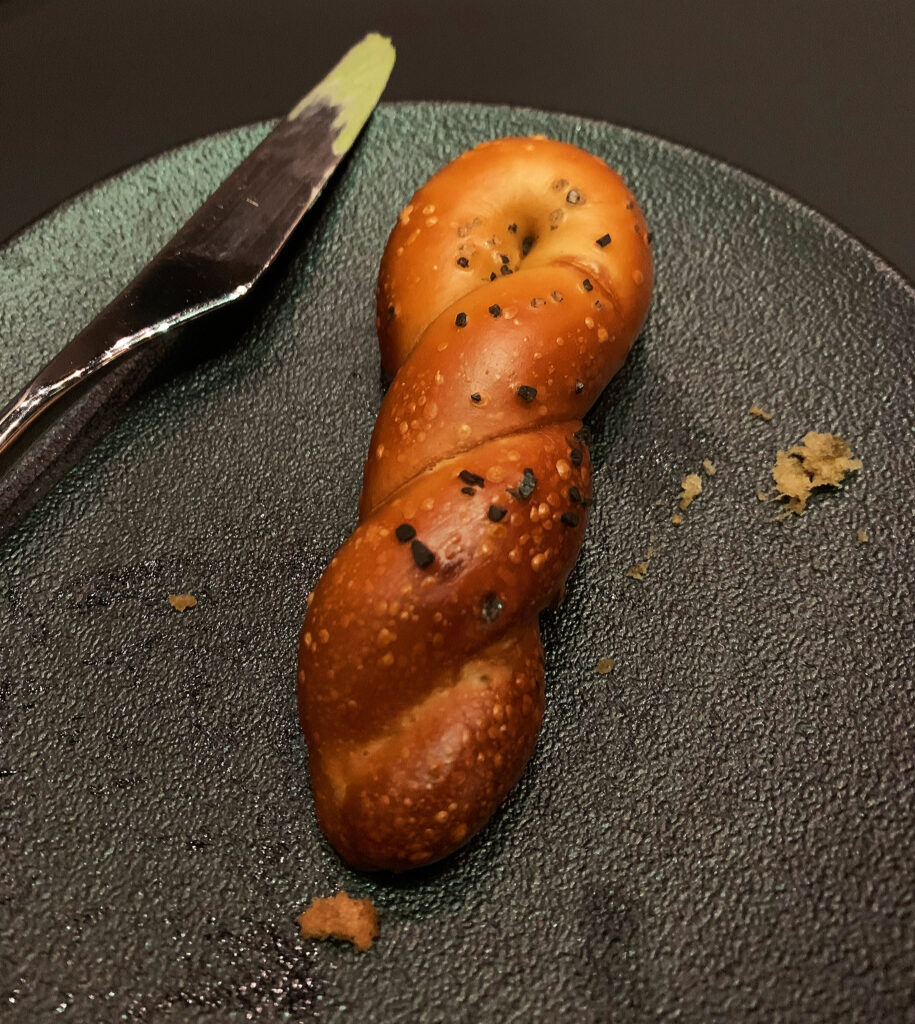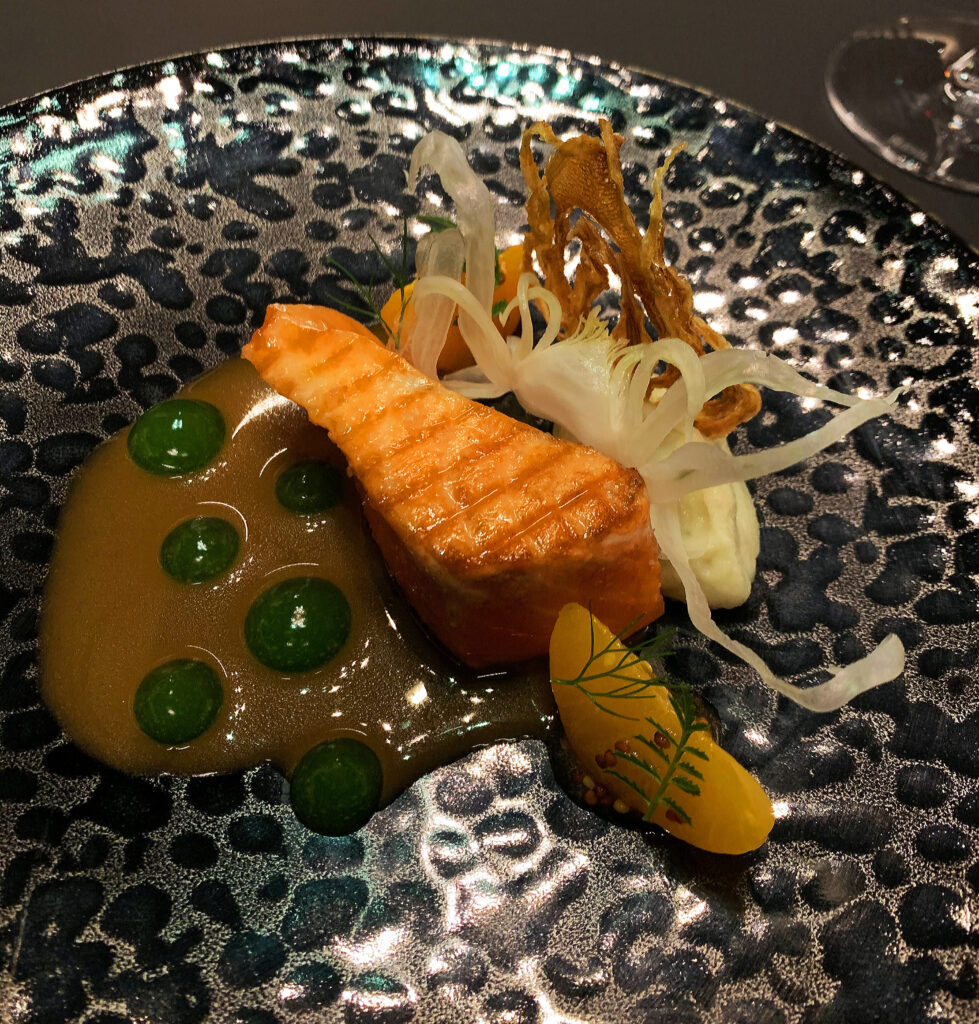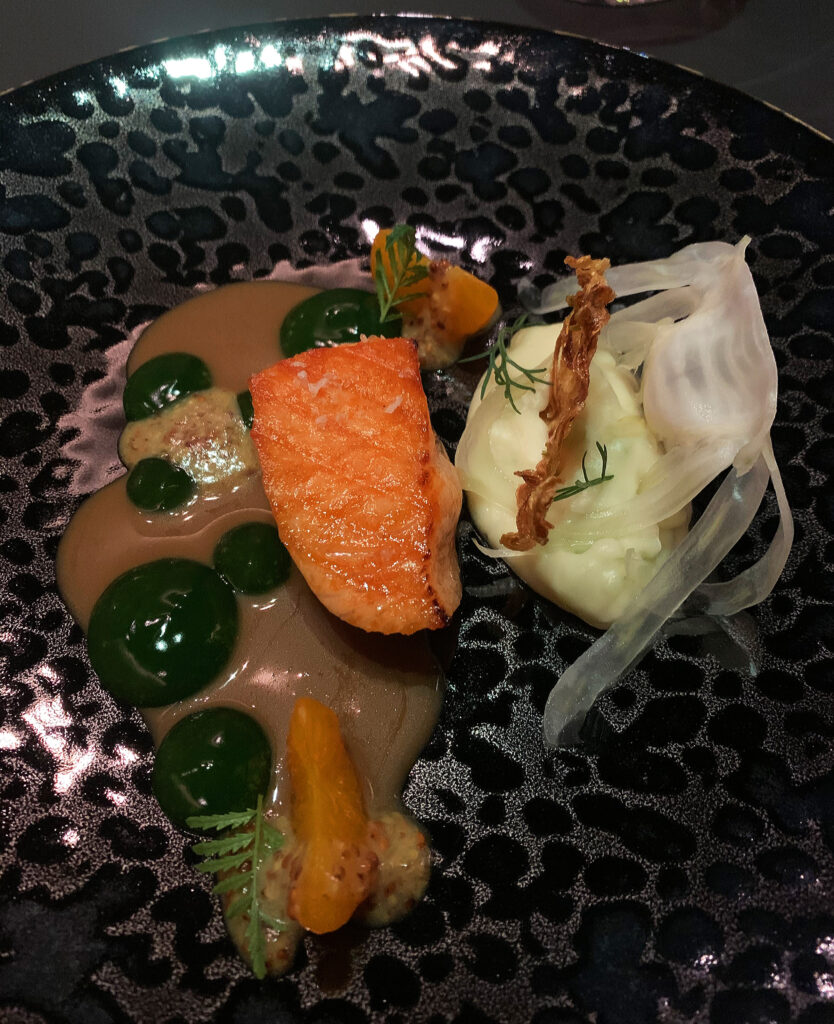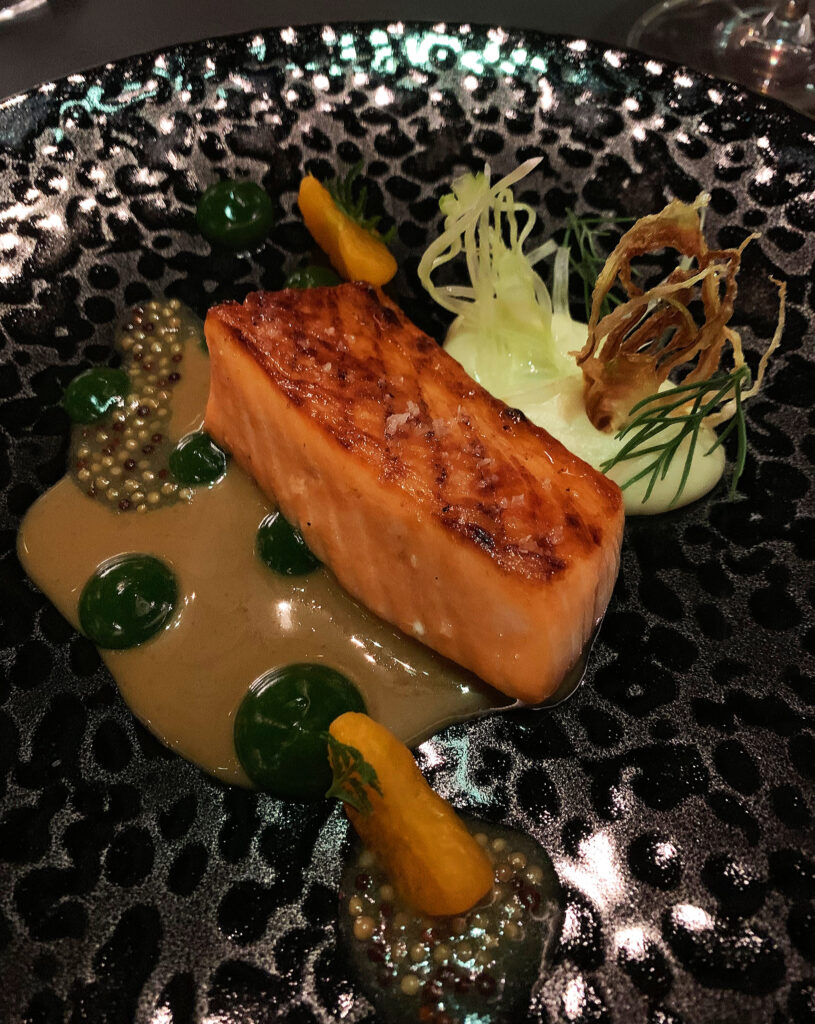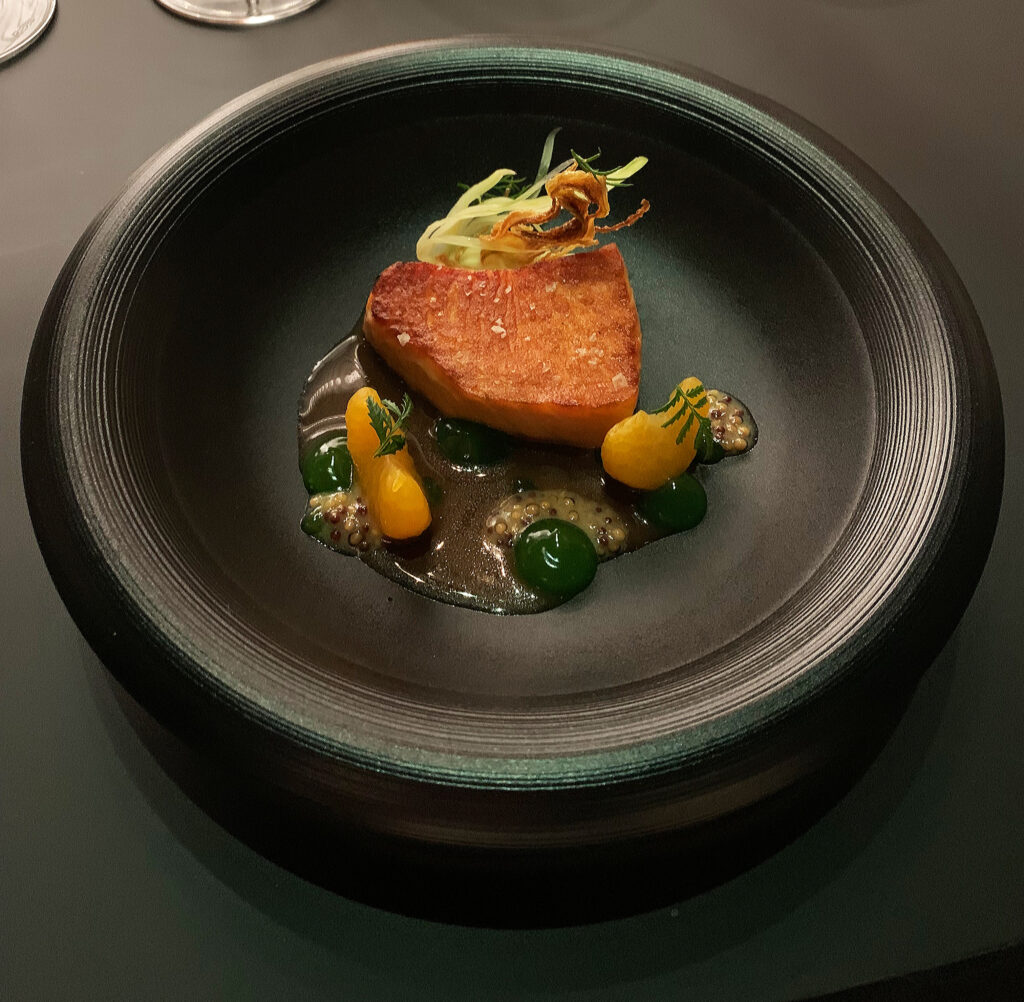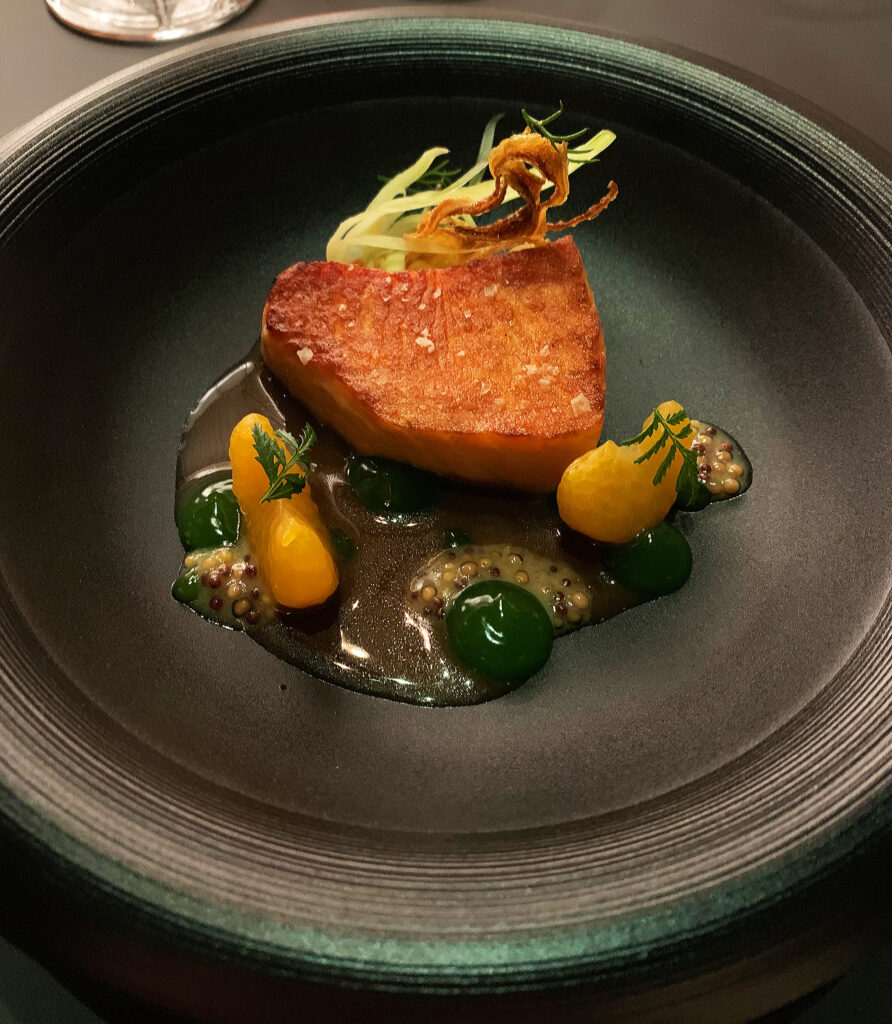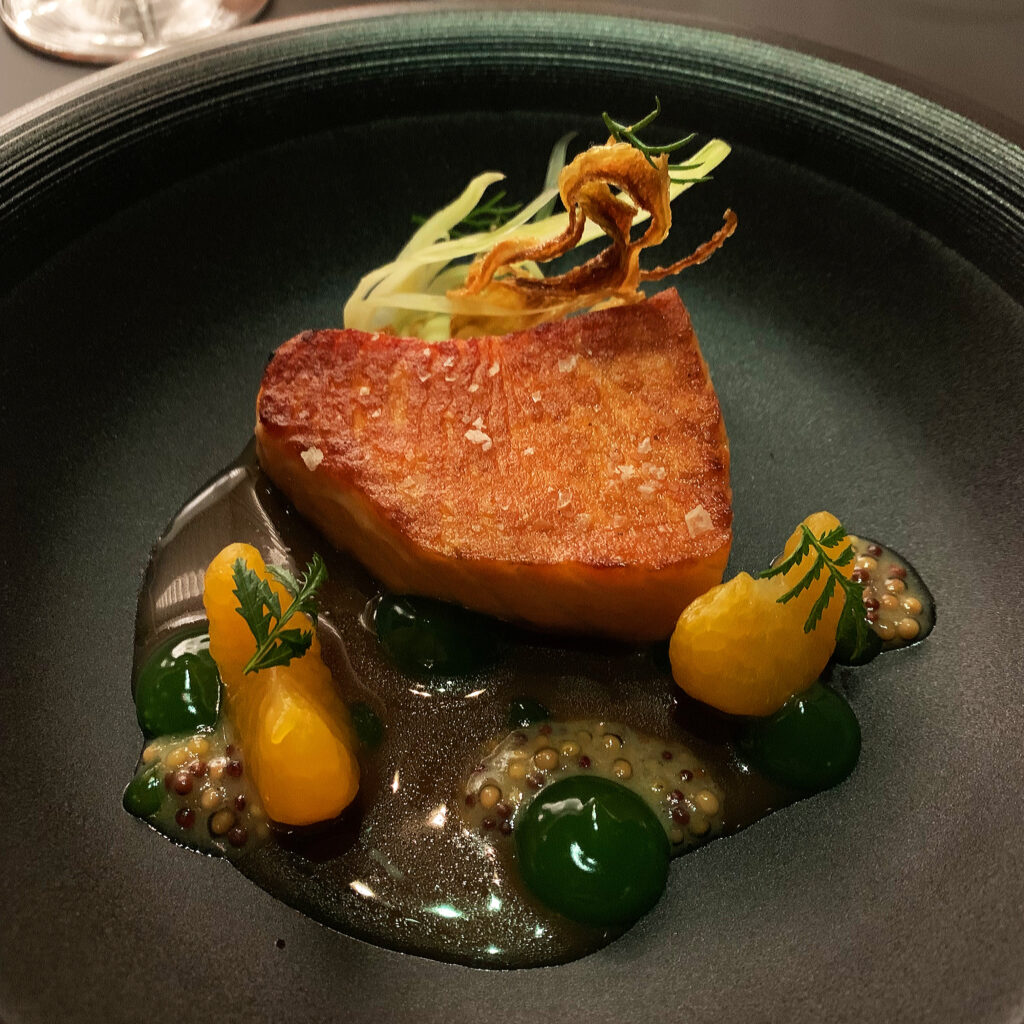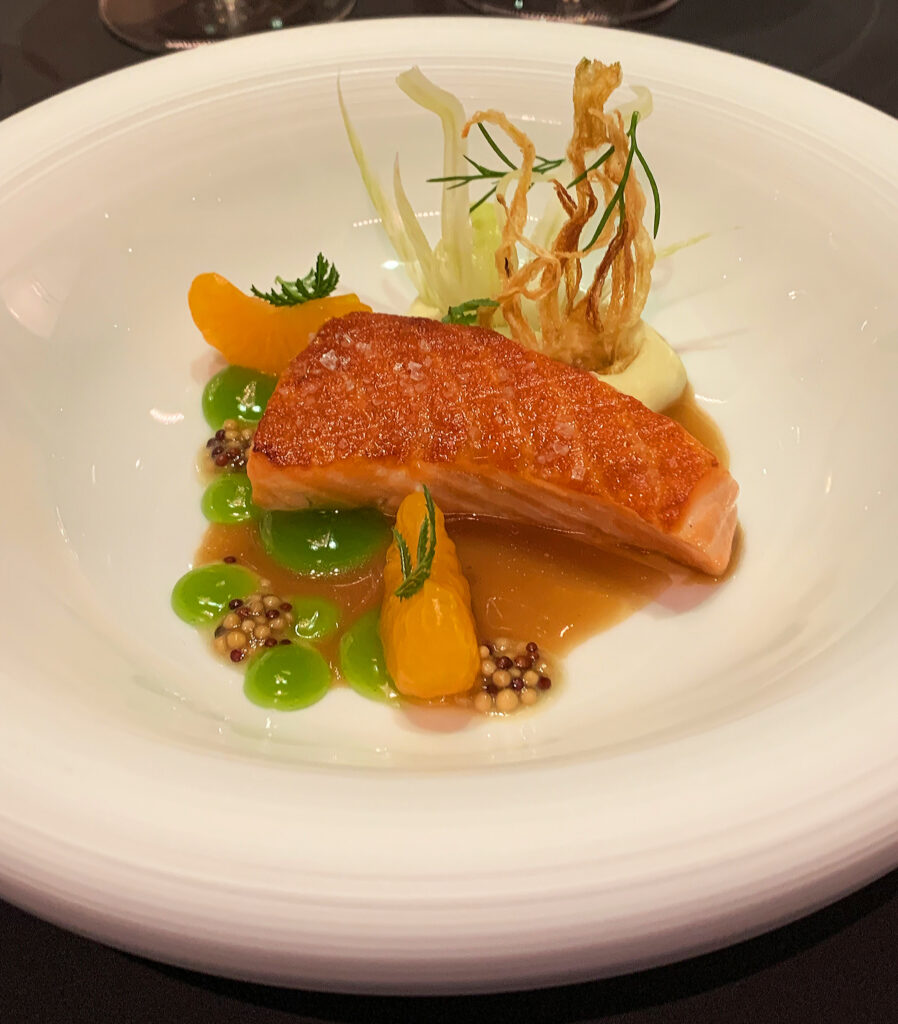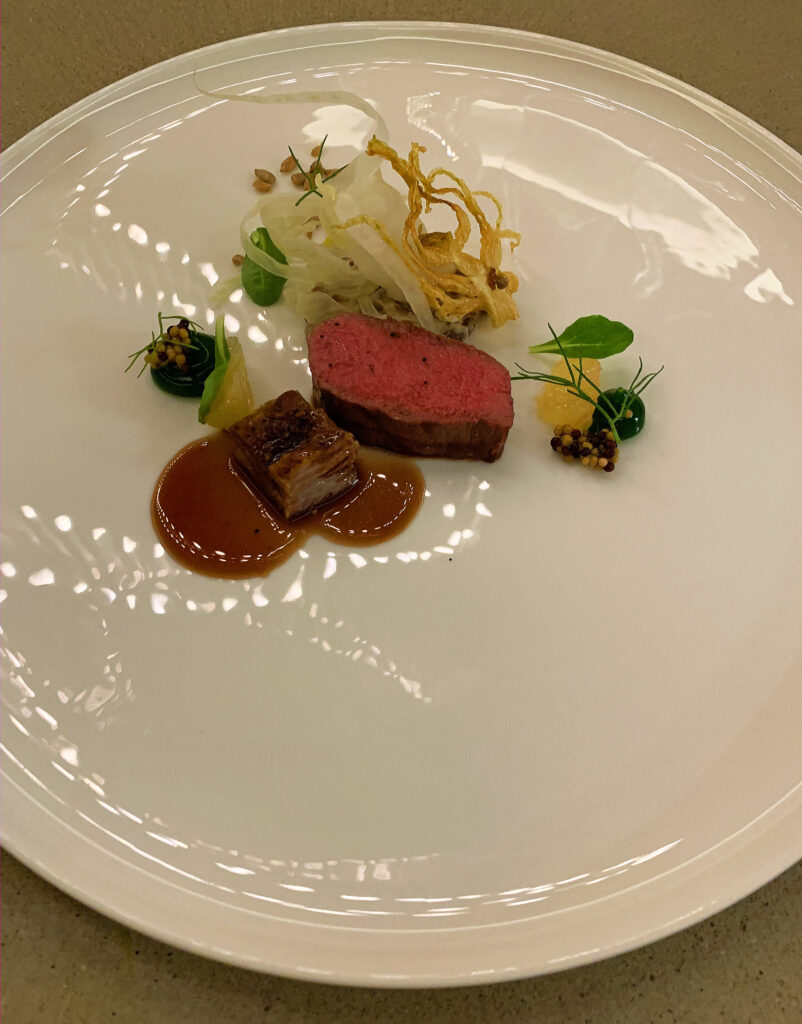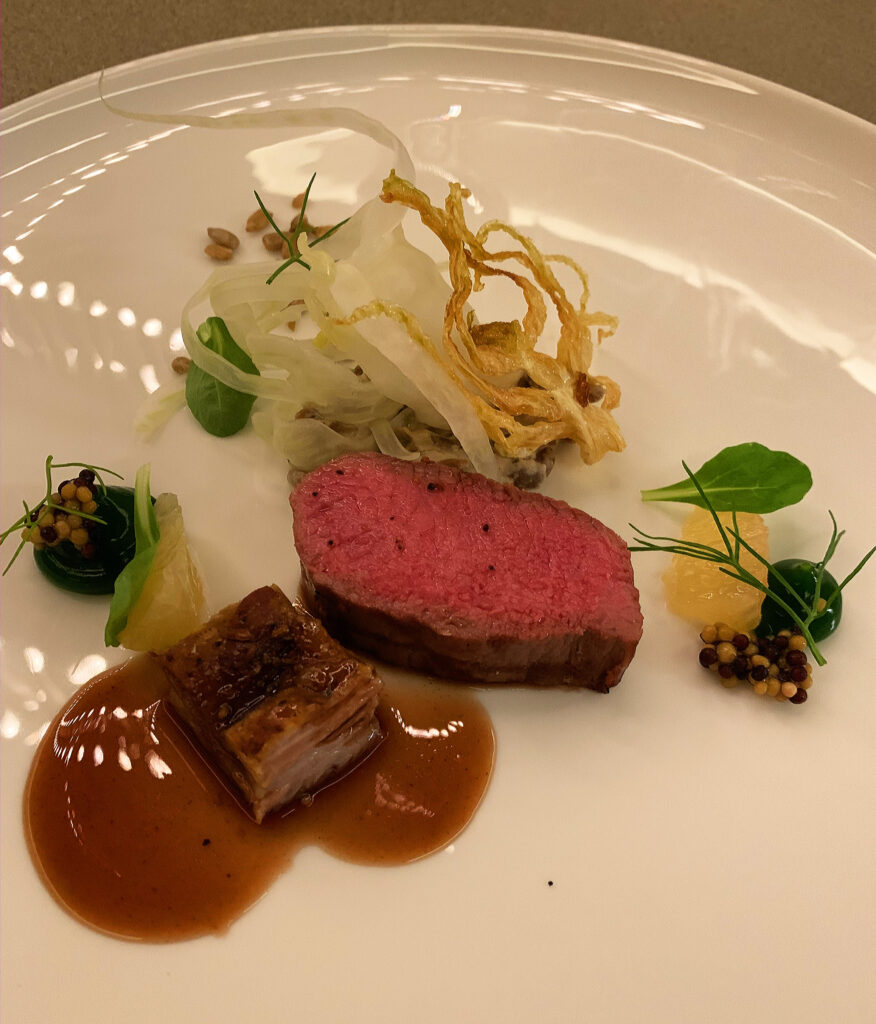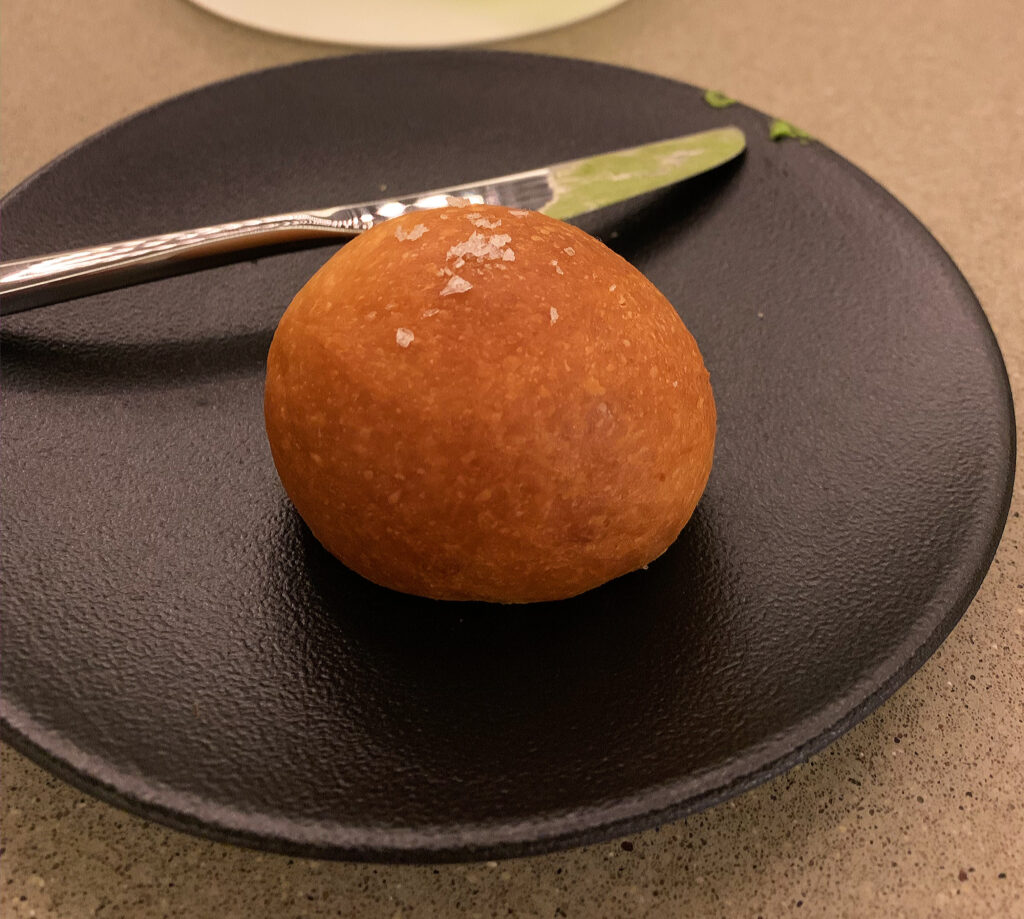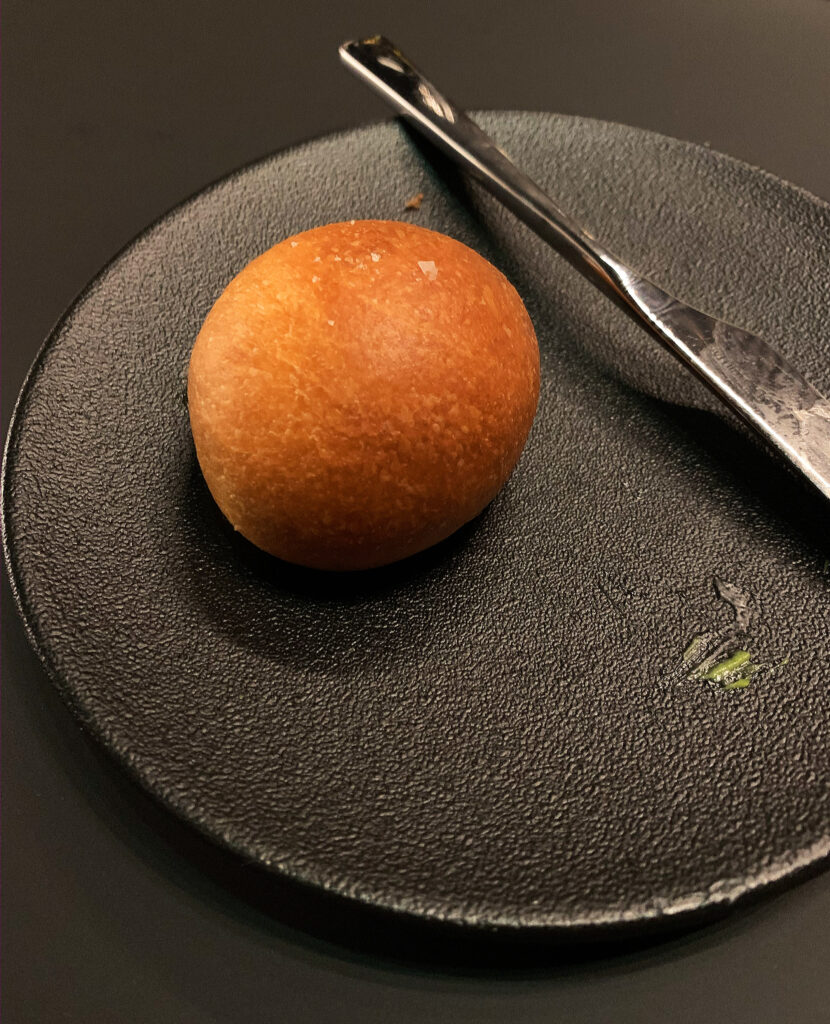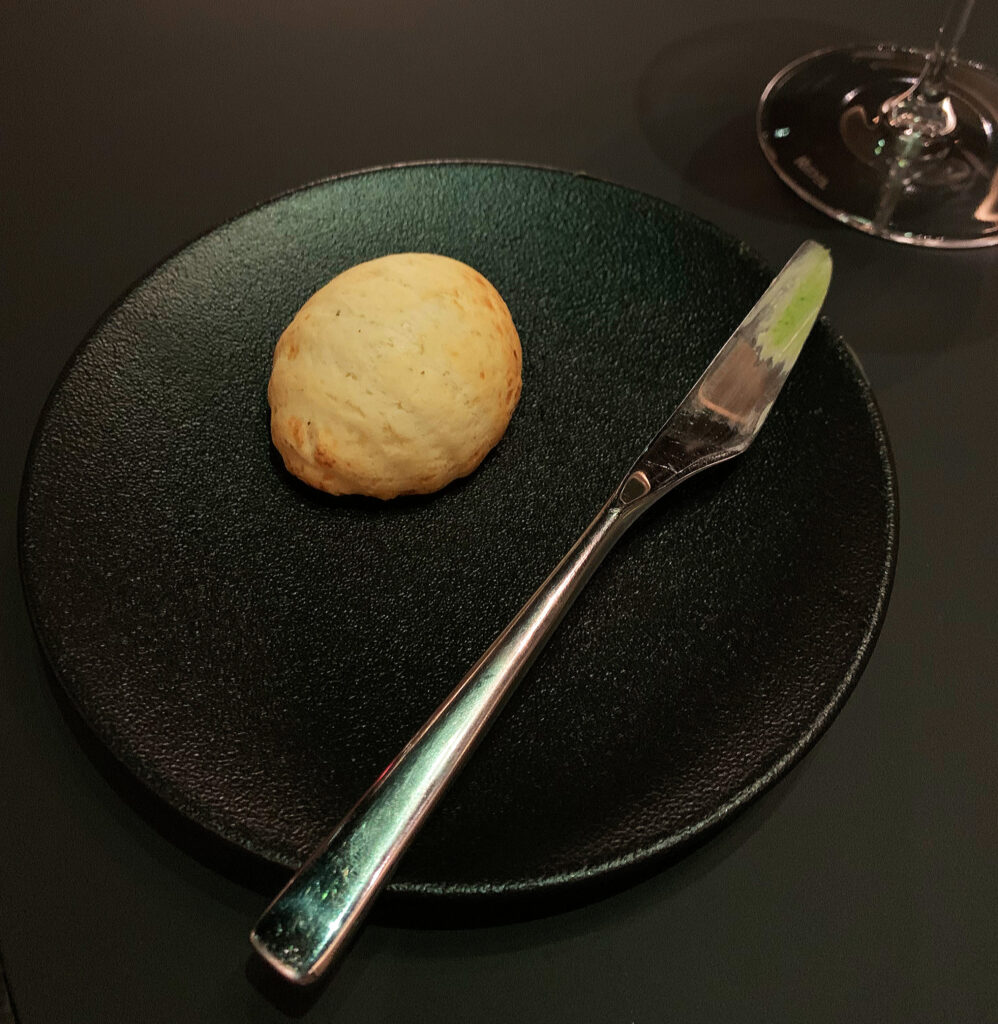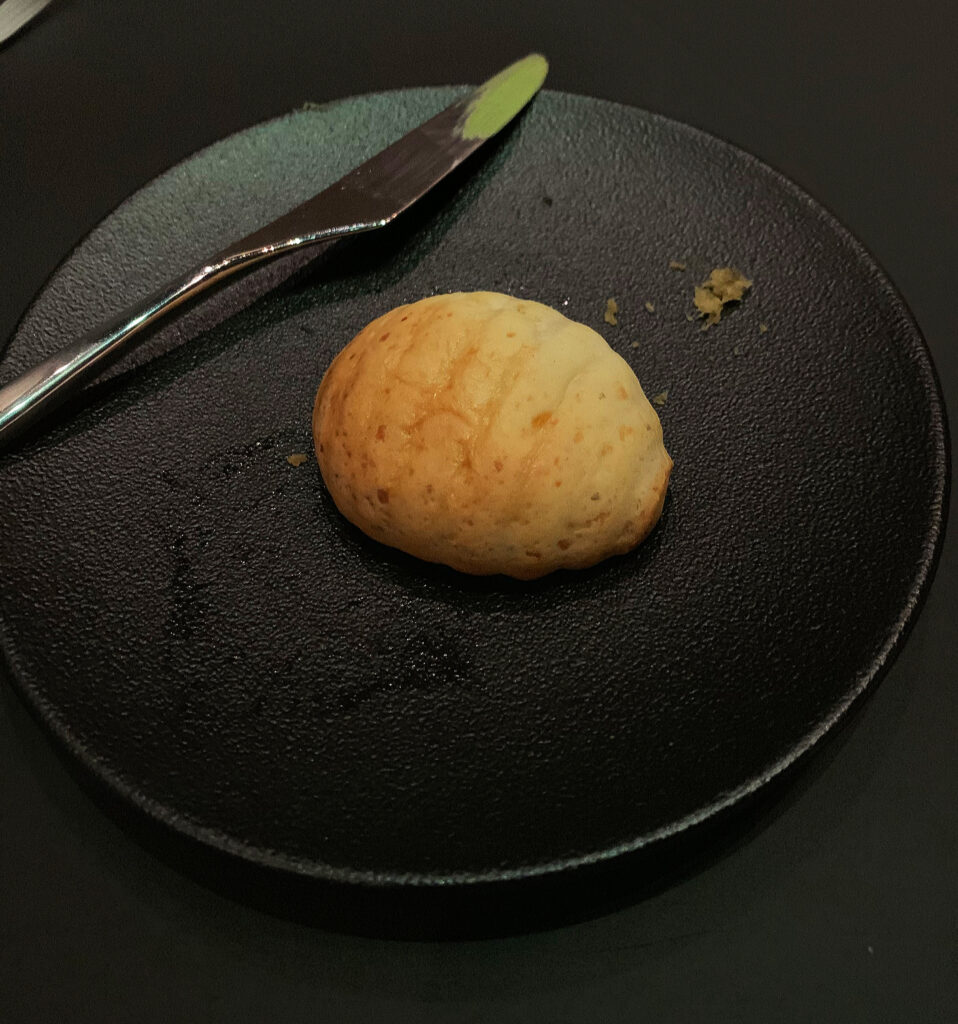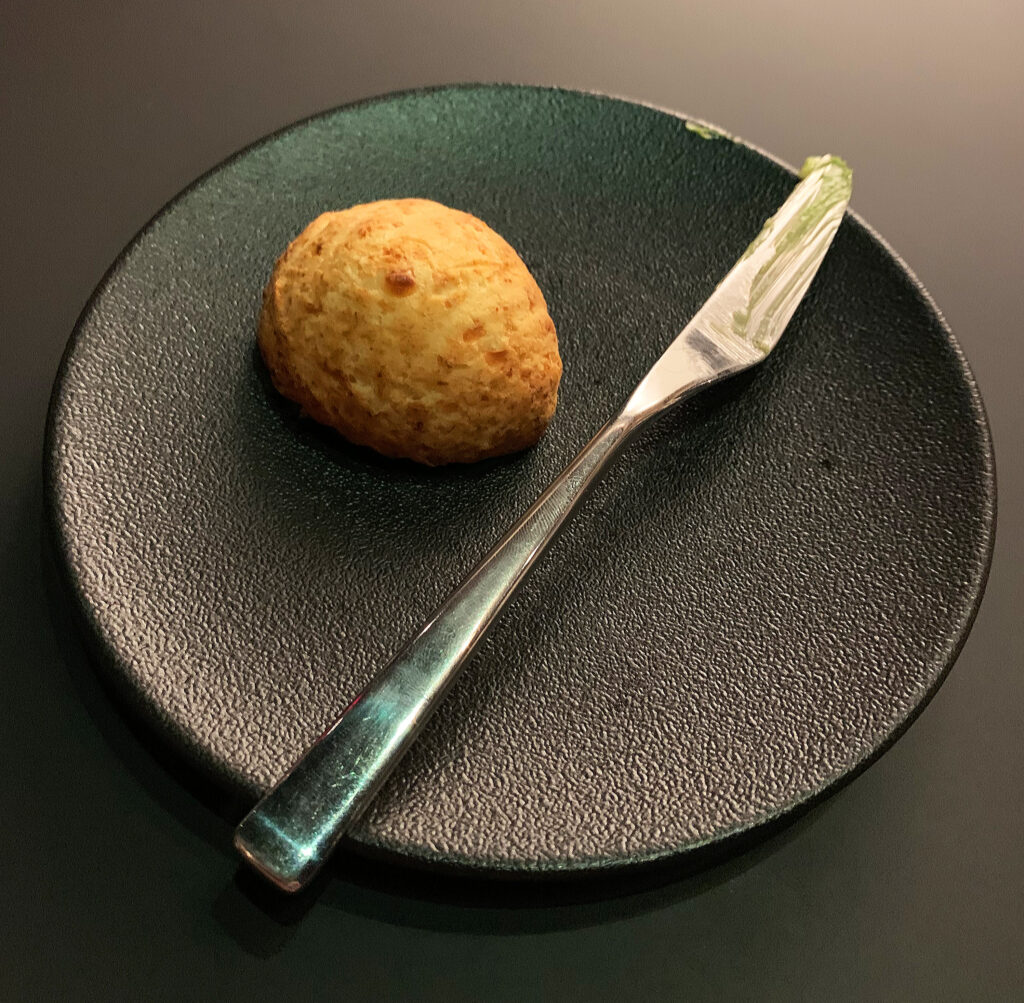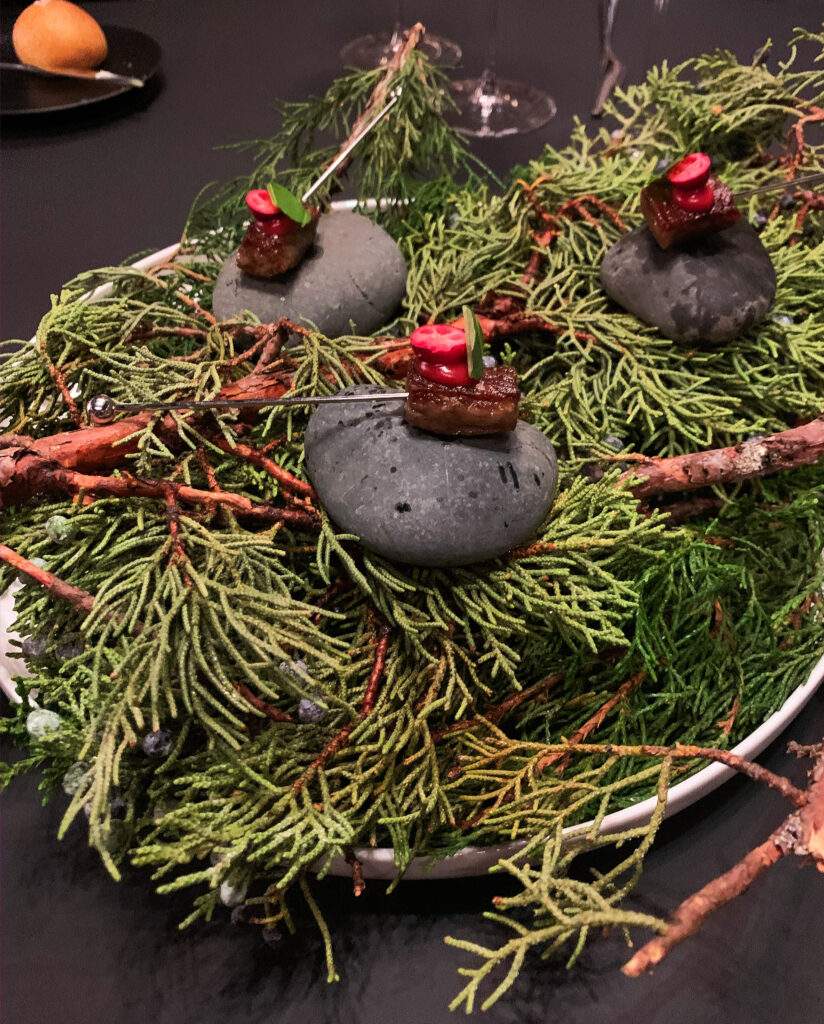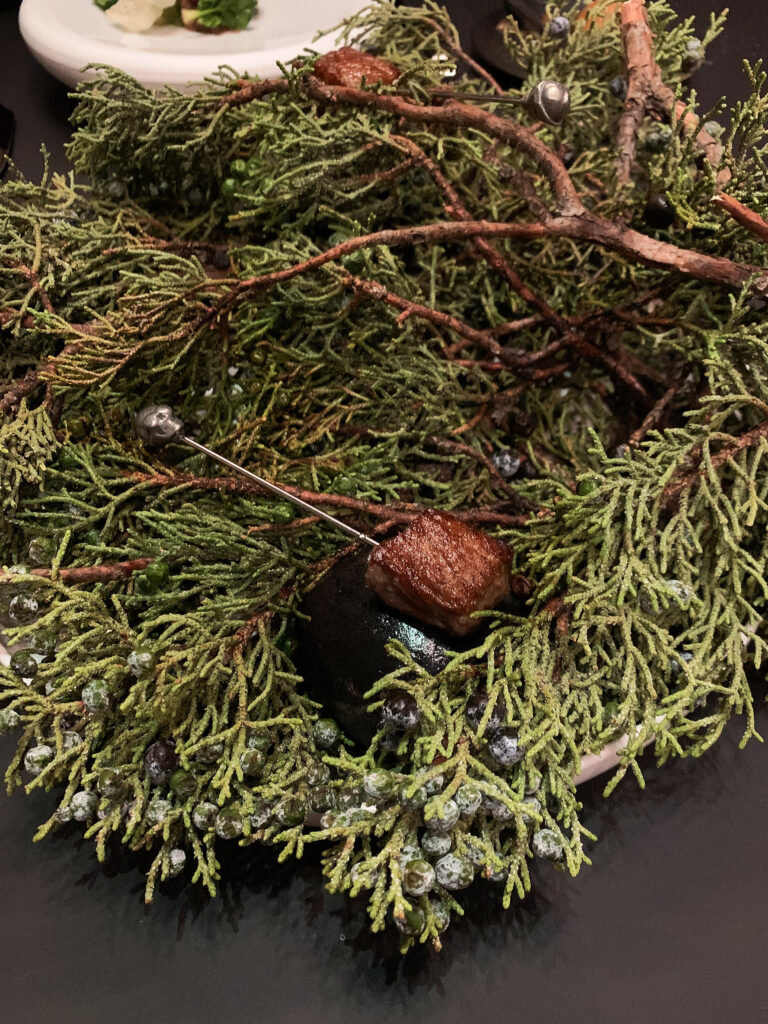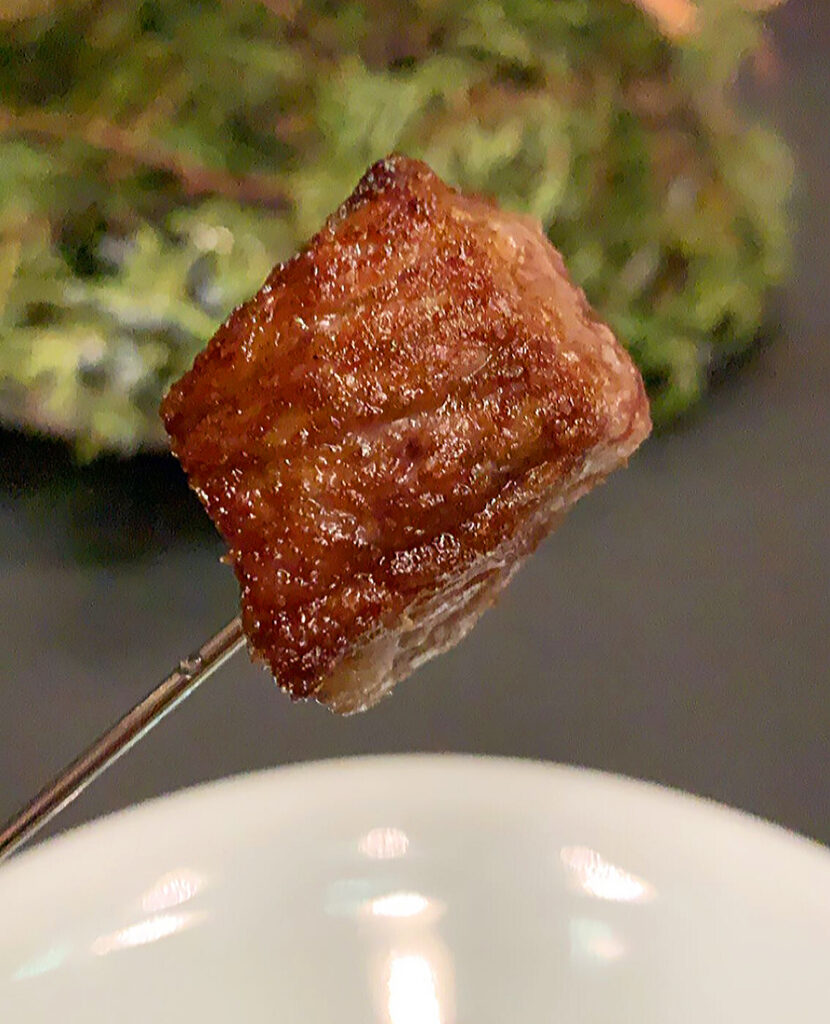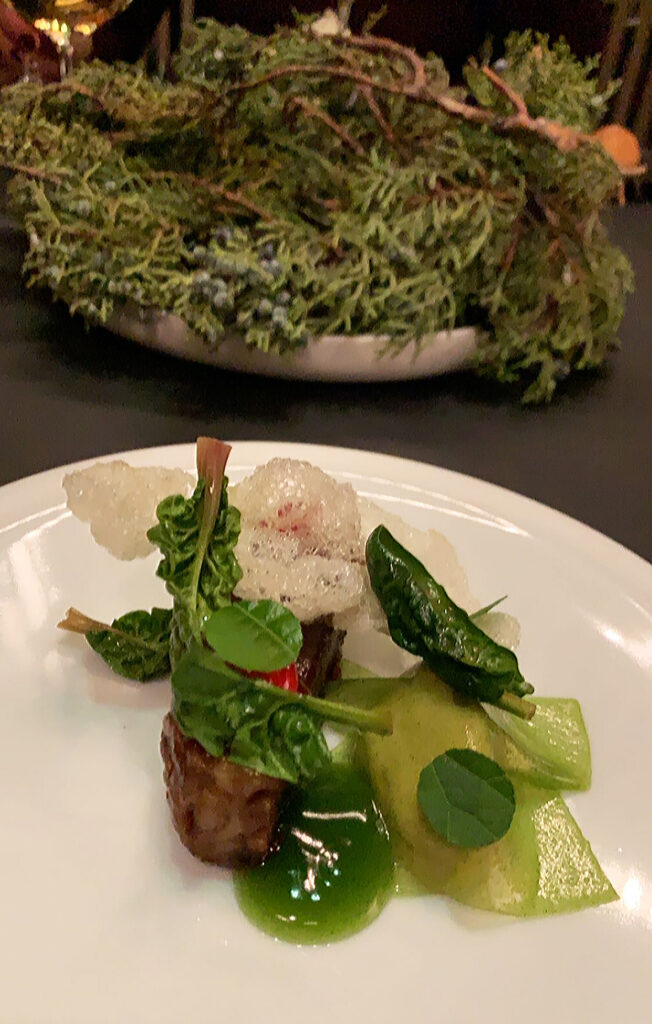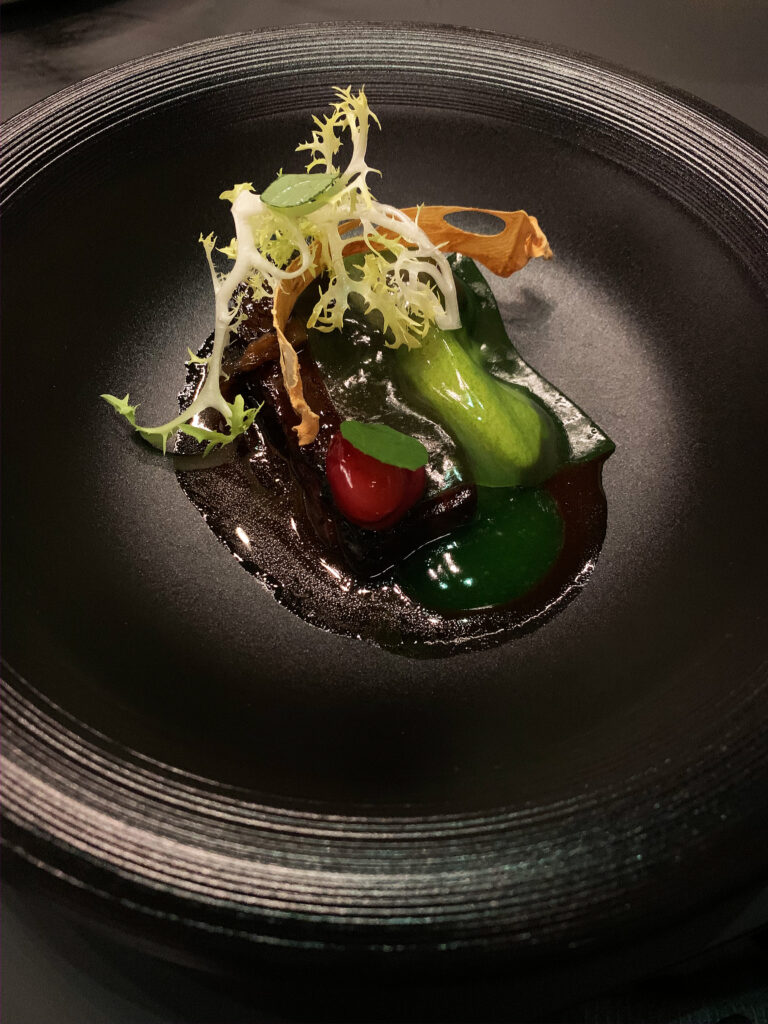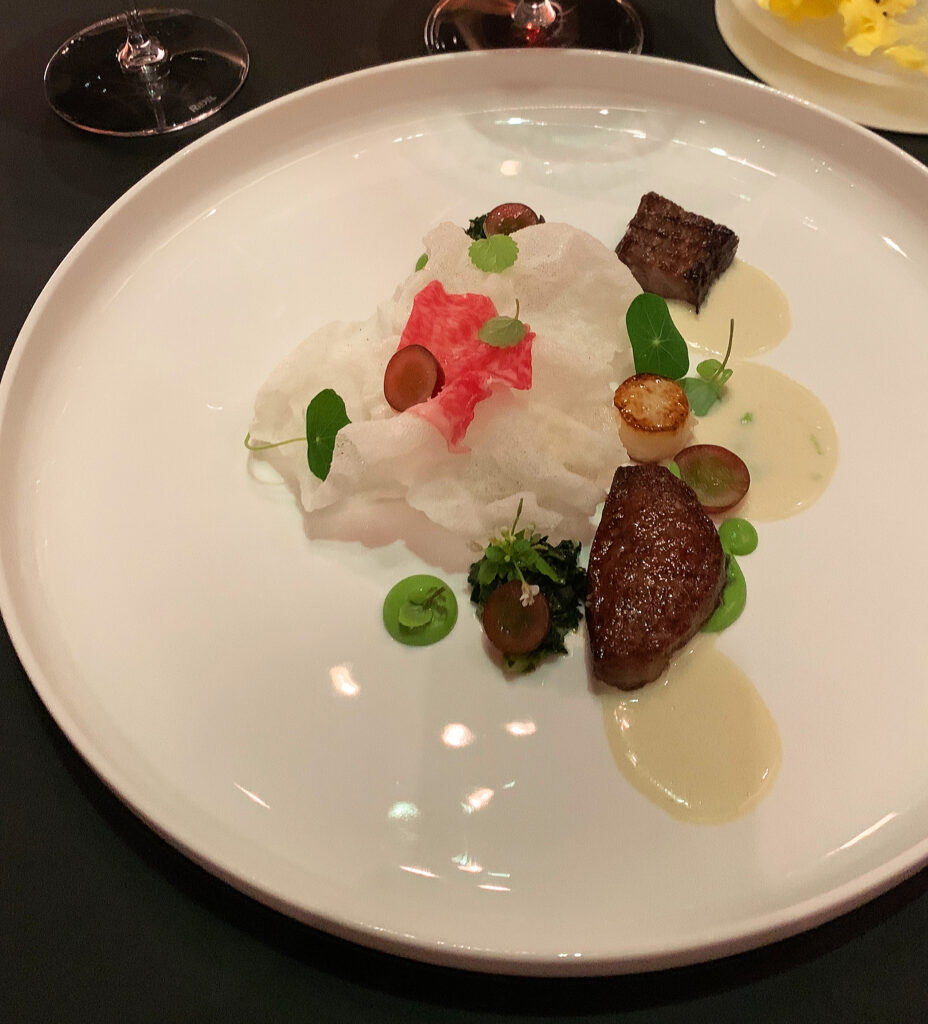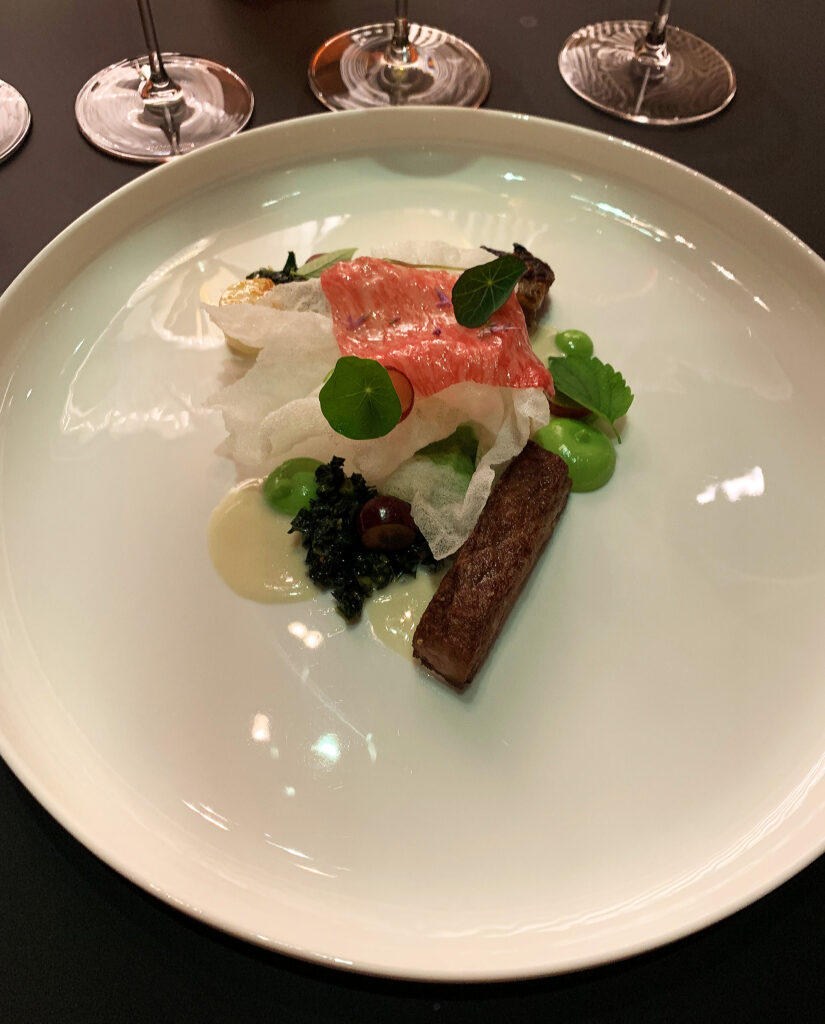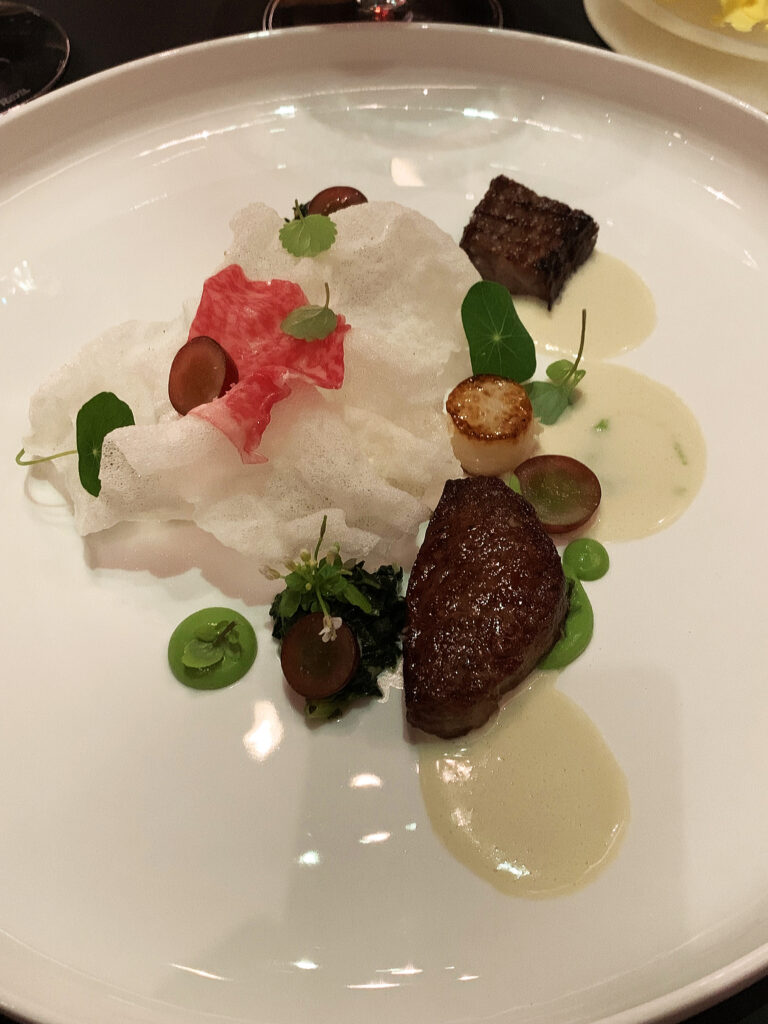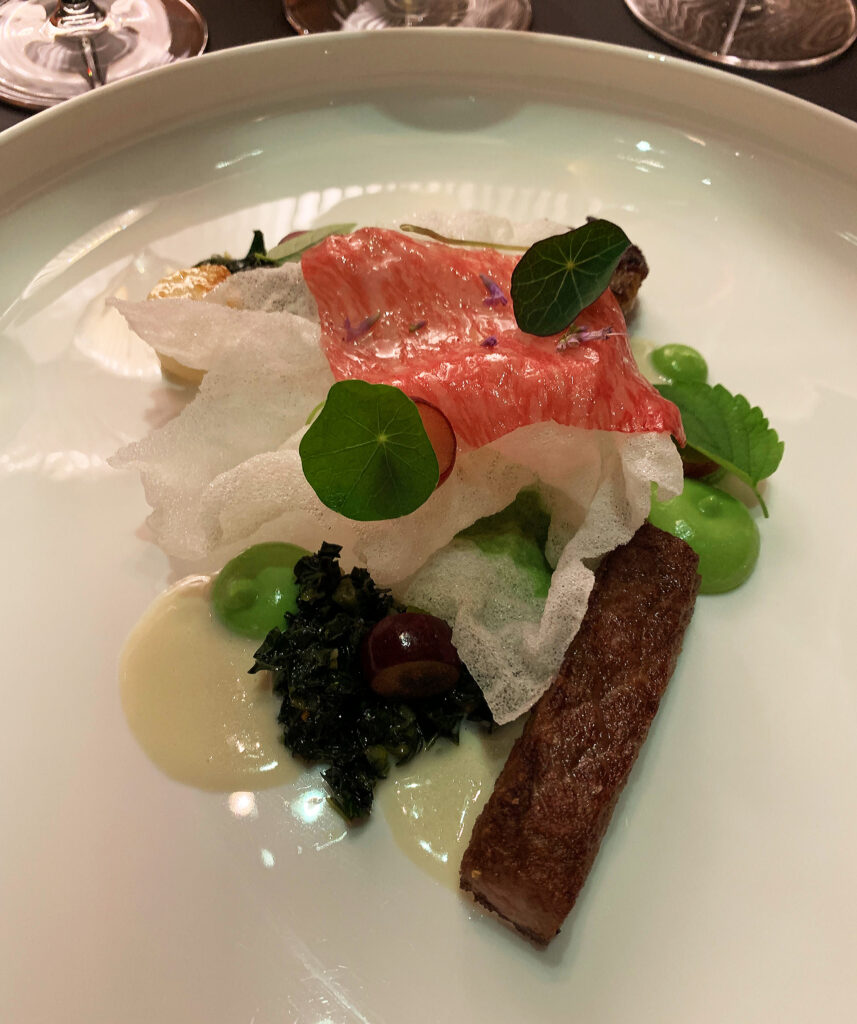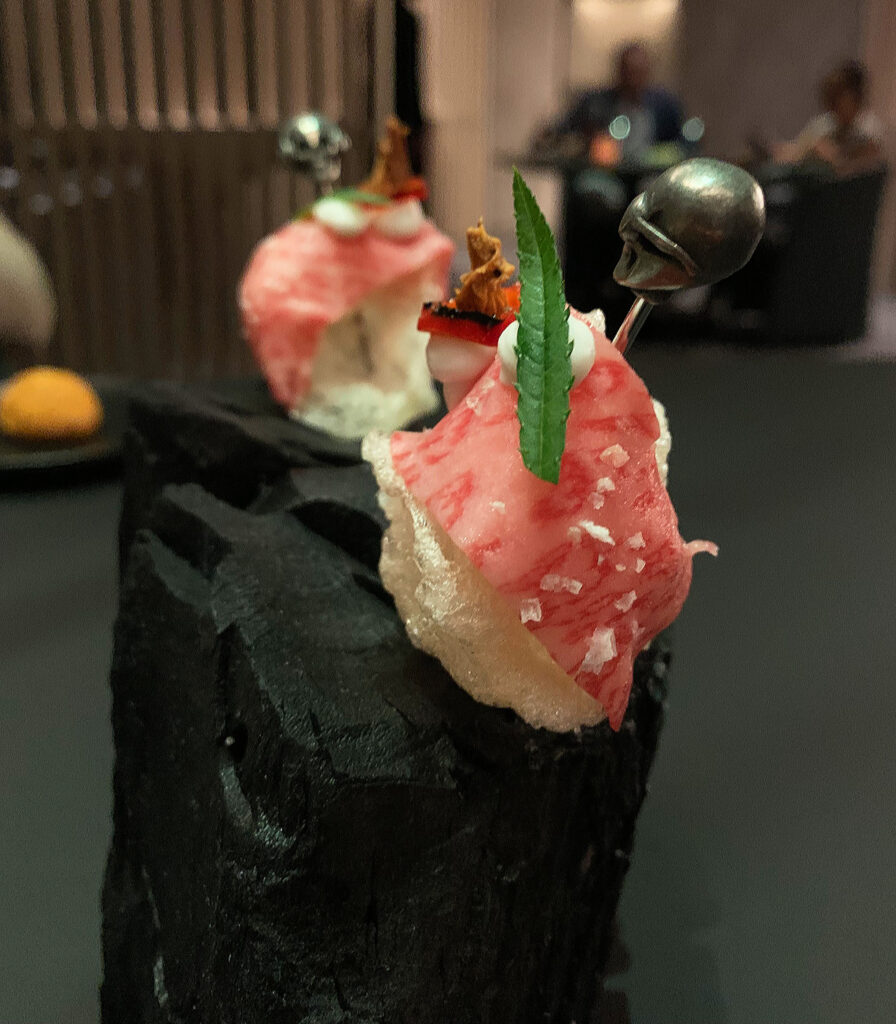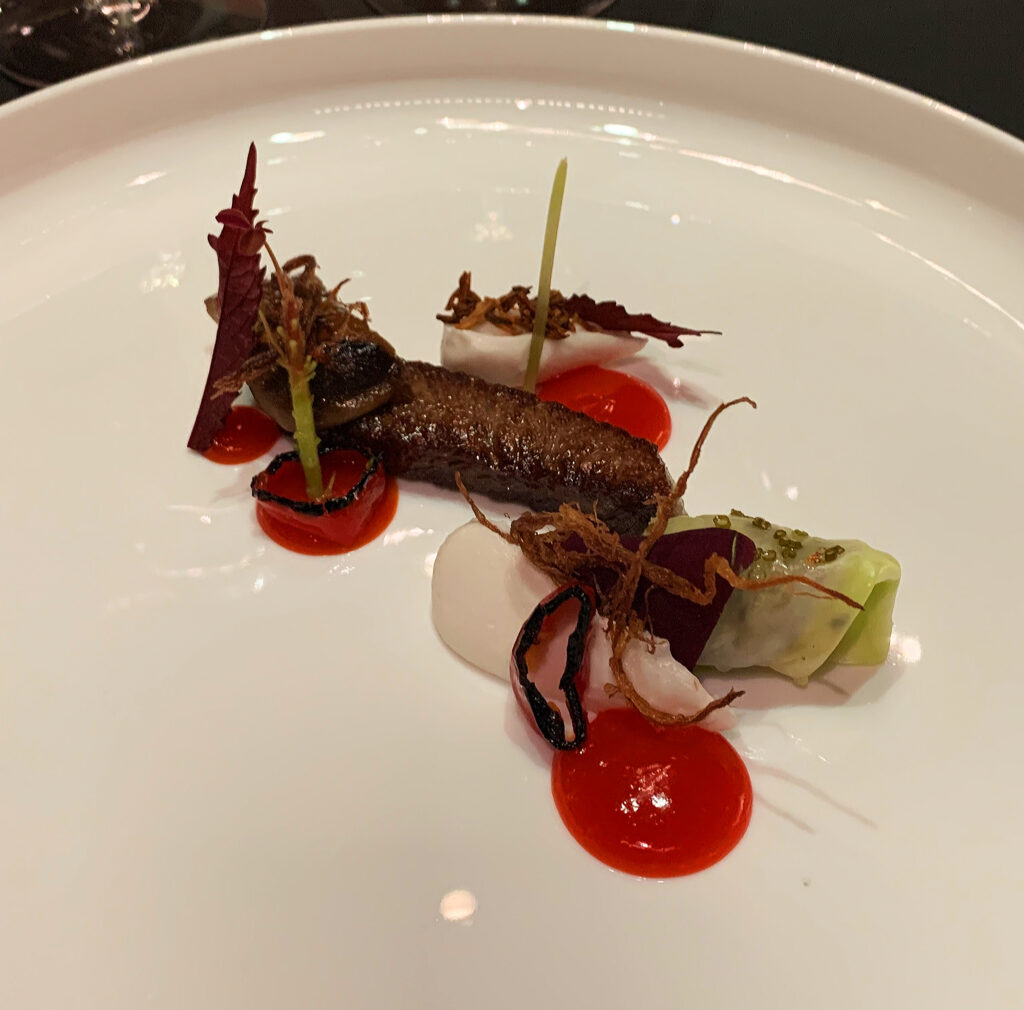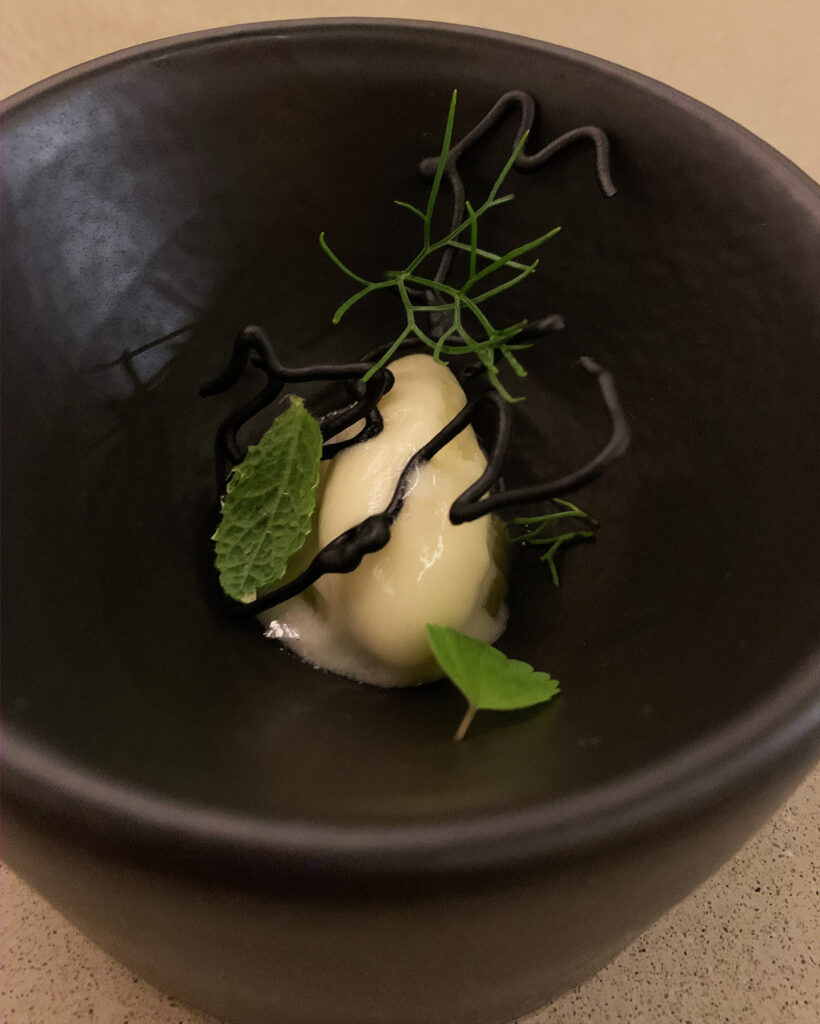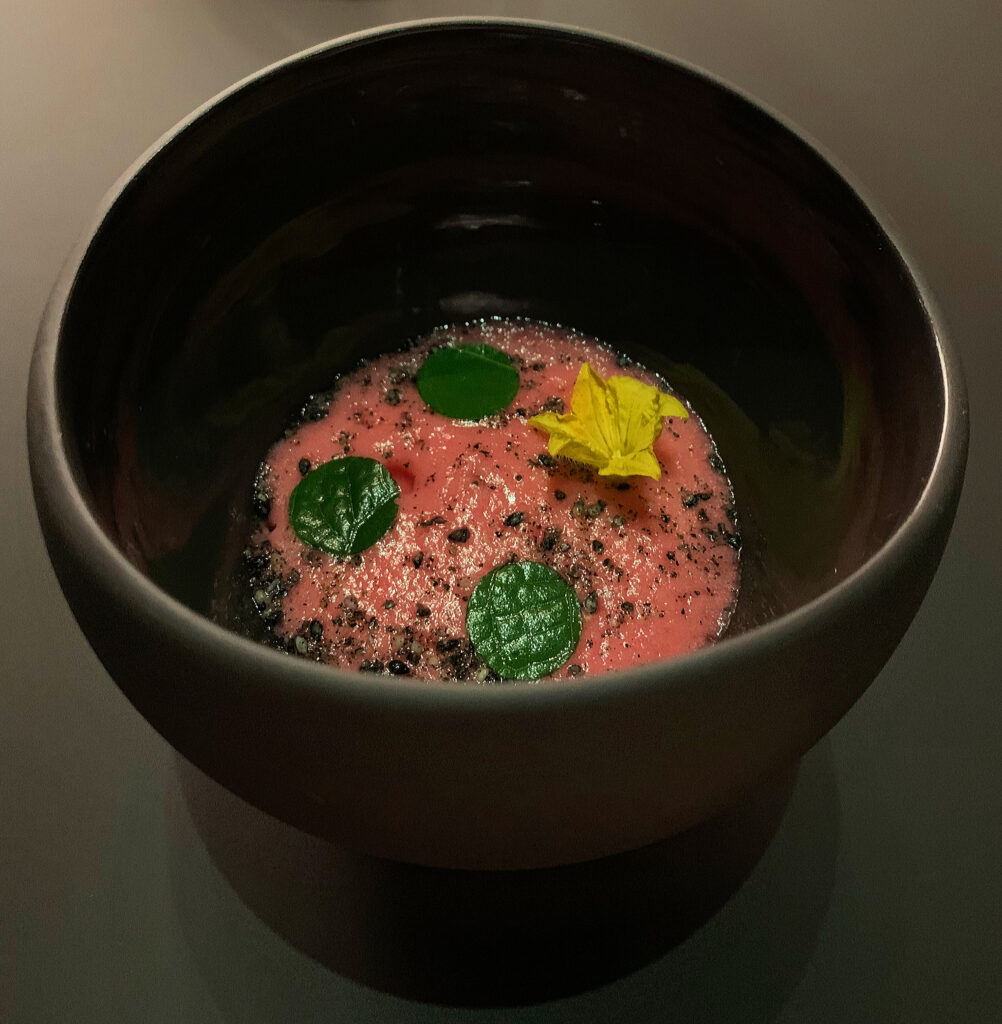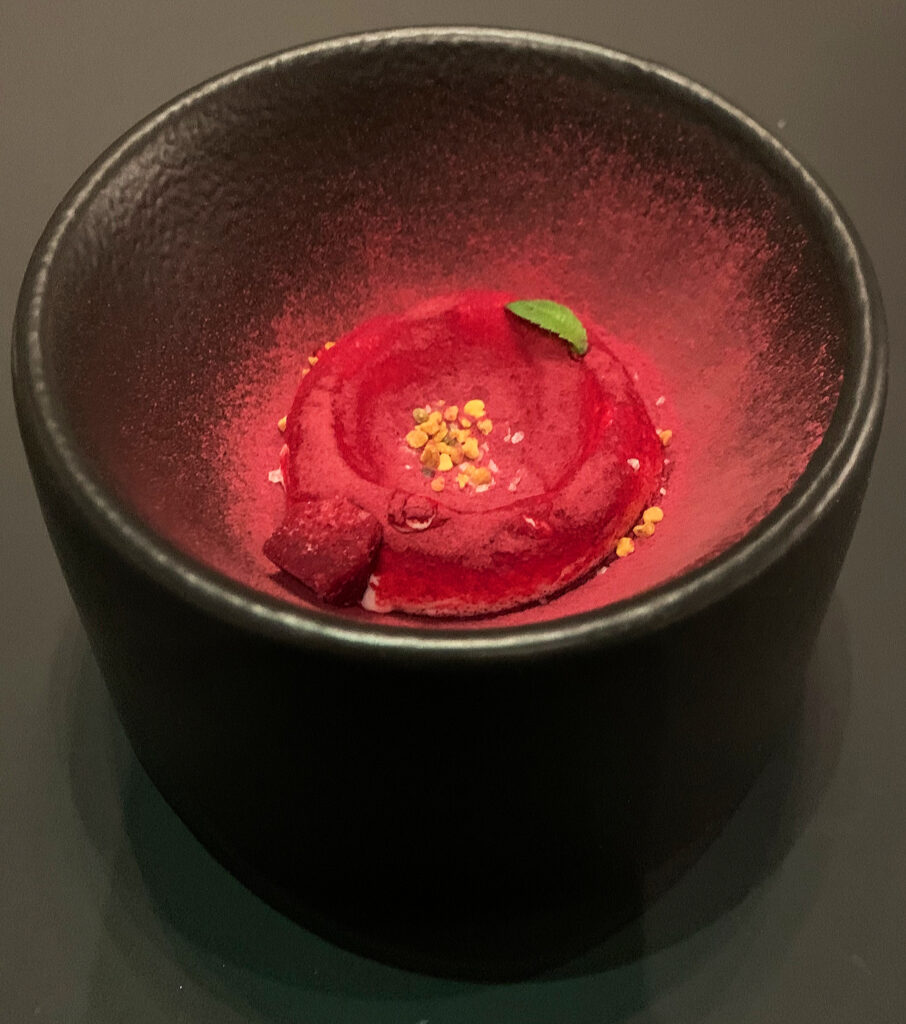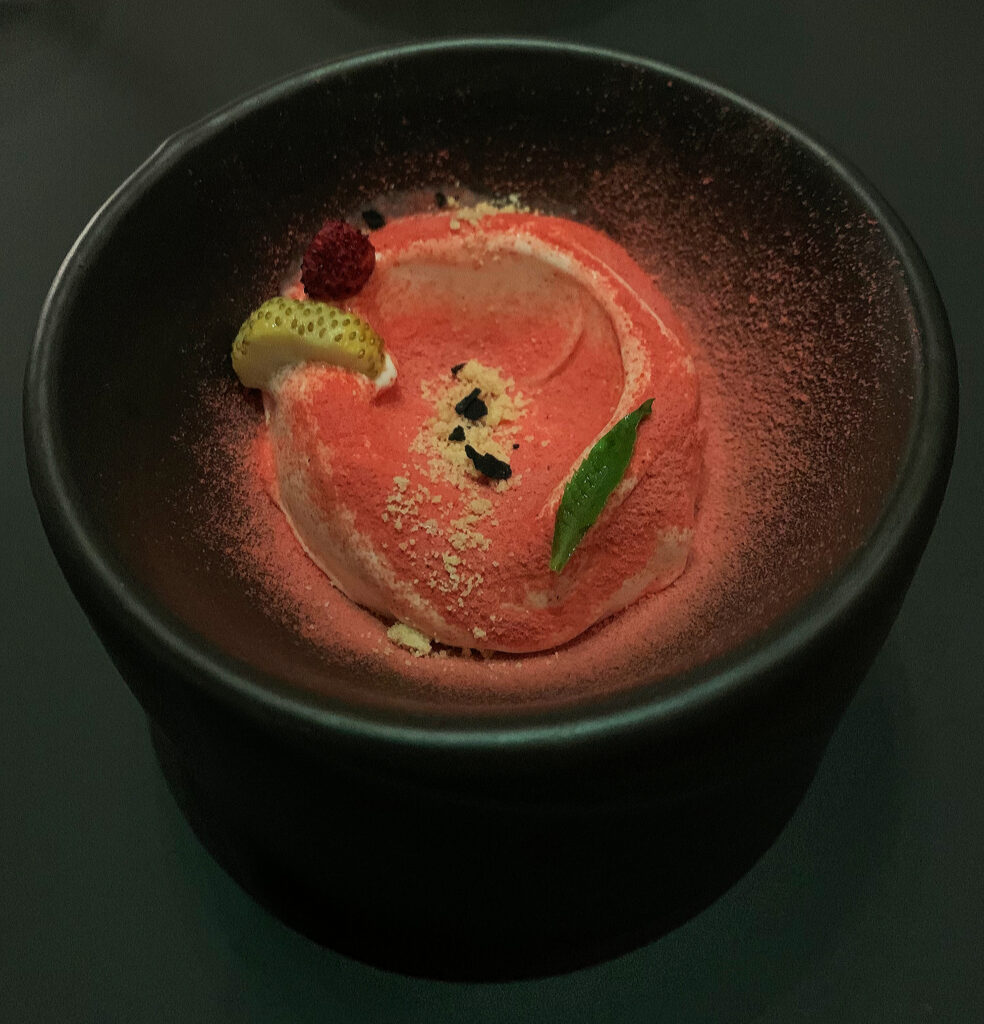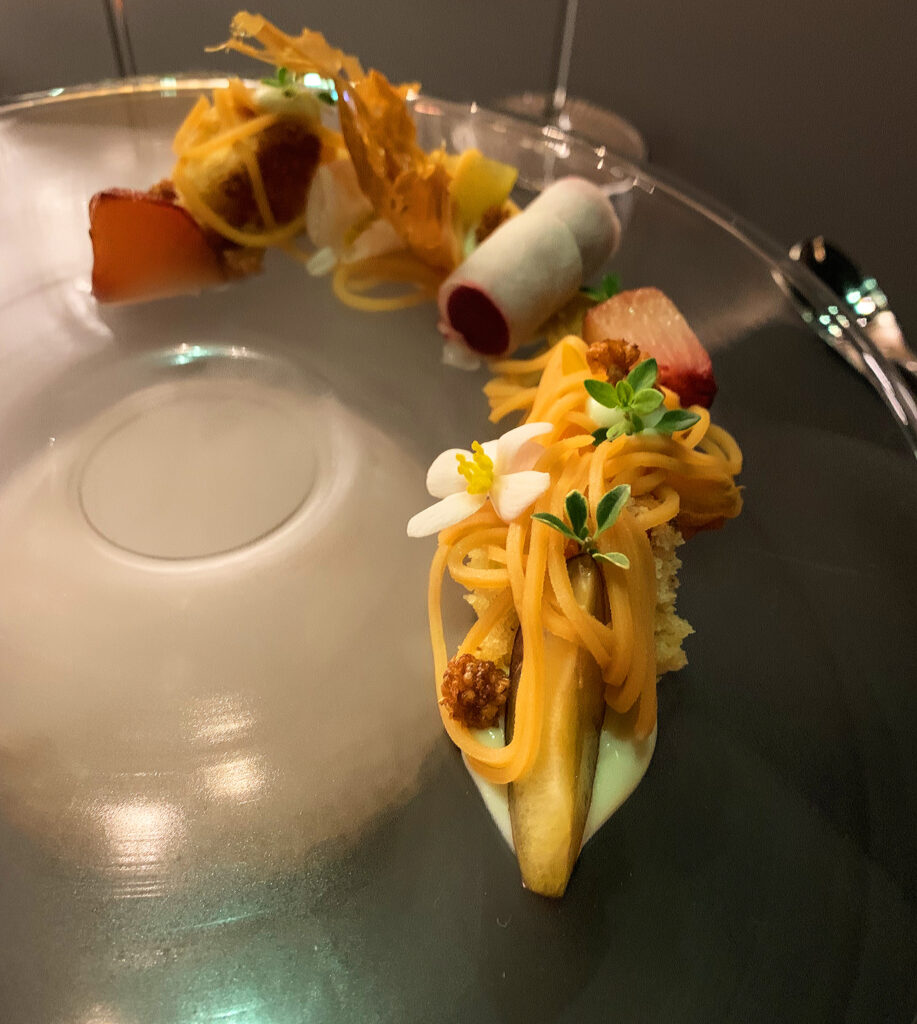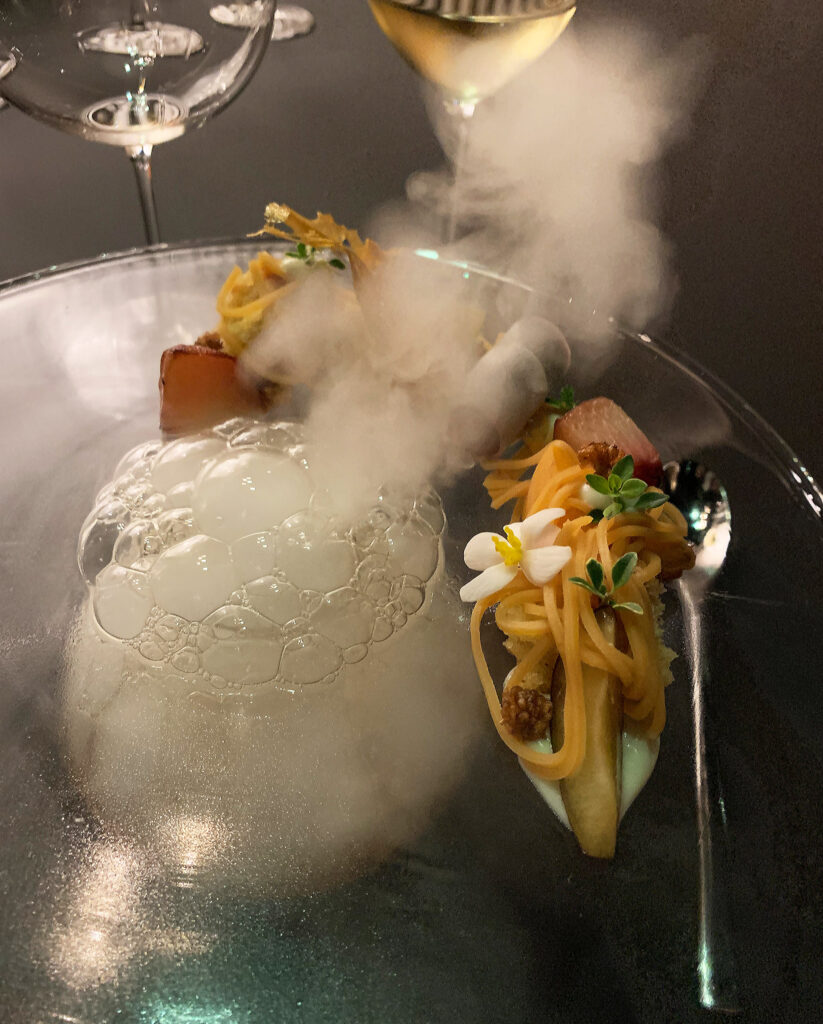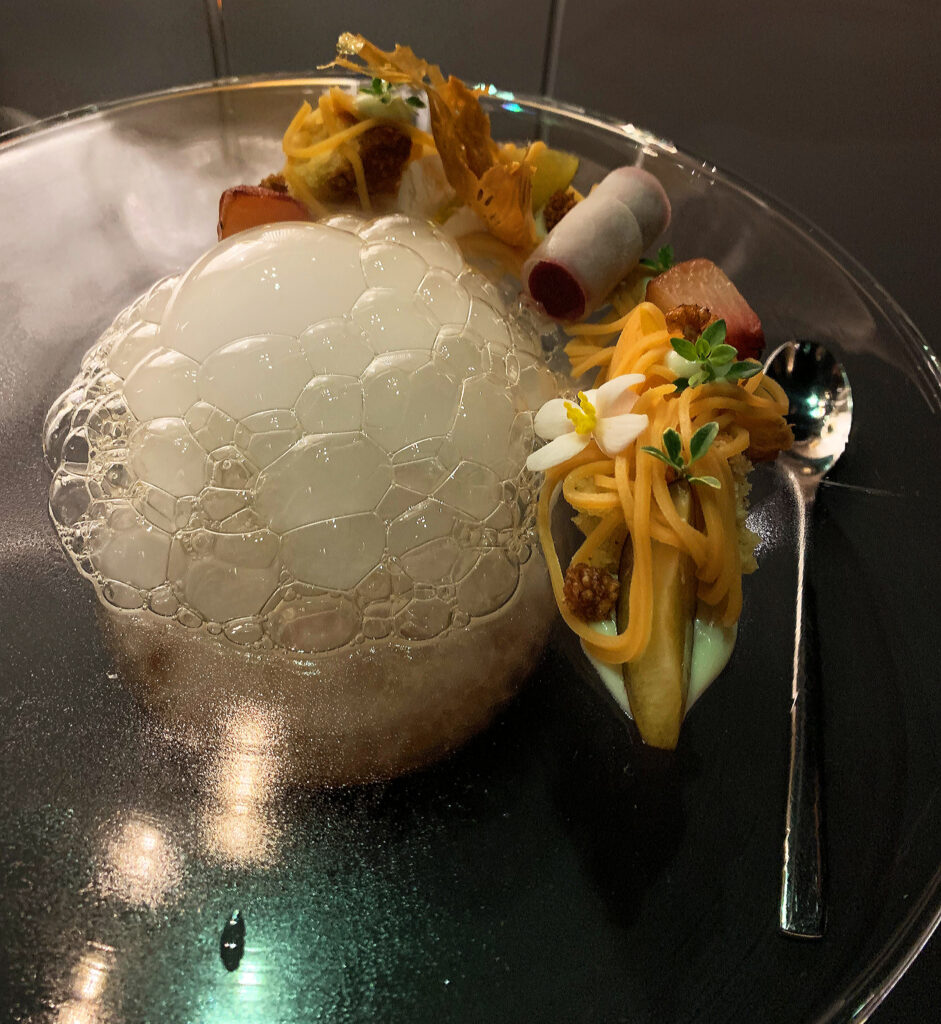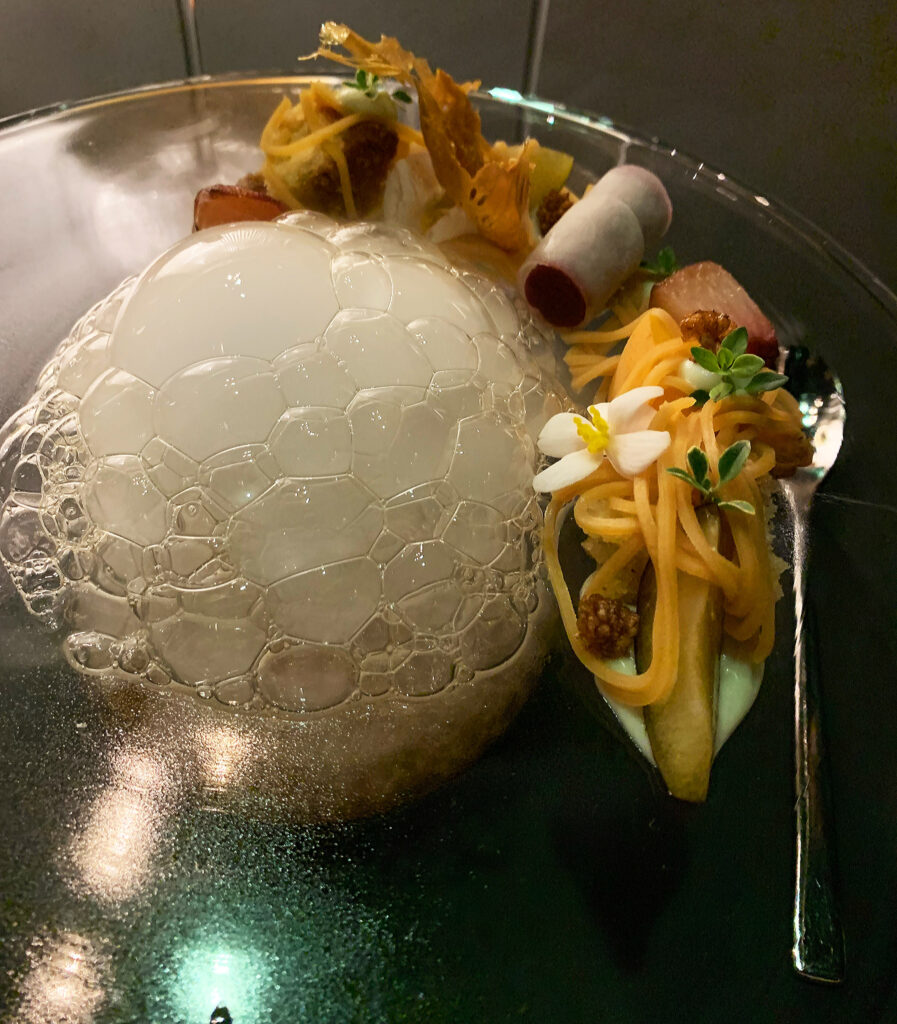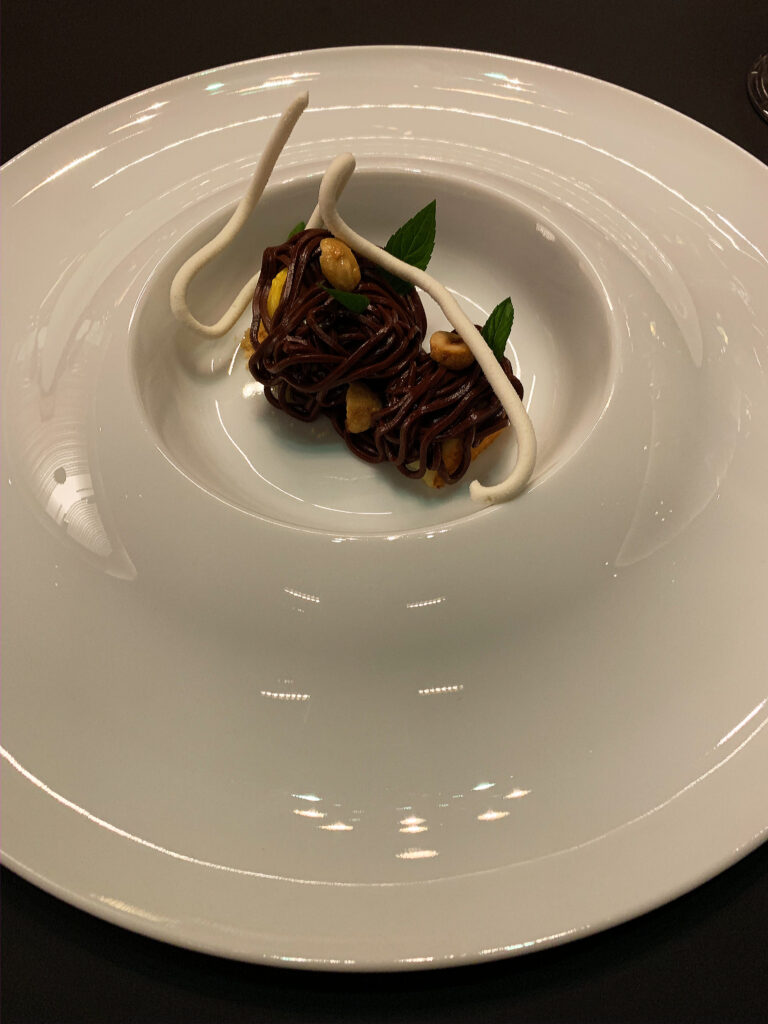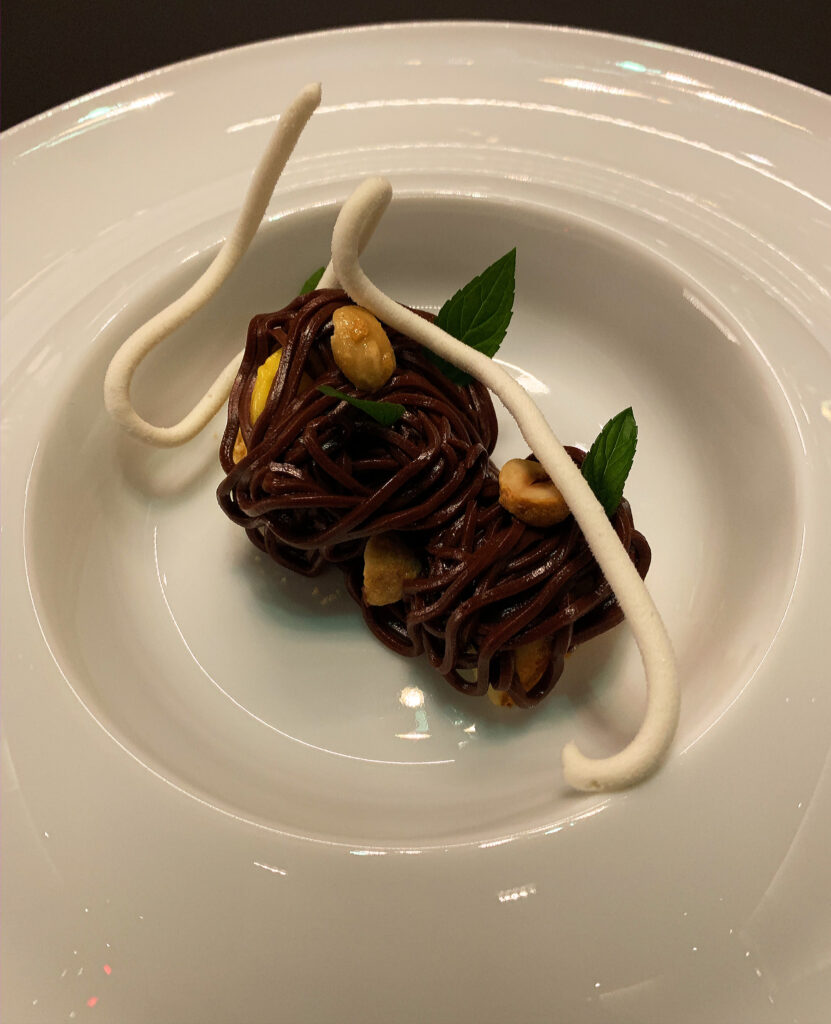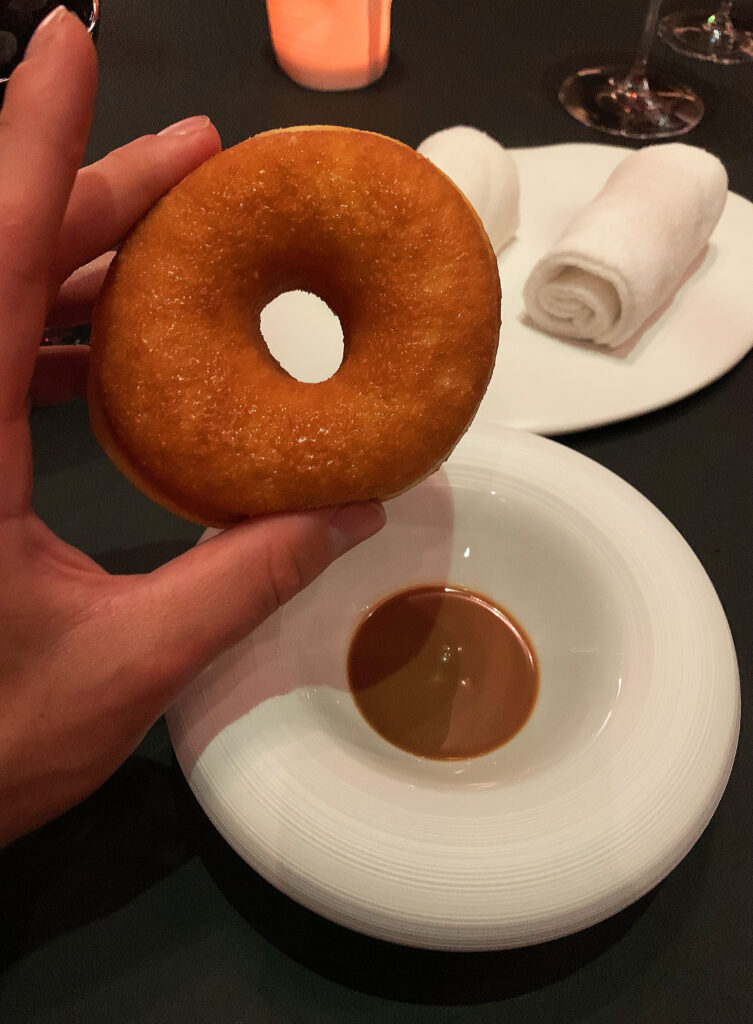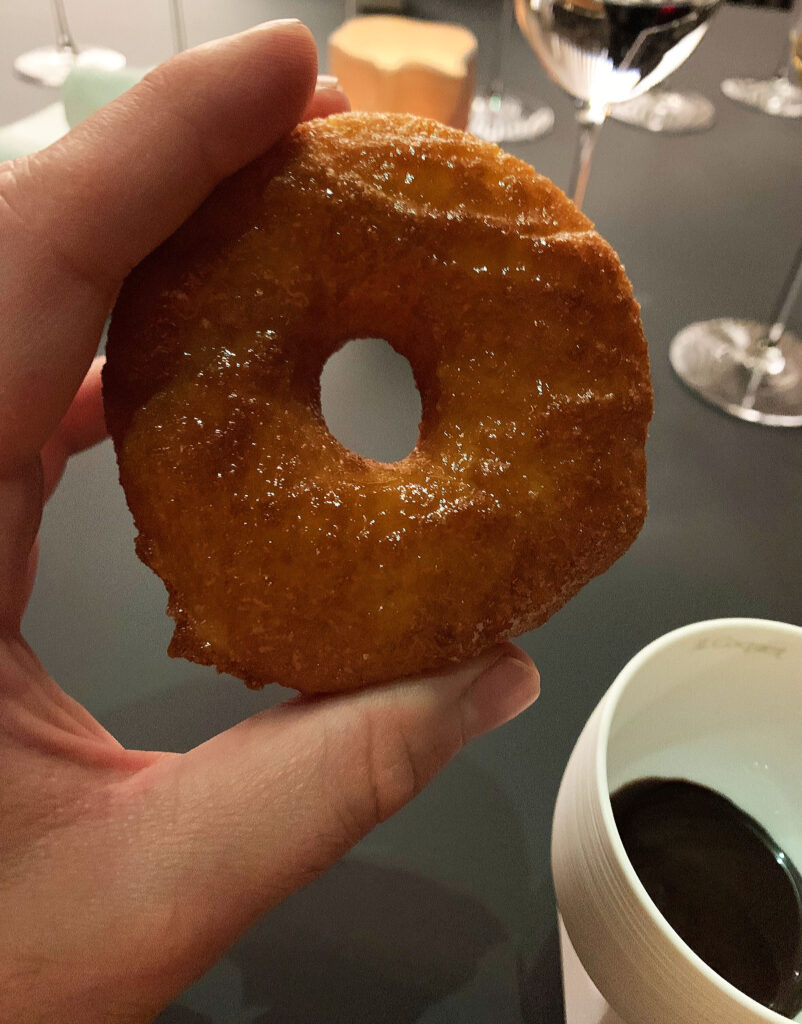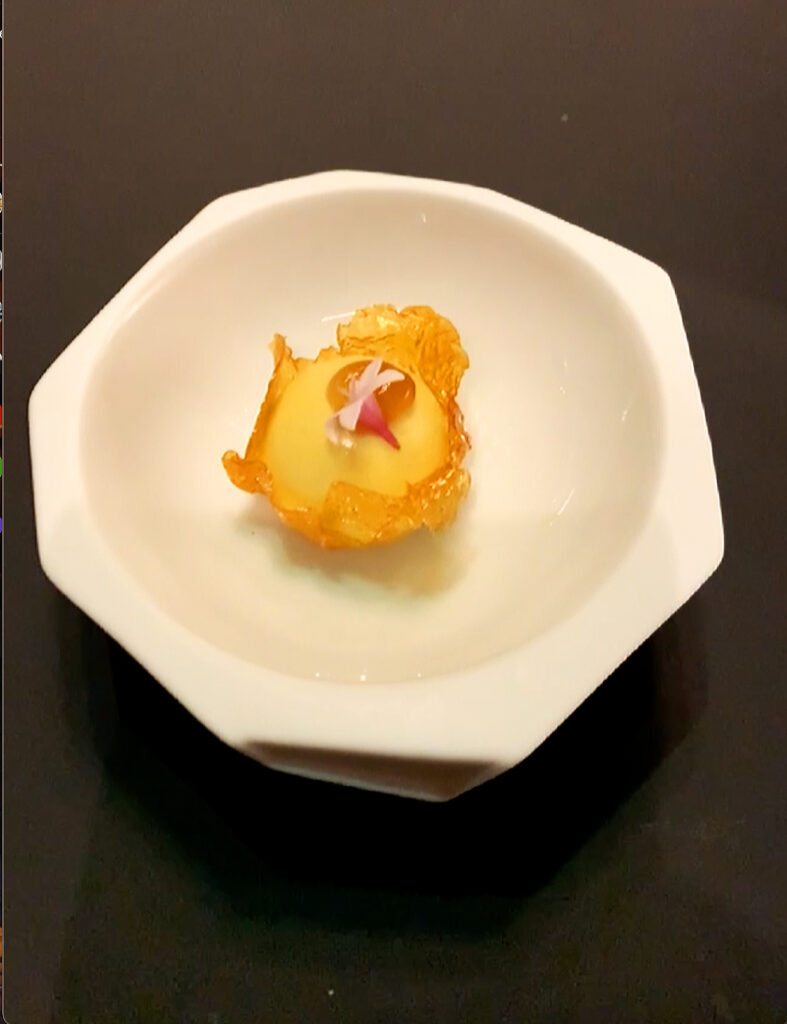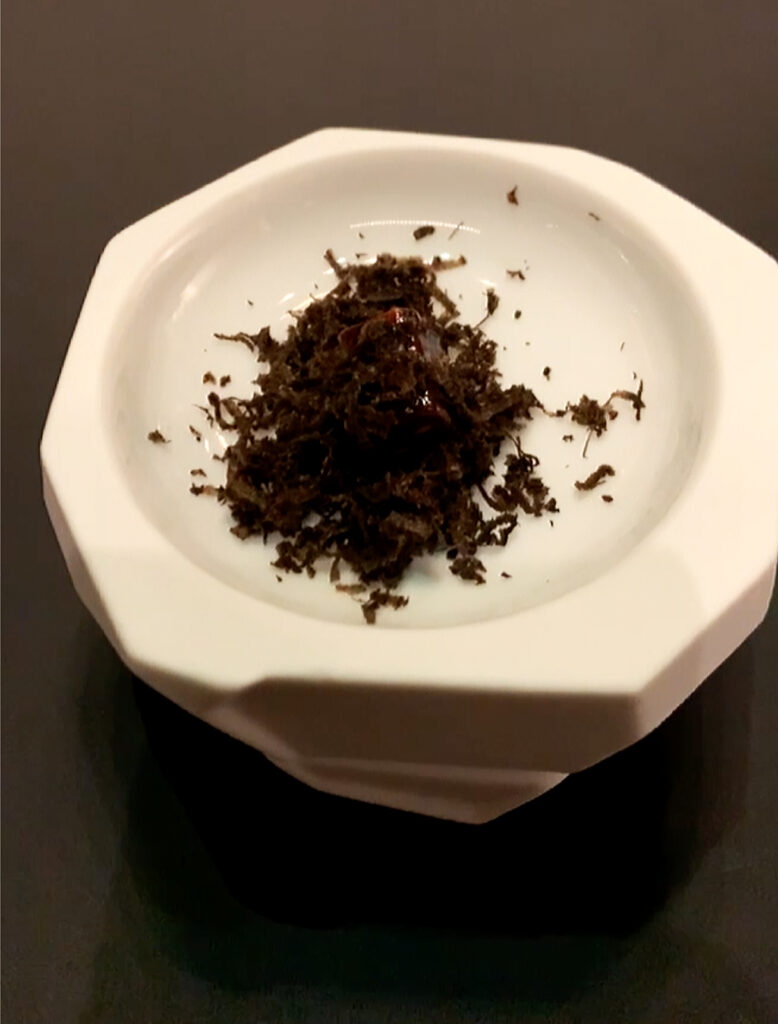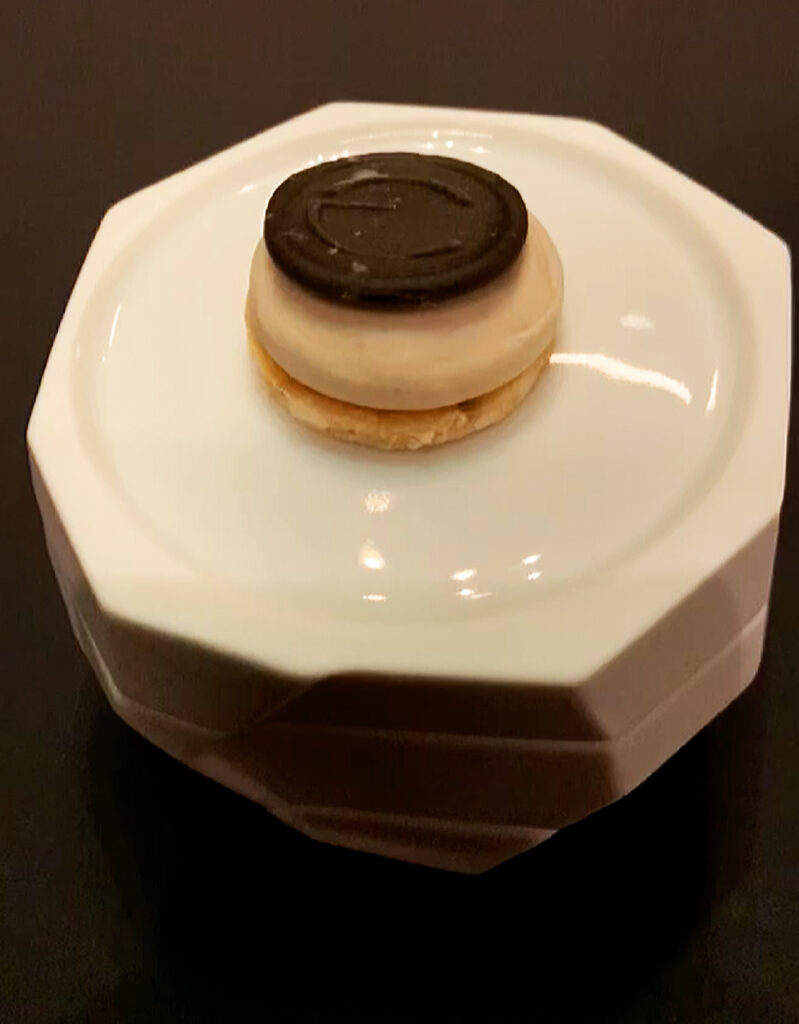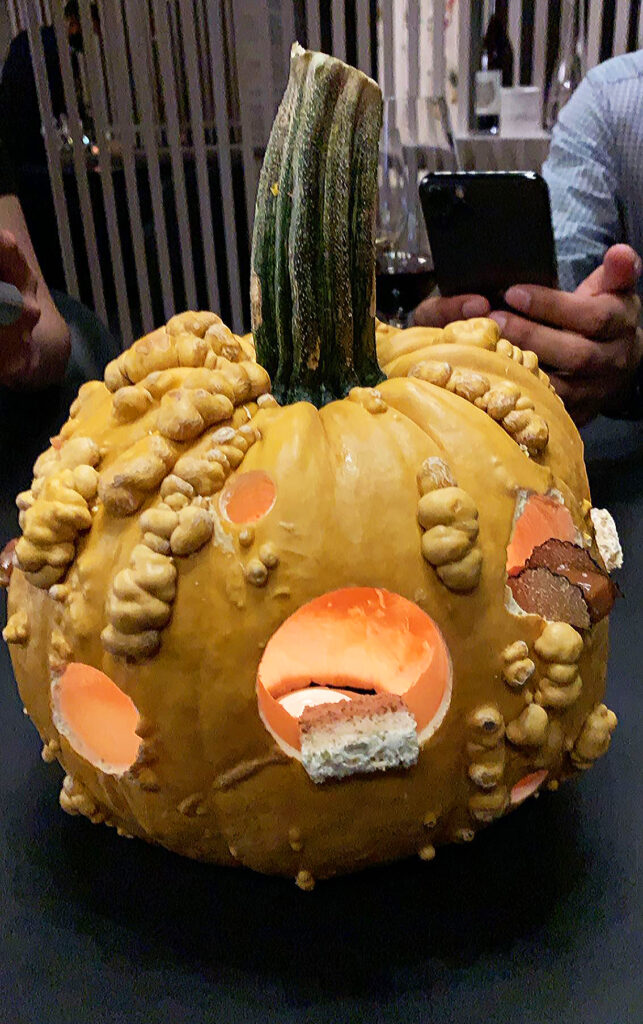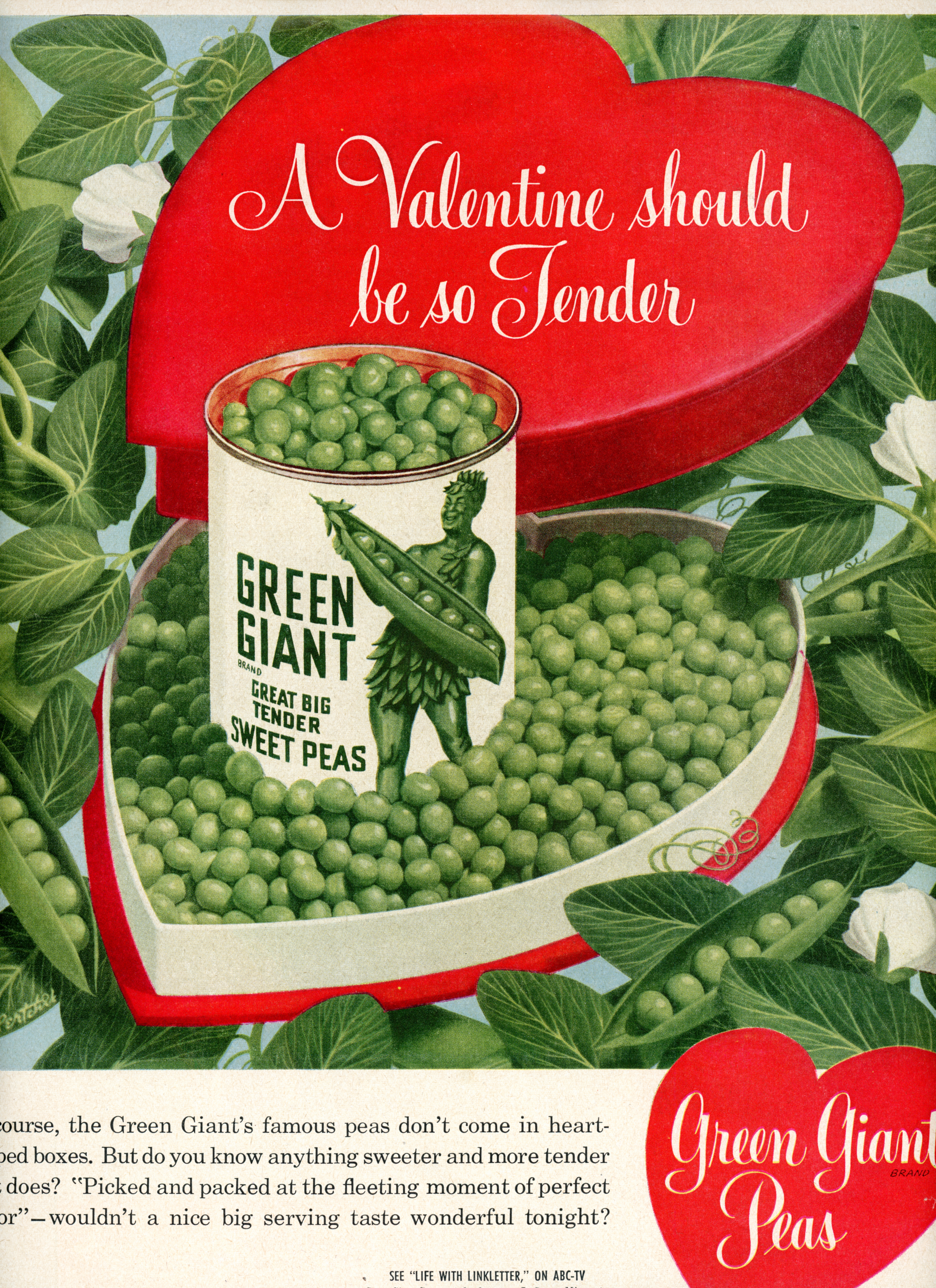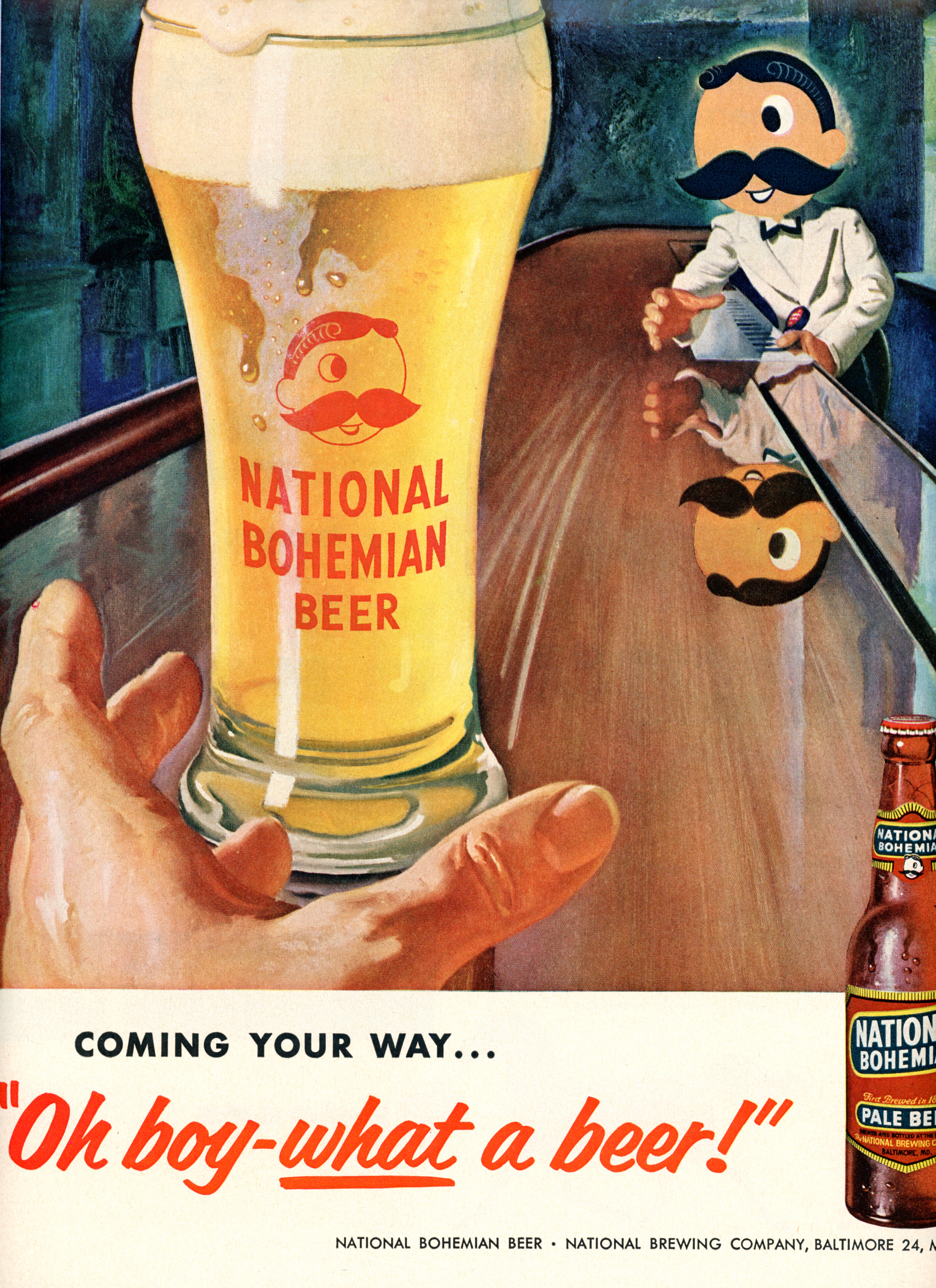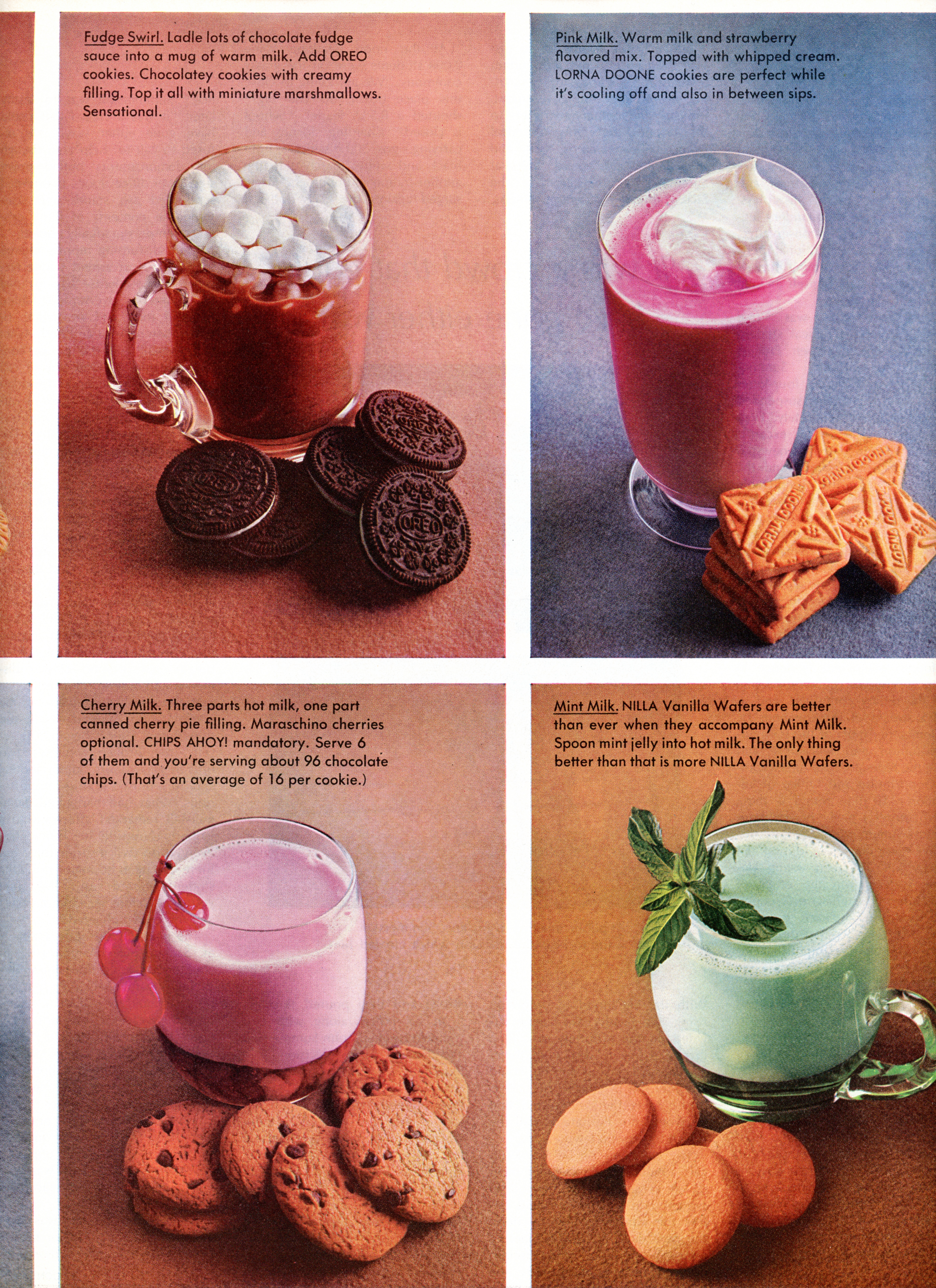During the summer of 2020, out from the depths of the pandemic, sprang the most consequential restaurant opening of the year. And it happened in Chicago of all places.
The Windy City rarely commands the attention of the national food media complex. Those overgrown influencers might invoke Alinea’s name from time to time—perpetuating the restaurant’s undeserved status as the sine qua non of Chicago’s dining scene—but, otherwise, they pay little mind to the tastes of “flyover country.”
The best press the city might see from those dying publications is a championing of this or that flavor of the month “diversity” success story. This privileging of a superficial, implicitly politicized sort of “representation” by monolithic coastal elites impedes the cultivation of consumer knowledge and the celebration of establishments that resist easy categorization into prefabricated racial narratives.
The national food media feels ashamed of Chicago and clings desperately onto any new restaurant that might reveal its population’s tastes are not as backwards as once feared. They beat the drum for anyone who subverts expectations—all the better if they consciously engage in some pointed activism—while the nuances of Chicago and the Midwest’s own traditions are obscured. You do not refer only to the city’s European heritage, but to any business owner who—keeping their head down—focuses only on the mastery of their chosen techniques and the delivery of their customers’ satisfaction. (Mind you, not because such operators are unstirred by social injustice. They simply understand that one’s virtue must be expressed through the many, quiet moments of daily life rather than consciously performed in exchange for a pat on the head).
Clickbait-addicted, advertiser-betrothed “critics” and “journalists” deign to make martyrs of certain chefs while cheerleading for others who—failing in their own business pursuits—situate themselves as grand marshals of the social media lynch mob. Those who court (or contrive) controversy provide the publications with easy fodder—and are granted untold rewards for toeing the line. Such chefs choose the easy, politicized path towards national “prominence.” They leverage rumors and insinuations against their perceived enemies rather than walk the hard road of personal development and artistic fulfillment.
Bereft of talent, they work to construct an alternate reality that prizes chefs’ race and sexuality more than the quality of their cooking. In doing so, they allow issues of identity to taint any chance at forming a class-based coalition that might stand against bonafide abuses of power in the kitchen. They fall for the same distraction that kneecapped Occupy Wall Street nearly a decade ago, amounting to nothing more than the same old useful idiots (with but a few more scars and burns on their arms).
These activists in toques undermine food’s fundamental power to connect humanity. In an era where America desperately lacks unifying cultural touchstones, they seek to twist life’s purest pleasure into yet another weapon wielded against their neighbor. They enrich themselves and a media paradigm that thrives on anger, fear, and division at the cost of mutual understanding, tolerance, and harmony. They dilute the meritocratic appreciation of culinary technique by constructing sacred cows, by transforming chefs from masters of their craft into craven figureheads for their favored ideology. And Chicago’s dining scene grows poorer as consumers are led towards establishments that feed the media more than they do their communities.
But Curtis Duffy and Michael Muser—despite being two utterly unfashionable figures in the minds of a rampantly politicized food press—could not be ignored. The golden children of Chicago’s dining scene—who ran what still ranks as only the third three Michelin star restaurant ever awarded in the Windy City—had come home to roost. They had the nerve to open a luxurious tasting menu restaurant in a city where such concepts had slowly gone extinct. And, when the pandemic threw the entire industry onto its back foot, Duffy and Muser held firm. They charged forward, and the intrepid duo proved impossible to ignore.
Now, you don’t pay much mind to documentaries about fine dining. Yes, they make for good marketing fodder, but their high production value lends chosen restaurants a mythos that is better earned via a slow drip. For customers come to lust for a recreation of the “televised experience” rather than take a leap in the dark and face a meal that is utterly unfamiliar and singular.
All the contrived drama of the documentary form obscures any chance that guests can form their own connection to a given establishment. They’ve been sold on a chef’s story—their personal brand—and that now-famous figure need only show their face, must only meet expectations, to succeed in satisfying them. Media narratives are necessarily reductive—if not downright manipulative—and they impede a sense of mystery and subtlety that prove essential in delivering a truly transcendent meal.
Those who know Duffy have likely gotten to know the chef thanks to For Grace, which reached a wide audience thanks to its Netflix debut in 2016. The Chef’s Table series had only premiered there in 2015, meaning that the documentary tapped into a budding market for gastronomic content on the platform. Of course, the streaming service—and American popular culture writ large—is now positively saturated with glimpses into the “rarefied world” of fine dining. But, half a decade ago, molecular gastronomy retained its sense of mystery, and For Grace—as far as you can know—spun a story that sublimated the usual characterization of luxury restaurants as a prodigal pursuit. Spending money at Grace meant supporting the dream of a chef one intimately came to know through the television screen. It meant decadence with an added emotional undercurrent that diffused any feelings of guilt. In effect, it was a prototypical example—within the food world—of the kind of conscientious consumption drawn upon to lend wanton luxury a new lease on life.
Grace opened in 2012, earned two Michelin stars in 2013, and went on to clinch its third in 2014. But the journey came to a sudden end in 2017, and Duffy barely got to harvest the fruits of the documentary’s wide-ranging viewership. With three stars to its name and the perfect vehicle to prime would-be customers year after year, the restaurant might have fashioned itself into a longstanding temple of gastronomy. It might have formed the lynchpin for a new era of Chicago dining that retained some essence of Charlie Trotter’s, some of Alinea, but combined with greater coolness and restraint.
After five years, Grace fell apart due to tension between Duffy/Muser and partner Michael Olszewski. The latter owned the building, resisted the duo’s attempt to buy out his interest, and made the pair sign a non-compete clause that kept them out of action for at least eighteen months. The restaurant’s fate was sealed by a staff walk out in solidarity with the chef and general manager when relations with Olszewski finally collapsed. You still remember receiving the tragic news that your late-December 2017 reservation would be cancelled.
Olszewski tapped Mari Katsumura—who had worked at Grace for three years—to fill the former restaurant’s space in 2018. Yūgen, as the new venture was called, earned a Michelin star in 2019. The restaurant’s contemporary Japanese cuisine—juxtaposed with the remnants of Duffy/Muser’s expansive wine list—was, in your opinion, knocking on the door of being awarded a second. However, Katsumura’s partnership with Olszewski came to an “amicable” end in 2021 despite her skillful navigation of the pandemic. Yūgen, thus, ceased to exist. And, as he plans for yet another concept in the space, Olszewski’s status as a Mephistophelian stepping stone for talented chefs seems to be confirmed.
Looking back now, the “rise and fall” of Grace was but another perfect piece of marketing fodder. Though Chicago’s dining scene surely suffered in the interim, the kitchen had trained its share of staff in three-star excellence during that half decade. Duffy and Muser had cemented their names, and the misfortune ultimately served as a gripping twist in the personal story told by For Grace. Though seemingly representing the peak of the chef’s lifelong struggle, there appeared yet another summit to climb. The documentary about a defunct restaurant now served primarily to boost Duffy’s personal brand. It channeled all the attention towards what was next and cleared the ground for a triumphant return to the kitchen.
Duffy said as much in an interview shortly after Grace’s closure: “we’re going to build another restaurant that makes Grace look amateurish. You know, because it was our first restaurant, we know we can build a bigger and better and even greater restaurant.” The chef—who had also earned two Michelin stars at Avenues before the restaurant closed concurrently with his departure—also made his devotion to the Windy City clear. “Chicago deserves another great restaurant. We lost [this] one, now it’s time to give one back to them in a bigger and better way.” This time, according to Duffy, he would “control…[his] own destiny.”
In October of 2018—a bit less than a year after Grace’s closure—Duffy and Muser made their first move, securing a 6,000-square-foot ground floor space in Sterling Bay’s Fulton West development at 1330 West Fulton. The nine-story building—completed in 2017 and home to Dyson, among other tenants—lies at the far west end of the “Fulton Market Innovation District” formed by the City of Chicago in 2014. Though Smyth and The Loyalist are located only a block south, the corridor—at present—is positively sparse. With the hubbub of Ogden Avenue close by (including a gas station and McDonald’s drive-thru), this stretch of Fulton stands worlds apart from the street’s eastern promenade (home to, among many establishments, Rose Mary). But Duffy and Muser were clearly eyeing long-term potential. Diners, no doubt, would come to them, and Fulton Street—in due time—would extend its curb appeal right to the restaurant’s doorstep.
In June of 2019—right around the eighteen-month mark stipulated by their non-compete clause—Duffy and Muser’s new venture came into greater focus. Owing to the chef’s national status, the announcement came via The New York Times. Ever, whose name was then revealed, would seat 75 people and serve two distinct 12-15 course tasting menus in the “Flora” (vegetable-focused) and “Fauna” (seafood- and “light” protein-focused) styles formerly seen at Grace. Elsewhere, Duffy would label the cuisine “light, green, herbaceous, fun, whimsical, but still respectable with the ingredients.” The cost of the dinner would clock in between $300 and $500—billed then as “Chicago’s Most Expensive Restaurant”—with the added whimsical touch of opening bites hanging from the ceiling upon guests’ entrance into the space.
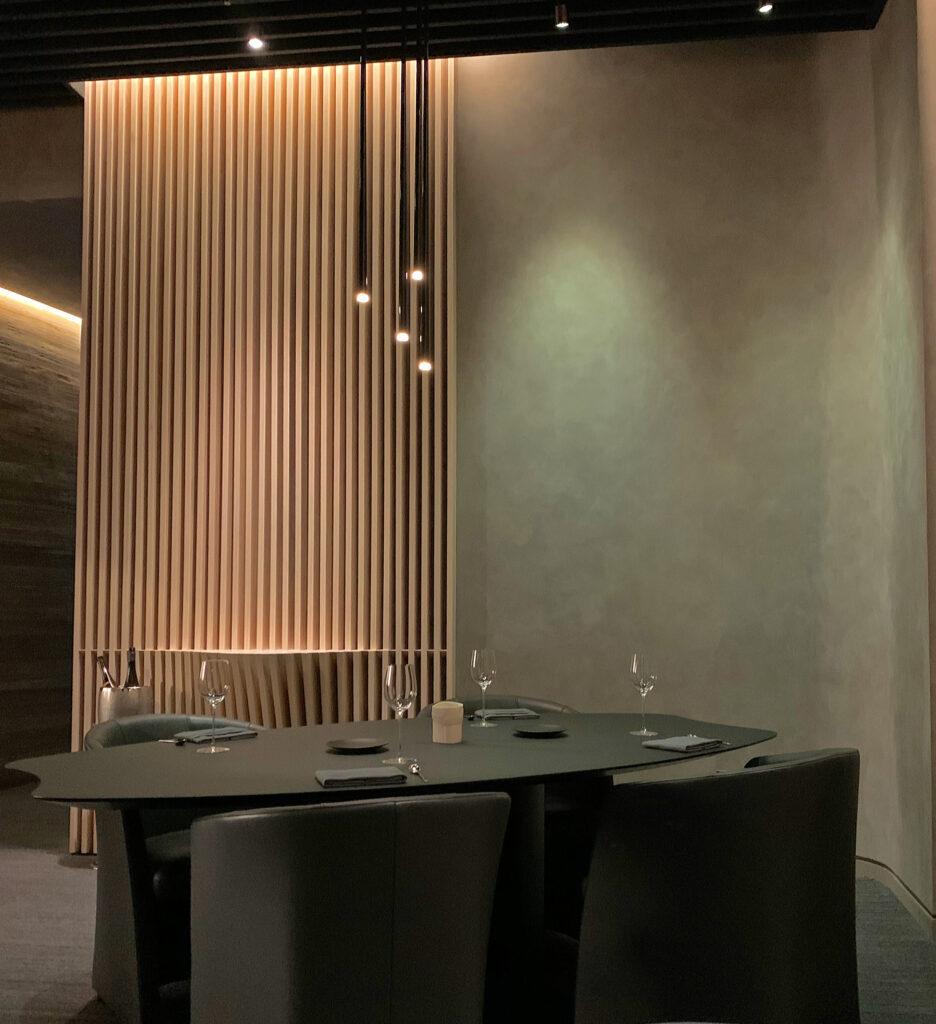
The design of Ever’s space was left to Lawton Stanley Architects, whose most notable credit up until that point—other than some Umami Burger and Giordano’s franchises—was Grace. (However, the duo was initially chosen because they had worked for the firm which designed L2O—“the prettiest restaurant in the world” according to Muser). Lawson and Stanley described Duffy’s aesthetic at Grace as taking “an approach towards material and construction” inspired by the chef’s “approach to cuisine.” In LSA’s words, that is one where “exotic culinary technique is secondary to the honest expression of each ingredient’s natural flavor.” Thus, “brown ash, honed stone, undyed wool & leather, oil-rubbed bronze, and patinaed steel” formed a natural match for the food given how they “present their individual character in a natural, minimally finished state.”
For their second collaboration with Duffy and Muser, LSA drew on the “winding path, hopes, obstacles, failures,” and “momentous successes” that lined the road from Grace to Ever. They sought to tap into “a sense of journey and discovery,” to “prepare a visitor’s mind for the nuance, grandeur, and intimacy of the experience.” The designers made sure to clarify that the space “is not a stage set,” but works as a path to “shape a transcendent experience.” Thus, the aesthetic draws on “wrapping” passageways whose destinations are “revealed slowly, intriguingly.” Materials are “ancient and accretive,” “hand-scribed,” “machined precisely when they need to perform,” and “supple and inviting when we touch and sit.” Rather than speaking specifically to Duffy’s culinary style, the aesthetic aims to instill a “respect for craft” and “care for each and every mundane task of operations.”
Muser himself defined the environment more succinctly: “if the Starship Enterprise had an awesome restaurant in it, this would be it.” And entering the dining room would be like “walking into one of those sound-deafening headphones.”
In early 2020, just before the gravity of the pandemic had begun to sink in, Ever’s honchos continued to build expectations. There was talk of custom chairs from German firm Rolf Benz (meant to surpass Grace’s signature “$1,000” Dutch-designed seating) and a “custom-built French stove” shipped “across the Atlantic.” Decisions were being made regarding “envelopes, menu paper,” and “whether to hang artwork on the restaurant’s currently bare walls.”
The restaurant’s name, too, was given some grounding by Muser: “We’re calling it Ever because all [Curtis] kept saying was, ‘It’s going to be the best ever.’ It just kept happening, and kept happening, and it became painfully obvious that this [restaurant] is the box where he’s just going to stick all of his evers. These are all Curtis’s evers, all his best evers, all the top evers, all those rock star moments that we’ve had and shared —- we packed them into the design of this thing.” And Muser was not simply throwing around the term “best” relative to a weakened Chicago market: “I want people in New York to talk about Chicago as a dining destination, I want people in San Francisco to be jealous of Chicago as a dining institution.”
Duffy conceded “the pressure is enormous” but that he and his partner had “unfinished business” and “the confidence that we can do it again.” Muser admitted that words could not quite capture the experience they were working to build: “You’re definitely going to have to buy the ticket to take the ride. You’ll see it when you sit down. You’ll see it when the stuff starts coming to the table. That we’ve gone above, and we pulled no punches on this thing.”
However, Duffy’s partner was later better able to articulate the exact standard to which their new restaurant would aspire: “This is a place you come to when you don’t want to question any of the ‘what ifs?’ Will we have a great dinner tonight? What will service be like tonight? Will we enjoy ourselves tonight? Will we be coveted and cared for? When we walk into that restaurant, will every single member of that team want to break their heads open to take [care] of me tonight? The answer in this room is ‘fucking yes all day, dude.’”
Ahead of a planned spring 2020 opening, some of Ever’s last pieces fell into place. “People enjoy working for Michael and me,” Duffy said while Muser voiced his desire for a “small army” of staff “equally dedicated to excellence.” By all accounts, they assembled a crack team: Amy Cordell, formerly of Charlie Trotter’s, Avenues, and Grace, would be the general manager; Justin Selk, formerly of Grace and Atelier Crenn, would be the chef de cuisine; and Richie Farina, former executive chef of Moto, would be Duffy’s sous chef.
The trio possesses a good blend of familiarity and notable outside experience. On the hospitality front, Cordell shares the same lineage as Duffy and Muser themselves. While the latter has now stepped into the role of director of operations, his successor in the general manager role can count the same firsthand experience when it comes to excellence. She has walked the walk in three of Chicago’s legendary dining rooms and intimately knows the standard of service Ever aspires to.
Selk’s time as executive sous chef at three Michelin star Atelier Crenn—and Farina’s seven years in the cockpit of one of Chicago’s legendary molecular gastronomy restaurants—are also consequential. But Duffy, it should be noted, is “an advocate” of “the traditional French brigade de cuisine hierarchy.” So, while his lieutenants possess plenty of technical and creative acuity, the head chef expects “a single voice for the kitchen” that will be echoed even in his absence. While George Kovach—formerly of Band of Bohemia and Acadia—was Ever’s opening pastry chef, he would leave after a few months. Lucas Trahan—who spent two years at Grace before working at Entente and Pacific Standard Time—has helmed the program since then.
Little more than a week after unveiling those key members of Ever’s team, Duffy and Muser were struck by the “two week” indoor dining shutdown that would last from March 16th to June 24th. The spring opening was delayed indefinitely—the restaurant’s luxurious space and its newly-hired staff left dormant. Such a twist of fate might have proven disastrous, but the team soldiered on. Duffy’s dream restaurant would unavoidably be moderated by the harsh reality of the pandemic, but it would come to fruition. Yet you must wonder—in the same way you ruminate over how Chicago’s dining scene might have developed had Grace survived—the degree to which the chef’s “best ever” expression had been deflated.
Ever would ultimately open their books on June 11th ahead of a July 28th debut—and reservations sold out in mere hours. Though Chicago had not, at that time, signaled the resumption of indoor dining, Duffy and Muser were clearly champing at the bit. Ultimately, their chosen date would prove conservative—service would start about a month after the city’s restaurants began seating inside. Some consumers had gotten their feet wet with dining’s “new normal” by the time of Ever’s opening. But individual comfort levels varied. Alinea’s rooftop residence offered some representation of “best practices” at a three-star level, but the mixed indoor/outdoor space reflected quite a different proposition than a dining room proper.
Ever was not returning to action or developing a new revenue stream on the back of an existing reputation (not yet at least). Its partners were deciding to birth a new expression of luxury—to shape dining experience of the finest quality—out from the throes of worldwide tragedy. On the surface, the opening was a tremendous statement. Duffy and Muser stood as beacons of hope for the future of a ravaged industry. They, once more, graced The New York Times in an article titled “How to Open a Top-Tier Restaurant in a Pandemic? Rethink Everything.” Therein, Mark Caro captured how “lofty visions have met hard reality” as Ever worked to finally realize its chef’s grand dreams.
But the key bit of context came from Nick Kokonas, who explained that Ever’s partners “probably don’t have much of a choice as to whether or not to open. They started raising money and building this out before the crisis hit. At some point if they don’t attempt to open, the financial obligations will be weighty enough that they cannot open.” The Times added, parenthetically, that “Muser agreed with that assessment.” Ever’s opening was a symbol of hope, but the writing was also on the wall: it was now or never, do or die.
Before the pandemic, the restaurant embraced the highest of expectations. Its reason for being was to surpass the standard set at Grace, to showcase the best of Duffy and Muser’s creativity without the slightest restraint. Now, Ever could only be judged in relative terms. It represented the salvaging of something deferred, a triumph of the spirit to offer superlative hospitality under the harshest circumstances. At $285 per person—excluding tax, tip, and beverages—the venture still had to satisfy some sense of value. (Though, notably, that figure falls conspicuously below the original $300 – $500 range touted). But luxury experiences play in the realm of illusion, and guests’ perceptions would undoubtedly be shaped by the events of the past year.
The restaurant designed to offer the “best ever” expression of Duffy’s cuisine now, necessarily, would be judged by its stewardship of public health. Ever’s world-building would inevitably be punctured by the concerns of the outside world. The artifice by which mere consumption becomes something magical would be that much harder to sustain. For luxury consumers, in accordance with a higher ticket price, typically take their safety for granted. That fundamental concern is so well assured that it recedes from the mind altogether. One expects to be safe, comfortable, and pleasantly catered to as a bare minimum. Only upon these foundations can the delicacy of a refined meal—however it measures up to one’s expectations—begin to be enjoyed.
But paranoia—if not downright fear—had grown into an essential mental state. Impressing consumers through the establishment’s devotion to their safety then lulling them to some baseline of comfort now proved Ever’s essential tasks. The finer details that distinguish the best restaurants from the rest would become more like accessories. Because enjoying a meal in a dining room was a luxury in itself. Experiencing a tasting menu had transformed into a tremendous novelty. And just even going through the motions of top level service—irrespective of the cuisine’s objective excellence—would assuredly satisfy diners who had been stripped of their usual reference points.
This is all to say: the extravagance to which Ever aspired was hobbled from the very beginning, and the restaurant has only—thus far—existed as a shadow of what its branding promised. The most conspicuous, colorful element of its design—the panoply of hanging ingredients guests would get to nibble on before entering the dining room—was excised. That nod to the “Willy Wonka tradition” would have set a playful tone for the evening (“this place is already fucking bananas —- let’s go,” as Muser describes it). It would have formed the thematic core of the entire experience, showcasing the constituent parts of the menu in a stripped-down form juxtaposed against Duffy’s refined compositions.
Such a contrast would strike right at the core of molecular gastronomy’s key tension: how does one worship ingredients’ essence at the same time one totally reconceives their form? How important is the legibility or purity of a chosen gustatory substance when it comes to offering pleasure? Can the novel shine without some sense of the nostalgic? Ever’s liminal space of hanging delights would have bridged that aesthetic gap in a cohesive, emotional way. It would have stood as a signature element—a totem—of the highest order. And it would have been the rare sort in fine dining that draws on spatial proxemics for dramatic foreshadowing.
But, without any opportunity for interaction, the device offers little more than a passing photo-op—“a glimpse of what you’ll be consuming.” The dangling delectables—now inedible—becoming nothing more than a gastronomic baby’s mobile. Duffy defined the space as “about feeling young” and hopes its role as an imaginative introduction to the meal can be resurrected. Nonetheless, the pandemic stripped Ever of—perhaps—its most inspired idea as the restaurant, instead, put its creative energy towards a $10 supplemental “personal safety kit” (featuring “a mask, hand sanitizer, and latex-free gloves”).
That, too, would be excised once Muser figured diners would struggle to “get lost in a world of food and wine” if they were greeted with something to the effect of “Here’s your first-aid survival kit. Don’t die. Enjoy your dinner!” The ultimate solution to the P.P.E. problem was a “$6,000 problem solver” in the form of a custom table built by Lawton Stanley Architects to match their interior. No doubt, there is something luxurious about commissioning what is, in effect, a four-figure sculpture for the sole purpose of holding masks and hand sanitizer. But the table, as much as anything, stands as a symbol of the resources that were necessarily diverted from the pure pursuit of gastronomic achievement.
Ever would, indeed, open on July 28th of 2020 and fulfill its status as a national beacon for the hospitality industry (and beyond). You were there on that first night, and it seems unfair to label it anything but a success. For the stakes were not that Duffy must deliver the very best cuisine Chicago had ever seen, but that he deliver a refined, pleasing meal in which guests felt unquestionably safe and, more so, comfortable. Muser, too, when working the floor as an omnipotent director of operation, was positively charming and charismatic. The would-be posterchildren for wanton luxury had transformed into wizards of gastronomy’s new, post-pandemic “normal.” They took it upon themselves to define and enact best practices for rarefied dining rooms and pulled it off without a hitch.
The restaurant’s books were filled throughout that exuberant reopening period in 2020. You, yourself, ate at Ever four times in total that year. But the restaurant had only barely reached the three-month mark—the bare minimum upon which a critic could, in good faith, offer a review—before Illinois halted indoor dining once more on October 30th. Service would not resume until January 23rd.
With the rug pulled out from under them once more, Duffy and Muser responded with a to-go menu in November and—even more boldly—a ghost kitchen slinging burgers in early December. “Duffy’s take on a well-executed fast-food sandwich” was titled Rêve Burger, and the concept survives to this day in a space kitty-corner from Ever itself. The double-quarter-pounders with American cheese, secret sauce, and BBQ-seasoned (frozen) fries are tasty but not life-changing. However, they served to “keep some staff busy and employed through the pandemic” while ensuring the chef’s mothership—in one form or another—stayed on diners’ minds despite the second shutdown. Rêve Burger’s sudden unveiling on social media certainly caused a sensation—and posting one’s “three-Michelin-star” burger (despite the superior, “two-star” example just down the street) became something of a “foodie” status symbol for a time.
By February of 2021, Duffy and his team were back to crafting tasting menus for diners. However, the stop-and-start nature to proceedings could not have been good for staffing—let alone creative flow. Three months of operation certainly taught the restaurant something, but momentum—especially after such a deflating regression—would need to be built back from zero. The hope surrounding Ever’s initial opening was now colored by an undercurrent of frustration, a sinking feeling that even the best laid plans would still leave establishments utterly vulnerable to pervasive, perpetual public health concerns. However, once more, Duffy and Muser could only charge forward.
You ate at Ever four times in 2021—comprising the months of February, April, June, and August—and feel that the restaurant can now be appropriately judged. Duffy and his team have regained some momentum and possess a year’s worth (give or take those three months slinging burgers) of culinary development to analyze. However, their work still must be qualified against the conditions the team has endured. Thus, while your meals from 2020 provide a valuable reference point when considering Ever’s development, you will focus primarily on your most recent experiences in an attempt to capture the spirit of the meals that guests, moving forward, will be served.
Though Ever’s sticker price demands it live up to a certain value, the restaurant has clearly not hit its absolute stride. (You wonder whether the establishment will one day embrace pricing in line with the higher range it originally touted). Duffy has had to sacrifice the dual “Flora” and “Fauna” menus he hoped to transfer over from Grace while the hanging amuse-bouches remain mere food for the eyes. Most diners, inevitably, are first-timers who benefit fully from the meal’s novel elements. And many, likely, remain highly sensitive to issues of safety and comfort that obscure a pure appreciation of gustatory merit. This is all to say: Duffy and Muser continue to defer their dreams of a “best ever” concept due to the business reality they continue to be faced with. The hype surrounding the restaurant certainly grew to epic proportions before the pandemic—and it stands as a marketing bubble that should be burst—but thoughtful criticism must retain a certain sense of understanding. For it would be all too easy for Chicago to lose Grace’s dynamic duo all over again.
As is standard, you will condense the sum of your experiences into one cohesive narrative (with a particular emphasis, as previously stated, on your most recent meals). However, for the sake of parsing Duffy’s culinary style as accurately as possible, you will be exhaustive in describing the full range of dishes served across all of your visits. Because, while elements like staffing and world-building necessarily suffered due to the pandemic, the chef was still “graced” with top talent, top ingredients, and top equipment. Creativity often thrives under pressure, and fine dining—perhaps now more than ever—must justify its indulgence. Why shoulder the risk for anything but transcendence? (Or, perhaps, consumers are so starved for the appearance of “luxury” that they forget how to perceive its substance—or lack thereof).
The stage now set, let us begin.
With so much of Fulton Market’s prime sprawl closed to vehicular traffic (in order to accommodate ample patio seating), the ride towards Ever takes on a different character. Whether you travel westward down Lake Street or choose the positively tiny Carroll Avenue to make your detour, the scenery confronts you with some fleeting vision of an old neighborhood now going extinct. No, it’s not the usual sob story of “gentrification,” but of old industry yielding to new.
Jutting this or that direction off from the West Loop’s recreational hub—from the towering offices, hotels, and residential buildings that have finally judged the area habitable—you are reminded of what once was. Truck rental lots, metal recyclers, waste transfer stations, and industrial food processing plants line dilapidated streets and signal a heavier, nastier sort of commerce that had made its home on what once was, unquestionably, the city’s outskirts. Of course, there are the ubiquitous meat packers, sausage makers, and seafood importers whose bunkerlike facades leave more than a little doubt that they’ve been open in the past decade. At least, as mere window dressing, their signage strikes you as altogether more appetizing than the former category. And, as real estate, Fulton Market’s former food purveyors are just goldmine waiting to be tapped for the next glitzy, gargantuan development.

Ever sits across from the former location of the Wichita Packing Co., one of the country’s foremost suppliers of pork ribs. The site is now an empty lot, and—with a parking lot filling the rest of the block opposite the restaurant—you get the impression that Duffy occupies an outpost on the far end of town. But Grace, once upon a time, stood at the cusp of a Randolph Restaurant Row that, at the time, could only boast a Bar Louie and a Check Casher where it intersects with Halsted. Smyth, too, sat across from a parking lot—now a residential tower—in its time. Such restaurants form the reference point for the future of the block. The world they build on the inside—and that the first flush of guests travel to—reflects the outer world to come. Soon enough, the outpost becomes more like the nexus of a new neighborhood: one where the prospect of spending a thousand dollars on dinner no longer seems out of place.
But a space such as Ever’s must feel eternally—not relatively—luxurious. It can never be outdone by the upstarts that eventually arrive on their block if it hopes to occupy that highest stratum of experience. It must shine as brightly against the future as it does against the rubble. Its design must achieve something truly timeless to justify that $5 million price tag, to strike guests from the first moment as being “worth a special journey.”

You arrive at 1340 W. Fulton a few minutes before your reservation time. That offers a moment to linger at Ever’s imposing doors and appreciate the logo etched into the ground below. (During one meal—in the depths of Chicago’s winter—you were greeted by a shimmering ice block into which the logo had been framed). On other occasions, you’ve run a few minutes behind and found a suited figure waiting to usher you into the restaurant. But the façade, whatever the occasion, gives very little away.
While Smyth’s ample, street-facing windows welcome guests with some vision of the energy contained in its dining room, Ever—like Grace, like Alinea and Oriole—invites diners to enter an unknown world. Thus, the charm of an exceptional experience “hiding in plain sight” (one, perhaps, rooted more strongly in the urban bustle) is substituted for a wonder that stands distinctly apart from any outside influence.
You enter through Ever’s portal and cross a short vestibule whose door deposits guests face to face with the monolithic host stand. Two women, suited in black, roll your name off their lips and bid you welcome. One stays behind, manning the post, while another leads you off to the left to begin your journey. It is but a short distance to the table, but Lawton Stanley’s curved walls have their intended effect. The path winds without ever giving away its destination, but the glowing stone surfaces and dark flooring soon give way to the restaurant’s “party piece.”
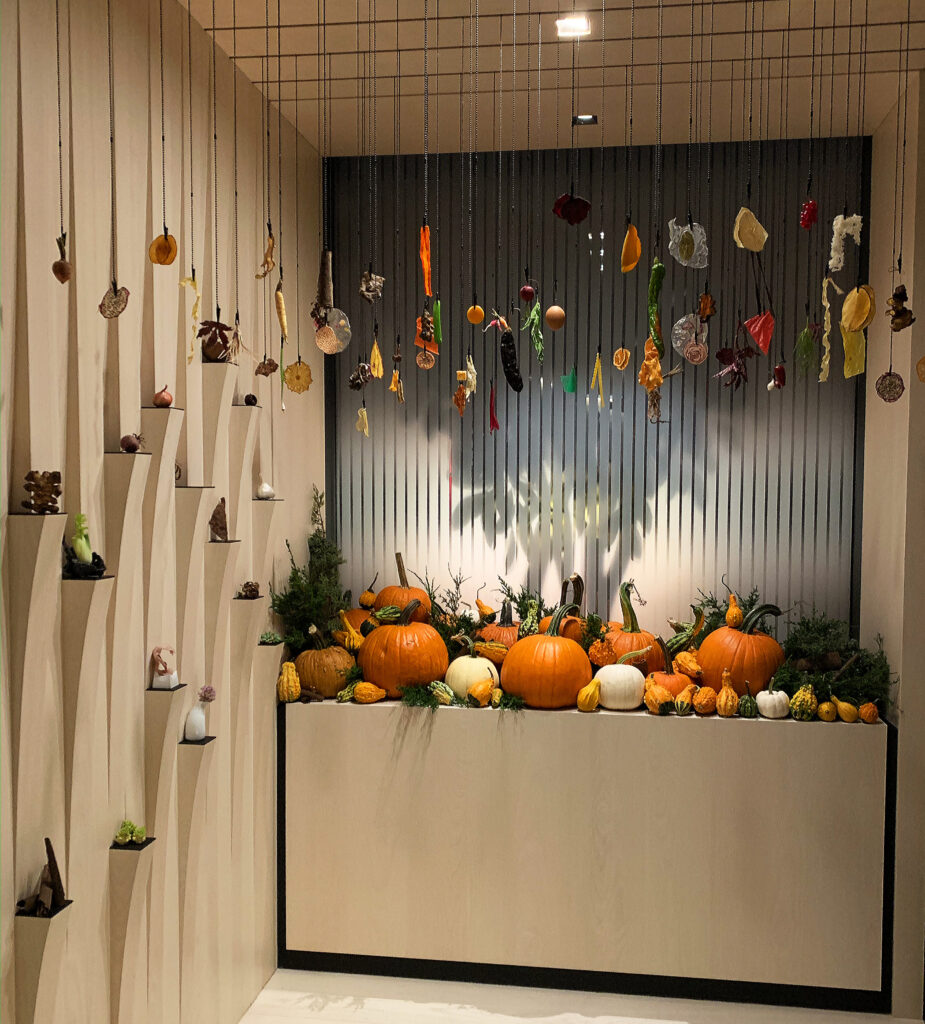
That being, of course, the fabled Willy Wonka room: a jewel box of hanging ingredients that would have shattered the restaurant’s somber mood with the delightful invitation to sample the many representations of the season’s bounty. As previously discussed, the pandemic scuttled what might have been a keynote experiential element. The space—though particularly striking due to its stark tones of white—now stands as a cursory bit of scenery. For, while the hostess invariably introduces the room as a testament to Duffy’s embrace of nature, she is usually all too ready to whisk you into the dining room proper. (Perhaps, in that manner, the staff works to avoid guests errantly accessing the hanging ephemera as originally intended). But, knowing the history behind the design, you make a point to linger for at least a moment. And the hostess, to her credit, notices and allows you to comfortably pause for pictures and further inspection.
At its best, the room has regaled you with the feeling of abundance. In the fall of 2020, that meant a veritable cornucopia of squash as the centerpiece. Such an assemblage made for a familiar seasonal tableau—but done with aplomb. The principle pumpkins were picture-perfect while others proudly touted multicolored boils and gnarled stems. The juxtaposition placed conventional beauty and ripeness opposite expressions of nature’s biodiversity that subvert the standard symbology of desire.
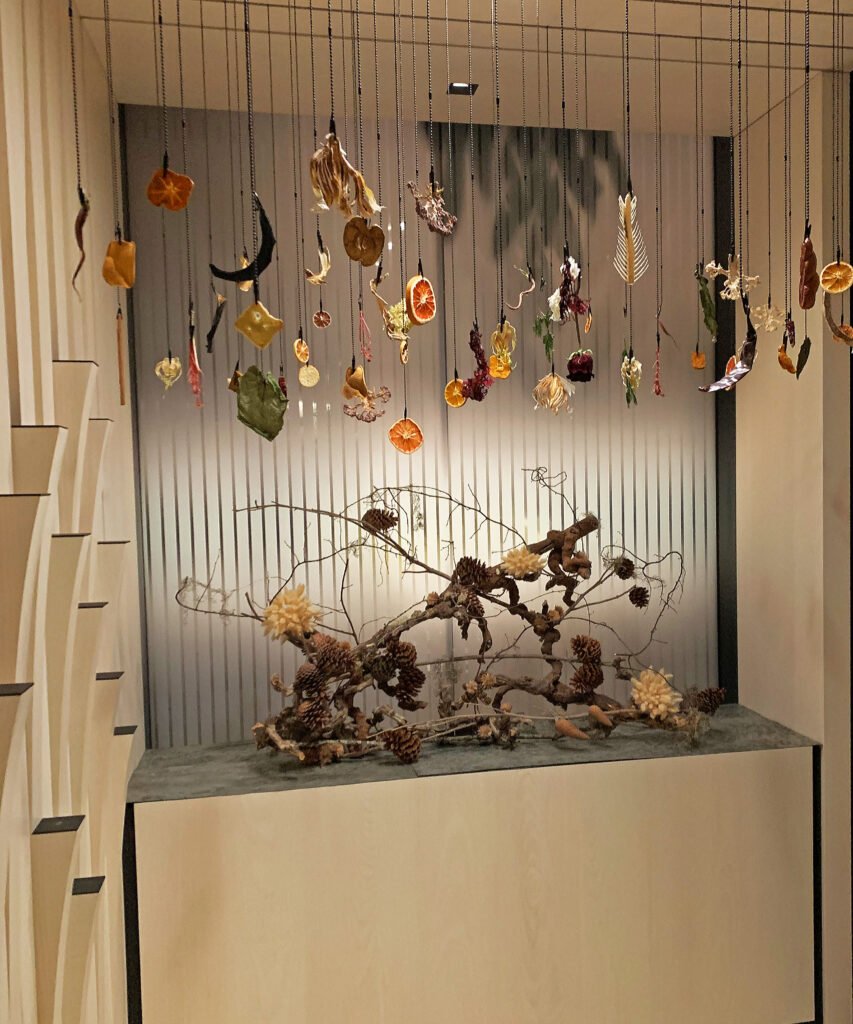
Another setup, from the winter of 2021, was made all from twisted branches and pinecones enveloped on and around each other. But it, too, possessed an engrossingly rustic quality that bordered on being ugly. Perhaps it simply smacked of death. Whatever the reading, the winter piece also succeeded as a sculpture. Both it and the pumpkins benefitted from a shadow of foliage that was backlit onto the glass along the back wall. That additional element, however slight, hammers home the notion of mise-en-scène. It’s a thematic totem that—like L2O’s own golden coral sculpture back in the day—grounds the aesthetic experience to come. (And, when the rest of the meal’s staging has more to do with sensory denial, such priming pays dividends).
But Ever’s “Wonka room” offers more than just a centerpiece: items like radish, apple, pepper, carrot, fish bones, old bread, flowers, mushrooms, and citrus hang above guests’ heads in a petrified state. And, truth be told, many of the ingredients chosen for the installation resist your attempts to identify them. That’s how successfully they’ve been transformed into something more aesthetic than edible—a notion that haunts molecular gastronomy in its own way. For those who think such techniques amount to nothing more than a torturing of nature’s bounty will find in the hanging objects an eerie quality. Being inaccessible to the guest, the ingredients might be read as proverbial “heads on pikes.” In their lifelessness, they form an altar to Duffy’s virtuosity and perpetuate the promise of the mind-bending flavors and textures to come.
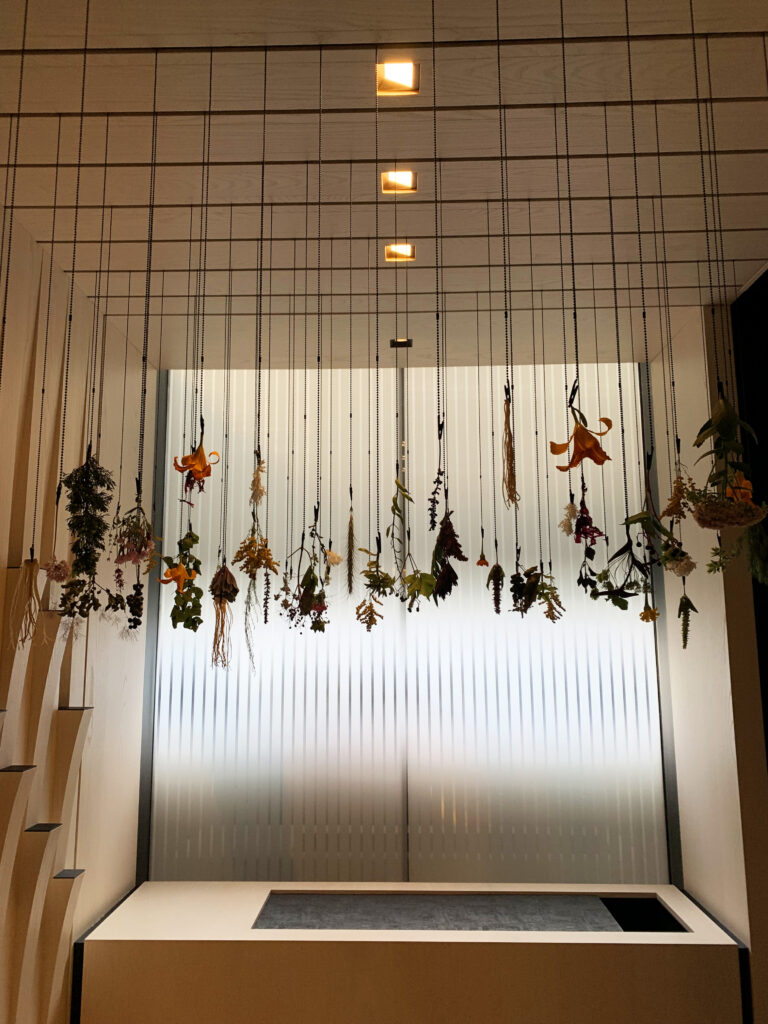
While nothing could be quite so memorable as the interactive amuse-bouche the space was designed to provide, you appreciate the restaurant’s devotion towards curating an artistic emblem for the meal. The most recent rendition—staged during the summer—was comparably sparse. There was no centerpiece, and the hanging items were dominated solely by plants and flowers. Perhaps that scene—characterized more by vibrant forms and natural light—was felt to best express the season. But you felt it to be a bit more detached from the ingredients that would appear on the plate, and such a disconnect would transform the space from a connective totem into something—all the more—only befitting a brief, forgettable, glance on the way to the table.
You turn another winding corner and find yourself at the threshold of the dining room. It is subdued, foreboding, and Muser’s reference to the Starship Enterprise starts to make sense. This is not the realm of traditional “luxury” in the European tradition, but something undefined and alien. Yes, Ever’s space is pleasing to the eye. It feels, for lack of much to latch onto, “special.” (“Cold”—some might say—or “cryptic.”) Yet the restaurant deserves some credit for spurning the usual signifiers of a top class meal in a rarefied setting. There are no gleaming metals, no plush velvet, no polished accents of fine leather or wood.
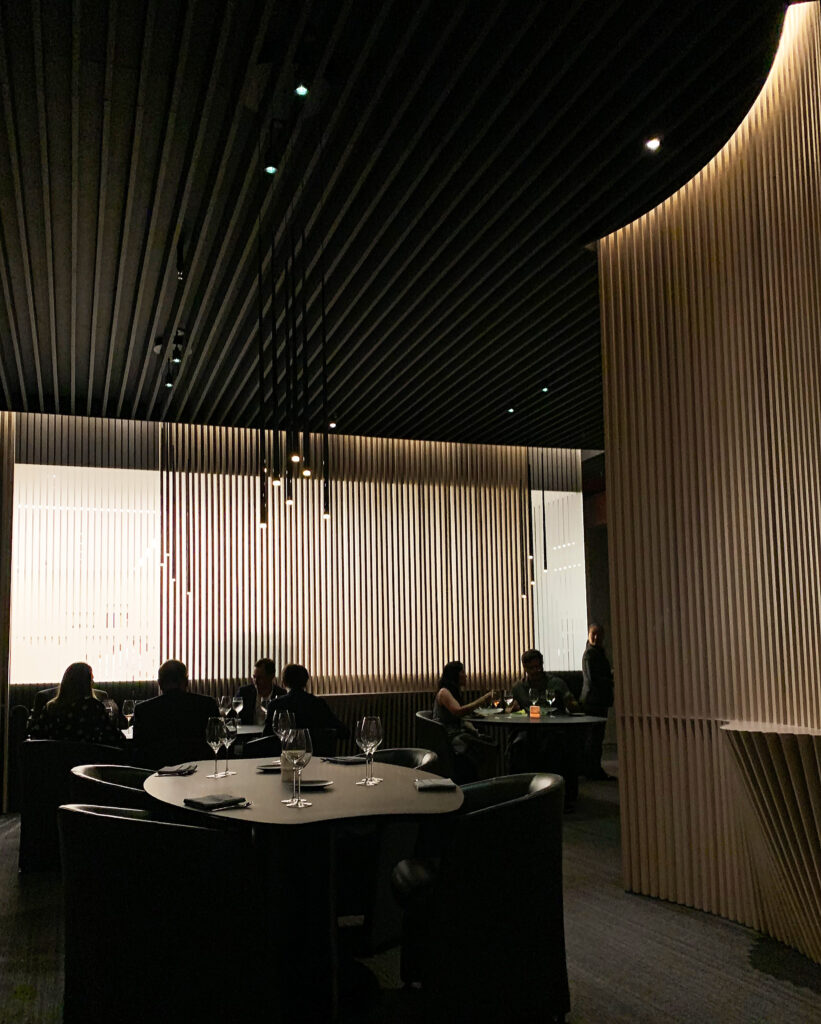
The restaurant is not desperate to justify its ticket price at the aesthetic level. Rather than “show,” it invites you to “feel.” Such was the effect of Alinea’s old illusory hallway and—to a lesser extent—the maladapted tone they have carried through 2.0 and 3.0. It’s a dramatic construction that puts immense pressure on the rest of the experience, as it works to delay satisfaction in its entirety until the very moment the first morsel of Duffy’s food reaches your lips. Rather than revel in the charm of being “somewhere,” guests sit in a room that relates to “nowhere.” The dining room stands wholly apart from place and time; it is the blank canvas onto which the genius looks to paint hues that shimmer all the more brightly in the ether.
You are guided to your table—a sleek, slate number that carries an impressive weight and matches the curved design of the passageways and partitions—and settle into one of those $1,000 Dutch-designed chairs. Yes, they’re comfortable. But not shockingly so. The chairs’ construction is admirable due to its combination of solidity and weightlessness (the latter, surely, is a boon for a front of house team that never misses an opportunity to pull out a guest’s seat upon their return to the table). The design also ensures you maintain the right posture relative to the table—a feature that, like so many other aesthetic aspects, ensures that attention is drawn effortlessly and fully to the food.
Three other elements of the dining room’s design are worth noting. First, the space features sound-dampening ceilings from Turf Design that Muser likens “to slipping on a pair of noise-cancelling headphones.” With that element in place—alongside ample spacing and management of sight lines between parties to begin with—the guest experience is nicely compartmentalized. You cannot ever remember hearing or seeing other diners to any notable degree. Each group is shrouded in its own experiential bubble without the slightest chance of interference—even if an adjacent table should burst into laughter. This, like so many other elements, heightens one’s potential enjoyment by filtering out distractions and emphasizing the people and drama at one’s own table. (The “museum quality lighting” from multi-pronged fixtures surely helps too).
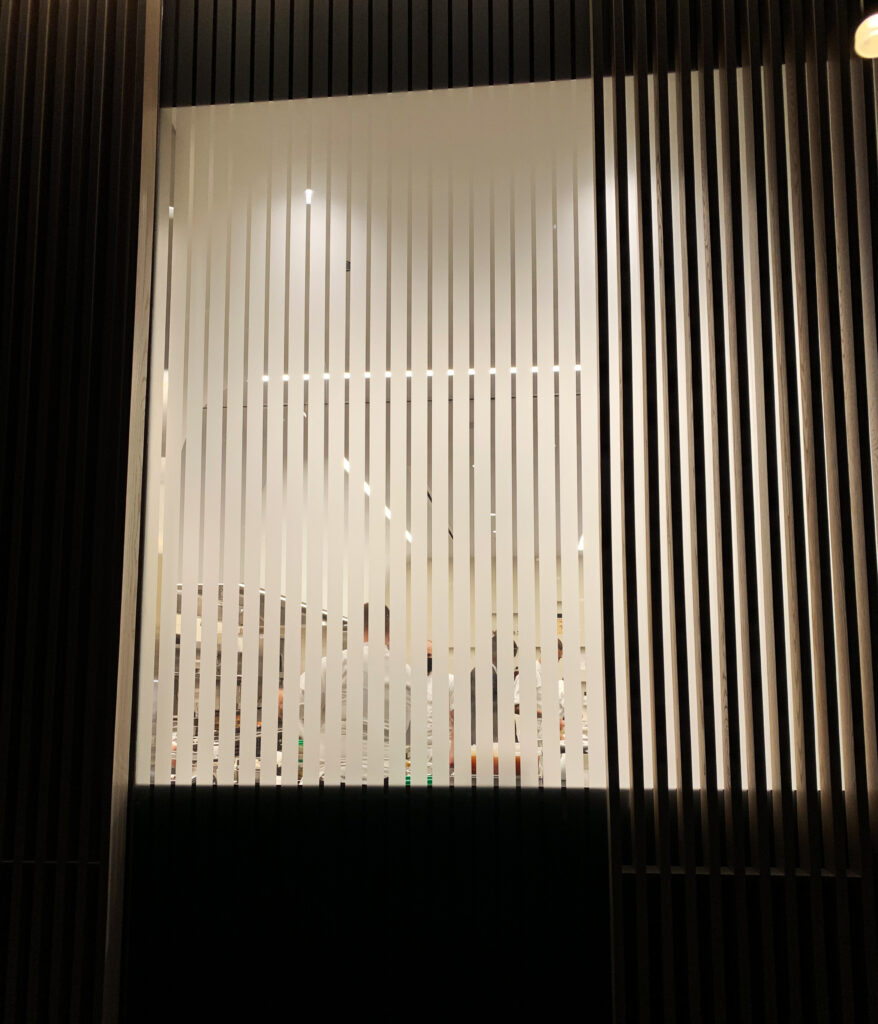
Second, the room—as best as it can be defined by anything—gravitates around a tiny window with “opaque stripes” that obscure a direct view of the kitchen. Duffy, further, maintains a “gridded screen” that can slide to totally block out the window when desired. But guests, at best, are barely able to make out the hustle of bodies working to craft their meal. The window, which matches the same material used for the “screen” behind the centerpiece in the “Wonka room,” glows faintly with white light. All the while, it remains inaccessible: it teases but a modicum of the activity that lays behind it. The kitchen’s bustle never forms a distraction—even when you are seated directly in front of it. Yet a sense of energy and mystery remains when you train your focus upon it from any corner of the room. It’s the “promised land,” the “chamber of secrets,” the “bright light at the end of the tunnel.” Thus, subdued, luxurious experience at the table retains some slight hint of the effort being outlaid to conjure the chef’s creations. However, a feeling of effortlessness largely reigns.
Third, the dining room’s fanned partitions—which curve around tables and match flat portions of the wall—incorporate pedestals that are used as serving stations for wine. Those guests indulging in the pairings will find that the various selections are staged throughout the room, with each bottle displayed next to one of several eye-catching Riedel decanters. (Though these marvels of crystal—particularly those with obnoxiously elongated necks—are a scourge to use in the home, they are a pleasure to see wielded skillfully by the staff). Diners who elect to order a bottle off of Ever’s list will also see them placed on the pedestals so that they may be admired throughout the meal. Once more, the thoughtful management of sight lines balances the beholding of distant pleasures while empowering the action that occurs before you.
Speaking of wine, taking your seat at the table signifies that it is time to choose the evening’s beverages. (Though, if you are being honest, you always ask to be sent the wine list ahead of time. For programs of the caliber to which Ever aspires often tout a dizzying array of options, and it can be hard to parse where the real value lies when the rest of your party is waiting. Preselecting bottles has the added benefit of facilitating better wine service—like decanting ahead of time—or merely signaling to all and sundry that you are a discriminating drinker).
Ever’s opening wine list comprised the categories of Champagne/Other Sparkling, Alsace, Austria, Germany, the Loire, the Rhône, Beaujolais, Spain, and the United States. One year later, the list’s featured regions are exactly the same—with the addition of a Dessert Wine section. But that does not mean the selections haven’t changed.
The inaugural Champagne list most notably featured N.V. wines from Agrapart, Bérêche, Gaston-Chiquet, Larmandier-Bernier, Egly-Ouriet, and Pierre Peters alongside vintage releases from Agrapart, Billecart-Salmon, Pierre Paillard, Pierre Gimonnet, and Vouette. The most expensive bottle at the time was a N.V. Paul Bara Grand Cru “Réserve” priced at $1,320. That wine, which is sold in Chicago for as little as $47, clearly had an extra decimal place mistakenly added to it. The error persisted until you pointed it out to the sommelier upon the restaurant’s reopening in 2021—and you sure hope no customer ordered what they mistakenly thought was one of the list’s superlative offerings.
In its present state, Ever’s Champagne selection has seen its Bérêche, Egly-Ouriet, Pierre Peters, and Vouette bottles picked off. Some Agrapart remains—the N.V. “7 Crus” at $151 standing as a good option—alongside the Larmandier-Bernier “Longitude” at $155. But the most notable additions—rather than restoring the stock of those cult favorites—have been a 2010 Dom Pérignon ($615), N.V. Krug Rosé ($950), and 2012 “Cristal” Rosé ($1,800). (For reference, the 2010 Dom Pérignon is priced by Gibsons Italia at $350 and the 2009 “Cristal” Rosé at $974. Maple & Ash prices their 2010 Dom Pérignon at $575 and their Krug Rosé at $780). The Sparkling Wine section is characterized by some Schramsberg and a unique 2007 Raventos “Mas del Serral” from Spain (priced at $385 and available at Leña Brava for $296).
Ever’s Alsatian whites have provided great value and continue to do so. Rieslings from the “usual suspects” such as Beyer, Boxler, Hugel, Ostertag, Trimbach, and Weinbach tout 5-6 years of age with many landing under $100. Meanwhile, Trimbach’s “Cuvée Frédéric Emile” and Zind Humbrecht’s “Brand” (both priced at $230) reflect the region’s top offerings. The Pinot Gris selection is quite a bit shorter; however, it offers a similar sense of value around and under $100.
The selection of white wines from the Loire Valley has been quite extensive from the start. There are 16 different Sancerres under $100, but a 2019 Vacheron village ($105) and a 2018 Vacheron “Le Paradis” ($210) stand as the only top-tier examples from the appellation. Saumur is a real strong point thanks to wines from Guiberteau, Stater-West, and Thierry Germain under $100. These expressions of Chenin Blanc might fit the bill for those ruing the restaurant’s lack of white Burgundy. The Savennières section features a bottle of Nicolas Joly’s “Clos de la Coulée de Serrant” ($270) and a couple from Domaine des Baumard with back vintages (including Joly’s more affordable “Les Vieux Clos”) of both producers having been picked off since opening. Lastly, while the Vouvray section once leaned heavily on Domaine Champalou (with various wines from 2003-2019 spanning $60-$183) it now counts a set of 2019 Huet lieu-dits for $100-$120. While the section has long been headlined by a $770 Huet “Clos du Bourg,” the Vouvray—like the Saumur section—offers some of the list’s best QPR bottles.
Ever’s German Riesling selection is an embarrassment of riches. Comprising 84 different wines (priced from $44-$262) at opening, the section now stands at 60 bottles (priced from $40-$262). The vast majority of wines are priced below $80 with some in that range even boasting up to 12 years of age on them. While an affordable trio of Kellers—“Von der Fels” ($90), “RR” ($126), and “Limestone” ($70)—quickly sold out, the selection still touts a range of cult names largely unseen (and certainly unmatched) throughout Chicago. This includes Julian Haart, Peter Lauer, Stein, A.J. Adam, Carl Loewen, J.B. Becker, Gunderloch, and Koehler-Ruprecht alongside household names like Robert Weil, Willi Schaefer, J.J. Prüm, Fritz Haag, and Dönnhoff. Though you think the more expensive GG offerings are not quite so impressive, the selection stands as a Riesling wonderland of unparalleled accessibility and easy pleasure. It’s a part of the list that the restaurant should really be proud of.
The Austrian section—relative to the German wines—has aimed more at the high end. Though a beautiful aged selection (going back to 2009) of Riesling and Grüner Veltliner from F.X. Pichler has sold out, Ever still offers serious wines from Veyder-Malberg, Nikolaihof, Prager, Alzinger, Hirsch, Loimer, Schloss Gobelsburg, Bründlmayer, and Nigl alongside a smattering of lesser-known producers. Though the pricing generally lands in the $100-$150 range (with quite a few above $150), the Austrian section is just as thoughtful as the German. Those looking for “GG” level dry whites should embrace the former while the latter excels in delivering an endless array of easy-drinking options (though not altogether without character).
The Spanish whites—save for a Pepe Raventos Xarel-Lo—are not all that exciting. Sadly, the selection of the domestic whites is the same. While 2016 Sandhi ($113), 2014 Dumol ($140), 2017 Peay ($142), 2019 Kistler ($150), and 2015 Hanzell ($164) Chardonnays stand as good options, the 2018 Paul Hobbs ($192) and 2015 Merry Edwards ($310) that make up the high end of the range are less so. While Ever has featured Littorai before (and is set to add more to its list), they are missing names like Evening Land, Lingua Franca, Racines, Rivers-Marie, Rhys, Aubert, Williams Selyem, and Kongsgaard (though you are fine with them avoiding expensive bottles of Peter Michael). A $95 2020 Massican Sauvignon Blanc in the Other White Varietals section is attractive, but the overall section is also undistinguished.
Moving on to the red wines, Ever’s selection of Cabernet Franc from the Loire offers—like its Chenin Blanc counterparts—some of the list’s top values. While the most coveted offerings—like Guiberteau’s lieu-dits, Domaine du Collier’s “La Charpentrie,” and Clos Rougeard—have been picked off, some bottles from Guiberteau ($77-$175) and a smattering of Thierry Germain ($112-$182) remain. There are beautifully aged examples of Bourgueil from Catherine & Pierre Breton alongside Chinon from Baudry, Grosbois, Joguet, and Raffault. The average wine drinker might not have much exposure to these appellations, but such wines are destined to age well over the restaurant’s lifetime and can offer pleasure at a more accessible price point than those seen in the domestic section.
Beaujolais tells something of the same story, with its Gamay-based wines landing almost entirely between $60-$100. Though aged expressions from 2010 and 2011 have long since been exhausted, the selection still touts wines from the region’s luminaries such as Breton, Lapierre, Thivin, and Thévenet. All ten Crus are—impressively—represented with bottles from up-and-comers like Bouland, Cotton, and Sunier rounding out the category. Ever’s list might not feature quite as much Beaujolais as it does Riesling, but the former works to offer the same outward pleasure at an appealing price. Though, as with the Loire, guests may need a bit of guidance to pinpoint which Cru best caters to their respective palate.
Whereas the Beaujolais section compares to Riesling in value, the Rhône Valley does so in breadth. An opening assortment of 84 different bottles—spanning Côte-Rôtie, Saint-Joseph, Hermitage, Crozes-Hermitage, Cornas, Gigondas, Vacqueyras, and Châteauneuf-du-Pape—has now grown to 90. And that is not counting the wines that have sold out! The range of producers comprises all the top talent: Beaucastel, Chave, Chapoutier, Clos de Papes, Colombo, Guigal, Ogier, Saouma, and Vieux Télégraphe. Certainly, there are a couple dozen bottles in the $50-$100 range. But Ever’s Rhône offerings can tout six of Ogier’s 2015 lieu-dits ($330-$490), magnums of Vieux Télégraphe ($750-$1,145), and the 2010, 2012, and 2016 vintages of Beaucastel’s “Hommage à Jacques Perrin” ($1,312-$1,900). The latter bottles long stood as the list’s most expensive, and it’s interesting to see the level of investment placed into the category despite how foreboding many of the wines—in their youth—are. Nevertheless, if the restaurant is planning for the long haul, they will be sitting on a goldmine—and there are some good options that are approachable today.
Lastly, the selection of domestic reds strikes you in much the same manner as the white wines. The Pinot Noirs—from Oregon and California—are distinguished by names such as Antica Terra ($270), Au Bon Climat ($255), Eyrie ($215), Hirsch ($230), Joseph Swan ($165), Kistler ($175), and Littorai ($205). And, in all due fairness, a wider selection of Littorai’s single-vineyards offerings along with bottles from Radio-Coteau ($145), Hanzell ($154), Peay ($168), Rhys ($319), and Merry Edwards ($210) have long sold out. But you are, once more, left wanting for names such as Aubert, Domaine de la Côte, Evening Land, Lingua Franca, Rivers-Marie, and Williams Selyem to make an appearance.
The Cabernet and Proprietary Reds sections have grown from a pittance (Philip Togni at $189 and Paul Hobbs “Nathan Coombs Estate” at $1,022 being the most distinguished of 18 names at the start) to include Silver Oak ($420), Dunn ($455), Kapcsándy ($525), Cardinale ($620-$900), Staglin ($750), Phelps “Insignia” ($760-$875), Diamond Creek ($785), Colgin ($940), Bond ($975-$1,100), Lokoya ($1,020-$1,185), Opus One ($1,155-$1,255), Vérité ($1,170-$1,230), Abreu ($1,175), Scarecrow ($1,615-$1,680), Levy & McClellan ($1,815), Hundred Acre ($2,000), Harlan ($2,250-$3,000), “Second Flight” ($3,600), and Screaming Eagle ($6,800-$8,400) itself. There is even a magnum of 2017 Screaming Eagle on offer for $14,000!
While, indeed, there are three Cabernets and one Proprietary Red under $200, the selection stands as the sort of trophy list that could rival those at Chicago’s finest steakhouses. And, to their credit, many of the selections show 6-14 years of age on them. That means they can continue to age gracefully or, in good faith, offer pleasure to customers whose fancy they catch.
The list comes to a close with a selection of aged and vintage Port (from Dows and Warre’s most notably), some Sherry, a D’Oliveira Madeira, and a few TBAs from Kracher. There are also, of course, a range of Spätlesen back in the German section (though no offerings of a higher Prädikat level). Apart from a few of the cheaper Ports ($80-$120), a half bottle of Sherry ($35), and one of the Kracher ($135), the Dessert Wine category presents an additional splurge that would only apply to certain tables. That being said, curating a list of vintage Port/Sherry/Madeira and preserving the art of their appreciation is a mark of honor for a fine restaurant.
Ever’s wine pairings launched at a price of $165 per person but, at some point, increased to $185. While there was at some point a plan to transition towards an all Riesling and Pinot Noir gimmick (an idea that can be read as either educational or reductionist), the selections you have tried have been eclectic.
The pairing on opening night included Champagne from Bruno Paillard, Riesling from Heymann-Löwenstein, Vouvray from Champalou, Rioja from López de Heredia, and Moscato d’Asti from Pio Cesare. A pairing from June of 2021 featured Laurent-Perrier rosé, a G.D. Vajra white field blend, Clos Cibonne’s “Tibouren,” a “Pechstein” Riesling from Eugen Müller, and a Spätlese from Kracher. And the most recent pairing you tried—from August of 2021—comprised Drappier “Carte d’Or,” Antonelli Trebbiano, Passopisciaro Nerello Mascalese, Burn Cottage Pinot Noir (from New Zealand), and a Dolcetto from San Fereolo. You have found the pairings enjoyable in the context of the meal (more on that later) and appreciate Ever’s resistance, thus far, to adding “reserve” or “ultra” tiers to the equation. Faced with only one, moderately-priced option, guests can be sure that they are receiving the best possible pairing for Duffy’s food without dreaming of a more luxurious array of pours that lies beyond their reach.
Those opting for Ever’s by-the-glass selection should find themselves pleased, as the restaurant’s assortment exhibits wines of character and value rather than gouging guests with conceits like the dread Coravin pour. A 2014 Ferrari ($22), N.V. Laurent-Perrier ($24), and the same Drappier from the pairing ($28) form the sparkling options. Whites include a Chardonnay by Les Héritiers du Comte Lafon ($22), Languedoc Sauvignon Blanc ($24), Slovenian Sauvignon Blanc ($28), 2015 Robert Weil Riesling ($32), and an interesting Cassis Blanc from Clos Sainte Magdeleine in the top spot at $40 per glass. Reds comprise an Arnaud Lambert Cabernet Franc ($18), a Sicilian Frappato ($19), Gamay from Château Thivin ($23), Saint-Joseph from Chave ($24), a 2015 Napa Cabernet from St. Supéry ($32), a 2014 Nerello Mascalese ($40), and a 2017 Savigny-lès-Beaune by Château de Meursault ($48). While the restaurant’s dessert wines are less accessible by the bottle, the glass selection offers four options in the $14-$22 range alongside a set of four nicer Ports from $35-$65.
In an overarching sense, Ever’s wine program has come a long way in the year since the restaurant’s opening. The selection continues to prize accessibility and pleasure at the low end—be that through the varied by-the-glass-section, the litany of bottles (particularly Alsatian/German Riesling, Loire Cabernet Franc, Beaujolais, and Rhône) priced under $100, or the singular, comprehensive pairing priced at $185. It is heartening to see the restaurant continue to invest large sums of money in the expansion of its list; however, you must question the manner they have chosen to allocate their resources. For the most exciting bottles for an oenophile willing to splurge in the $100-$300 range (Bérêche, Egly-Ouriet, Pierre Peters, Vouette, Keller, F.X. Pichler, Guiberteau, Domaine du Collier, Littorai) have dried up. And Ever has put its money principally towards stocking additional Rhône and domestic wines in the $500+, $1,000+, and $2,000+ range.
Rather than stock every cult Cabernet producer, why not devote some of those tens of thousands of dollars towards replenishing some stock that is attractive for “wine geeks”? The sort of diner willing to pay such a premium to drink Bond at the restaurant would surely be just as happy (or happier) with Lokoya, Abreu, Scarecrow, or Hundred Acre. For they are all excellent, robust wines of a style that—in your opinion—overshadows Duffy’s intricate manner of cooking anyway. The thought of spending $14,000 on a magnum of Screaming Eagle that—at best—would pair with three or four bites of food throughout the menu makes you laugh. Tying the restaurant’s money up in that sort of inventory reflects a catering towards an obscene sort of prestige diner at a cost to the sort of customer whose enjoyment is stoked far more, relatively speaking, by being able to enjoy a great bottle of wine a more “normal” luxury price point.
You will not dwell on the extent of Ever’s mark-ups, for it is simply a premium they have decided will help make the restaurant whole. Rather, you contend that the restaurant’s list is both bottom-heavy (offering great introductory value for the first-time, only-time guest) and top-heavy (offering stratospheric indulgences for the rarefied diner) while abdicating its duty to reward wine-loving patrons who stand in the middle ground. At present, you are better served ordering two wine pairings at $185 than selecting two bottles at $200, $300, or even $400 each. In terms of age (drinkability) and producer, attractive selections simply do not exist. And, should one be dying to splurge on a superlative bottle, the list pushes such a patron solely towards prestige cuvée Champagne, young Rhône, or cult domestic Cabernet.
Ever’s wine list has aimed for a “shock and awe” sort of superficial breadth that—now that the best QPR bottles have largely disappeared—begins to fall flat. You spend time searching category after category looking for that sweet spot of vintage, varietal, producer, and price but nothing jumps out. Rather than something refined, mysterious, and exciting—something singular and emotional—you stitch together a good Alsatian/German/Austrian Riesling, a good Loire Chenin Blanc, a good cru Beaujolais, and a good Loire Cabernet Franc. Other times, you will opt for the wine pairing and supplement it with just one or two bottles from the list. You have always enjoyed your drinking experiences at the restaurant, but they inevitably feel like you’re settling on “good enough” rather than being blown away by a range of exciting options (as at Smyth and Oriole). Ever might be building the foundations for a Grand Award, but they are missing the dynamism and diversity that attract passionate wine consumers.
And much of that problem, if it wasn’t obvious, stems from the list’s spurning of proper Burgundian and Italian categories. No doubt, whites and reds from the regions appear on both Ever’s wine pairings and their by-the-glass list—a tacit admission that they are well-suited to the restaurant’s cuisine. However, those seeking Chardonnay or Pinot Noir must default to a faulty domestic selection that—as you have pointed out—is absent some of the country’s best (and most Burgundian) producers.
Though it is hard to find value in Burgundy—and the top Italian producers, likewise, have started to become priced out of reach—delivering a discerning selection within complex, popular categories should be the joy of any wine director of sommelier. When well-chosen, those coveted bottles appreciate in such a manner that the restaurant’s mark-up naturally deflates and might begin to seem like a deal. They grow alongside the restaurant—perhaps as Ever’s Riesling selection will do—offering far more potential for wide enjoyment than expensive trophy bottles whose prices largely remain stable. (Hell, why not curate a bit of Bordeaux if you are going to devote so much money to the cult Cabs? Would those “Parker palates” drawn to them and the Rhône selections not enjoy First Growths just as much?)
To your palate, Grower Champagne and Burgundy stand as the best companions to food such as Duffy’s. Other than Agrapart, Ever’s selection of the former is now lacking. And, while G.G. dry Riesling and Chenin Blanc could substitute for Burgundian Chardonnay, the bottles that can measure up to such quality are scarce. Pinot Noir, which could conceivably partner more of the menu than the tannic varietals given preference, is only represented by subpar domestic producers. And Italian wines, through Nebbiolo, Sangiovese, and Super Tuscan blends (among so many other interesting varietals) could bridge the gap between New World and Old World palates, are similarly snubbed.
What you are looking for from Ever’s list, at the end of the day, is a feeling of generosity. You crave the excitement of having too many appealing options to choose from. And, while on the surface the restaurant bombards you with the number of bottles in certain categories, many of those offerings are simply filler. For any given region only contains so many vintners producing wines of quality and character. The rest simply achieve a standard expression of their varietals in their terroir. Having neglected to replenish their stock of coveted growers, Ever is left with an assemblage of mediocrity in their chosen categories. Sure, well-aged wines—even from a modest producer—can help spur excitement in the restaurant’s chosen areas of focus. But can such bottles be attained and offered at a reasonable price?
Versus, perhaps, Ever using the weight of its reputation to secure allocations of village-level Burgundy from top producers or affordable expressions of premier cru sites that consumers struggle to attain due to their scarcity. Smyth and Oriole have gone such a route, and their wine list rewards customers with some of the most supreme drinking experiences money can buy (even allowing for the restaurant’s mark-up). Barring that, Ever could simply plunge more deeply into stocking the stuff that sells. There’s certainly enough Pierre Peters and Bérêche to go around. There’s no reason why Keller’s most modest cuvées should not always be represented on the list—or a broader selection of Stein. The list’s obsession with perceived scope falls apart upon closer inspection. Oenophiles will ultimately notice the game being played, and they will rue having had to scan through so much flotsam and jetsam to do so.
Rather than a list of treasures, Ever’s is filled with tripe. And it’s a shame because they have the fancy decanters, the glassware, the intricate cuisine, and—must importantly—the staff to do wine service justice. You have now met three different sommeliers who have worked the floor at the restaurant, and each was a credit to their profession. Ever’s culture does not indulge any intimidation or snobbery. Rather, expert knowledge is combined with an essential friendliness and graciousness that enables guests at all levels of discernment to enjoy their drinking experience. As mentioned before, those gorgeous Riedel decanters are handled with aplomb. But the bottles you have ordered off the list have also been handled proactively (you think, in particular, of a recent occasion where a young magnum of domestic Pinot Noir was astutely double decanted before your arrival). And the wine pairings themselves are nimbly described in a telescopic manner that conveys essential information to newcomers or ravishes the geeks with niche bits of trivia as required.
You only recall one occasion where Ever’s wine service perturbed you. In early 2021, on the occasion of your fifth visit and in celebration of a birthday, you asked the sommelier if you may bring in two standard-sized birth-year bottles (Burgundy, of course). Though the restaurant expressly forbids “outside beverages,” the request was kindly granted with the additional courtesy that no corkage would be charged for the party of two. Nonetheless, you ordered two bottles of Champagne from Ever’s list in a show of good faith—and also to balance the lineup relative to the food. However, shortly before dinner, you were notified by the sommelier that word came from above that corkage must be charged. And, even in light of you ordering the same amount of wine from the restaurant, the fee would not be waived in the customary manner.
Given the stated policy against allowing outside wine at all, you still appreciate that you were able to bring the bottles in the first place. And, though certainly poor form, Ever need not be beholden to the typical nicety of waiving the fee relative to number of bottles one orders off of the list. Charging corkage is—ostensibly—meant to maintain the subsidization beverage sales provide to overall costs. For a restaurant that does not allow it at all in normal circumstances, perhaps the fee asserts that the favor being granted is not one the guest should become accustomed to asking for. However, you have seen Ever repost photos from a wine group’s private dinner that contained some amount of outside wine (whatever deal was struck in that case, the restaurant felt no need to hide that the practice indeed occurs). And it strikes you as dysfunctional to force the sommelier to go back on his word over a $100 sum that represents a mere pittance relative to five prior dinners with above-average wine spend in each case.
Your guest of honor that evening was so embarrassed by the saga that they took it upon themself to covertly pay the corkage while you were up from the table—leaving you, at least for a time, thinking that the restaurant had ultimately done the right thing. While not that grievous a gesture, the back and forth was graceless. And the experience was made all the more bitter by the fact that you are still otherwise unable to enjoy Burgundy alongside Ever’s food! But an easy solution presents itself: in the future, you will simply celebrate birthdays at establishments where birth-year bottles are better welcomed.
The beverages being ordered, dinner commences.
Ever’s menu—after the server double checks for allergies or aversions—is introduced simply as Duffy’s interpretation of the season’s bounty. There’s not much else in the way of song and dance: guests’ minds and palates are left primed for the surprises to come. However, starting in 2021, diners have been asked to choose one of two options—milk chocolate or dark chocolate—before the menu commences. The “choose your own adventure” element, as it is sometimes coyly described, comes into play later on.
Before embarking on your analysis of the cuisine, you will indulge in just a bit more grounding. The “Ever Experience” is priced at $285 per person (before tax and 20% service charge) and comprises between nine and eleven courses. Stylistically, Duffy’s food is hard to pin down. Knowing the chef’s history at Charlie Trotter’s and Alinea, of course, is instructive. And Grace, no doubt, reflected his singular vision.
In the lead up to Ever’s opening, Duffy’s “creative process” was defined relative to the difficulties the chef faced sourcing ingredients during the pandemic: “to fully conceptualize a dish, he needs to have the item, say, a carrot, in hand before he can start to see it in a different, creative way that lends itself to his fine dining style.” That style, as best as the article describes it, is characterized by a “delicate touch and whimsical plating” alongside a commitment to education. Duffy’s new restaurant would “introduce patrons to ingredients they may not have previously encountered…and combinations diners haven’t seen before” while elevating “pedestrian items like butter.”
The most revealing snippet noted how the chef “sees himself and Ever as objects in perpetual motion, drawing on the power of memory to lay a foundation for his vision, yet refusing to wallow in nostalgia or misgivings about the past.” “Each seemingly minute tweak or edit” to the intricate food would be framed as a coming one step closer to the “ultimate objective — a more perfect restaurant.” Such an attitude, seemingly, prizes experimentation and the risk-taking that comes with it—“it’s too easy to do the same thing over and over….I don’t want to be a chef with a signature dish.” However, Duffy also acknowledged that some balance would be struck: “We don’t need to change just to change, but we’ve got to be moving forward constantly.”
While short on substantive details, Eater’s promotional piece made clear that Duffy is invested in a process of growth and discovery rather than merely looking to offer pleasure. As is typical of the “molecular gastronomy” style, advanced techniques are used to probe and provoke. Ingredients are not engineered to offer maximum satisfaction, but to spur a sense of intrigue—to titillate rather than straightforwardly delight. Thus, the “best ever” experience would not be shaped by the chef’s “greatest hits.” It would not be defined by luxury ingredients or preparations as they are traditionally wrought. Instead, diners would be entering into a creative process that sought further refinement, greater perfection each evening by daring. They would be stepping into a dynamic expression of Duffy’s artistic sensibility that would necessarily need to excise some of its most successful recipes for the sake of keeping “that fire and intensity, the passion” burning.
It all sounds very appealing to those who already worship Duffy as a master craftsman. But does the chef’s “best ever” realization of his creative process actually yield dishes that strike guests as offering the “best ever” flavor? Do the “best ever” ambiance, service, and wine work to enhance the pleasure offered on the plate or simply act as a buffer against what might otherwise be perceived more as artistic than gustatory fare?
You will look to untangle the style from the substance without holding Ever up to the standard of its marketing material all too harshly. For “best ever” is essentially subjective—primarily as it relates to Duffy and Muser’s past work. And “an experience of a lifetime” (another favorite phrase) does not necessarily carry the promise of clasically pleasing food. The deeper question—of course—is how does the restaurant manage customer expectations to ensure they leave happy? And, to what degree does the restaurant harness novelty for the sake of charming a mass of first-time, one-time guests who are generally unequipped to critique the meal? As always, penetrating gastronomic mystique demands careful study across multiple experiences.
Ever’s menus from 2020 and early 2021 began with canapés. On one occasion, a ceramic sculpture was set before you then pulled apart to reveal three different serving vessels. Another presentation made use of an altogether abstract material that looked like burnt plastic—and, into which, were stuck three skewered bites and a small bowl. Yet one more—in a more familiar molecular fashion—staged the bites and two shot glasses on the rim of a clear bowl from whose center rose an encompassing fog. Finally, an April tableau showcased a more naturalistic style in which the ridges of a giant pinecone (itself nestled in a cradle of branches) held the variety of bites.
Truth be told, you can only recall the constituents of that last set of canapés. (Of course, that has something to do with the fact that it was the only occasion those bites made it onto the printed menu). The pinecone contained a small orb of Charentais melon—hollowed and filled with a sort of cream—a topped cracker, a delicate savory cone (reminiscent of Thomas Keller), and something that looked like a Chinese sesame ball. The stated flavors on the menu—despite you not being able to match them with their representation—were “charentais, truffle, pine nut, sunchoke.” And you can certainly appreciate the juxtaposition of the pine’s nut relative to its cone—alongside kindred “root” elements like the sunchoke and truffle.
These charming canapés—once upon a time—set the stage for the meal to come. The modular nature of the presentations meant that the kitchen could more easily swap ideas in and out without having to develop an entire plating. Thus, the bites could strike closer to the very moment of the season than a full-fledged dish that might stay on the menu—in some form—for much longer. The canapés, in some sense, replaced the hanging ingredients that were originally intended as an interactive introduction to the restaurant. You think they were the most successful when grounded in the natural world rather than attached to the abstraction pervades the rest of the experience. But, at the same time, you cannot remember a single one of those canapés that really struck you and stuck in your memory. They were pleasant and engaging without ever exactly dazzling. So you can understand why this element of the meal was ultimately cut in favor of simply delving straight into more composed creations.
The first plated dish of Ever’s menu—throughout the four meals you experienced in 2020—possessed a great deal of visual flair. Originally titled “Osetra Caviar,” the preparation comprised a nugget of king crab topped with the titular roe sitting in a pond of green cucumber gel. The chunk of crustacean was joined by spiral twirls of the vegetable, dollops of cream, some citrus lace, a solitary cashew, and a couple powdered substances. Ever’s logo was set into the very middle of the cucumber gel in a lighter tone of green. And, surely, the plate’s photogenic quality could not be ignored. Captured and posted onto social media countless times, the jewel of crab and caviar reflected a double delight of luxury. The miniature accompanying elements—each offering but a singular, dainty bite—showed the fine level of detail to which the kitchen aspired. And the branded cucumber gel—alien in its color and texture—ensured that any beholder would know exactly where the dish was served.
Ultimately, “Osetra Caviar” would become “King Crab” as the roe—now sourced from trout—was relegated to secondary status. The rest of the dish would remain the same, perhaps with an extra cashew or another attractive microgreen added to the mix. But the experience of eating it was the same: you’d puncture the cucumber gel and savor its pristine, sweetened flavor. The roe-topped crab would go down in one bite, then more gel, the nut, the cream and herbs and those crunchy spirals of the raw cucumber.
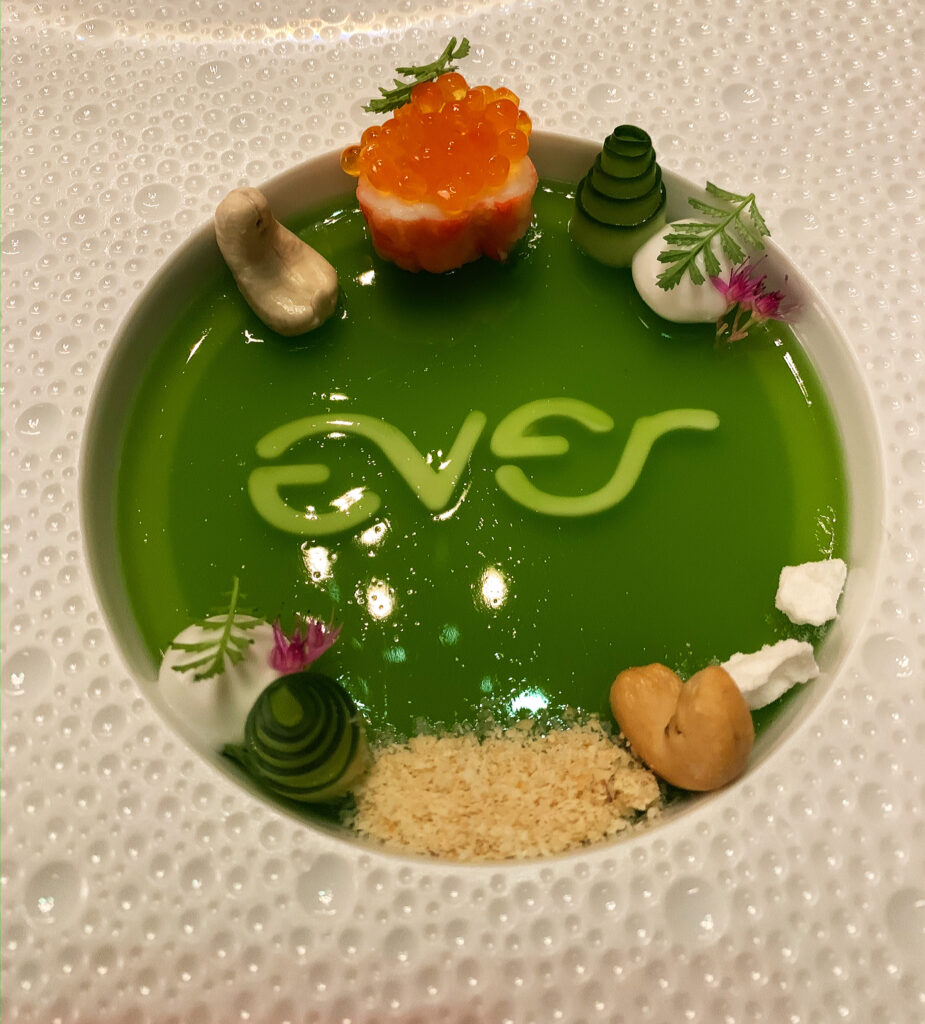
Really, the “money shot” would come right at the beginning and then you’d be left with a shallow bowl of Jell-O. Neither crab nor caviar resonated—in that sole bite—deeply enough to carry through the rest of the dish. And, while it felt fun to deconstruct such an intricate staging of bits and bobs, it was the headlining luxury ingredients that actually held the least presence. As an obscene bite staged for promotional purposes, the crab and caviar would certainly raise eyebrows. But the dish would have been more successful had the crustacean and roe elements been more amply spread throughout the base of gel. (Of course, that would run the risk of detracting from the Ever logo’s framing).
In the final analysis, the king crab and osetra in the dish acted as little more than luxury totems. Perhaps that’s why, wisely, the osetra was ultimately substituted for something more cost-effective. For Duffy did not demonstrate an ability to derive any particularly intense flavor from the ingredients. Rather, they were bit part players in an attractive presentation that could catch the eye and concisely tell the restaurant’s story on social media. While the dish fed a digital audience some vision of luxury, it did not succeed in delivering any kind of outrageous flavor or texture to the palates actually tasting it. “Osetra Caviar / King Crab” stood as a superficially—rather than substantively—pleasing start to the meal when it was served. A pairing of Champagne, as you might imagine, completed the illusion.
Starting in 2021, “Osetra Caviar / King Crab” would be replaced by a different dish titled “King Crab” that was used to begin the meal. The crustacean was again paired with cucumber; however, sudachi (a mutated variety of yuzu) and lemon balm now formed the accompanying elements. And the presentation, too, was something altogether different. Rather than emblazon Ever’s logo in green gel, Duffy dug up one of his signature preparations from Grace. (In fact, you have learned that the dish can be dated all the way back to the chef’s time at The Peninsula).
Guests are met with a conical crystal bowl that narrows at the bottom. A cap of sugar glass stretches just beneath the vessel’s rim. Impressively, it holds the weight of some trout roe, a gel made from the sudachi, sprigs of the lemon balm, and a couple dollops of unidentified cream. You are instructed to use your spoon to shatter the “glass,” sending its contents for a swim in the cold broth made of cucumber that sits below. Therein, one finds the titular “king crab”—rendered here as a healthy few chunks of meat with far greater presence on the palate.
There can be no doubt that this is one of Duffy’s legendary constructions. The dawning realization that one must break through such an intricately staged layer of “glass” to complete the dish is hard to recapture. But you find the process just as pleasing each and every time you are met with the preparation. The “shatter” texture of the broken shards is almost entirely unrepresented in any other composition. They impart a crunchy sweetness that plays off the pop of the roe, the sourness of the sudachi, the moist chunks of crab, and the all-enveloping refreshment of the cucumber broth. All the elements work to showcase the crustacean’s own latent sweetness, and—without any need of buttery or nutty notes—the dish still feels substantial.
Though Duffy does not “want to be a chef with a signature dish,” you applaud him for being humble enough to make a change. Though the original “Osetra Caviar / King Crab” course winked towards his classic preparation, it could not hold a candle to it in terms of eating experience. Frankly, it’s hard not to view that opening dish as little more than a visual gag and a waste of totemic luxury ingredients that would be better served as something more than baubles. Even if the chef had to look backward—rather than forward—to find a solution, you admire the decision to sacrifice novelty for guaranteed pleasure. You, certainly, are always charmed by the signature dish’s appearance at the table—and it’s just the sort of moment one relishes sharing with the first-timers one invites.
During your two most recent meals at Ever, the “King Crab” course was moved further down the menu as another one of Duffy’s signatures stepped in to start the meal. However, in this case, the classic element was only the vessel and not its constituents. You remember it from Grace: the glass “yogurt container” that arrived at the table boasting a telltale plastic lid. At the chef’s former restaurant, the dish might contain rabbit, morel, smoked paprika, and green garlic. At Ever, the bunny is substituted for “Scallop” (the dish’s title) with red pepper, hon shimeji (also known as beech mushroom), and green garlic. A later rendition saw the green garlic substituted for garlic scapes (which, appearing later in the season, serve much the same role).
Guests are presented with the vessel and invited to peel off the seal. This releases a plume of smoke from the interior of the container and reveals a sticky sauce on the lid’s underside. Instructions are given to lick that sauce before diving into the dish’s contents with your spoon. The process engages both a sense of wonder (the smoke and the vessel’s indiscernible contents) and one of nostalgia (the lid). Surely, licking that layer of yogurt off the seal’s underside is a ritual indulged in by some wide swath of the public—but it feels like a guilty pleasure. There’s an intimacy to the process that is subverted as it’s transported into a fine dining setting. The diner feels vulnerable for a second, but they cannot help but laugh. Ever’s foreboding ambiance transforms into a stage upon which the most meager of pleasures is allowed to shine. The restaurant makes clear that things are not as serious as they first appear.
That’s the genius of “Scallop’s” presentation, and the flavors follow suit. The sauce on the lid strikes you as tangy and sweet—you think it matches, in part, the globules of red pepper that sit at the bottom of the container. There are also Dippin’ Dot style bits made from blood orange, tiny heads of beech mushroom, and petal-sized pieces of the green garlic / scapes to dig through. But the plump pieces of bay scallop are undoubtedly the star. Their natural sweetness—not unlike the latter “King Crab” dish—is unleashed by the range of accompanying sweet, earthy, and sharp elements. And the minute textures of all those components ensure that the mollusk’s own chew dominates the palate. It’s a buttery, yielding sensation that stands as a superlative example of the ingredient. Thus, a pure representation of scallops’ texture and a novel expression of its favor (with regard to accompaniments) are fit into a memorable form. It might be particularly “memorable” for those who remember the vessel from Grace, but, once more, Duffy cannot be faulted for adapting a past favorite in order to please his guests.
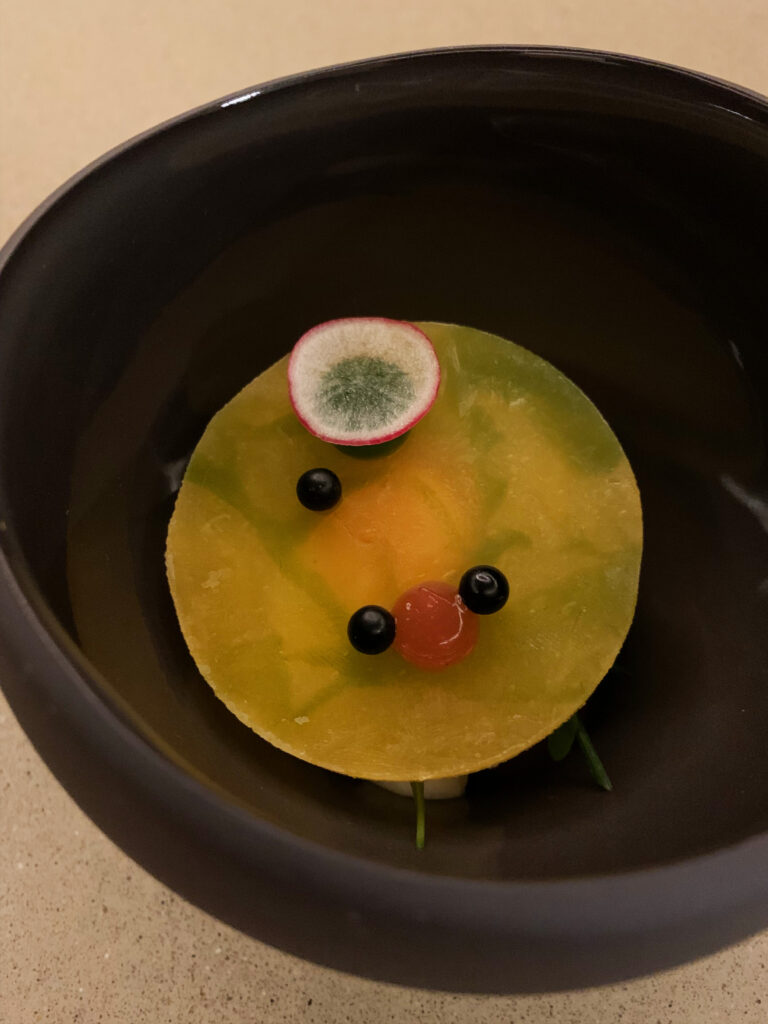
Ever’s second course—as seen during your first three visits in 2020—was titled “Tomato.” The dish comprised a colored tuile of brioche which obscured a circle of plump heirloom tomatoes, some bits of watermelon, and a few leaves of arugula. Most interestingly, the tuile was suspended on a bit of foam layered on top of a gazpacho-like tomato sorbet. You would shatter the top and enjoy the plump, bursting bites of the heirloom varietals alongside the crunch of the bread, snap of the greens, and slick, chilled consistency of the sorbet. The watermelon, too, offered the tomatoes an attractive tinge of sweetness.
But the dish only shone as a palate cleanser following the original “Osetra Caviar / King Crab” course. For, relative to that pitiful bite of crustacean and mass of cucumber gel, the more substantial textures of the brioche and tomatoes were actually pleasing. However, the flavors did not offer enough intensity to impress upon you why such a deconstruction of familiar flavors was valuable. The replacement “King Crab” dish—whose “sugar glass” shards succeed in offering a more unique shattered quality than the brioche—has outdone the “Tomato” across the board. You appreciate Duffy’s bid to showcase produce in a relatively pure form—and, you will admit, he succeeded in crafting a better tomato preparation a year later—but you must mark this particular preparation in the “pleasant but forgettable” category.
During your most recent meals in 2021, two different dishes have occupied the spot between “Scallop” and “King Crab.” The first of these, from June, was titled “Pea.” The striking presentation featured a favorite totem of Ever—a human skull—used as a mold for a purée of the titular green ingredient. That sat in the center and was surrounded by a laurel of fresh peas, mint, crumbled bits of ham, and apple. You were excited for this dish and found yourself satisfied by a textural level. The crunch of the ham, slight bite of the fresh peas, and smoothness of the purée demonstrated a pleasing interplay. But you found that the apple component added a bit too much sweetness to the composition for your palate. It offset what might have been a more savory, vegetal preparation with brightness and acid. Perhaps those notes speak more to the season, but it’s telling that the only other example of the pea-mint-apple combination you can find comes from a baby food recipe.
The more recent transition between “Scallop” and “King Crab,” as tasted this past August, was titled “Bean.” It, too, featured a molded skull purée at its center—though now rendered from beans. Joining it were snippets of green beans, slivers of almond, a few shreds of lemon, and oxalis (also known as wood sorrel). You also spotted a couple crumbles that look like croutons or bits of cornbread. Whatever the case—and it may very well be your preference for late (rather than early) summer flavors—“Bean” succeeded where “Pea” failed. The dish retained a similar textural harmony—now derived from the smoothness of the purée, snap of the beans, crunch of the nuts and oxalis stems, and the chew of the lemon and bread elements.
However, the constituent flavors now achieved a greater balance as well. Though the notes of lemon and sour-tart oxalis still offered a tinge of sweetness, the dish was primarily characterized by the earthier, greener notes of the beans made all the more savory by the slivers of almond. Surprisingly, that nutty “amandine” characteristic succeeded where the crumbled ham had failed—though, perhaps, it may simply be that the peas’ natural sweetness, amped up by its accompaniments, steered the dish overboard. For your palate, “Bean” refreshed without becoming sickly—all the more important given the sweet notes seen in both its preceding “Scallop” and succeeding “King Crab” courses. The dish presented a clear improvement over its forerunner by drawing on nostalgic notes of bean salad that better contrasted the surrounding segments of the menu.
While Ever’s recent menus have gone from “Scallop” to “Pea” or “Bean” to “King Crab,” the earlier menus—those which began with “Osetra Caviar / King Crab” and followed with “Tomato”—featured an alternate preparation of scallop as the third course. Also titled “Scallop” (and distinguished hereon as “version one”), the dish showcased Duffy’s so-called “delicate touch” better than anything else during those opening dinners.
The mollusk was placed opposite a piece of mango in a shallow bowl. Both were topped with small leaves of hoja santa—a slightly peppery Mexican herb that displays notes of anise and sassafras—and blanketed with translucent sheets of lardo (a cured pork fatback most famously made in Tuscany). They were joined on the plate by a dusting of yellow powder (which you venture to say was mango-related due to its matching color) along with a spoon holding a suspended orb of sauce (which, taking a guess once again, you want to say was made from the hoja santa).
In truth, the powder and gel elements—though bellwethers of the molecular gastronomy style—were not all that important. For the fundamental combination of tender scallop and juicy mango with a luscious, gossamer layer of pork fat was sublime. At the same time, the hoja santa’s complexity allowed the two ingredients to shine. The herb’s earthiness brought out the smoky quality of the lardo and the savoriness of the mollusk while its lemony-anise character enhanced the fruit and served to contrast the dish’s richness. Yes, the powdered and gelled components added an additional layer of intrigue in terms of texture and taste. But “Scallop” (version one)’s would have succeeded without those flourishes. It was a fundamentally delicious, simply conceived preparation that spoke to Duffy’s mastery of ingredients apart from any need to engineer them into novel forms.
The next dish first appeared during your final meal of 2020, and, since, has become a hallmark of Ever’s menu. Though it has been offered as the second or third course before, recent experiences have seen it follow “King Crab” as the meal’s fourth offering. When it comes to novel forms and unknown techniques—to presentations that surprise even the most experienced of diners—“Hamachi” might just be the most impressive of all Duffy’s creations since opening his new restaurant.
That titular fish—also known as amberjack or yellowtail—arrives as a trio of rigid paper-thin ribbons. Freeze-drying provides the hamachi with ample structure: one slice sits on its “back,” another on its side, and the last at its inflection point in a tangled sculpture at the center of the plate. Though the pieces of fish possess a telltale pale pink hue, their identity escaped you altogether at first. (You had heard the server describe the dish but could not imagine such a transformation). The hamachi is dressed with sauce made from ginger that runs appealingly down its curves. They slices sit atop a mixture of forbidden rice, finger lime, leaves of blue basil, and dollops of another sauce made from the same herb.
Digging in, you would think that whatever process allows the hamachi to achieve such rigidity would, necessarily, ruin the fish’s texture. However, once the flesh touches your tongue, it instantly warms and displays the smooth, fatty finish that makes it so popular at the sushi counter. Of course, the presence of ginger sauce and rice helps complete that illusion. Yet the forbidden rice possesses a more robust character that—along with the earthiness of the blue basil—ensures the hamachi is amply savory. The finger lime “caviar” strikes a similar note as the ginger; however, the fine pop of the pearls adds an added dimension of texture amplifies the pleasurable interplay of the melting fish and crumbly rice. “Hamachi” stands as an expression of Duffy’s technical virtuosity that, nonetheless, does not eschew pleasure. The dish’s textures are both surprising and sublime while the balance of flavor is well-conceived. You count the course alongside “Scallop” and “King Crab” as one of the chef’s signature—though, in this case, one that is altogether new. Bravo!
In fall of 2020 and winter of 2021—occasions where “Hamachi” appeared as the menu’s second course—the dish was followed by a preparation called “Parsnip.” The dish marked the first “ever” appearance of the restaurant’s totemic skull mold, and it also represented the transfer of its caviar from the “Osetra Caviar / King Crab” opener to a composition where it could act more as the star.
In its first iteration, “Parsnip” featured twirls and chunks of the namesake root vegetable alongside a purée of the same, some crispy potatoes, caviar, and pink parsley (both leaves and a sauce). The second iteration of the dish added a molded skull made from the parsnip purée and substituted the potato element for crisps, instead, made from leeks. As a reward for your continued patronage, that second version also saw a dollop of golden osetra replace the prior caviar topping (of a lesser grade).
Given the points of the season in which “Parsnip” appeared, it is no surprise that the dish stood as one of Ever’s most savory vegetable preparations. The composition was defined texturally by the tender chunks of the root vegetable, the smoothness of its purée, the pop of the caviar, and the crunch of the potato/leek element. The flavors, meanwhile, indulged primarily in earthiness with some latent sweetness, a bit of bitterness (from the parsley), and a nutty/salty quality (from both the roe and the herbal element). To your palate, the leek achieved more than the potato due to its sweeter character.
However, while you enjoyed seeing caviar boldly used to accent a humble vegetable, you do not think the dish allowed it to sing. Rather, you would taste a few pearls here and there as you worked your way through the various, robust textures on display. The roe was reduced to little more than a seasoning—a topping for a chip or a filling for a purée—where its delicacy was overshadowed. “Parsnip” possessed a warming, substantial quality that you enjoyed because it girded your stomach opposite some of the menu’s daintier fare. Intensity of savory flavor is something, no doubt, you lust for. But, perhaps, you found the dish a bit too reliant on the pizzazz of the caviar presentation (to say nothing of the skull). The complementary flavors did not amount to greater complexity but, rather, something muddled and one-note. Still, you appreciate Duffy’s devotion to the humble parsnip and to some interesting utilization of caviar—the luxury totem par excellence.
A dish titled “White Asparagus,” served during the spring and early summer of 2021, represented—in your mind—the refinement of the ideas presented in “Parsnip.” The titular spring vegetable was treated in much the same manner as the winter root—being transformed into a purée that was studded with a few tender chunks of its stalk (and one proud tower of its tip). Caviar, again, was interlaced throughout the plate. And the crispy element—rather than being made from potato or leek—was now derived from salsify. The pink parsley, too, was replaced by sea cress, whose leaves adorned the plate while also being used to form a thickened sauce. (Oh, and you should mention that the skull mold was now missing in action).
While you found “Parsnip” a bit heavy-handed in its pursuit of savoriness, “White Asparagus” achieved all the same richness of flavor in a streamlined packaged that also offered more complexity. Texturally, the smaller chunks of asparagus were more pleasing to chew, the slimmer strands of crispy salsify more manageably divided, and the sea cress sauce—far less of a liquid dressing than the parsley was—melded more easily into the other components. Of course, decreasing the size of the accompanying ingredients meant that the caviar’s presence on the palate could be better felt. The roe, in this case, was not haphazardly strewn throughout a puddle of sauce but formed myriad deposits throughout the plate. In terms of flavor, the white asparagus was milder and more buttery than the parsnip—meaning that the sweet/earthy salsify, vegetal/earthy sea cress, and nutty caviar could better combine to define the dish. It is that last partnership—between cress and caviar—that justifies the roe’s presence. Those subtle flavors of the sea give the dish a profound depth and made “White Asparagus” the pleasing vegetable composition that “Parsnip” hope to be.
It is at this point in the meal that the first service of bread arrives. Yes, first. (It’s delightful simply to write that). You are someone who longs for the days when fine dining’s ticket price included an overflowing basket boasting expertly crafted loaves of all flavors, shapes, and sizes. At L2O, Le Bernardin, or Bouley—some shining exemplars of the form—you could crunch on bread to your heart’s content. And staff took this as a compliment. They warmly received your sheepish request to try all the offerings, and they made it a point to perpetually return to the table. Bussers distinguished themselves through the speed with which they could replace your butter. And this manner of service ensured that those wary of meager portion sizes could buttress their experience by way of superlative baked goods worth the journey in their own right.
Ever might not tout a full tableside basket—you wonder if diners will ever seen their return—but the restaurant reliably serves three—and, most recently, four—different breads throughout the meal. The diversity of styles showcased by pastry chef Lucas Trahan on any given evening is something to be proud of. For even Smyth and Oriole limit guests to just one service of bread throughout their experience. Alinea—when it decides to indulge in the form—also does so more intentionally by pairing it with just one specific dish. Thus, in this regard, Ever carries the torch for an aspect of luxury hospitality threatened with extinction. It’s one in which the chef’s finesse can coexist with the obvious pleasure of a baked delight. It’s one where you really feel that all the kitchen’s resources are being drawn on to provide pleasure.
Some of the opening breads of the menu have included a beautifully flaky biscuit, a crisp-yet-chewy waffle, a wonderfully dense squash bread, a rounded milk bread, and a black truffle cornbread shaped like a ladyfinger. The type of bread offered has changed in accordance with the course served subsequent to its arrival—though some of the more classic forms (like the biscuit) have appeared throughout multiple menus.
Ever’s butter service has stayed more consistent: it arrives on an opaque pedestal looking like an abstract sculpture—the dairy product being shredded into ribbons somewhat reminiscent of the “Hamachi” presentation. An herbed version of the butter is placed alongside it—first, as quenelle, before being substituted in 2021 for smooth, ridged dollops that look like they come from an iSi siphon. Despite being topped with a few flakes of salt, you have not found the restaurant’s butter particularly flavorful but, nonetheless, have appreciated the sense of temperature and texture it offers the bread. And, to the restaurant’s credit, they are quick to replenish it as needed.
Moving on to the next course, Ever’s menus from fall of 2020 and winter of 2021 featured one of Duffy’s most comforting preparations of produce. The two dishes—“Butternut Squash” and “Kabocha Squash” as they were respectively titled—made use of different cultivars but were otherwise the same. The squash, in each case, was transformed into a kind of self-suspended “dumpling” then paired with a black olive chip, thin spirals of sliced apple, and oxalis (also known as wood sorrel). The ingredients all sat in the center of a shallow bowl dressed with a thin broth made—you imagine—from more squash and black olive.
Both preparations were defined principally by the main component’s texture—by the manner in which Duffy was able to engineer a novel sensation. Those squash “dumplings” reminded you a bit of Ferran Adriá’s famous spherified olives. They were not quite so delicate—in fact, it was the richness of the interior liquid that felt so pleasing—but sought the same kind of essence. The “dumplings” combined the creaminess of an entire squash soup and the flavor concentration of roasted squash in one small package. It was not a “Black Truffle Explosion” type of bite, but a flowing caress. It coated the palate and allowed for complicating notes of the earthy olive, sour-tart oxalis, and tangy-sweet apple to reveal still deeper dimensions of flavor. Along those lines, the sweeter butternut cultivar was paired with a red-skinned apple while the nuttier, earthier kabocha found itself juxtaposed by the green.
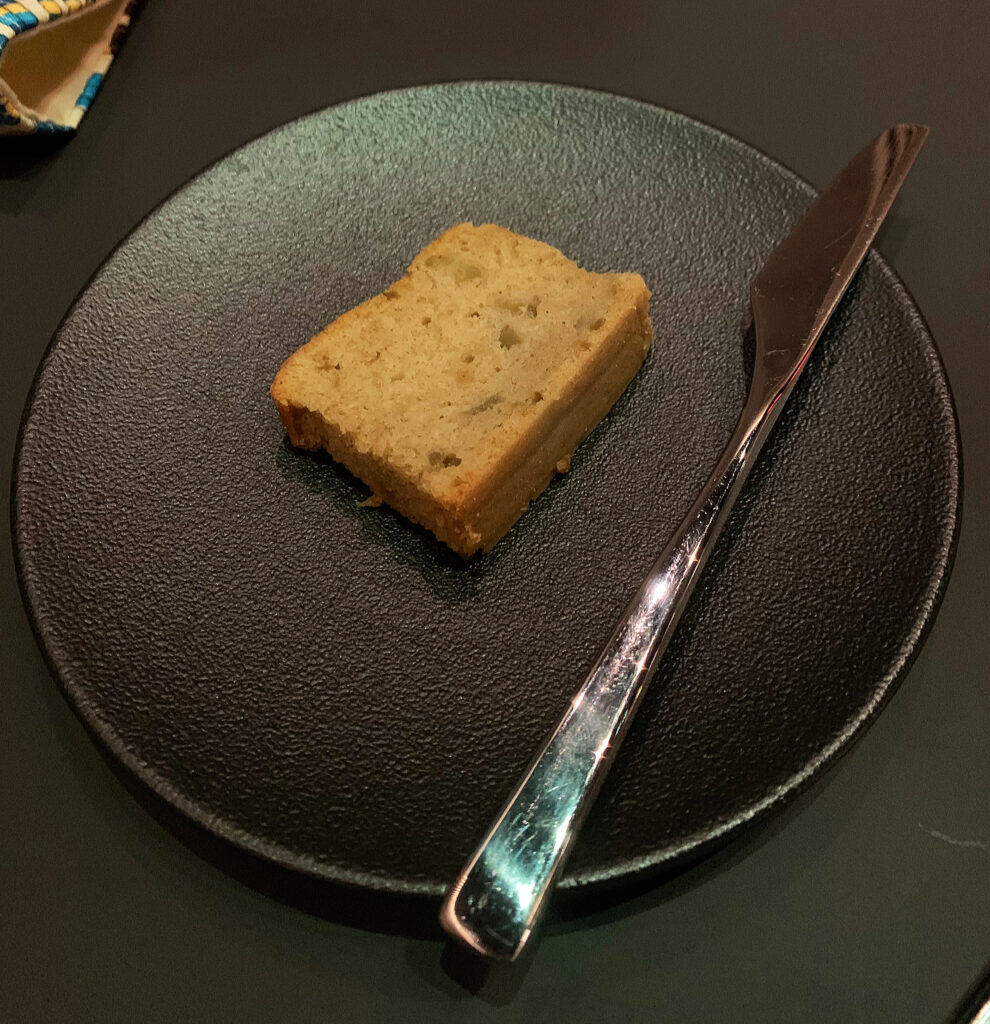
“Butternut Squash” and “Kabocha Squash” were highly technical preparations that, nonetheless, avoided having too many moving parts. More importantly, relative to the time of year in which they were served, the dishes touched upon an overarching cold weather nostalgia. They refined the squash’s textures—and those of typical accompaniments like olive and apple as well—without steering the flavors out into left field. Diners could enjoy squash as squash—the essence of squash—in a new way. That, you think, is a noble use of molecular gastronomy that does not leave the guest cold. And, while the dish certainly obeys the “law of diminishing returns” in terms of its portion size, the dense loaf of squash bread that accompanied it was one of the best baked goods Ever has “ever” served.
The next course was served during six of your eight meals at Ever, making it one of the restaurant’s most enduring items. The dish also stood as one of the menu’s most savory preparations of produce, a lynchpin against which brighter and lighter vegetable compositions could shine while also transitioning towards the presentations of fish and animal protein that laid ahead. Of course, few ingredients could play that particular part as well as mushrooms. And Duffy drew on the maitake—also known as the hen-of-the-wood—to anchor his creation.
“Maitake,” as the dish was called, contained a small head of the titular fungus (which comprises a tight cluster of stems and caps), tiny globules of toasted rice, some shreds of Idiazabal (a Basque cheese), a piece of crispy potato, and a garnish of either watercress or tatsoi (a relative of bok choy). The bowl also featured a thin layer of both and a thickened brownish sauce that you can only best describe as a kind of mushroom cream or exceptionally smooth purée. Texturally, the maitake was no doubt the star, displaying an attractive crunch without ever being undercooked. Here, as it usually does, the hen-of-the-wood’s complex interior structure lent the bites a pleasing heterogeneity as the gaps between the mushroom’s many heads collapsed into each other. The multitudinous specks of toasted rice fit themselves into those very same gaps, lending a layer of crispness to proceedings. As did the crispy potato—though in a chunkier form better suited to playing off of maitake’s stem.
However, while the dish offered a textural bonanza, the flavors—for your palate—never quite measured up. The maitake itself possessed a powerful earthiness—augmented, all the more, by the accompanying broth and dollop of purée—that melded with the toasted quality of the rice and the caramelized crunch of the potato. Though the watercress and tatsoi each offered contrasting peppery notes, their influence on the dish was minor. And that was also the case with the Idiazabal. The smoky, nutty, and buttery Basque cheese might have offered “Maitake” the complicating notes necessary to unleash all of the dish’s latent umami. But it’s presence on the palate was meager, and the preparation struck you as little more than a lot of texture, a lot of earth, in need of some captivating spark to truly shine. The right wine might have helped, yet a pairing of Vouvray sought to cut through the umami when it might have better benefited from a pour that enhanced it.
The next course strikes you as something of a kindred spirit to “Parsnip” and “White Asparagus”—insofar as it juxtaposes a totemic luxury ingredient against a humble expression of vegetable. It draws on a Midwestern staple—a regional totem if you will—and has taken several forms throughout your visits. The core idea is a simple one: sweet corn paired with black truffle. The first version of the dish appeared on Ever’s opening menu. You tasted it twice more before it was retired by the time of your fourth meal in September of 2020. When the restaurant reopened in February of 2021. The dish—no doubt, due to the end of black truffle season—had disappeared. Yet it returned—in a slightly altered form—that June and has displayed further refinement through your latest meal in August. It is telling that Duffy has continued to pursue this idea from year to year. For the combination is one you find fundamentally appealing, and its retention provides one of the most illustrative windows into the chef’s creative process.
The earlier version of the dish, titled “Sweet Corn,” featured a lone piece of stuffed pasta—that you can best describe as a tall, many-layered tortellino—surrounded by slices of black truffle and topped with a few thin strands of chive blossom alongside some chive blooms. The “dumpling” sat atop a mixture of corn kernels and polenta with an accompanying pool of foam and a small dollop of thickened sauce made from truffle. While “Sweet Corn” shone as, perhaps, the most decadent dish of Ever’s opening menu, the pleasure it offered was only relative. By being so direct in comparison to the other courses—corn on corn, truffle on truffle—it was sure to stand out. The pasta was well made and pleasantly chewy; the corn and polenta offered a pleasing pop and smoothness. However, the flavors did not regale you with their intensity. The dish would not have impressed had it been served at Spiaggia, and you were left wondering to what degree the kitchen’s ingenuity was really on display. It felt like guests were being thrown a bone—but not one tasty enough to eclipse simply visiting one of Chicago’s Italian restaurants for a superlative expression of the form—let alone the flavor combination, which is not altogether unseen elsewhere.
In June of 2021, you tasted the first rendition of the corn-truffle combination’s second iteration. (Though, perhaps, you should say truffle-corn as the dish had been renamed “Black Truffle” to emphasize its luxurious element). The pasta element was now gone. Instead, you were presented with a bowl of corn purée studded with dollops of black truffle sauce, slices of truffle, tiny pieces of popcorn, and those same chive blooms. An “ash” element was introduced via a thin liquid that sat on top of the purée.
Compared to 2020’s “Sweet Corn,” “Black Truffle” was certainly more true to Duffy’s style. It displayed a heightened textural refinement and a concentration of each constituent ingredient into a much smaller form. The corn purée acted as a substitute for both the former dish’s kernels and its polenta element. That enabled the popped corn, chive blooms, and slices of truffle to display greater presence on the palate. The ash component—surely a reference to the nixtamalization process—brought an intriguing smoky note to the table. But you still found the corn and truffle flavors to be muted. And frankly, the latter possessed almost no aroma and the slices were too thick and coin-like to be texturally pleasing. But it was a step in the right direction.
The version of “Black Truffle” served to you in August of 2021 undoubtedly stood as the apotheosis of Duffy’s corn-truffle idea. The corn purée was no longer hidden underneath a puddle of the ash-accented liquid. Its yellow color shone out from the bottom of the plate with the dollops of truffle sauce, too, better hidden. The truffle slices themselves were much thinner and larger in size. They dwarfed the pieces of popped corn and the chive blooms (now positively miniscule), ensuring that the namesake element was appropriately the dish’s textural star. The whole composition was better arranged—the slices serving to guide the guest towards taking comprehensive spoonfuls that could combine all the flavors. And you thought the flavors were better developed as well: the corn purée displayed greater sweetness and—along with the ash—helped tease out that ephemeral earthy, nutty quality from the truffle. You certainly think more could be done to turn the dish into something truly mind-blowing, yet you finally think the combination comes off well. Duffy deserves credit for doggedly pursuing perfection in the same manner advertised—and the accompanying serving of truffle cornbread was a wonderful surprise!
One of the most recent additions to Ever’s menu has, once more, showcased the tomato. However, being served after the “Black Truffle” course, the dish—by very nature of its place in the meal—promises a more powerful savory profile than the tomato, watermelon, brioche, and arugula composition served at the time of the restaurant’s opening. “Tomato” (version two) is, in your opinion, one of Duffy’s most visually appealing creations. It eschews the abstraction seen elsewhere and, instead, deifies its ingredients. Multicolored heirloom tomatoes sit at the center of a latticed crystal bowl looking like so many shimmering gemstones. That lacquered effect is conjured by way of a gossamer layer of Manchego cheese melted onto their surface. The tomatoes are accompanied by some cherries and a sauce made—you think—from the same fruit. The plating is finished with some green droplets that are carefully inlaid in the sauce and a garnish of lilies.
Whereas “Tomato” (version one) transformed its namesake into a refreshing—yet shallow—sorbet, version two indulged more fully in the ingredient’s depth of flavor. In terms of form, the difference was obvious. Each tomato on the plate was plump and mouthfilling in its acidity (with just a hint of sweetness). The translucent cloak of Manchego—though thin enough to escape attention—ensured that each bite resonated with an undercurrent of nutty, caramelly notes that balanced the main component’s freshness with that familiar foil of cheese. That ensured the tomatoes’ savory character came to the fore, only for the pitted cherry pieces and enveloping cherry sauce to surge forth with an even greater sense of sweetness.
The back and forth was beautiful: sharp acidity moderated by Manchego then contrasted by ripe fruit. This flow of flavors ensured that the tomatoes’ own latent sweetness—kept in the background—reached its crescendo as you worked your way through the dish. The course was dynamic and pleasantly intense throughout. It paired beautifully with an accompanying tomato focaccia—and, in the opinion of one of your guests, it surpassed a similar “simple” presentation of tomatoes seen at Smyth the week before. Bravo!
At this point in the meal, Ever typically delivers its second service of bread. While certain preparations necessitate more particular pairings—“Black Truffle” with its cornbread or “Tomato” (version two) with its focaccia—this moment has remained consistent across half of your visits. The bread in question is made in a pretzel style. Originally, it was executed in a braided baguette form that yielded four or five tiny niblets that could be individually smattered with butter. However, more recently, the bread has arrived as a fully-enclosed braid boasting consistent browning throughout its crust. While the amount of dimpling on the outer layer has varied—on one occasion, the pretzel was impressively smooth throughout—the baked good has always been impressively dense and carefully salted. More importantly, it has formed a welcome harbinger of (and companion to) what has become the restaurant’s signature preparation of fish.
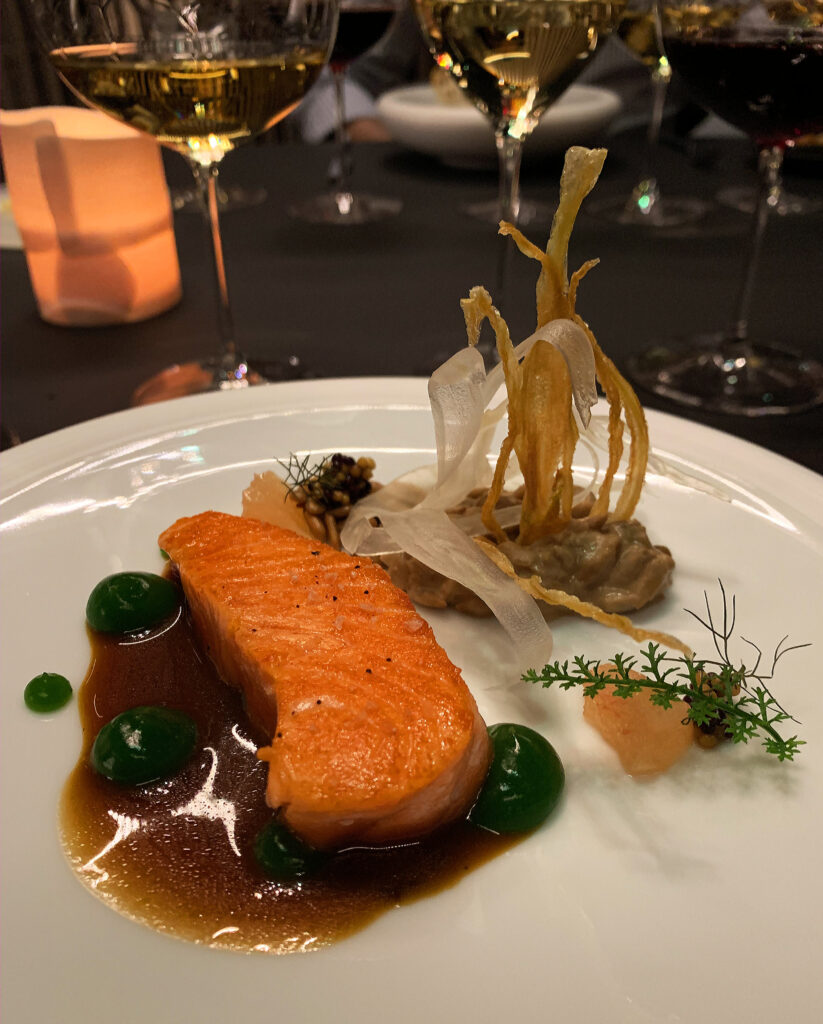
Salmon has featured in five of the eight meals you have experienced at Ever. The fish first appeared in a course titled “King Salmon” in September of 2020 before transforming into a different preparation—simply titled “Salmon”—throughout the entirety of 2021. However, while nominally different, the two versions of the dish generally possessed the same composition and sought a similar flavor balance. But, looking across all five different presentations, no two are exactly identical. Duffy clearly has become enamored with a certain vision of how to serve the fish—citrus and fennel acting as its essential foils. But his salmon preparations—as much as any creation seen at the restaurant thus far—speak to a creative mind that is never quite satisfied. And—frankly—after eating five renditions of the dish, you must admit that the chef’s latest preparation reached unsurpassed heights.
“King Salmon,” the original version of the course, combined a glistening fillet of its namesake fish with some segments of grapefruit, strands of shaved raw fennel, a crispy chip made of fennel, and yarrow (a flower whose pronounced bitter, slightly aniseed leaves are often compared to the milder chervil). The fennel elements sprung out from a creamy mound of what looked like risotto while the salmon itself sat atop an unidentified jus studded with green globules (also derived from yarrow?)
“Salmon,” in its first three iterations, followed along the same lines. The shaved fennel and fennel chip remained (though in a slightly smaller size). The grapefruit segments were substituted for those made of orange. And the yarrow was given a more minor supporting role in favor of mustard, whose seeds now laced the accompanying jus and formed a base upon which the citrus sat. The risotto-like substance in which the fennel pieces originally sat was also exchanged for a purée whose white color leads you to believe it was also made of fennel. But the dish still revolved around a pristine hunk of fish whose depth of flavor and textural intrigue was primarily derived from the same (or similar) surrounding components.
Though technically sound, these first four salmon preparations never blew you away. Yes, the fish’s flesh was succulent—needing nothing more than the side of a fork to reveal its moist flakes. But, even accounting for the slight crosshatched pattern appended to the top of the fillet, the texture was ultimately one-note. The fish was homogenous in the same manner as any sous vide preparation might be, which—due to the thickness of serving—meant that the plate’s other components needed to impress. Along those lines, the crunch of the raw fennel, crispness of the fennel chips, burst of the grapefruit/orange, pop of the mustard seeds, and smoothness of the purée offered a contrasting mouthfeel. The notes of acid, bitter, piquancy, sweetness, and licorice offered a variety of flavor. But no one bite ever struck you as totally cohesive or impressively intense in its flavor. The dish prized the salmon’s own impressive texture but abandoned the construction of its depth of flavor to the diffuse elements around the plate. Unless you were particularly methodical about combining components, some bites struck you as altogether plain.
Yet, in its fifth appearance, “Salmon” finally struck you as something special. Nearly a year after the dish first appeared on Ever’s menu, Duffy had found the fish’s superlative the form. The answer, as it so often does, came about through greater concentration of flavor and texture. Rather than merely forming a glistening slab of succulent flesh, the fillet now struck you with its beautifully crisped top layer. It cracked cleanly and revealed the same moist interior as before but offered an all-important heterogeneity (as well as a hint of char) to each bite. The overall composition, too, had tightened up considerably. The fennel pieces and accompanying purée were notably reduced in size; meanwhile, the orange segments, mustard seed, and yarrow now formed two distinct deposits on the plate. Yes, the piece of salmon was actually smaller as well. But you were not left missing the larger portion size.
For the path around the plate was now altogether clearer: three or four bites of fish each matched with one of the accompanying sections. This morsel would pair with the citrus segment, another with the fennel elements, one more with the citrus, and—perhaps—a final piece with the remaining jus, mustard, and green sauce globules. Thus, rather than being faced with chunks of salmon in search of flavor intensity, each bit of the fish had its partner. And, fundamentally, the ratio of the crisp top layer to the flaky interior ensured that the latter shone even more than when it was nearly twice as thick (but not at all contrasted). The salmon could finally stand proudly by itself as a balanced, pleasing piece of fish. From that basis, Duffy’s intricate assemblage of ingredients could extend and enhance flavors and textures that were already fundamentally delicious. In this final form, “Salmon” finally proved why it deserves its longstanding spot on the restaurant’s menu.
Prior to the addition of “King Salmon” / “Salmon,” Ever once served a preparation of lamb in its place. While such a direct comparison seems strange, the composition made use of several elements that would later be seen in the fish dish. Namely, the plate featured a similar flourish of shaved fennel and crispy fennel jutting out from an accompanying purée. It also contained segments of citrus, green globules of sauce, and a smattering of mustard seeds deposited around the plate. But the similarities end there, and Duffy cannot be blamed for holding onto a supporting cast of ingredients whose interplay he found pleasing enough to import elsewhere.
“Lamb,” as the course was titled, comprised a strip of the animal’s loin topped with a medallion taken from its tongue. The third of three times you were served the dish, the tongue portion had disappeared in favor of a thicker cut of the loin. A wedge of pommes Anna—in that particular presentation—also adorned the plate. In all its forms—and discounting the aforementioned holdovers from the “Salmon” preparation—the dish was also characterized by a puddle of lamb jus and the presence of mâche, a delicate lettuce known for its nutty flavor.
Though the appearance of the crisply-layered pommes Anna and the larger cut of meat pleased you, “Lamb’s” most successful element was probably the presence of the animal’s tongue in its first two renditions. For that element struck with the greatest intensity of flavor while still displaying ample tenderness. The bigger piece of lamb loin that appeared later on was something like the hunks of salmon that previously defined that fish dish. While impressive on some level, their girth also demands more ample seasoning to truly shine. And the fennel, citrus, mustard combination—however cleverly executed in terms of form—does more to contrast rather than enrich.
The tongue and smaller strip of loin necessarily possessed greater flavor concentration and maintained a more balanced ratio with their accompaniments. The larger strip of loin indulged in a “meat and potatoes” quality that, while soothing to diners worried about small portion sizes, moved somewhat away from Ever’s ethos. While “Lamb” was undoubtedly one of the restaurant’s best “wine dishes,” the meat’s partnering ingredients have been better utilized as a foil for the salmon. That is to say, the dish shone through its generous portion of flesh but did not necessarily utilize it in the most pleasing of ways. You would not mind seeing some preparation of the animal reappear with a greater emphasis on savory richness—perhaps then Ever’s guests would have an excuse to pop open some of those treasures from the Rhône.
At this point in the meal, the final service of bread occurs. You have seen only two different varieties utilized in this role, which both accorded with the closing savory course that shortly followed. That final dish, in one form or another, has always featured Japanese beef. So a paired milk bread bun would seem to make sense. That was the bread served during your meals in 2020 and, while competently executed, it did not distinguish itself. Perhaps its plainer nature (relative to something like the biscuit, cornbread, or pretzel) meant that the bun fell short when eaten with the same old butter. Perhaps you should have shown better discipline and retained some amount of the milk bread to dip in the beef dish’s juices. You will not deny that such a soaking would have provided the deeper flavor you were after, but Ever’s rendition does not outdo Oriole’s longstanding example (served with koji butter). And you are also comfortable saying that Duffy’s breads—but for the squash loaf—charm without ever displaying full-blown mastery of the chosen form.
2021’s meals have seen the arrival of a Colombian cheese bread that has substituted for the milk bread variety. While the latter creation was defined by its soft and spongey nature, the former possesses a more crumbly character. Pandebono, as it is called, is typically made from yucca flour, corn flour, eggs, and fresh cow’s milk cheese. In Colombia, the “bonus bread” is eaten for breakfast or as a snack with coffee. At Ever, it complements a superlatively fatty expression of beef. But you appreciate the chance to experience a new kind of baked good, and, over time, the pastry chef has transformed the pandebono’s crustfrom pale white and smooth into beautifully golden brown and craggy. The bread carries a density and depth of flavor that makes it better suited for the end of the meal. You think it stands as a clear improvement over what came before.
Duffy draws the meal towards its denouement by utilizing the nec plus ultra of steaks. “Wagyu”—the word sends shivers down the inexperienced “foodie’s” spine. The mythos surrounding the longstanding luxury totem strikes you today as something like a child’s fairy tale: prized Japanese cows, given massages and beer (not really), yielding superlative marbling (rated up to A5) with melt-in-your-mouth, unctuous, eat-it-to-believe-it, worth-its-weight-in-gold quality.
In your opinion, the surfeit of luxury Japanese beef served on American tasting menus is a damn shame. The very best cuts from the very best cows never make it to Chicago. They’d be prohibitively expensive if they did (look at what RPM Steak and Gibsons charge for 3 oz. of Olive Beef), and they amount to little more than a fetishization of tenderness at a cost to flavor. Undiscerning diners are led to expect that a high-priced menu must serve wagyu. They prostrate themselves before meager pieces of striploin that inhibit any greater creative expression from the kitchen at what should be the meal’s grand finale of decadence.
Your beef is not with beef but the sacredness of wagyu as a luxury totem. Why not serve A3- or A4-rated steaks from Japan that retain some depth of flavor and sense of “chew”? (Why? Because the Japanese keep the “good stuff” to themselves). It is ludicrous that so many of Chicago’s fine dining restaurants unthinkingly serve the same “A5 Miyazaki wagyu,” acting as little more than pimps for their purveyor. It’s a shame that so many chefs rely on the easy appeal of a recognizable luxury name—perpetuating the denial of domestic terroir—rather than choose from the endless cuts and preparations of beef (or any meat) to showcase. “American wagyu” presents some solution—but is it really any better to offer guests a mere compromise on the same pigheaded gambit? You dream of partnerships with local farms delivering meat from herds that speak to place. You lust for servings of animal protein that strike you with their uniqueness rather than seeking only to justify the meals ticket price.
That being said, Ever can hardly be faulted for worshipping at the altar of wagyu. When Alinea and Oriole commit the same sin every evening, who would dare to subvert such ironclad consumer expectations? The “best ever” restaurant, surely, must serve the “best ever” beef. And, you must admit that Duffy displays some ingenuity in how he deals with the coveted ingredient. His beef course has been titled “Wagyu,” “Miyazaki,” and “Short Rib” at various times. It has been served following “Lamb,” “King Salmon” / “Salmon,” and even “Maitake” (just once). But, despite these small variations, you will consider how Ever has approached its final savory course of beef across the range of your experiences.
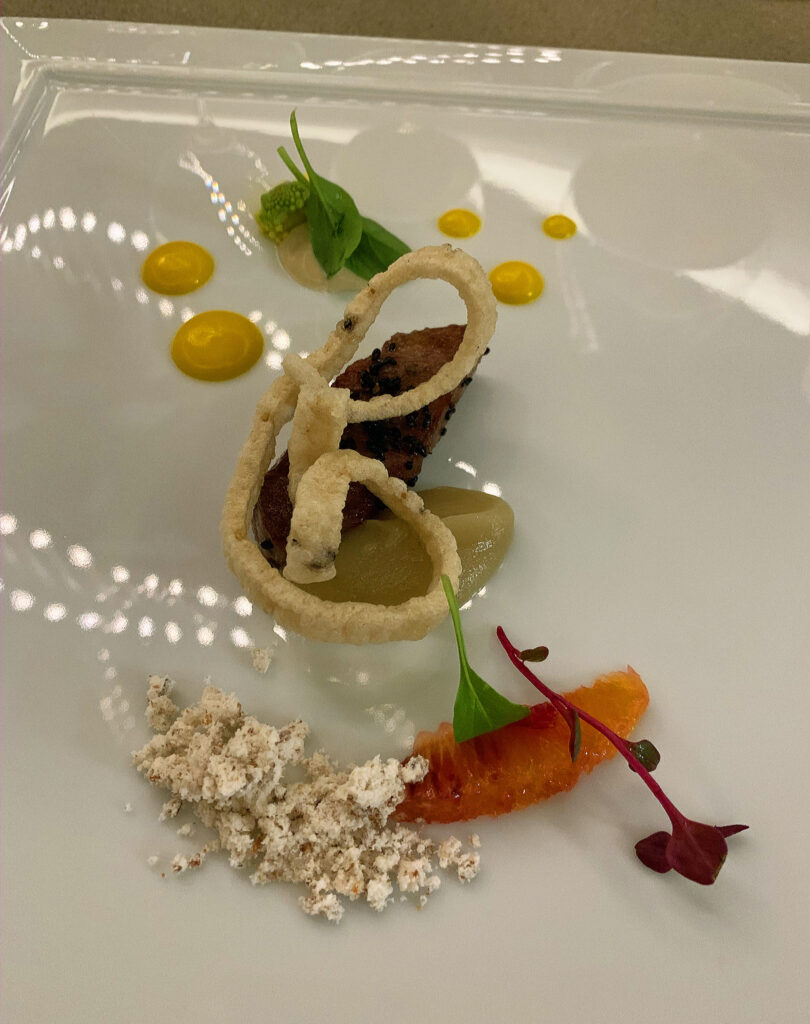
The restaurant’s inaugural preparation of beef—titled “Wagyu” and then “Miyazaki” across your first three visits—comprised a small piece of A5 striploin, a segment of orange, a crispy curl of sunchoke, and leaves of tatsoi (that would ultimately find their way into the “Maitake” preparation). The plate was accented by some brightly-colored sauces, an interesting shredded/crumbled element that looked like cheese, and a wee bit of Romanesco.
Though the beef was expertly prepared—seared on the outside and luscious within—it felt rationed. The accompaniments, rather than extending and enhancing the steak’s savory character, contrasted it. (That nutty, earthy crisp of sunchoke being, perhaps, the one exception). The burst of sweetness from the citrus and the vegetal quality of the tatsoi/Romanesco—while they helped the wagyu’s flavor shine—emphasized starkly how few bites of meat there really were. That is to say, you would slice the steak into three or four pieces, drag them around the plate, let them melt in your mouth, and the show would be over. Time for dessert!
The problem was not simply one of portion size but of overall impression. The dish sought refinement without conjuring any sense of indulgence. It put its totemic ingredient on a pedestal to help perpetuate the luxury hype. Diners who had never tasted wagyu might be seduced by the precious portion allotted to them, but—as someone for whom the ingredient’s mere presence on a tasting menu is no panacea—Duffy’s presentation felt like a reiteration of something you’d been served countless times. The course was anonymous and—dare you say—a bit cynical. A serving of wagyu in the hands of a talented chef should always strike guests with a level of satisfaction that belies its tiny size. It should convince skeptics as to why the ingredient is so coveted—not merely play to the true believers desperate for their few scraps.
Ever’s most successful preparation of beef appeared in September of 2020 and February of 2021. That dish spurned the luxury moniker and was, instead, titled “Short Rib.” But it did not altogether abandon that totemic wagyu element. Rather, it allowed the A5 Miyazaki to play purely to its strength while delivering a more pleasing and comprehensive showcase of meat on the plate.
That covering of all the bases occurred by way of a centerpiece. “Short Rib” was presaged by the arrival of a platter containing branches of juniper. The leaves released some of their aromatic quality thanks to a few carefully placed hot stones. On each of them sat a sizzling skewer of A5 Miyazaki sirloin whose own delectable scent—to say nothing of the auditory element—set tongues wagging. Plates bearing the actual short rib—accompanied by celery root, cranberry, and hoja santa—would then arrived, treating guests to a one-two punch of meaty goodness.
Naturally, you would go straight for the wagyu. On the first occasion, it was topped with a halved cranberry and bit of hoja santa to match the main plate. On the second, it was served unadorned. In both cases, the skewer offered a beautiful nugget of flesh with ample thickness to really showcase just why beef of such marbling is so beloved. You think, due to the tableside searing, the wagyu did not demand any accompaniments (as nice as the continuity to the short rib seemed). For, in this case, it was fine to put the A5 on a pedestal. It could shine as a textural jewel without detracting from the course’s greater composition. The skewer allowed Duffy to satisfy those diners for whom beef of such quality is a rarity and do so directly. At the same time, he could flesh out some further expression of the protein without bowing fully before the luxury totem.
That, of course, occurred on the main plate. A beautiful slab of short rib—twice or three times the size of the striploin served in the former “Wagyu” / “Miyazaki” course—was blanketed by a thin veil of celery root. It was joined by a purée made from the same vegetable, some cranberries, and more of the hoja santa leaves. A crisp made from celery root completed the first presentation of the dish while, on the second occasion, a puffed piece of beef tendon provided textural contrast. In both cases, the short rib satisfied exactly what you wanted from Duffy’s beef preparations. The portion was generous, and the accompaniments—defined by the captivating combination of nutty celeriac, tangy-sweet cranberry, and sassafras-flavored hoja santa—smacked of decadence. The meat melted in your mouth—a sensation offset by the plate’s crisp elements—and left you feeling far more satiated. Joined by the wagyu skewer, “Short Rib” expertly combined refinement with pure pleasure. And, you must admit, it would make for a beautiful pairing alongside any of Ever’s cult Cabernets.
The most recent preparation of beef—served in April, June, and August of 2021—reverted to the name “Miyazaki.” Though focusing once more on the luxury totem, the course still marks a clear improvement from the inaugural “Wagyu” / “Miyazaki” composition from 2020.
Rather than offering only a lone piece of striploin on a sparsely decorated plate, the newest dish is far more cohesive. The center of the plate is dominated by a larger version of the puffed tendon seen in the earlier presentation. Here, it looks more like an abstract sculpture on and around which are positioned halved grapes, a bit of parsnip, dots of green sauce, and a variety of herbs (like miner’s lettuce and hyssop). The wagyu, of course, is still the star. Notably, however, it is now rendered three ways. The plate contains the familiar striploin, a separate nugget of (you think) sirloin, and a glistening slice of raw meat draped over the peak of the puffed rice. Another sauce—made from anchovy—weaves its way around the bites.
Visually, “Miyazaki” (version two) is infinitely more appealing. The serving of protein might not amount to drastically more than the prior preparation, but the variety of cuts and their centering around the puffed rice create a greater sense of engagement. Diners become involved in breaking the chip apart and working their way through the various bits and pieces on the plate rather than simply portioning a solitary steak and dragging it through a couple different sauces with a couple additional components. The raw slice of wagyu—which has improved considerably (see the photos) from a lifeless ruffle into a shining testament to the meat’s fattiness—is an intelligent way to celebrate the ingredient’s marbling. But serving it atop the puffed tendon—it must be said—is a trick that dates back to Grace.
Elements like the anchovy sauce and parsnip provide some of the savory backing you had been looking for in the inaugural “Wagyu” / “Miyazaki” course from 2020. The grapes form an intriguing contrasting note while bringing their own texture to the party. The same goes for the lemony miner’s lettuce and slightly bitter hyssop. You suppose that contrasting the A5 striploin with its sirloin counterpart and the totally raw form feels like a deeper delve into the character of wagyu as a luxury totem. It’s an intelligent presentation—whereas the short rib (opposite the skewer) offered greater hedonistic appeal. Featuring a trio of cuts is probably the stronger idea at the end of the day; however, you would recommend that Duffy excise the puffed tendon from the presentation. For, while it forms an attractive vessel for the raw cut, it is ultimately flavorless and could make way for a more satisfying component that further enriches the dish.
Just last evening—during a ninth visit to the restaurant (just prior to this review’s publication)—you witnessed yet one more refinement of the “Miyazaki” preparation. The puffed tendon and thin slice of beef had been transformed into an accompanying bite that guests unpin off of an accompanying vessel. The ratio between the two elements was much better managed, and the plate containing the actual steak was finally free of such an overwhelming textural element. In a rather minimalist fashion reminiscent of Ever’s inaugural “Wagyu” presentation, the striploin was paired a few king trumpet mushrooms, strands of crispy onion, sorrel, a sauce made from Jimmy Nardello peppers, and thicker cream made from smoked coconut. The beef was also accompanied by a small cabbage roll.
You feared that the return to a more minimalist preparation might have invoked the same feeling of sparseness as before. But this latest version of “Miyazaki” was by far the best yet. The mushroom, onion, and pepper elements provided the meat with exactly the kind of savory backing you had been looking for. The Jimmy Nardello’s, in particular, made for a bite that was in some way reminiscent of an Italian beef sandwich—how’s that for nostalgia. At the same time, when paired with the coconut cream, the peppers helped introduce a surprising sweetness. It offered—along with the hints of sorrel—a bold and refreshing contrast to the wagyu’s richness. And the cabbage roll, too, formed a tasty vegetal reprieve. This latest preparation demonstrated that Duffy can imbue a seemingly “sparse” plate with a whole lot of flavor. All the more, he can weave interesting flavor combinations that do not necessarily deny a sense of savory satisfaction. You applaud how ceaselessly the chef has sought to refine his wagyu preparation while still pursuing a unique expression of the ingredient.
The savory portion of the evening having come to a close, a palate cleanser sometimes arrives. In July and August of 2020, that took the form of a pineapple sorbet flavored with chartreuse, licorice, and mint. In August of 2021—the next time such a course appeared—the palate cleanser comprised a melon sorbet flavored with prickly pear, sesame, and that old stalwart hoja santa. Both dishes, you must say, were quite pleasing. But the more recent example—enlivened by the bubble gum flavor of the prickly pear, nuttiness of the sesame, and sassafras note of the hoja santa—absolutely sang. While not particularly pretty, the melon dish seamlessly melded its various layers of flavor into cohesive whole with stunning intensity. It stood as the rare kind of palate cleanser that, rather than simply serving as a transitional tool, could really be considered its own “course.” And it reflected, you think, one of the restaurant’s most masterful combinations of ingredients.
The next course—served from September of 2020 through June of 2021—quickly became one of Ever’s signatures. It even still features as the restaurant’s banner image on Tock! While that’s something of a strange honor for a dessert, the dish—titled “Beet” (and also appearing once in an alternate form called “Strawberry”)—was undoubtedly the most hedonistic and outright pleasing of all the dishes Ever has served.
“Beet” comprised a cream cheese ice cream dusted with a vivid red powder made of beet and finished with bee pollen, flaky salt, and a leaf of lemon verbena. The alternative form—“Strawberry”—exchanged the beet powder for strawberry powder and the pollen for einkorn, a primitive form of wheat that boasts a deeply nutty, toasty character. In both versions of the dish, the cream cheese ice cream struck first. It was not so cold as to numb the palate; rather, it stretched across the tongue and imparted a powerful sweet-sour-creamy sensation. Then, the ice cream’s powdered coating came to the fore: that could be the earthy-sweet beet or the fruity-sweet strawberry, but both doubled down own the pleasure by contrasting the latent sourness. Finally, the closing element arrived—be that the honeyed bee pollen or the nutty einkorn. While the former played well off of the earthy notes of beet, the latter worked to ground the sweeter notes of strawberry.
In each case, the dish was an absolute marvel and a rightful standard-bearer for the restaurant. “Beet” and “Strawberry” delivered a full-throttle experience of sweetness that was never out of balance. They expertly managed complementary flavors in such a way that they enhanced—rather than overshadowed or overwhelmed—each other. You do not hesitate to say it is one of the best desserts you have ever tasted. And, while it has been tough to see the dish go, you must respect Duffy for charging onward towards the next great creation.
The next dessert course—which has, on a couple occasions, directly followed “Beet” or “Strawberry”—offers one of the meal’s greatest presentational flourishes. It’s a dish that, once more, you have seen take two forms: “Rhubarb” (with accompanying flavors of honey, lime, and hibiscus) and “Peach” (with accompanying flavors of cardamom, marionberry, and thyme). In both variants, guests are given a large rimmed, translucent dish with a hollow bowled center that acts like something of a pedestal. The principle ingredients—slices of fruit, flavored chews, crisps, cakes, and creams made from the constituent elements—form an attractive tableau that curves around the plate. Meanwhile, dry ice sits at the center of the hollow bowl and releases its plumes up, out, and across the rim.
It all looks rather pretty—and you would forgive anyone who thought the presentation was over. But the server pours some liquid—either hibiscus- or thyme-based depending on the version—into that bowl and gives the vessel a swirl. The plumes increase in size and frequency. They now possess an aromatic quality that sets the mood for enjoyment of the morsels before you. “Very nice,” you think. You’ve had your sense of smell invoked as recently as the wagyu skewer / juniper branch set piece. It’s nice to see such a trick used to add greater character to a mere dessert. But that’s not the whole story.
With just a bit of time, the plumes of dry ice and liquid froth, bubble, and spill out onto the rim of the plate. The foam is incredibly light but filled with flavor, and you are invited to actually consume the substance as you make your way through the dish’s components. Thus, a bite of rhubarb or honeycomb cookie is imbued with a tart note of hibiscus. A slice of peach or scoop of cardamom ice cream is accompanied with an undercurrent of thyme. The substance of the dessert—truth be told—cannot match the decadence of “Beet” or “Strawberry.” But the movement from presentational flourish into actual, edible accompaniment is sudden and striking. Generating foam in such a manner is genius, and it’s a trick Ever can draw on in all sorts of ways to deliver ethereal complementary flavors.
The final course of Ever’s menu has taken one of three principle forms across the range of your visits. The first—titled “Chocolate”—featured across the four meals you experienced at the restaurant in 2020. The inaugural preparation combined curved sheets of the namesake confection with a honey ice cream, “balm,” and lemon verbena. The second rendition utilized thinner shreds of chocolate and paired them with pearls of finger lime, powdered banana, and hibiscus. The third and final version you tasted transformed the chocolate into thin, icing-like ribbons that were studded with hazelnuts and sat atop pieces of mango.
While these dishes were visually striking, they fell far short of offering the decadence one expects from a closing dessert. “Chocolate” delivered but a taste of its titular element—intelligently juxtaposed but in no way indulgent. The third preparation, by your measure, was the best due to the texture of the chocolate strands and complement of the hazelnut. And perhaps it is wrong to expect that Duffy not experiment to the same degree he does elsewhere with such a beloved ingredient. Must chocolate only ever look to satisfy? Can it not challenge palates? Such questions are worth considering, but each of the dishes left you feeling perturbed that the meal was already over.
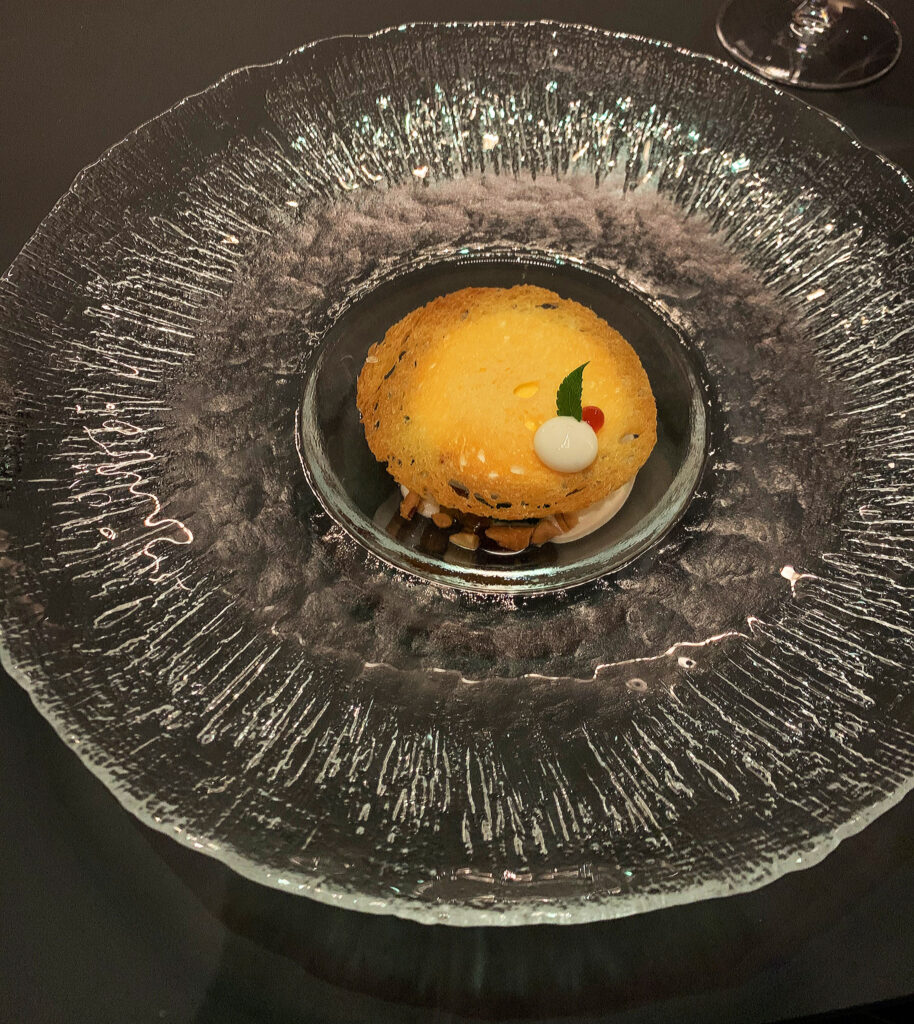
“Persimmon,” the second closing dessert course you experienced, was placed in the difficult position of following on the heels of “Beet.” After tasting the cream cheese creation’s superlative intensity of flavor, how could any other dish compete? Really, how could it? The combination of persimmon ice cream, chocolate, cashew, and anise hyssop covered by an attractive persimmon tuile outdid all of the “Chocolate” preparations. Perhaps—in contrasting the nutty-chocolate notes with a burst of tangy-liquorice flavor—the restaurant’s intention was to partially cleanse the palate from “Beet’s” decadence. But, if a final dessert does not offer the highest peak of indulgence, is the palate not left wanting? “Persimmon,” once more, left you wondering what might come next—only to learn the meal had reached its conclusion.
Nonetheless, the third closing dessert you have tried—one that remains on Ever’s menu to this day—makes no mistake in aiming directly for the jugular of indulgence and delight. It harkens back to that question posed at the beginning of the meal: “milk chocolate or dark chocolate?” That, in itself, references an element once seen at Grace—where guests were asked “vanilla or chocolate” and rewarded with a tiny ice cream cone in the flavor of their choice. The chosen vessel, in this case, is a freshly baked caramel donut. The chocolate one chooses—which the server makes sure to declare is processed from “bean to bar” in-house—arrives as a dipping sauce.
While deceptively simple, the work it takes to create both chocolates is considerable. And the element of guest choice—“milk” or “dark”—ensures that each diner scratches their particular itch fully. The donut itself, in your opinion, is well-made but not exceptional. It serves as a playful vehicle for the dip without shining in its own right with regards to flavor or texture. However, as with many of the breads served over the course of your visits, the donut’s crust has slowly improved and now offers a bit more intrigue. Interestingly, over time, the vessel for the chocolate has changed from one that was shallow (permitting the whole pastry to be dipped) to one that is now more narrow (necessitating that you break it apart). Though it struck you as odd at first, the move forces guests to flavor the donut’s dense interior rather than only glaze one side (as is typically seen). Now that the pastry possesses a better crust, this method of enjoyment ensures you make greater use of the chocolate and enjoy a more balanced textural experience. It goes without saying that “Caramel Donut” presents a playful, nostalgic end to the meal that ensures guests walk away knowing Duffy does not treat every aspect of the menu so seriously.
In the final analysis, the closing sweet courses you have been served during your last three meals at Ever—“Beet,” “Rhubarb,” and “Caramel Donut;” “Strawberry,” “Rhubarb,” and “Caramel Donut;” “Melon,” “Peach,” and “Caramel Donut”—stand as the most superlative dessert sequences you have eaten in quite some time. In its present state, the restaurant’s pastry program—not discounting the abundance of breads—ranks as Chicago’s best.
Following the final course, Ever has sometimes served petit fours. The dainty bites displayed a wonderful intricacy of texture and, on occasion, made surprising use of ingredients like truffle. They’d arrive with a bit of presentational flourish as well—be that a porcelain tower with bites in hidden compartments or a hollowed-out pumpkin that glowed via an interior light. The latter set piece formed a beautiful bookend to the “Willy Wonka room” tableau guests pass as they enter the dining room. However, the restaurant’s petit fours have been excised with the appearance of “Caramel Donut.” Perhaps Duffy felt that the baked good—as a finger food—made the tinier bites redundant. And, if you had to pick, you’d say Ever should retain the donut. But the petit fours possessed a whimsy, charm, and feeling of generosity that could still play a part in drawing the meal to an elegant conclusion.
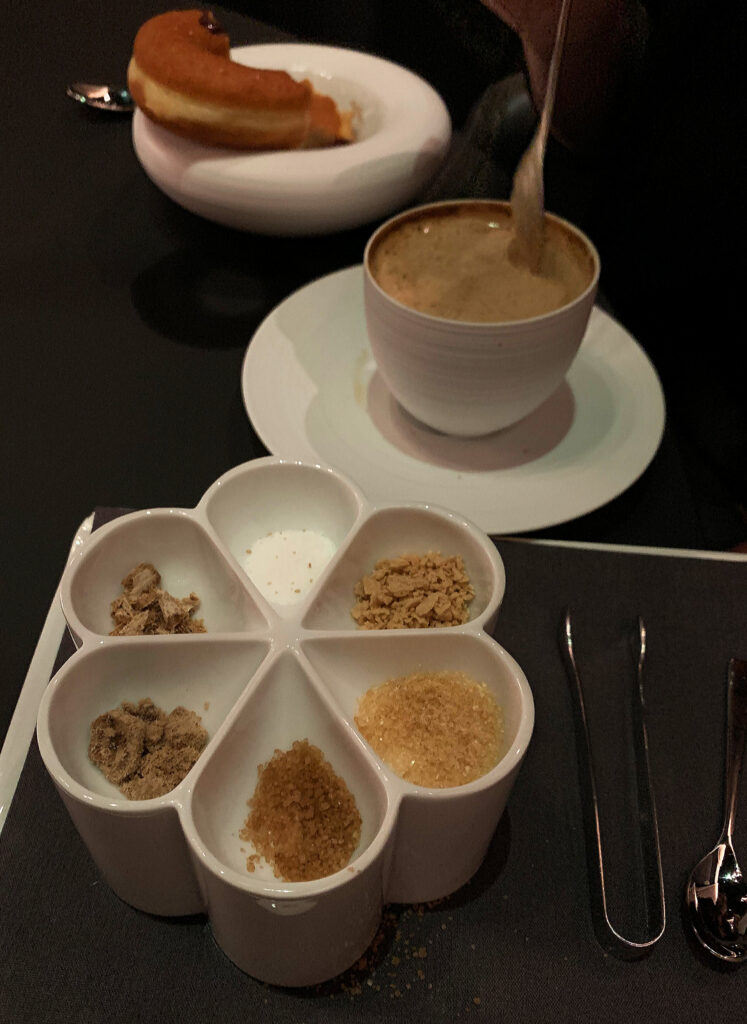
The experience also winds down with Ever’s coffee service. Sparrow Coffee, of course, which has become so predominant across Chicago’s fine dining establishments as to lose some of its luster. Duffy, to his credit, has long worked with the brand. But you’re not sure the brew has ever really distinguished itself to you across the many establishments where it has been served.
Regardless, you have come to understand that a fanciful delivery of coffee or tea is one of the essential bells and whistles Michelin looks for when bestowing a third star. Though you haven’t tried the latter beverage, Ever does a perfectly competent job serving the former. The restaurant relies on a star-shaped vessel touting six different kinds of sugar to catch customers’ attention. It baffles you that such a trite bauble has impressed influencers to such a degree. For you remember Per Se utilizing the same piece more than five years ago, and—as with Ever’s wine list—providing a shock and awe of options is easier than offering one striking example of quality. Not one to use either cream or sugar, you are left with a fine cup of joe and little more.
With that, the check is delivered, paid, and your table—more often than not—is whisked away for a tour of the kitchen and a bit of facetime—perhaps even a picture—with the chef. As best as you can tell, it’s a courtesy extended to all diners. For is there any better way to turn a table? And, even if one were to leave feeling hungry or confused by what they had eaten, who can resist posting a glowing testimonial on social media when it comes complete with a photo rubbing elbows with Duffy?
Truth be told, watching Ever’s kitchen work from the inside is a treat. The word “clockwork” comes to mind, and any members of the back of house with whom you interact are exceedingly polite. Selk, the chef de cuisine, has always taken special care to offer his own greeting. It’s a subtle but laudable testament to his sense of ownership given there are some occasions—and you only count one or two across your visits—that Duffy is not in the building.
The tour over, you are deposited back at the restaurant’s entrance and seen off with a parting gift. Originally, that meant a branded chocolate bar. More recently, that has been substituted for housemade kombucha. The goodie bag also includes a copy of the evening’s menu, which—to Ever’s credit—looks and feels more luxurious than those handed out anywhere else in the city.
You step outside and Ever’s spell lifts. Where did the past two hours go? Were you really here—this barren stretch of Fulton Market—all along? How do you wrap your head around what had just been served? But there’s no time to linger. Your next table awaits—the decadent counterpoint to Duffy’s intellectual experience. Over Joe Flamm’s duck spaghetti or Emery Ebarle’s katsu sandos you digest the complexities of that evening’s tasting menu. The hardier fare helps you chew over the performance just witnessed. The sustenance fulfills the molecular striptease that tantalized all night without delivering its money shot. You stagger home and dream of caverns, skulls, bubbles, and ribbons made of fish.
The completion of this review has coincided—just last evening—with your ninth visit to Ever.
It strikes you as a bit demented that so many of Chicago’s “esteemed” critics (to say nothing of that scourge known as the influencer) felt they could, in good faith, offer any appraisal of Ever on the basis of a solitary visit. For it is all too easy to be cowed by the restaurant’s trappings of luxury and the impenetrable complexity of its cuisine upon that first encounter. Save for some total meltdown of service, it would be far too difficult to weave a thoughtful critique of such a novel concept. Who wants to probe the value of a $285 ticket price all that deeply? Especially when it is so much easier to post those pretty pictures, lavish hyperbolic praise, and envelop oneself in the “glory” of faux connoisseurship and conspicuous consumption.
It takes real temerity to look past Muser’s marketing genius, the feel-good story of a fine dining revival, of Duffy’s personal tribulations and those of his former restaurant. How can you not be awed by the ambiance? The $1,000 chairs, sound dampening ceilings, Riedel decanters, and clockwork of service. (Heaven forbid you are granted that hallowed visit to the rooftop, the kitchen, or the lounge / podcast studio across the street).
It takes something approaching insanity to subject yourself to a tasting menu that spurns conventional conceptions of pleasure over and over again. To grapple with a wine list that frustrates rather than excites. To plan every reservation months in advance along with an accompanying pit stop—in search of sustenance—at Rose Mary on the way home. Yet you do not regret your time at Ever.
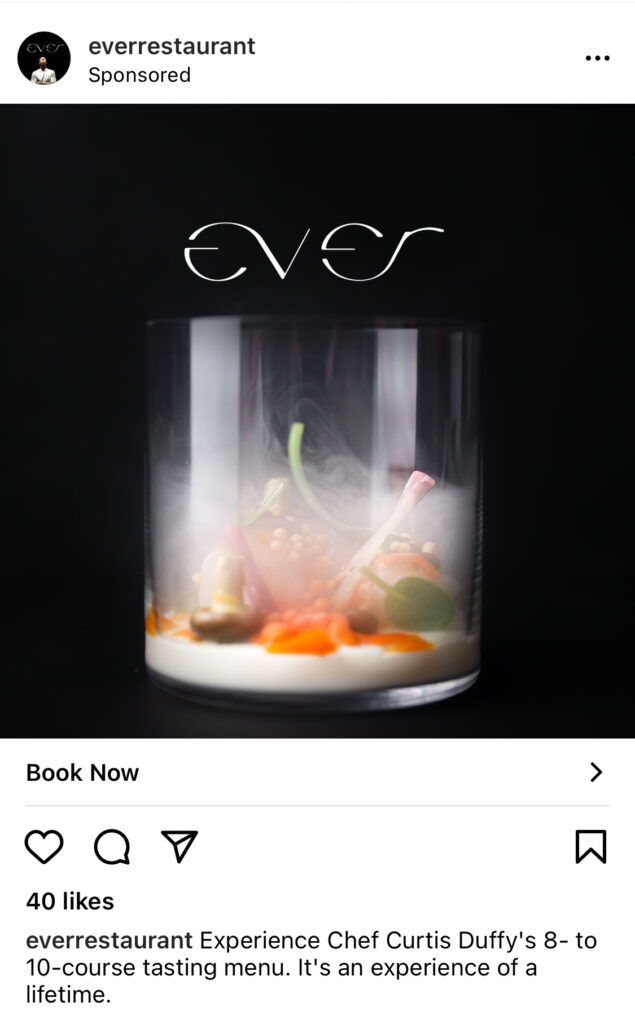
The restaurant has confused and provoked you. Only rarely has it really pleased you. But you hesitate to call anything about the establishment superficial. Even that promise—“an experience of a lifetime”—is not exactly deceptive. The consumer simply assumes that the restaurant making such a claim will serve them the best food they have ever tasted. But the key word is “an experience”—not “the experience” or “the meal”—and some conceit is subtly made that pleasure gleaned from the whole of the evening will stand as something greater than the sum of each individual dish.
You suppose that’s a concession endemic to all of “molecular gastronomy.” Such restaurants resist being easily defined by the public. It’s hard for them to construct a legible identity. There is no cultural grounding or form (omakase, steakhouse, etc.) to latch onto. No anchoring story regarding the chef’s inspiring travels or relationship to the local terroir. The establishment’s “reason for being” is essentially unspoken. For it is shrouded in a sense of mystery and wonder that forms a fitting partner to novel flavors and textures. Creativity—at a technical and conceptual level—is often hard for culinary laymen to parse. Every consumer can perceive obvious pleasure, but how many can comprehend to what degree a given chef has consciously embraced the challenge of doing what has never been done?
Implicitly, Ever is a restaurant where Duffy bends his ingredients towards singular flavors, textures, and forms. It’s a place devoted to process—not pleasure—as made evident by the chef’s abandonment of his most successful creations.
Smyth, too, devotes itself to experimentation. But their process is moderated by rusticity, hyperseasonality, and partnerships with small farms. Oriole avoids any clear self-definition and describes its menu as “constantly evolving,” but the restaurant mainly riffs on global expressions of luxury. Surely, there’s a strong sense of personality and charm to Sandoval’s preparations. But they play within the realm of the recognizable with dishes that aim straight at pleasure
Pleasure, for Duffy, is more of a byproduct. Satisfaction, at Ever, takes a backseat to discovery. The chef has spurned any sort of narrative grounding, the guardrails within which he can simply focus on offering the “best ever” this or that. Duffy’s cuisine is formed out from the ether. His dishes shine as the work of a craftsman who has the utmost confidence in his vision. They reflect a superlative creative spirit that can never be satisfied—that looks to answer impossible questions because it knows constant activity in pursuit of an unreachable goal is the only path towards greatness. And greatness, for Duffy, is not defined by serving the tastiest food in Chicago. Rather, it is attained by raising his personal culinary expression to the level of global distinction and—by steadfastly pursuing his process—perhaps striking upon those rare canonical recipes that change the craft forever.
Aiming at that unknown—crafting dishes for which no reference point exists—necessarily means rejecting the easy, obvious pleasure consumers tacitly expect from an expensive meal. And Duffy’s style, it must be said, has long been consistent. There is a common thread that runs from the compositions he served at Avenues, through those at Grace, to the dishes offered at Ever. The chef has always loved citrus, a variety of esoteric herbs, microscopic textural elements, and sweet sauces with creamy or sticky consistencies. His presentations have always embraced abstract sculptural designs with bursts of color. His use of fish and protein has always been delicate and pristine.
It would be totally out of character for Duffy to suddenly turn towards rich, decadent sauces or more heaping carnal portions. His culinary vocabulary is clearly defined, and the chef finally has the opportunity to explore its absolute limits. He finally has the time and space—free of outside interference—to pursue perfection as only he understands it. Any compromise on that vision would stand as a betrayal of his entire career up until this point.
You have found several of Ever’s dishes—namely “Hamachi,” “Squash,” and “Tomato”—to be creatively and technically brilliant. You have found a couple others—like “Sweet Corn” and “Salmon”—to offer superlative flavors and textures. But, across your nine visits to the restaurant, you have never been met with an absolutely showstopping savory course. (“Beet,” truly, is the only creation that you feel has achieved actual perfection).
For the first time diner, frozen ribbons of fish, jelly-like squash “dumplings,” and gemlike heirloom tomatoes under a Manchego veil delight through sheer novelty. But, past that point, you have begun to wonder just what might be gained and what might be lost through such extreme textural transformation?
For the first time diner, a sweet corn custard with black truffle and a succulent fillet of salmon stand out as some of the meal’s most pleasing morsels. But do they shine due more to their apparent normality (vis-à-vis Duffy’s molecular creations) than their objective quality (relative to classic preparations at other restaurants)?
For a restaurant that has sought so expressly to silence those “what if” questions, Ever has routinely left you wondering “if” you’ll leave feeling satiated. The scourge of small portions has maligned molecular gastronomy since, at least, the earliest days of Alinea—when guests, despite dropping hundreds of dollars per head on Achatz’s food, still found themselves running to the nearest hot dog stand for a nightcap. Personally, you’ve made peace with the fact that some meals prize intellectual pleasure far more than fullness and that one diner’s “too little” can quickly become another’s “too much.”
Yet you also accept that “what if” question of satiation is simply a reality. So now, instead, you ask “where” (will you be going after the meal) and “when” (should you make that second reservation to ensure a seamless path towards further sustenance). Surely, larger portions would compromise some aspect of Duffy’s vision. So would the development of more outwardly savory flavors. But Smyth—in its burger—and Oriole—in its ham sandwich—have found an elegant solution despite already serving menus of greater satisfaction. Perhaps Ever, like Alinea, retains too much pride in their cuisine to slum it up in such a way. But, however, novel the cuisine, any restaurant that sends it patrons off in search of more food stands as the real novelty.
It is hard to criticize cuisine that is visually striking, incredibly complex, and lacks any kind of obvious flaw. It is just as hard to complain that such fine food does not please your particular palate when it is quite clear the chef is cooking for himself—looking to express himself without diluting his vision for the sake of an undiscerning public. Surely, guests visit the restaurant eager to try not just any tasting menu, but Curtis Duffy’s. And, when a consumer’s appreciation for a chef has already been primed, the mere uniqueness of the kitchen’s food—its immediate sense of novelty—can circumvent any concern with satisfaction. Diners visit Ever with a taste for the artistry and emotion revealed in For Grace. A dish need not be legible—it need not even be expressly pleasurable—to scratch that itch. As with so much of postmodern art, a sense of impenetrability can even cast a more powerful spell.
To Ever’s credit, the space is absolutely luxurious and—moreso—transporting (you’ve gotten in so deep at this point that you’ve started dreaming about being in the dining room). The pacing of the meal—being particularly tailored to each table—is unflappable. (The kitchen achieves that rarest of feats where each dish arrives feeling like a pleasant surprise—not too quickly nor ever so slowly that one even wonders about its arrival). The front of house team displays incredible polish, be they pulling out chairs or pouring from outlandish, technically-demanding decanters. You have never sensed the smallest trace hint of snobbery—quite the opposite, every description is made, every question answered, in the most detailed and accessible manner. And, while you have identified areas of the wine list you would like to see expanded, you cannot deny the restaurant offers great value under $100 as well as on its pairing and by-the-glass selection.
Ever possesses the foundation to perhaps, one day, become Chicago’s greatest restaurant. If Duffy doggedly pursues his creative process and establishes his restaurant as the kind of longstanding institution Grace could have been, Ever might very well become the greatest restaurant in the city’s history. For the chef stands on the shoulders of the Windy City’s contemporary culinary giants but is faithful to a vision that his intimately his own. And he is brave enough to challenge himself and—by extension—his diners despite every opportunity to simply invoke his past success and sell out with some more superficial, pedestrian concept.
The trouble with branding a restaurant the “best ever” is that it invites an avalanche of expectations. While it is easy to say that Ever’s ambiance and décor reach that level of excellence, the pressure on Duffy’s cuisine is immense. Privileging experimentation in pursuit of ever-greater perfection would seem to clash with the idea of a “best ever” menu. Duffy is not building four seasonal menus a year and buffing each course to an incredible sheen. He’s swapping dishes in and out constantly, playing with each plate’s tiny details ceaselessly. His kitchen is a laboratory, not a temple. Guests will always necessarily experience some snapshot of a “work in progress” rather than Duffy only “playing the hits.”
And yet, the chef who declared he did not want to be identified with “signature dishes” has settled upon serving two of his former creations from Grace. Though the presence of “Scallop” and “King Crab” on the menu concedes that Duffy has not yet developed preparations that can match their caliber, the items are valuable examples of the chef’s culinary philosophy. They reflect the combination of novel form and fine flavor to which he aspires. They satisfy guests—particularly those who never made it to Grace—while providing a measuring stick with which to judge Ever’s new creations. In that context, you cannot say any of Duffy’s newer savory dishes have yet matched the level of his former restaurant.
You could be a bit more forgiving if Ever was branded more carefully as an experimental/boundary-breaking concept where indulgence, as traditionally conceived, could not be expected. Yet the restaurant was imbued with a sense of unsurpassed luxury. It was hyped as an expression of the “best ever.” And, while many of the restaurant’s elements satisfy such hyperbole, the food has never left you desperate for another bite. Duffy’s cuisine has been thoroughly interesting but never craveable. It photographs well but lacks the intensity or depth of flavor to really lodge itself in your sensory memory. And, while certain consumers may feast fully on such novelty, “luxury”—by your measure—must indulge diners’ tastes to some degree or construct a requisite narrative to explain why they do not.
By all accounts, what Duffy and Muser have achieved in the most trying of circumstances is laudable. They and their team possess all the talent necessary to grow Ever into one of the country’s best restaurants. And the food, meal after meal, has only gotten better.
The chef’s devotion to his creative process cannot be faulted, yet its fruits—also—cannot be rushed. You are sure that Duffy—now master of his fate—will soon strike gold and build a pantheon of new creations that may surpass classics like “Scallop” and “King Crab.” Yet until that day, those dishes’ presence on the menu stand as a reminder of the weight of expectation the chef much contend with and hope to satisfy.
Ever promised the world and delivers first-time guests a pretty fine experience. Out from the ashes of the pandemic—twice—Duffy and Muser brought their “best ever” to fruition. They did their part to bring Chicago fine dining back from the dead. And you think most visitors—from near or far—will leave the restaurant feeling satisfied by the experience of novel food, polished service, and refined atmosphere.
They’ll feel satisfied because the heightened expectations were just about met. And that’s always easiest to do just once. But you’ve never felt those expectations were surpassed. The food has been intricate but not delightful, the staff expert but not joyful, and the wine list expansive but not well-curated. An evening at Ever is orchestrated beautifully but has yet to stir the soul. The restaurant offers a luxury based on appearances rather than a personal element.
And, surely, Chicago still benefits from offering residents and travelers such a concept. With more time, more discovery, and a menu filled course after course with truly stunning compositions, all of Ever’s elements would snap right into place. But, as it stands, the restaurant leans on its hospitality to shield a cuisine that has yet to hit its stride. They do so well enough to ensure everyone leaves happy. But Duffy and team are capable of far more than “good enough.”
The chef has recovered the form that so endeared him to the country while at Grace. He is making dishes that are worthy of his reputation and that are a credit to his city. Unfortunately, that is the minimum you expect from a craftsman of such talent. He must now cook at a level that demonstrates clear growth from those days on Randolph. He must deliver a “best ever” that supersedes any memory of what has come before. That may mean, as originally intended, spurning any notion of a “signature dish.” But you feel the chef has the strength of character to pursue his creative process until dishes of greater pleasure come naturally. With just a few of those under his belt, the restaurant will quickly grow to be “better than ever.”



